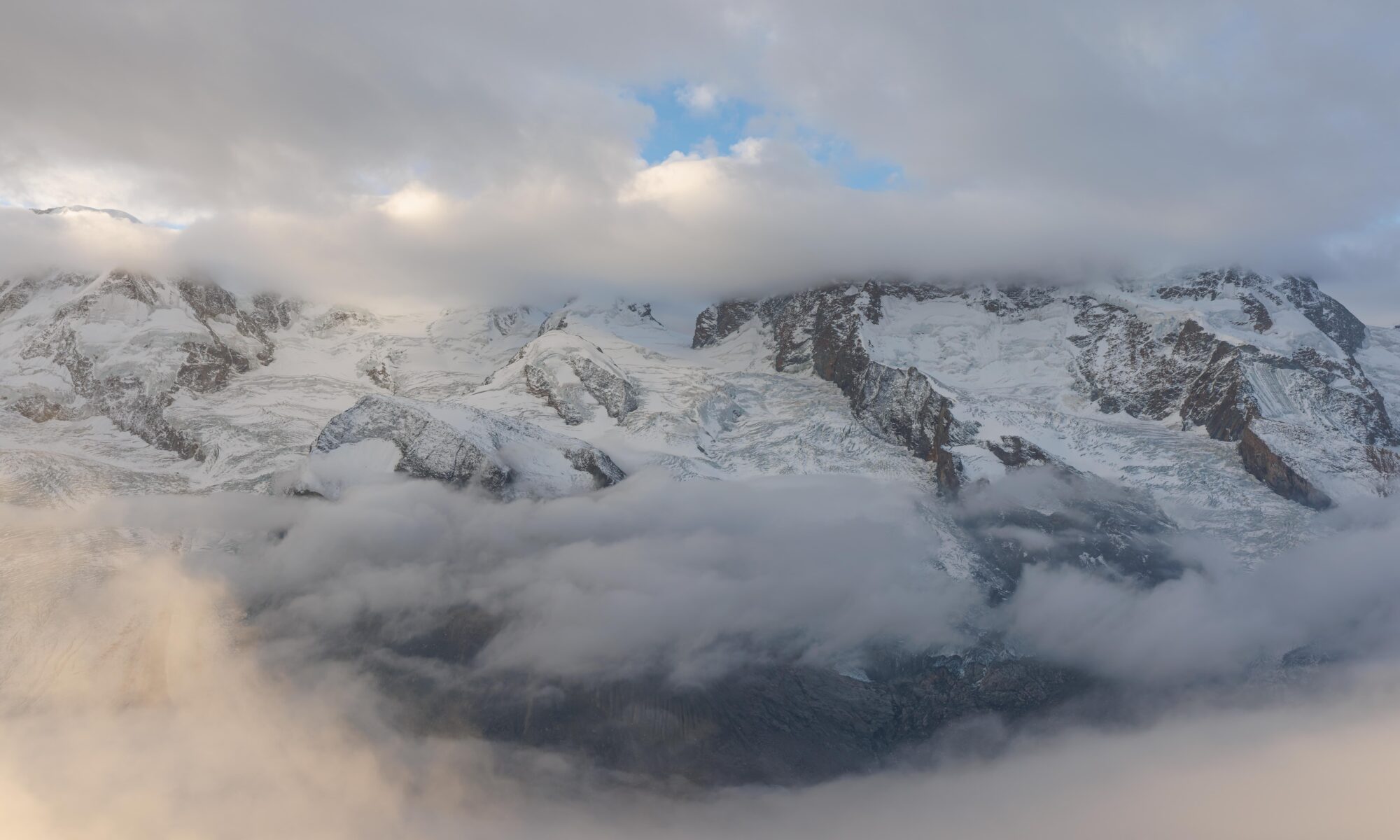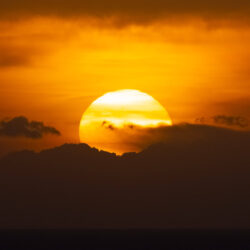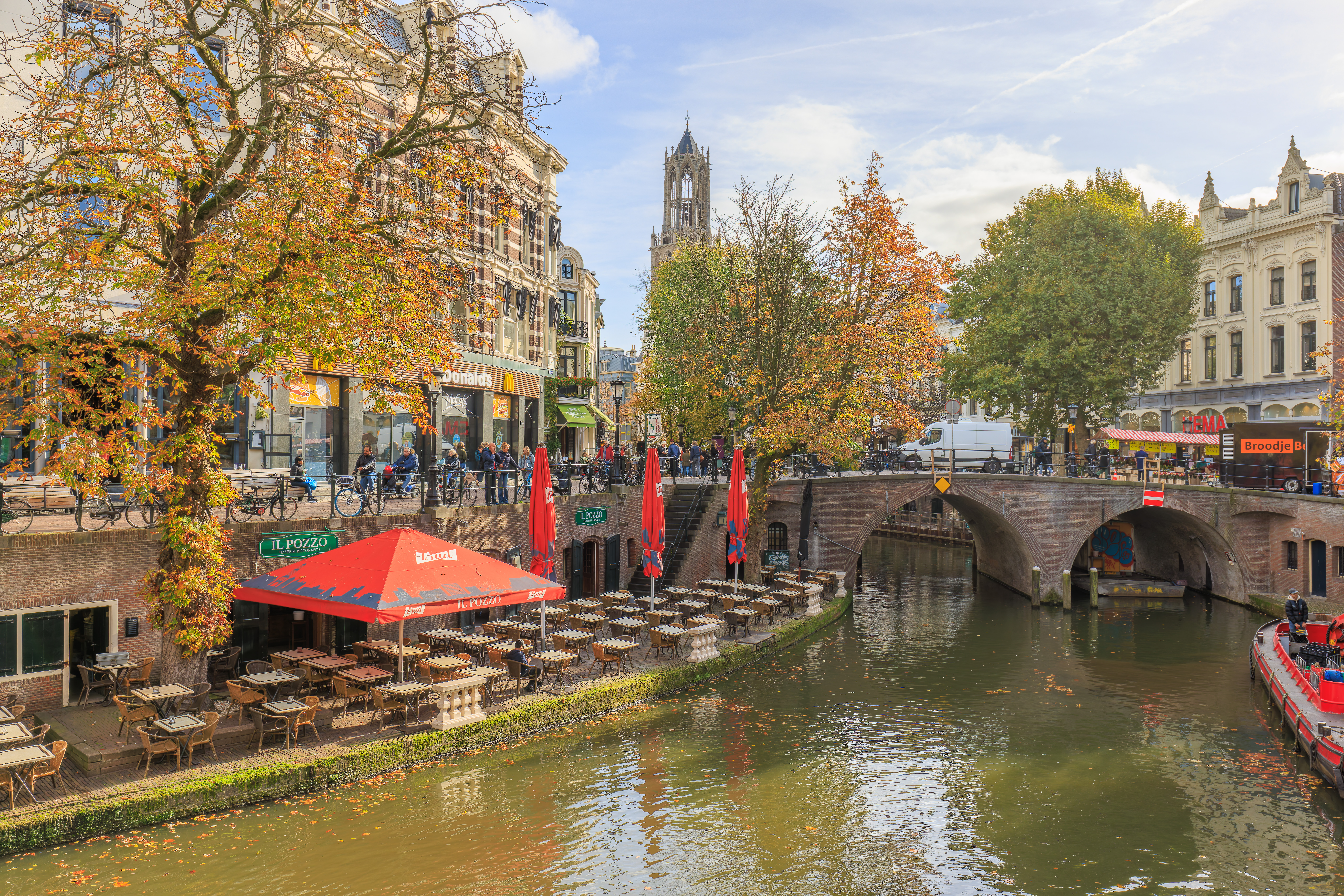After waking up a the Apollo Hotel in Amsterdam and having breakfast, we walked around a bit before taking the train to Utrecht where we spent most of the day. We walked around the city’s unique canals, had lunch, and visited St. Martin’s Cathedral before returning to Amsterdam for dinner.
Morning
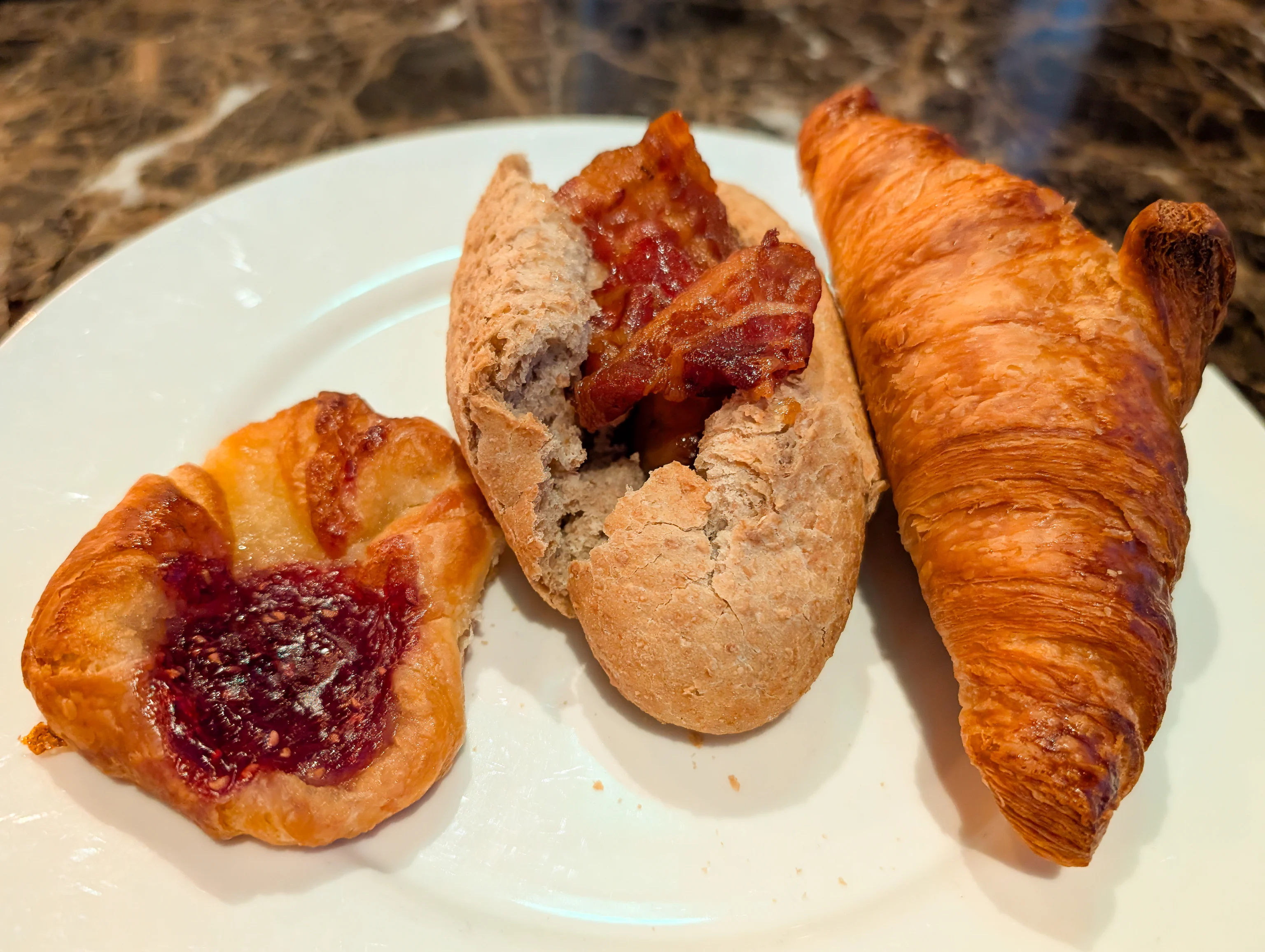
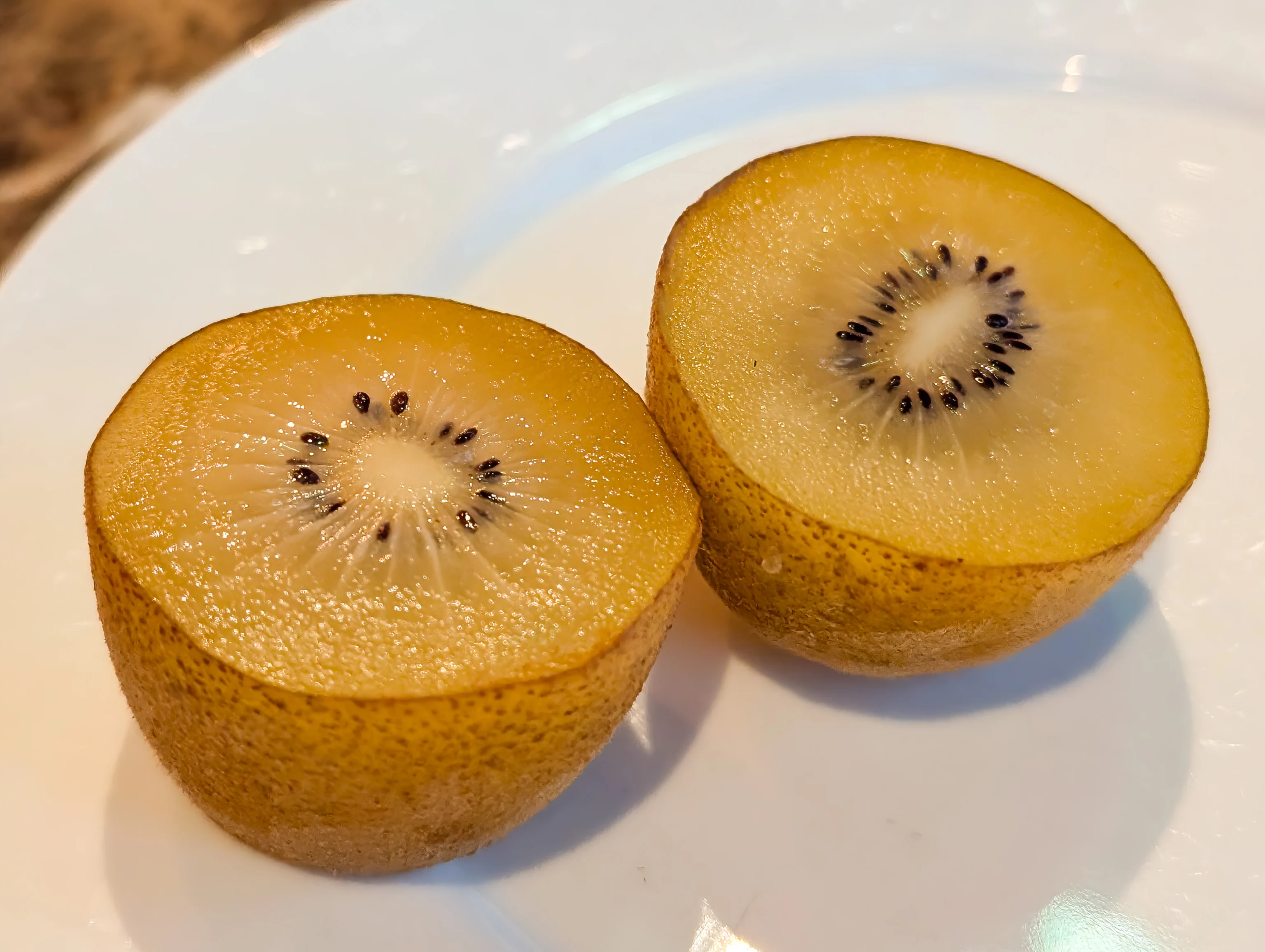
As usual, we had the breakfast buffet at the Apollo Hotel in Amsterdam. It was mostly the same selections as yesterday. We did eat more than this, these are just the two photos that looked reasonably nice!
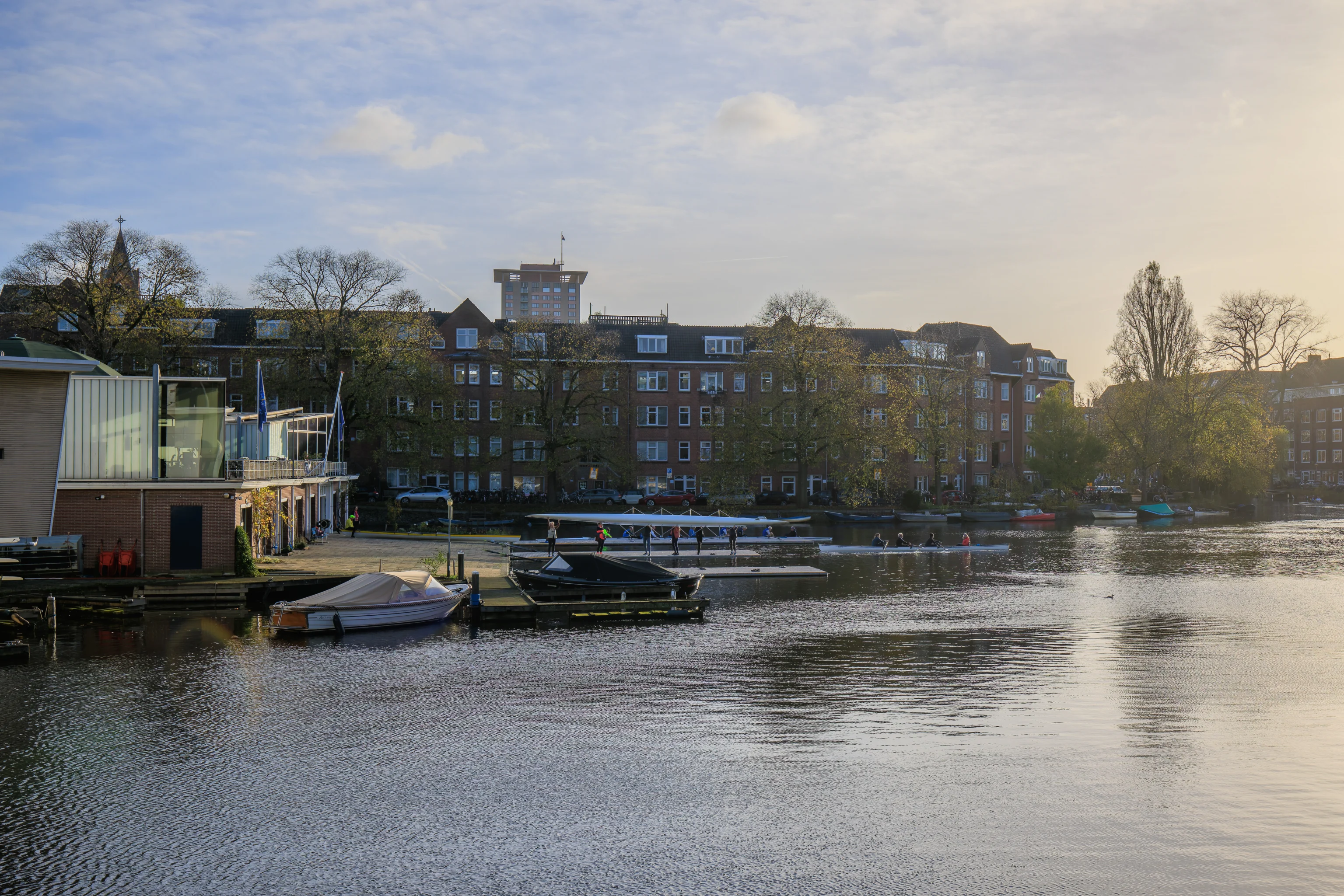
We got a late start as the plan was to visit some of the museums in the city. As we left, the nearby rowing club was putting their boats into the water.
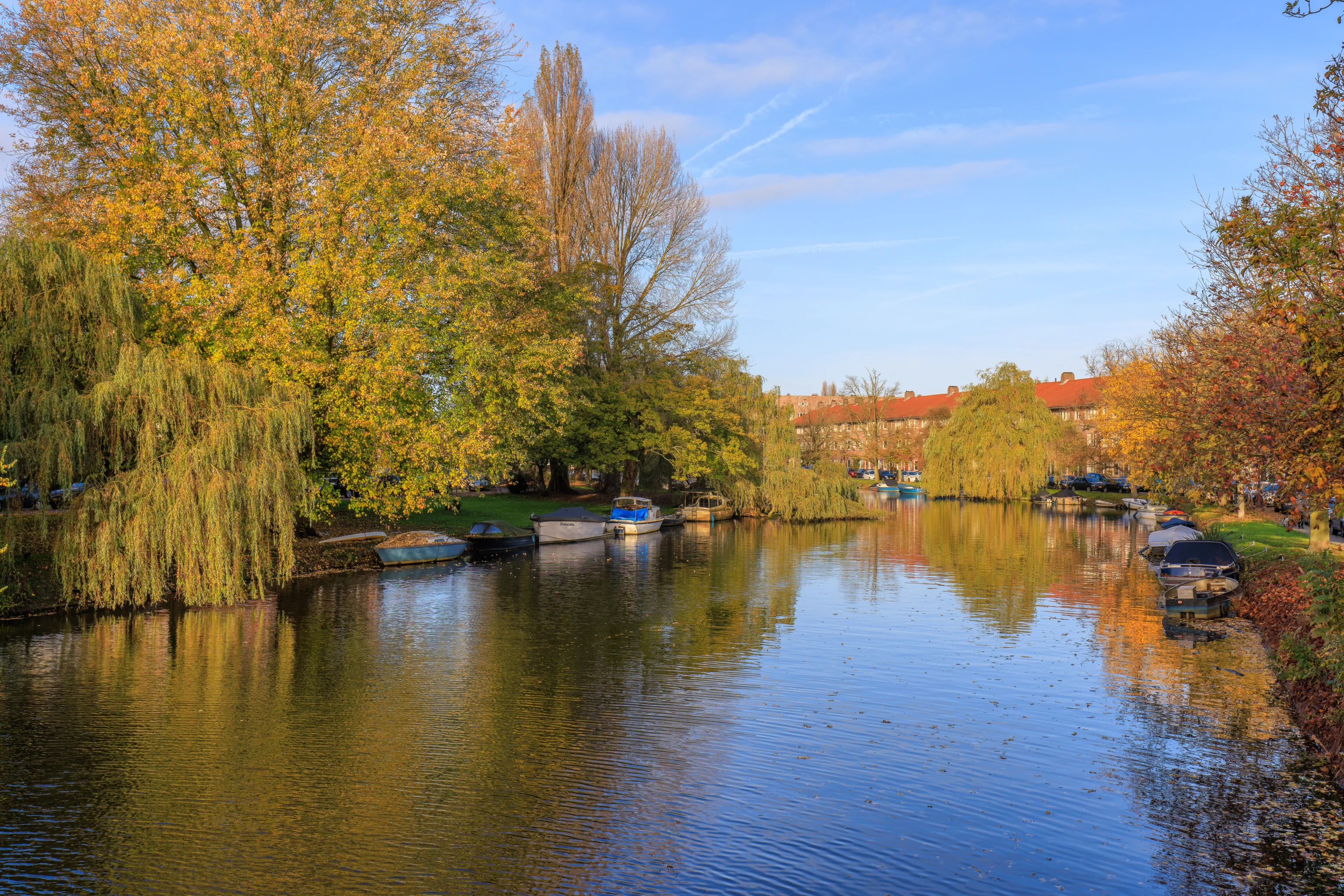
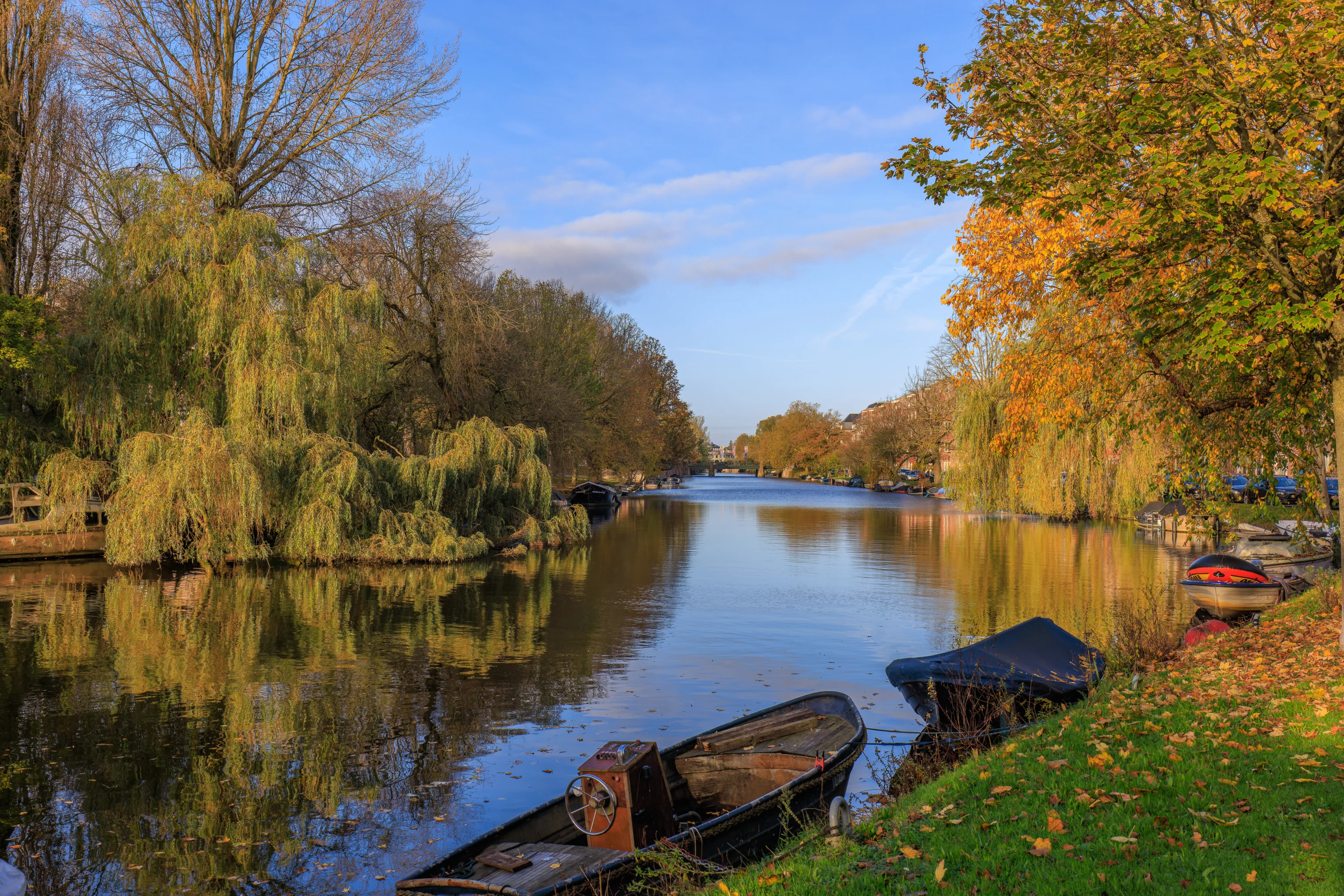
We decided to take the scenic route to the tram line 5 stop at Roelof Hartplein, just a little bit further than the nearby Gerrit v.d. Veenstraat stop. We walked by the north side of the canal that runs to the northwest from the canal intersection next to the Apollo Hotel. The residential community was pretty quiet at this hour in the morning. Many small boats were moored by the canal. We actually walked by this canal last night on our way back to the hotel, but on the south side, after arriving via tram at the Gerrit v.d. Veenstraat stop.
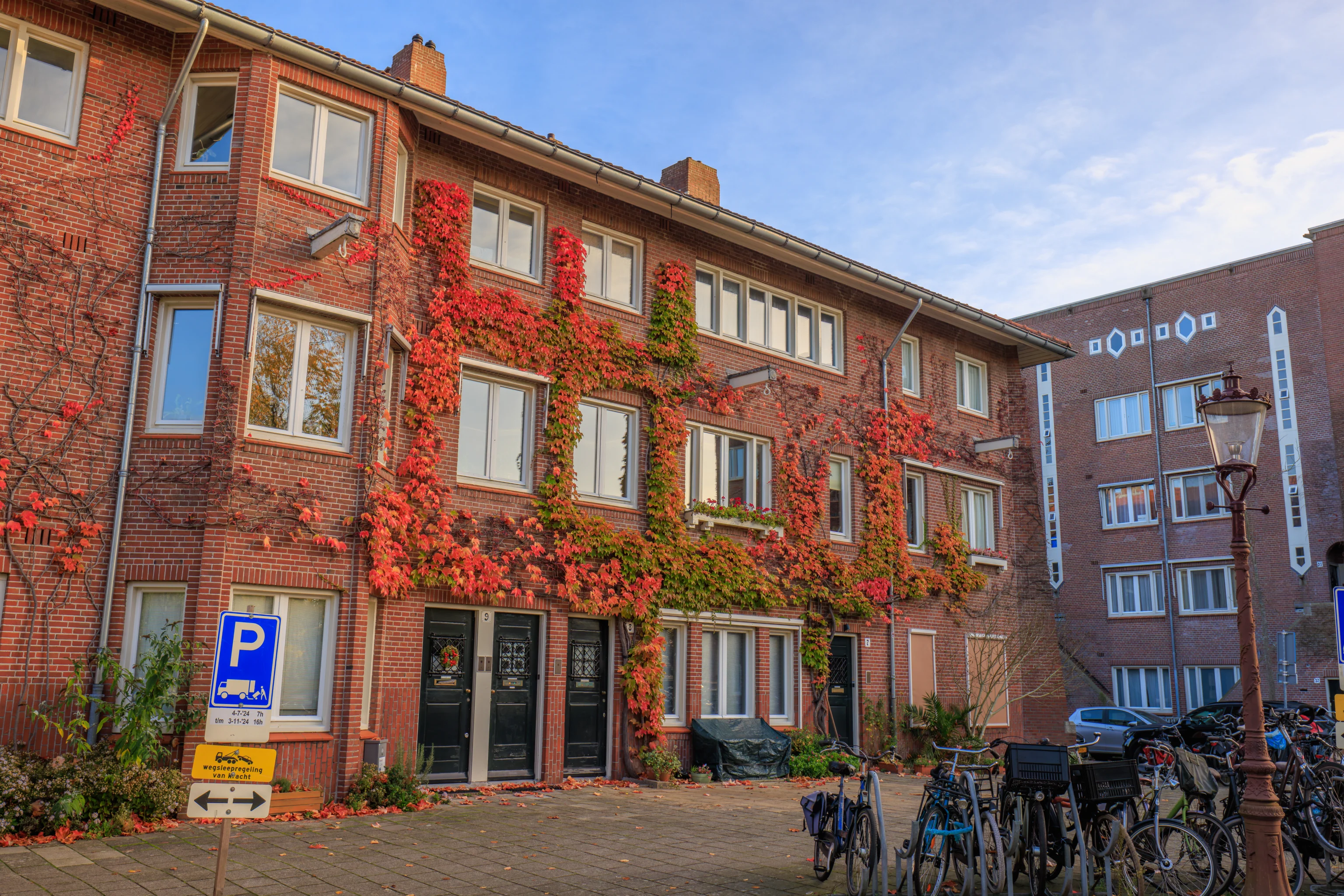
Some of the buildings had some pretty vines growing on them. Many of the buildings by the canals have beams sticking out of the side. These were cranes formerly used to transfer things to and from canal boats below. Some of the canals, like the one here in front of this building, are no longer present, while others are no longer directly outside of the buildings.
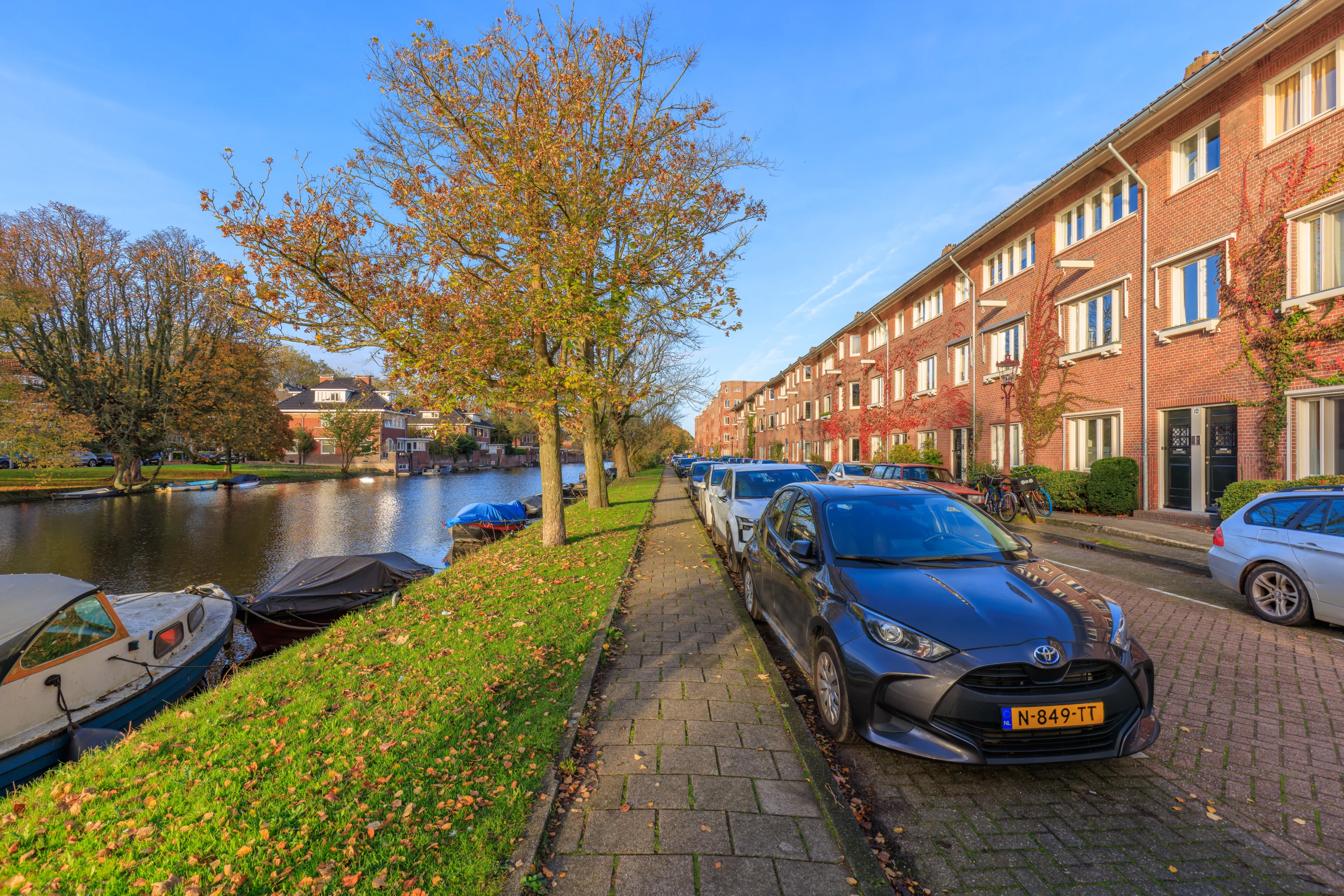
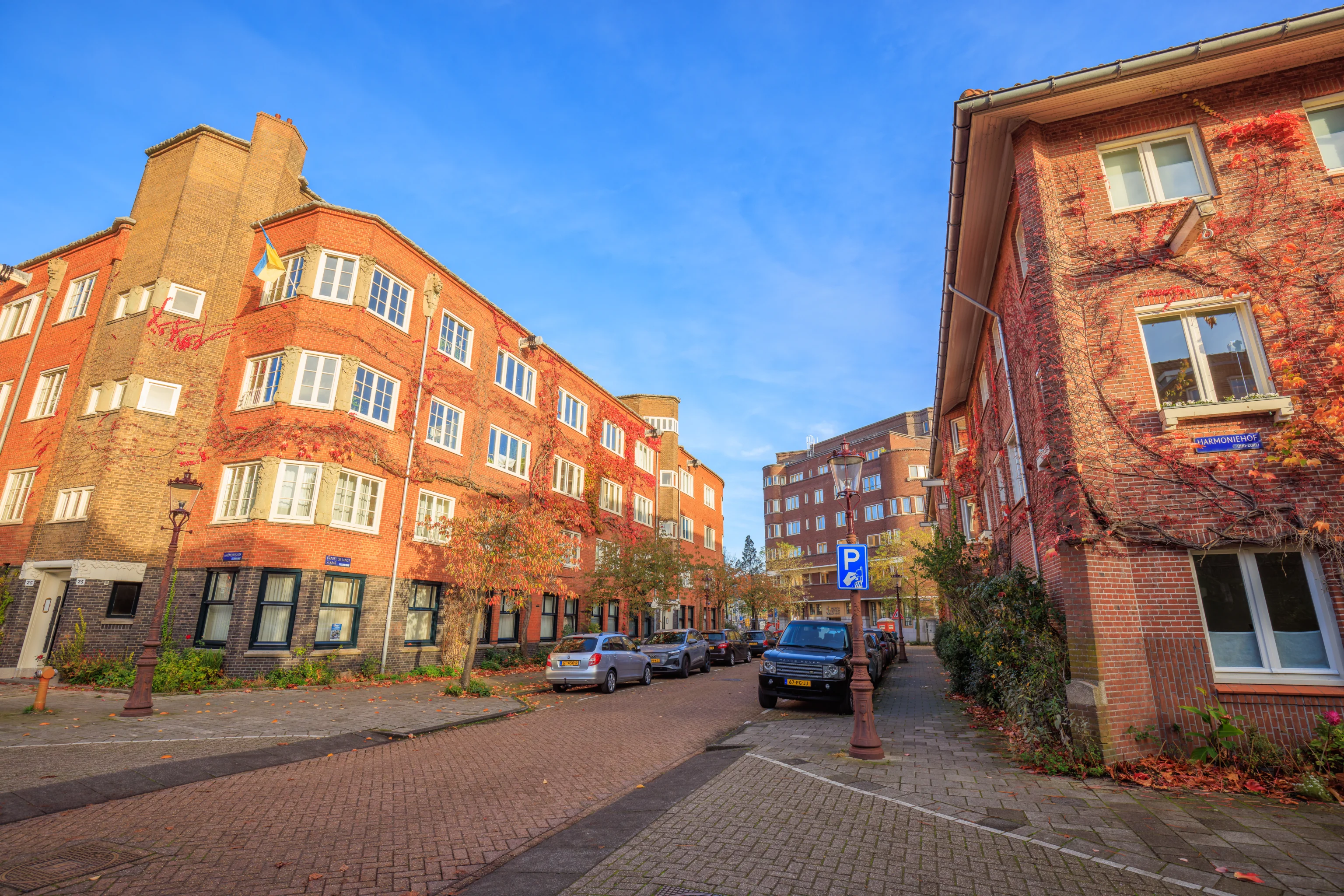
A few more buildings with vines and cranes.
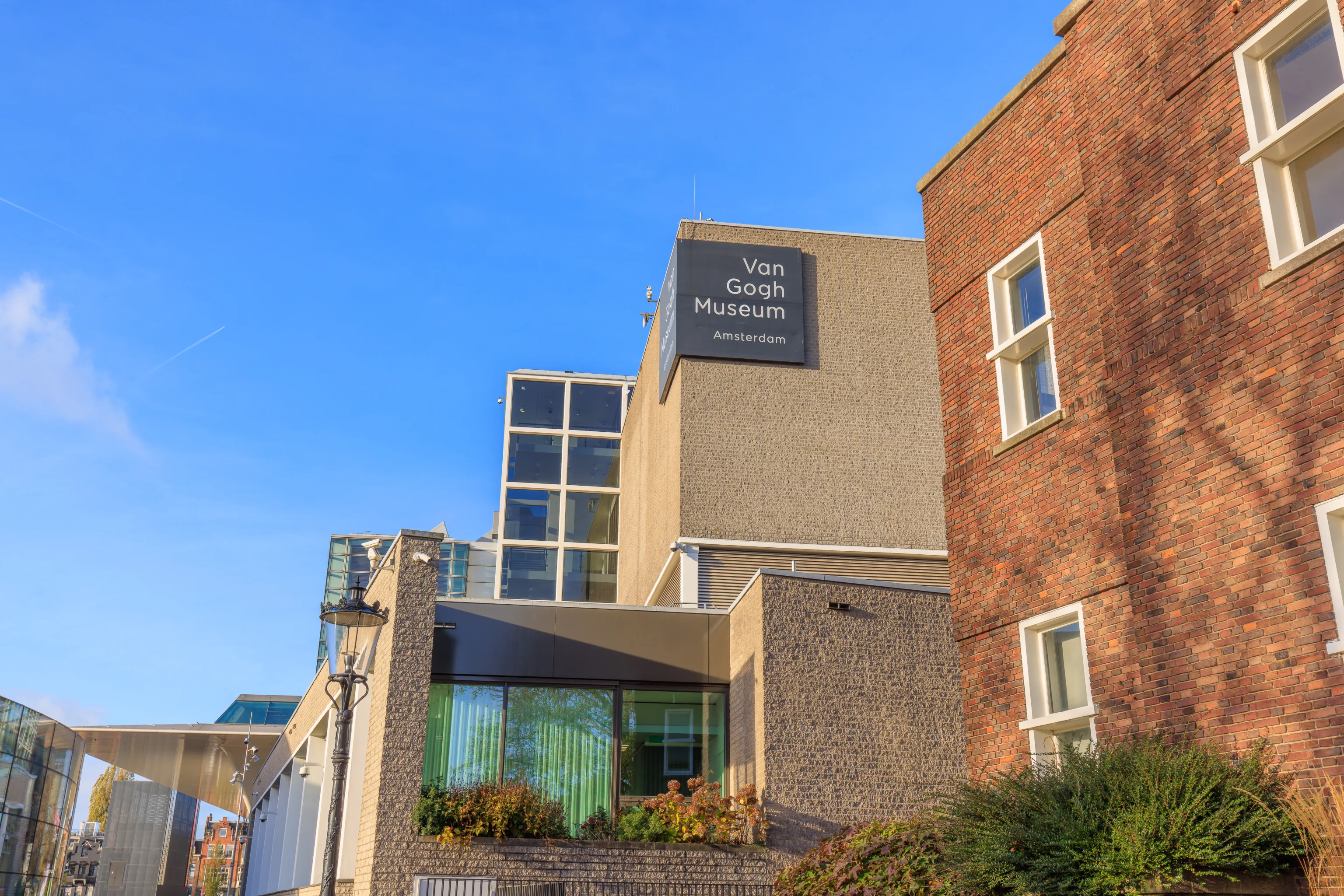
We took the tram to the Museumplein stop near the Van Gogh Museum. Our first mistake of the day was that the Van Gogh Museum basically requires timed entry tickets, which we did not purchase in advance. Oops!
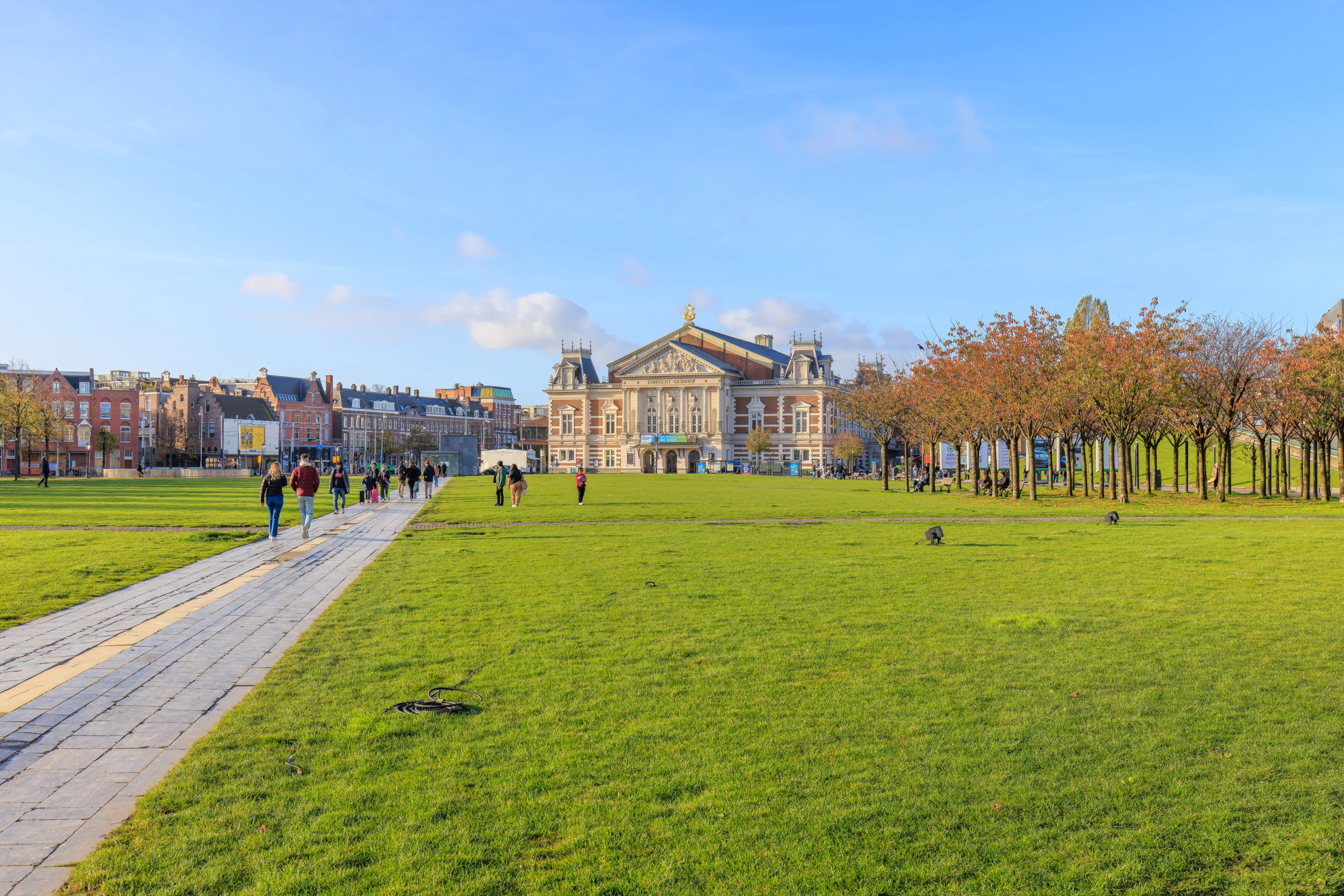
This large open field is the Museumplein (Museum Square). It is surrounded by museums and other cultural buildings. The building directly ahead here is Het Concertgebouw (The Concert Hall).
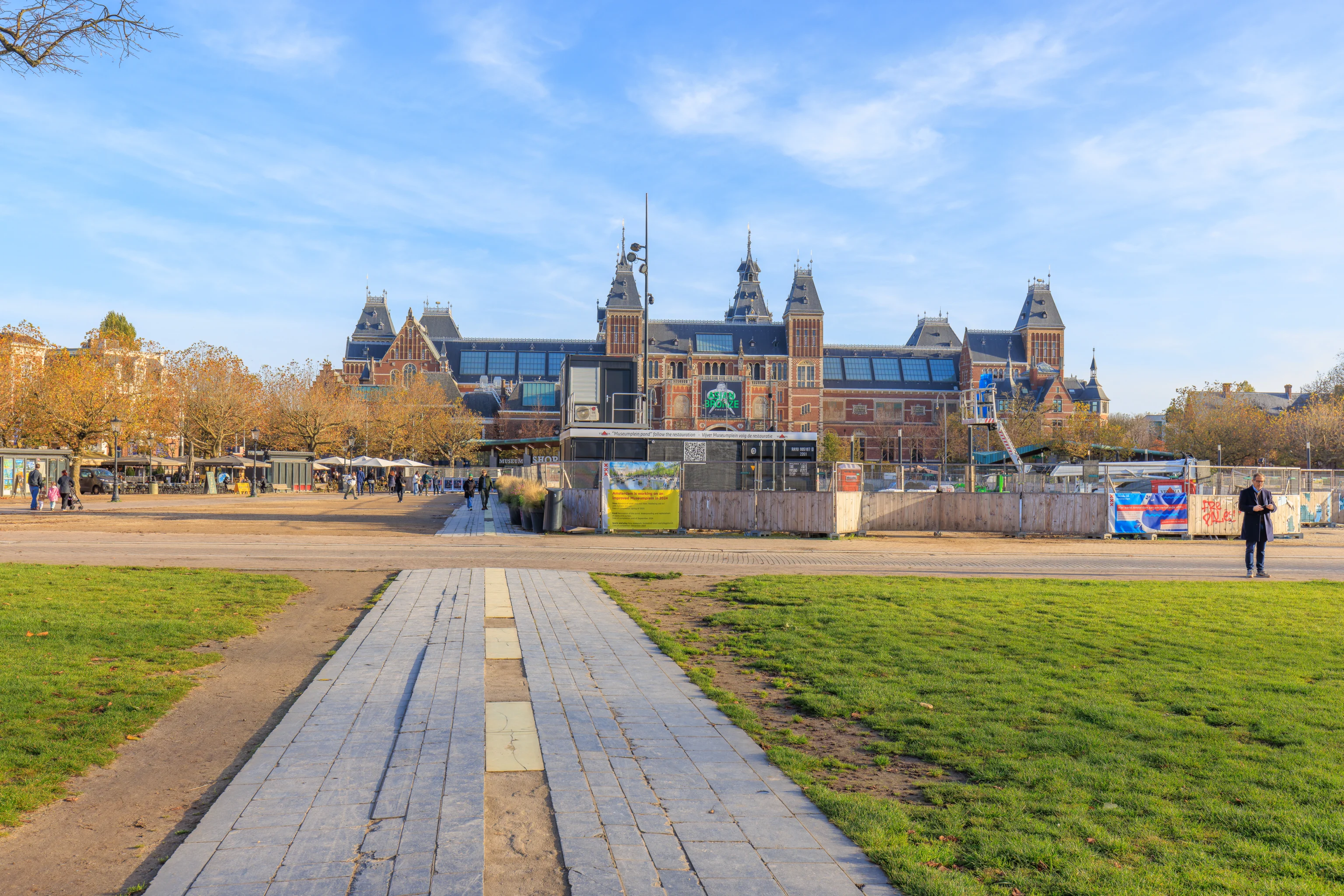
We went in the opposite direction to the Rijksmuseum, a huge art museum with works by many famous artists, particularly the Dutch masters like Rembrandt, Van Gogh, and Vermeer.
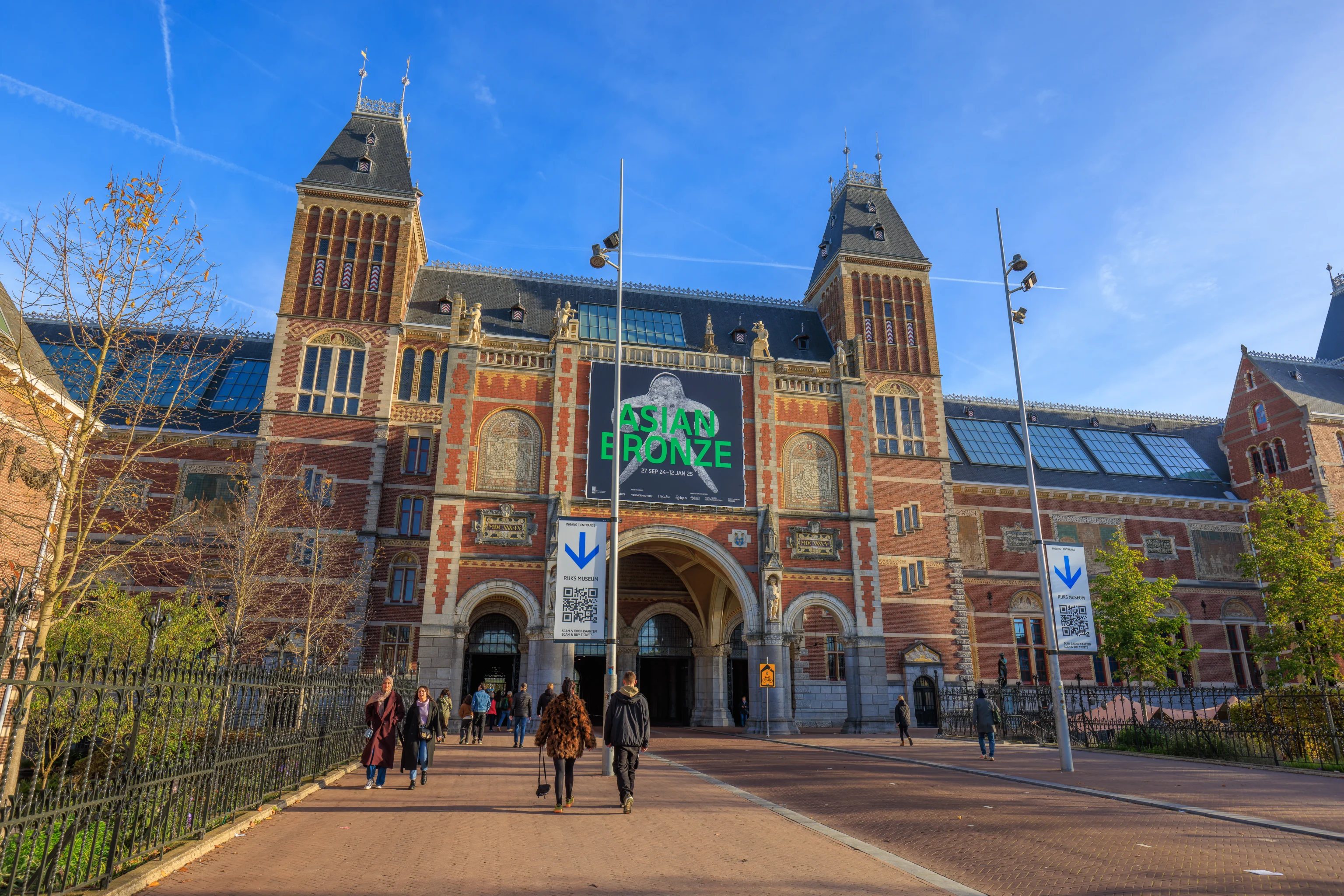
It turns out that timed entry is also largely required at the Rijksmuseum as the next available slot wasn’t until in the afternoon.
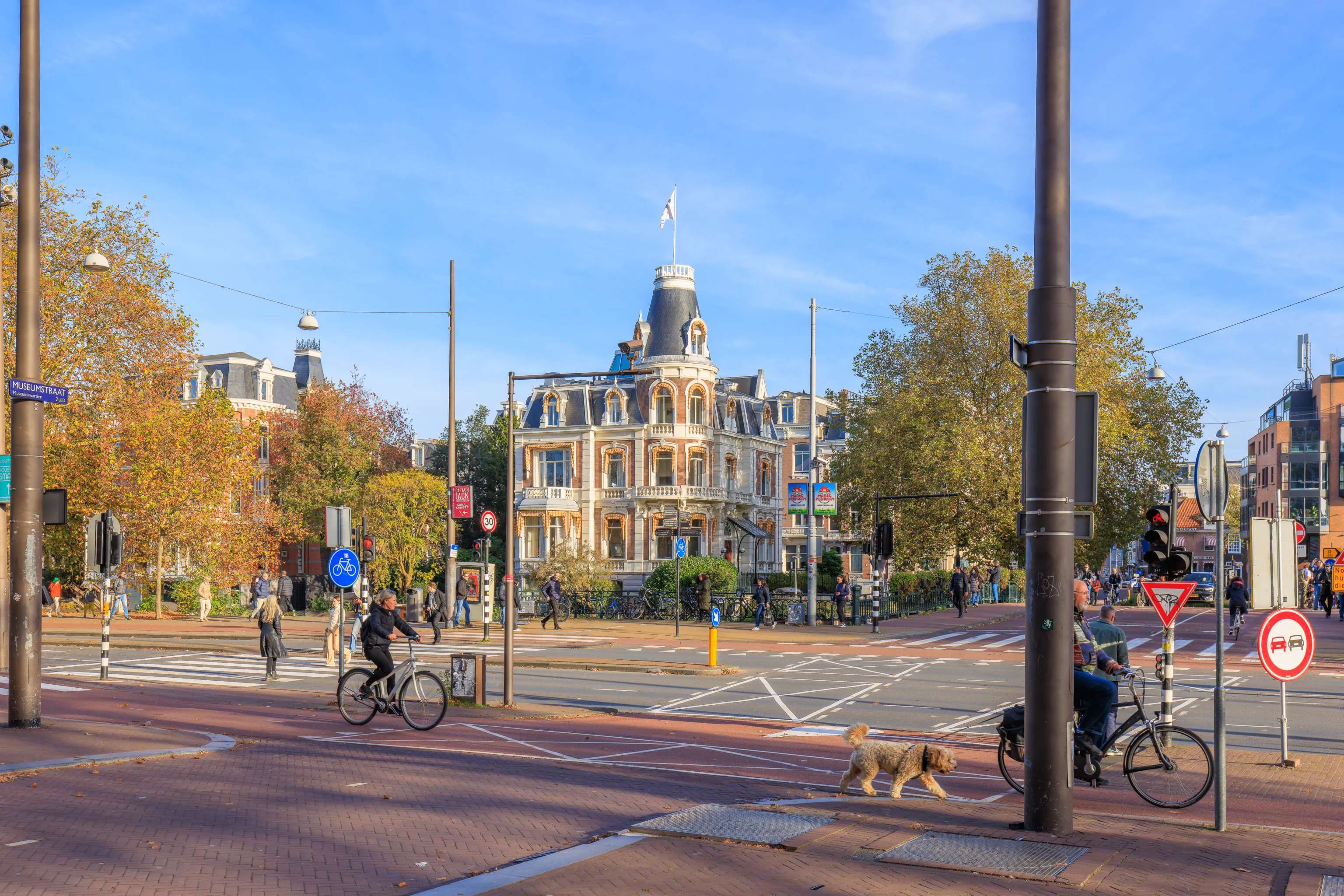
After our failure in accounting for this post-pandemic world where pretty much all museums require timed entry tickets, we decided to go to Utrecht, an ancient city that was once the most important in the Netherlands1, for the day as it is only about 25 minutes away by train. We walked to the north to the Koningsplein tram stop to catch a tram to Amsterdam Centraal.
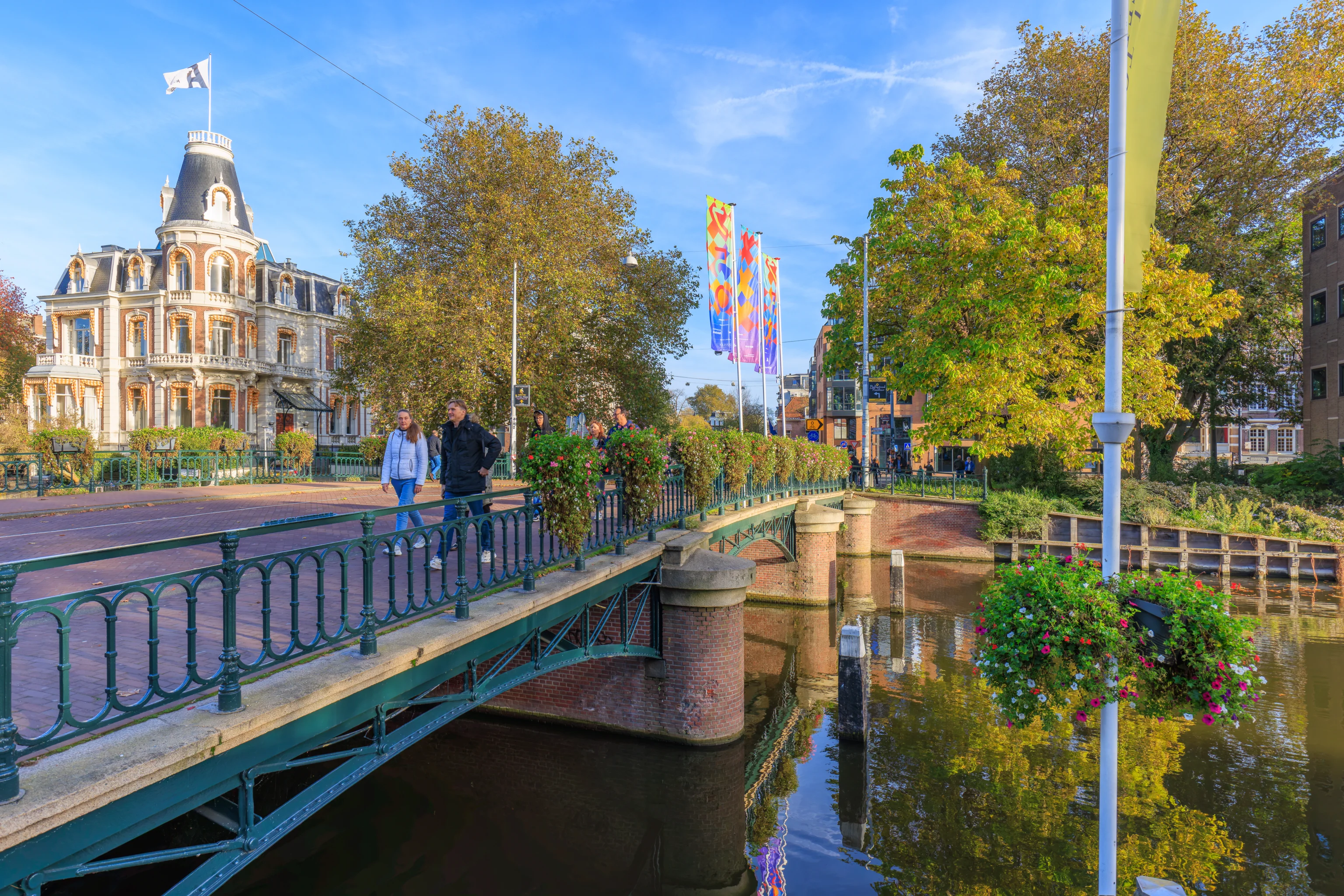
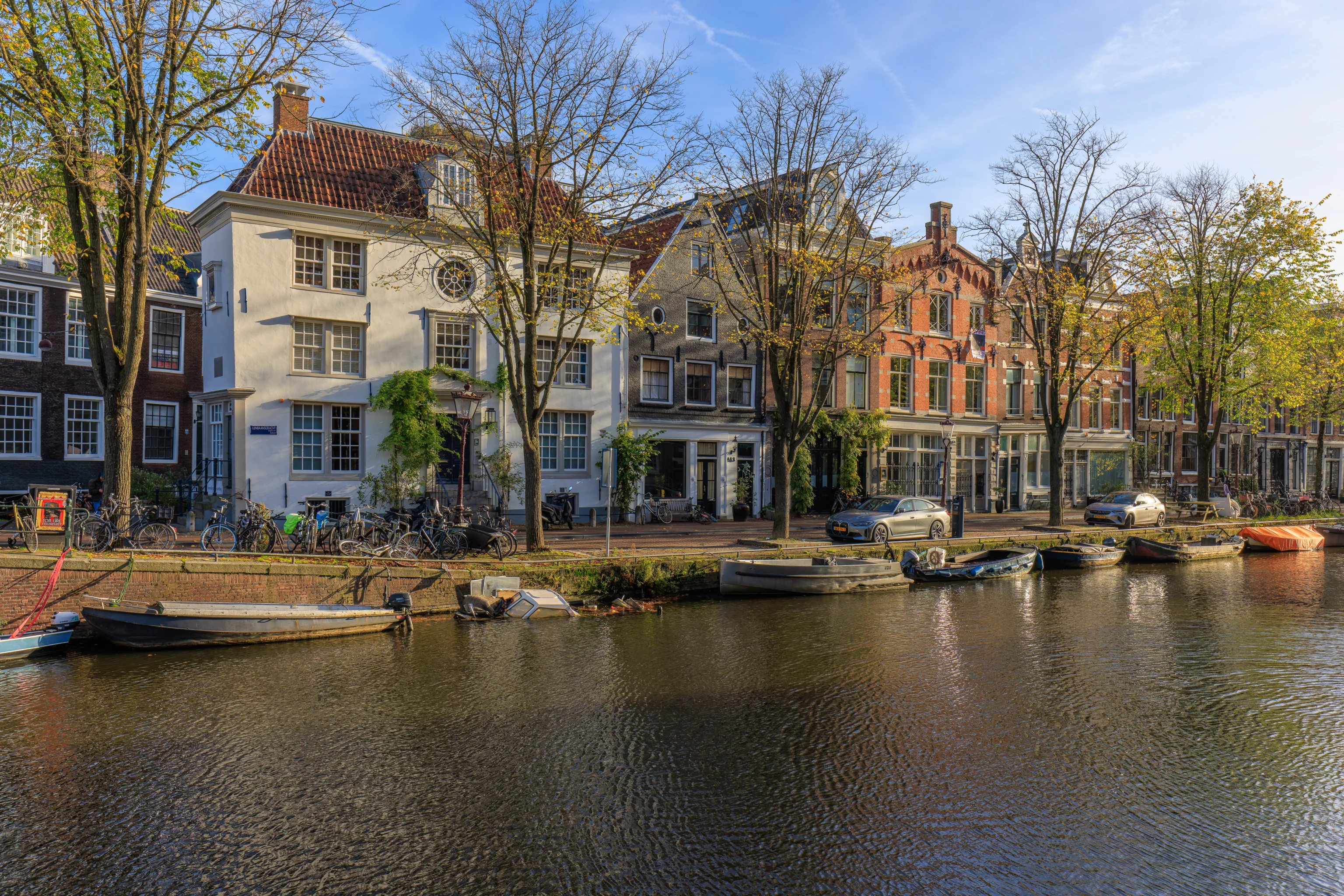
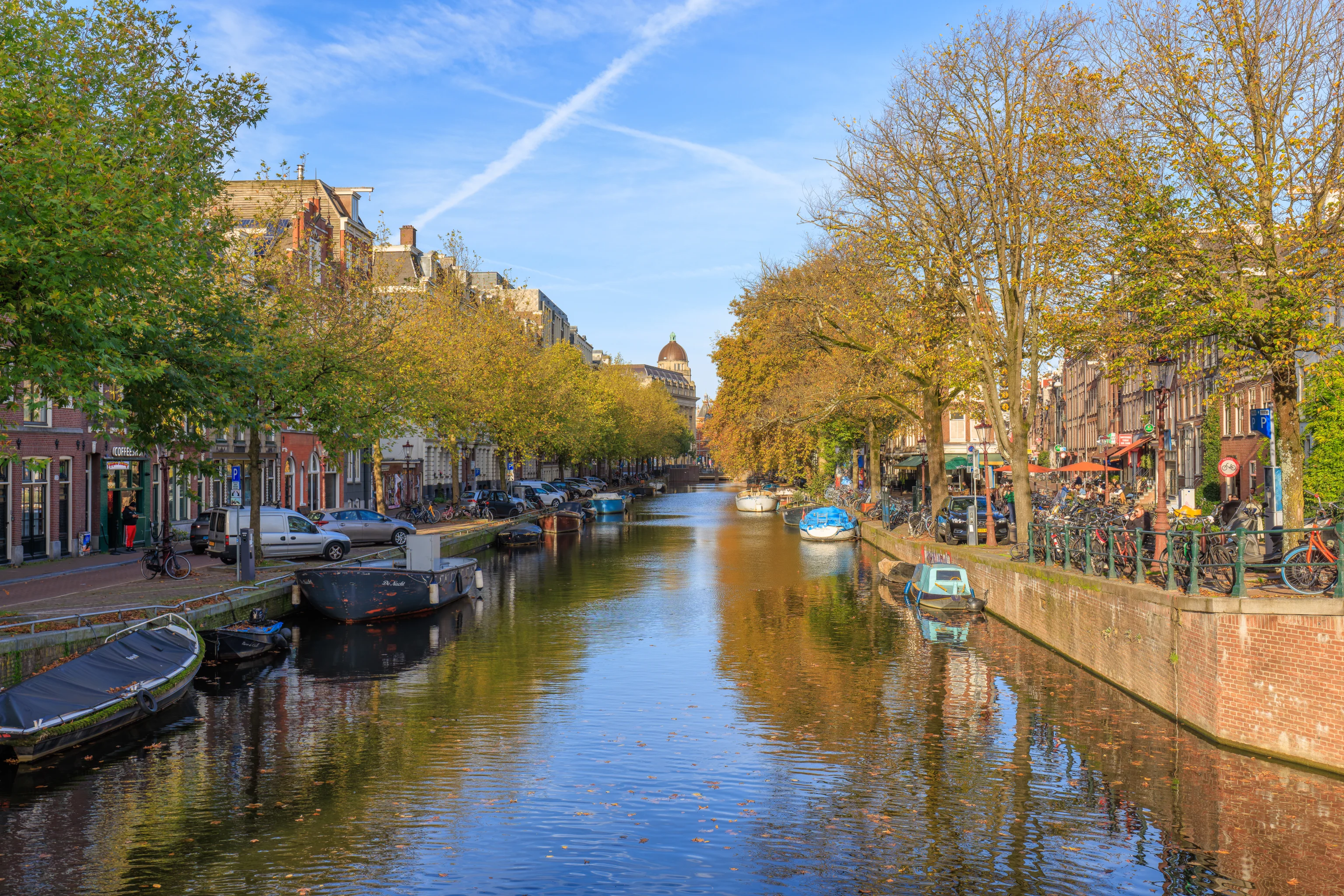
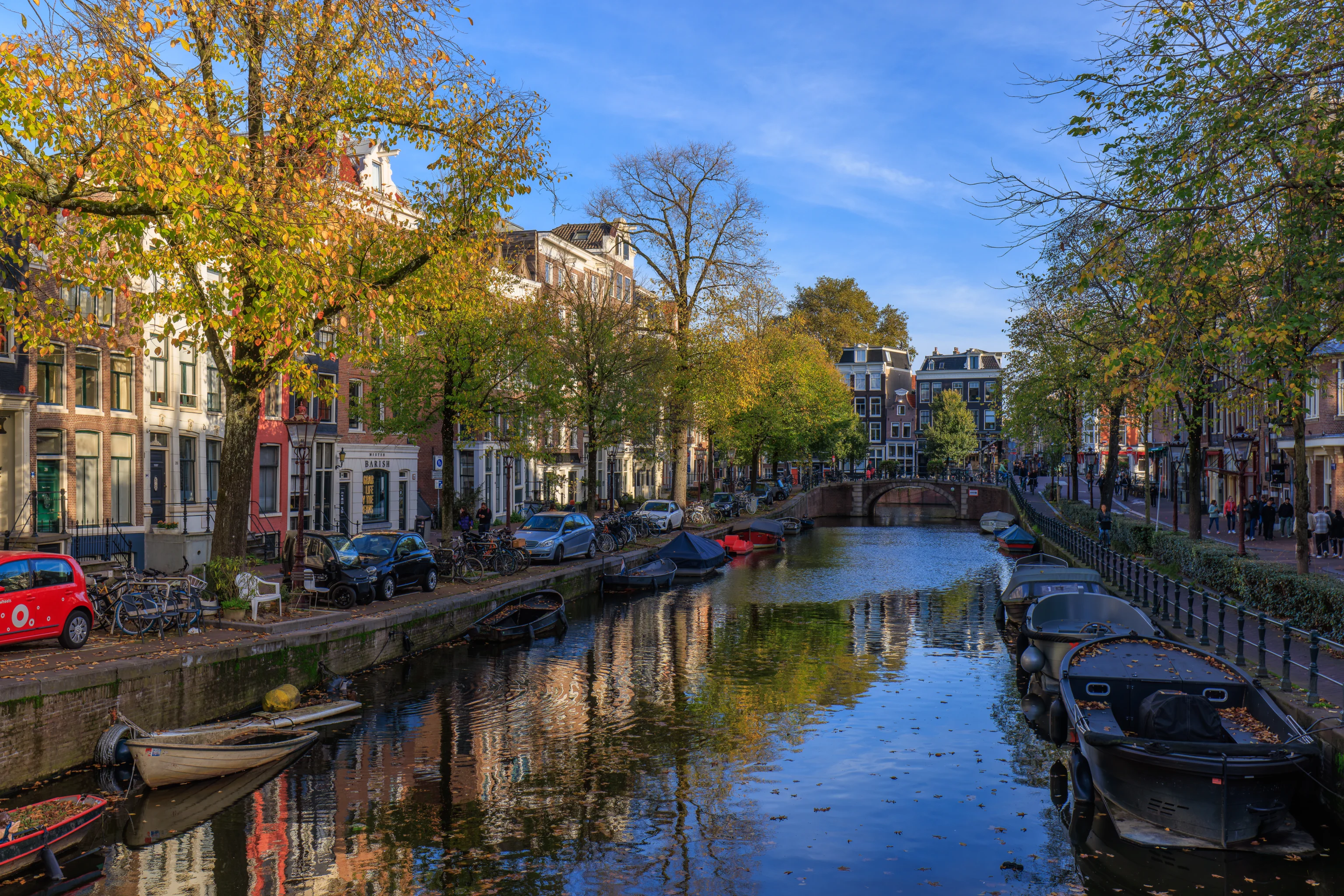
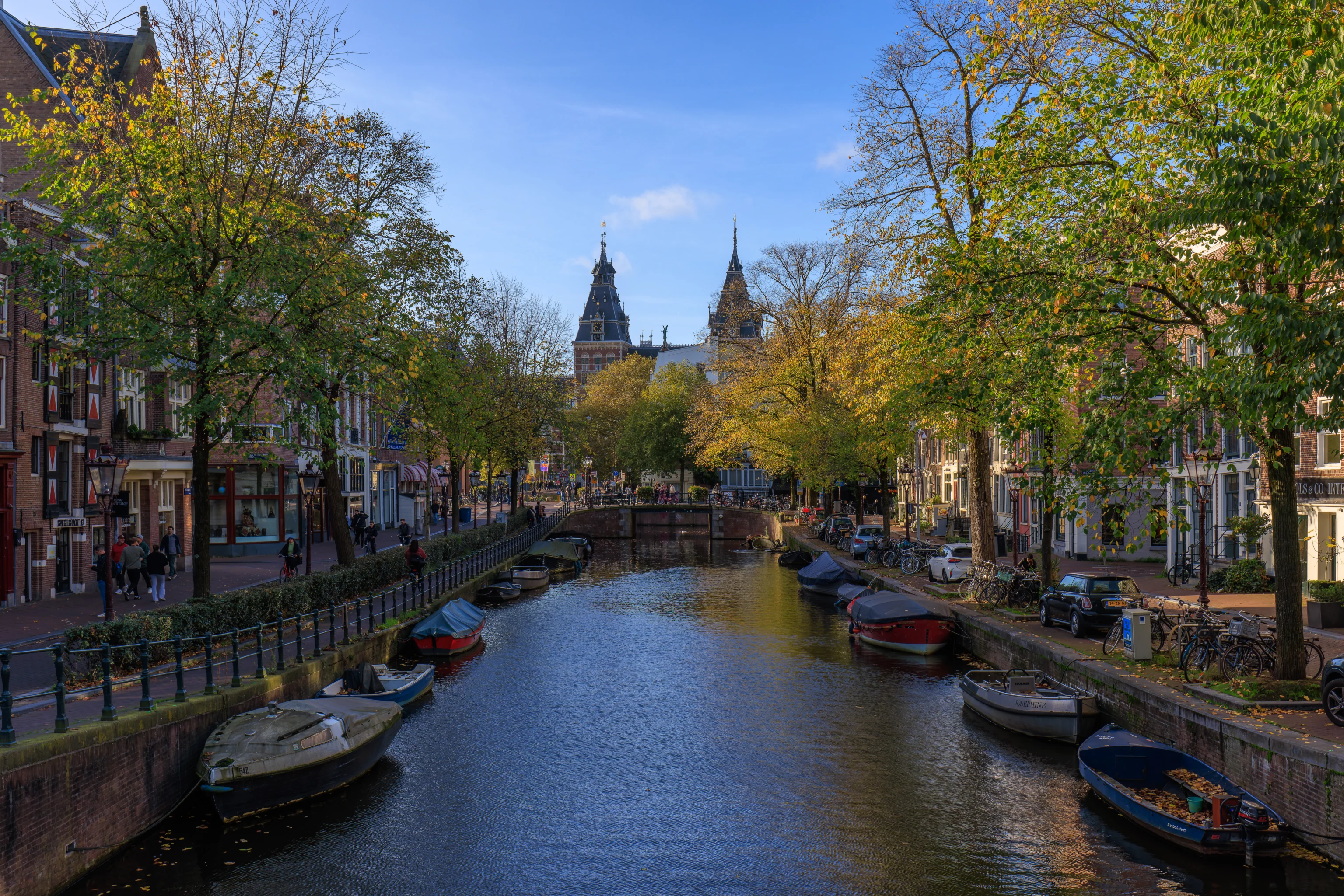
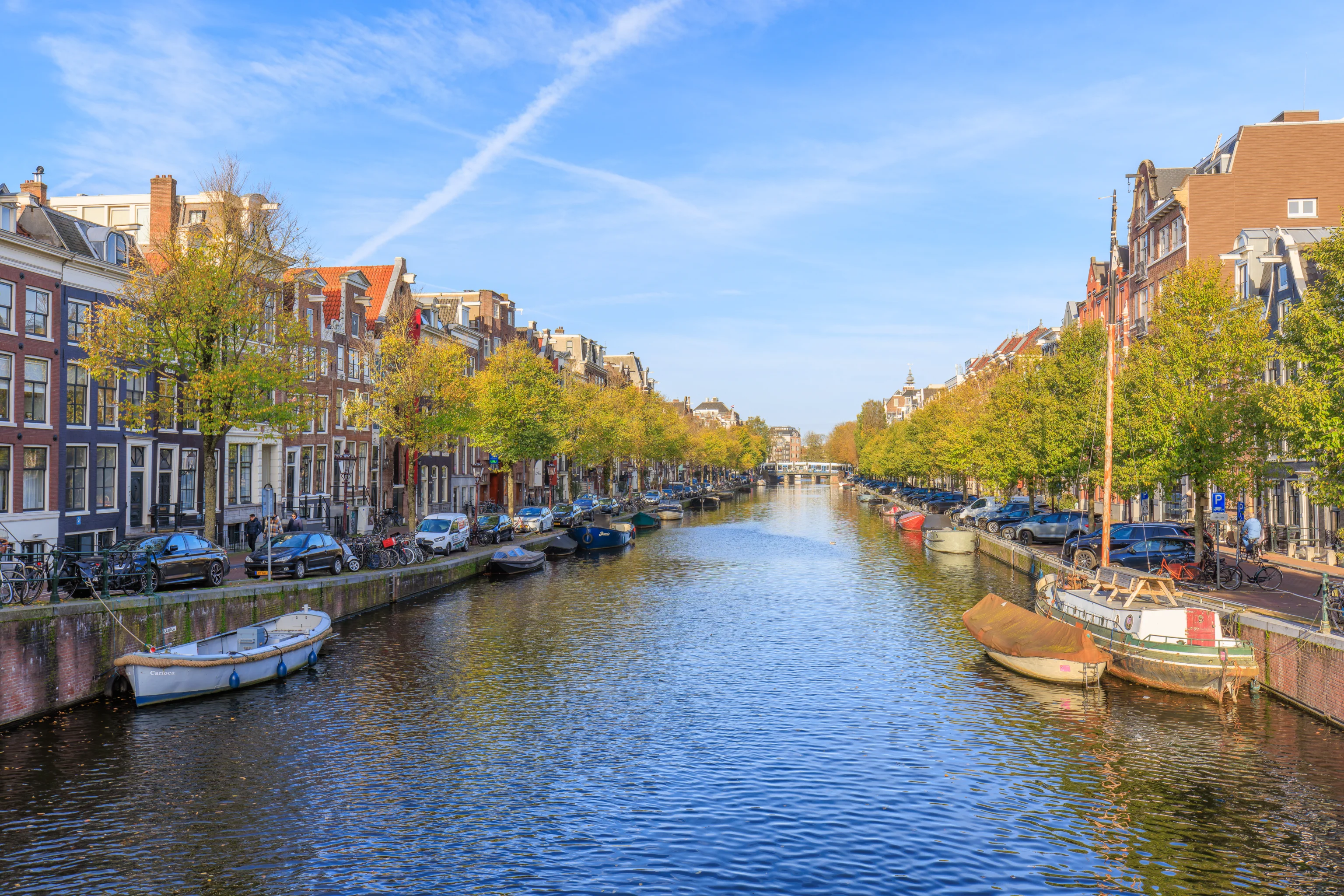
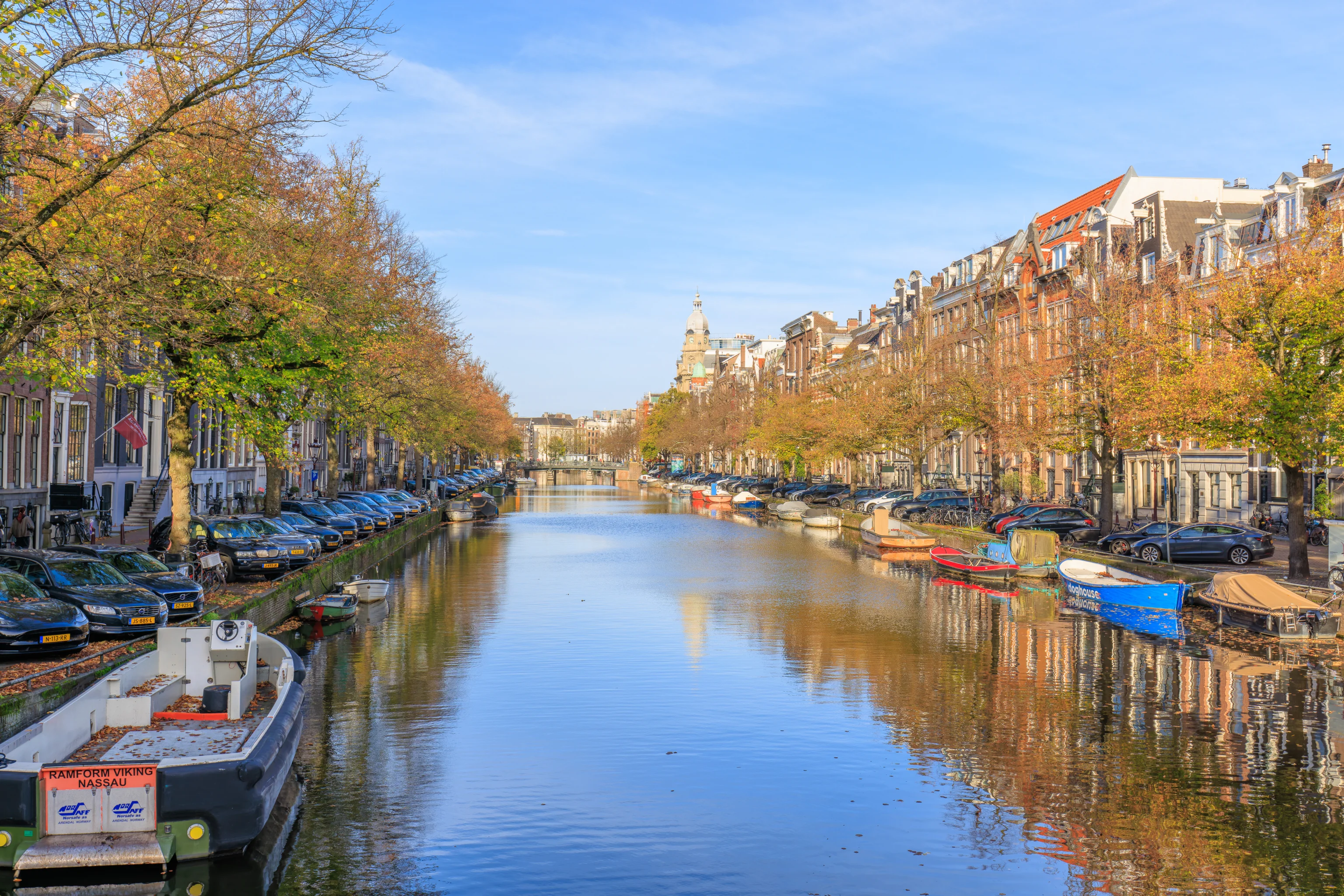
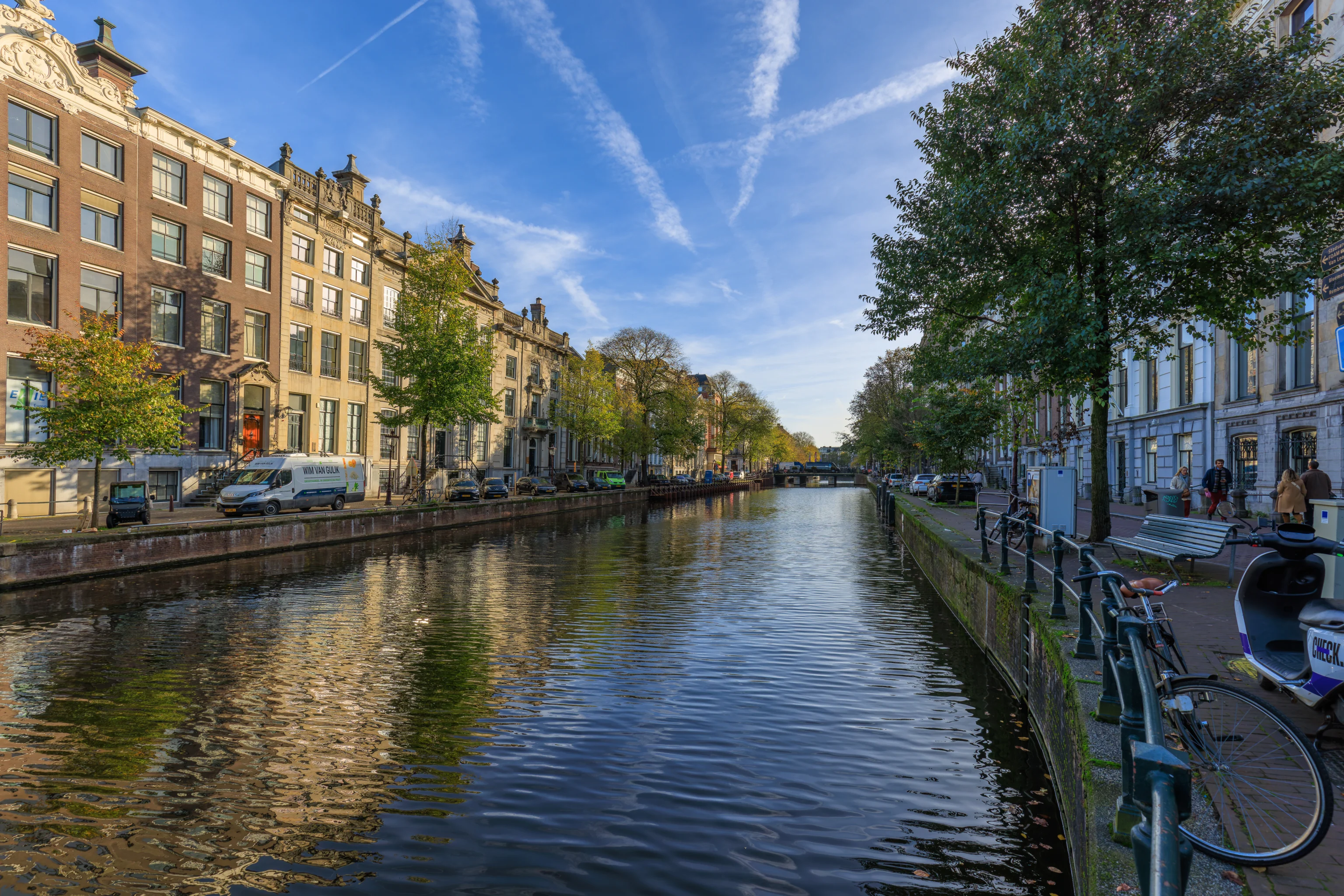
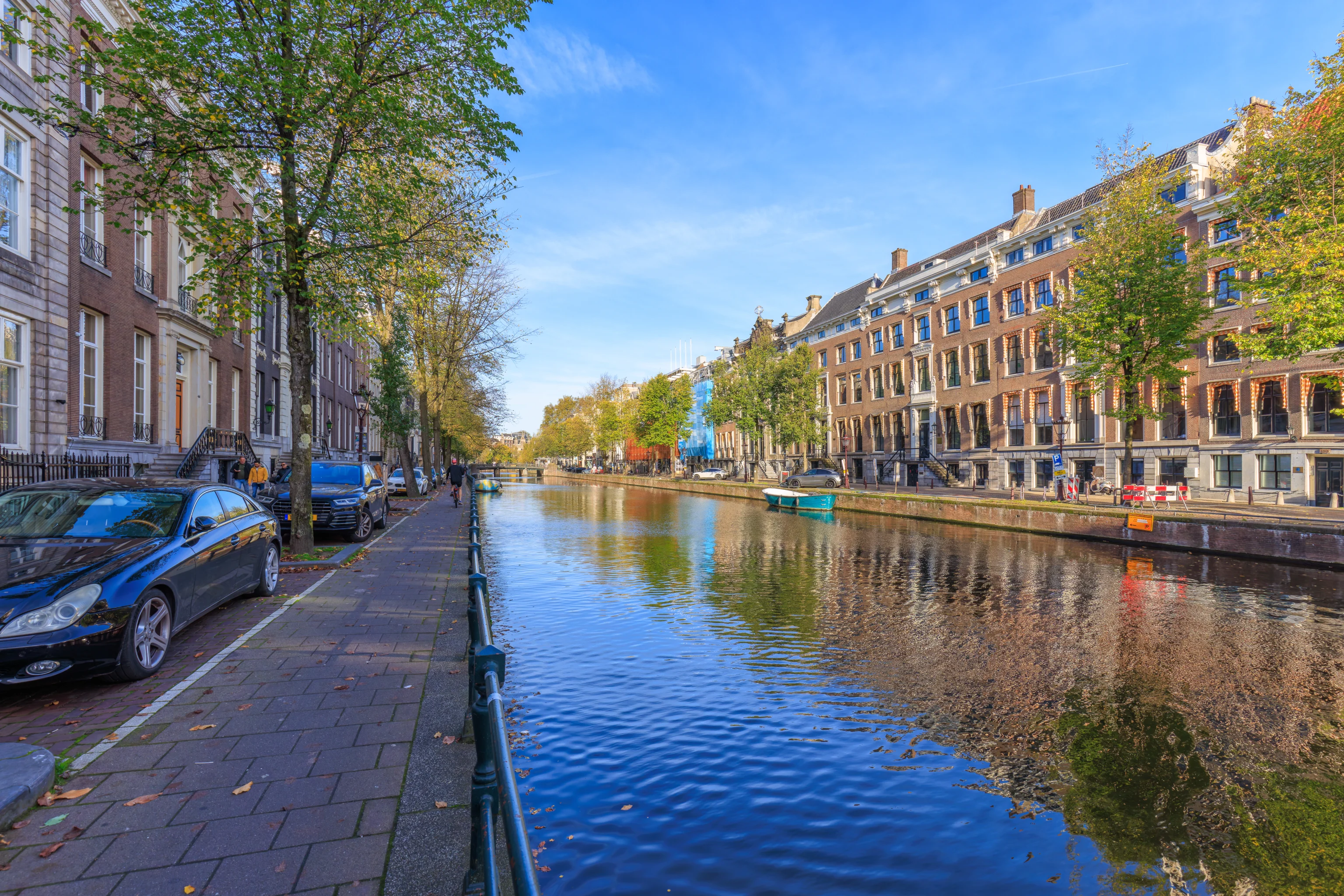
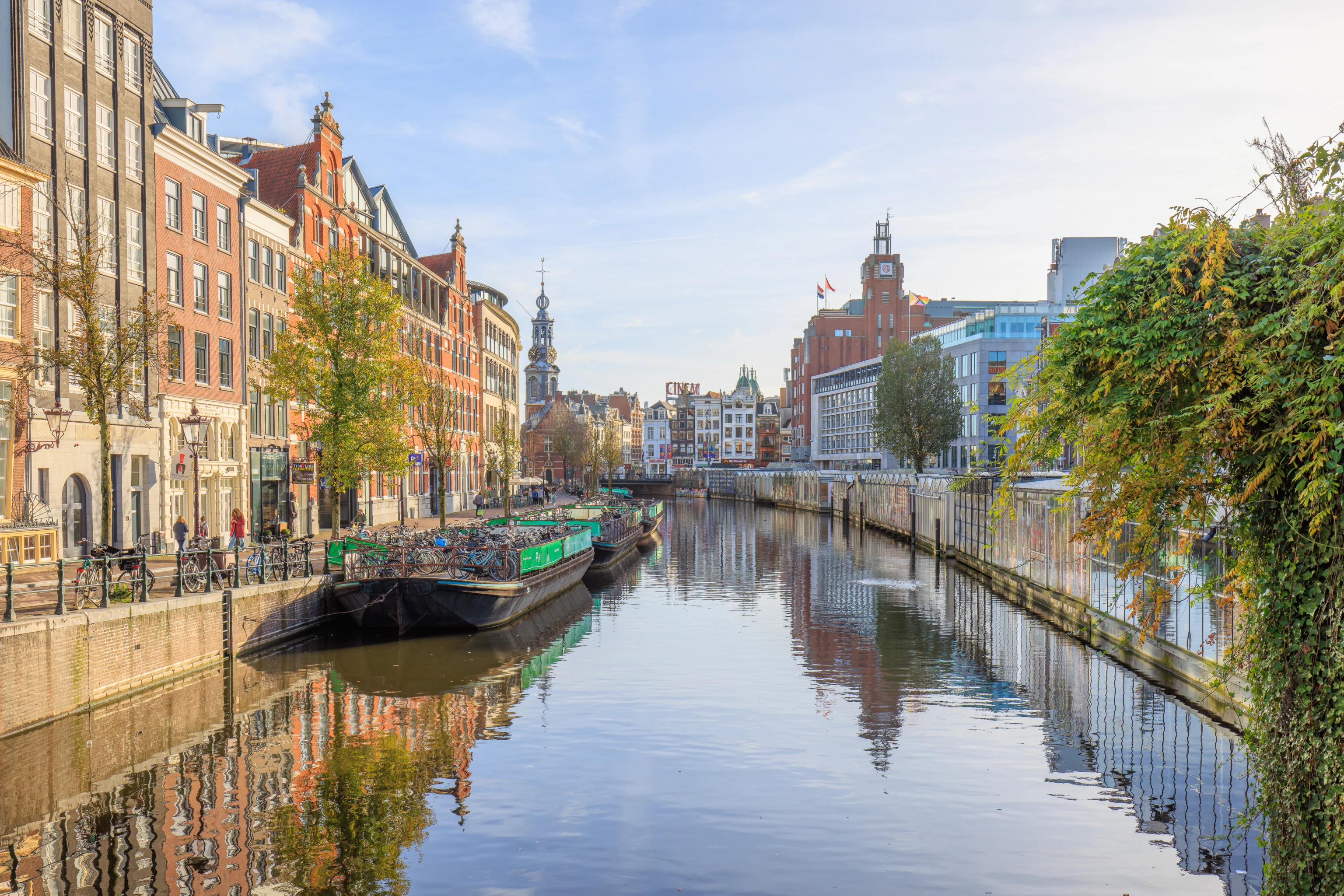
We took the scenic route, walking by the canals rather than catching the tram at a closer stop. We actually took the tram once from Koningsplein on our first night in Amsterdam at the end of the day.
Utrecht
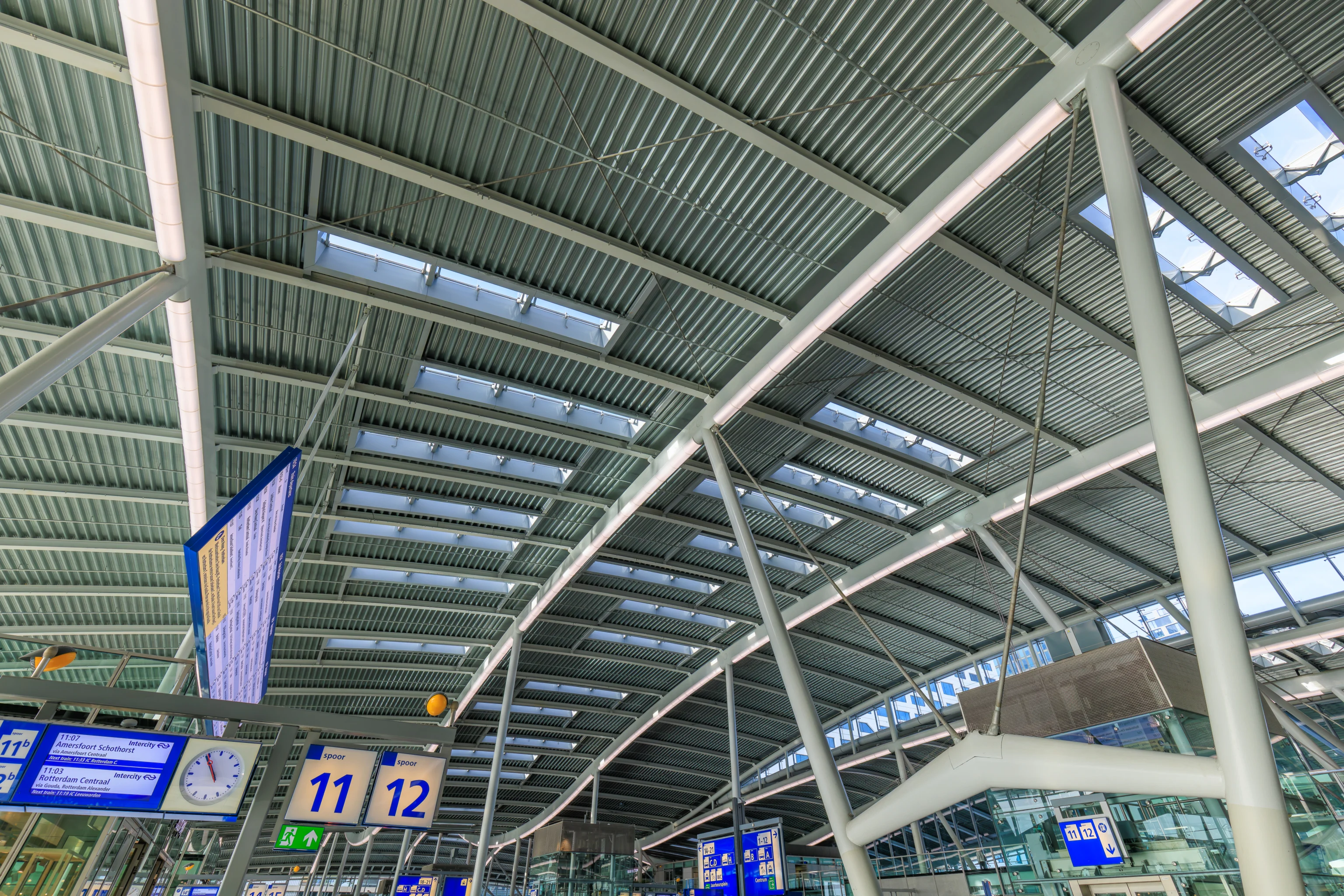
The train ride to Utrecht was short and uneventful.
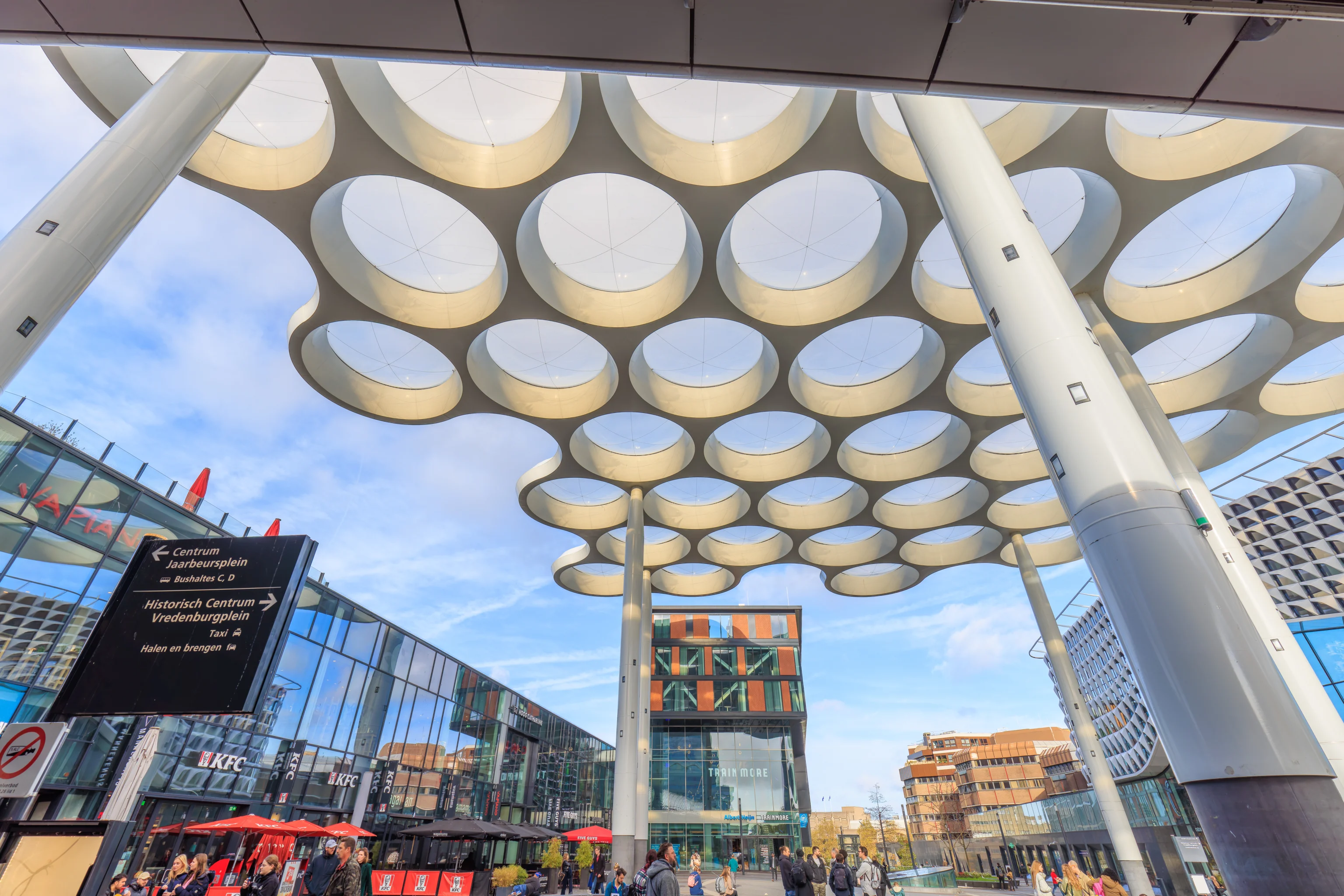
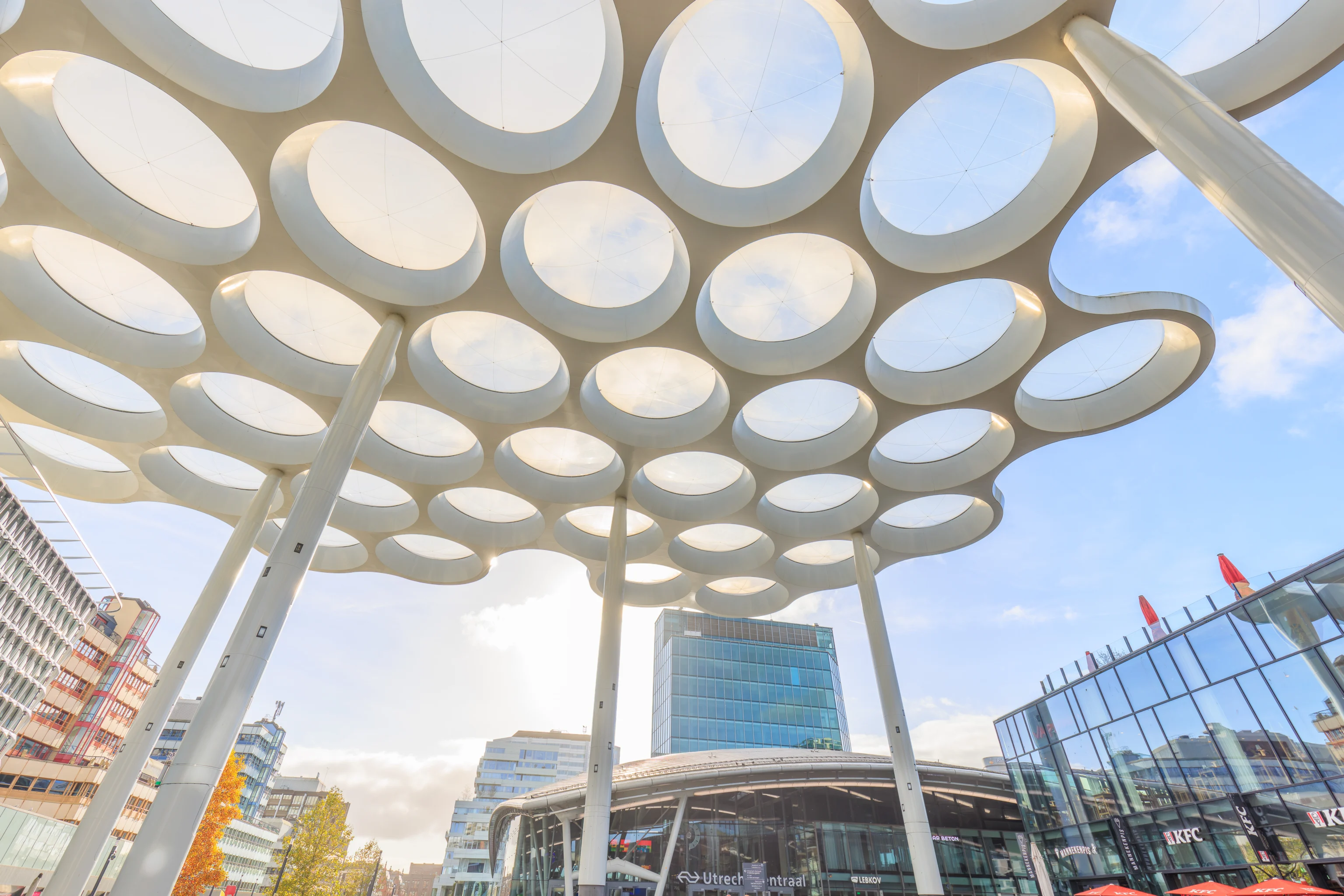
We exited the station at its northern corner, ending up under a canopy that resembled a honeycomb, except without any bees or hexagons.
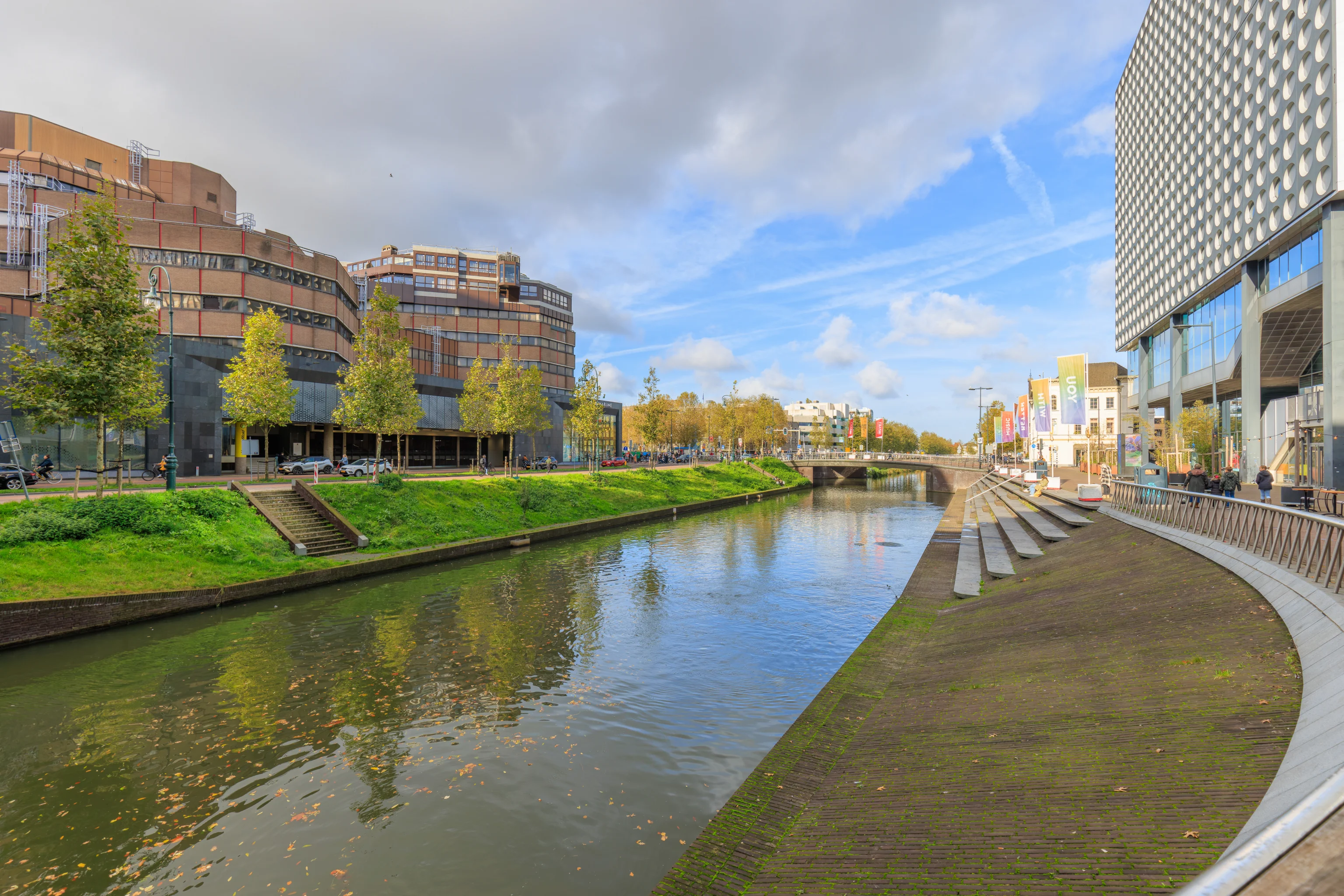
Rather than continue walking to the northwest, we went northeast via the Hoog Catharijne shopping mall. The mall is almost directly connected to the train station and occupies a large space to the northeast of the station building. The mall actually contains two hotels, a Hampton Inn and a Crowne Plaza. We considered staying here as Utrecht isn’t far from Amsterdam but ultimately decided to stay at the Apollo Hotel instead.
We exited the mall more or less in the middle via an entrance on the north side of the building. The entrance is above a canal which runs under the mall.
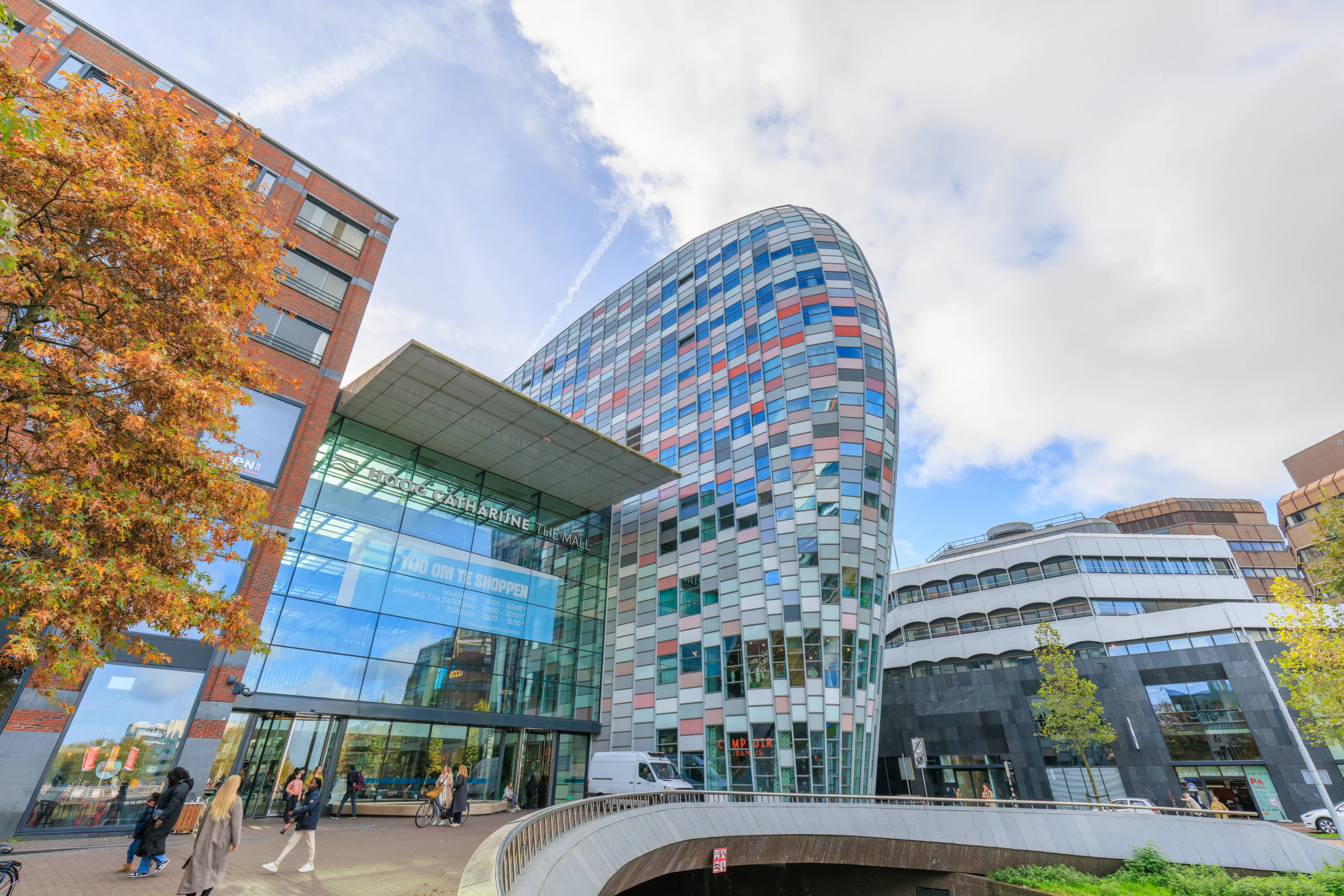
The mall has a modern appearance here. The hotels are within the taller curved part of the building, which runs from one side of the mall to the other.
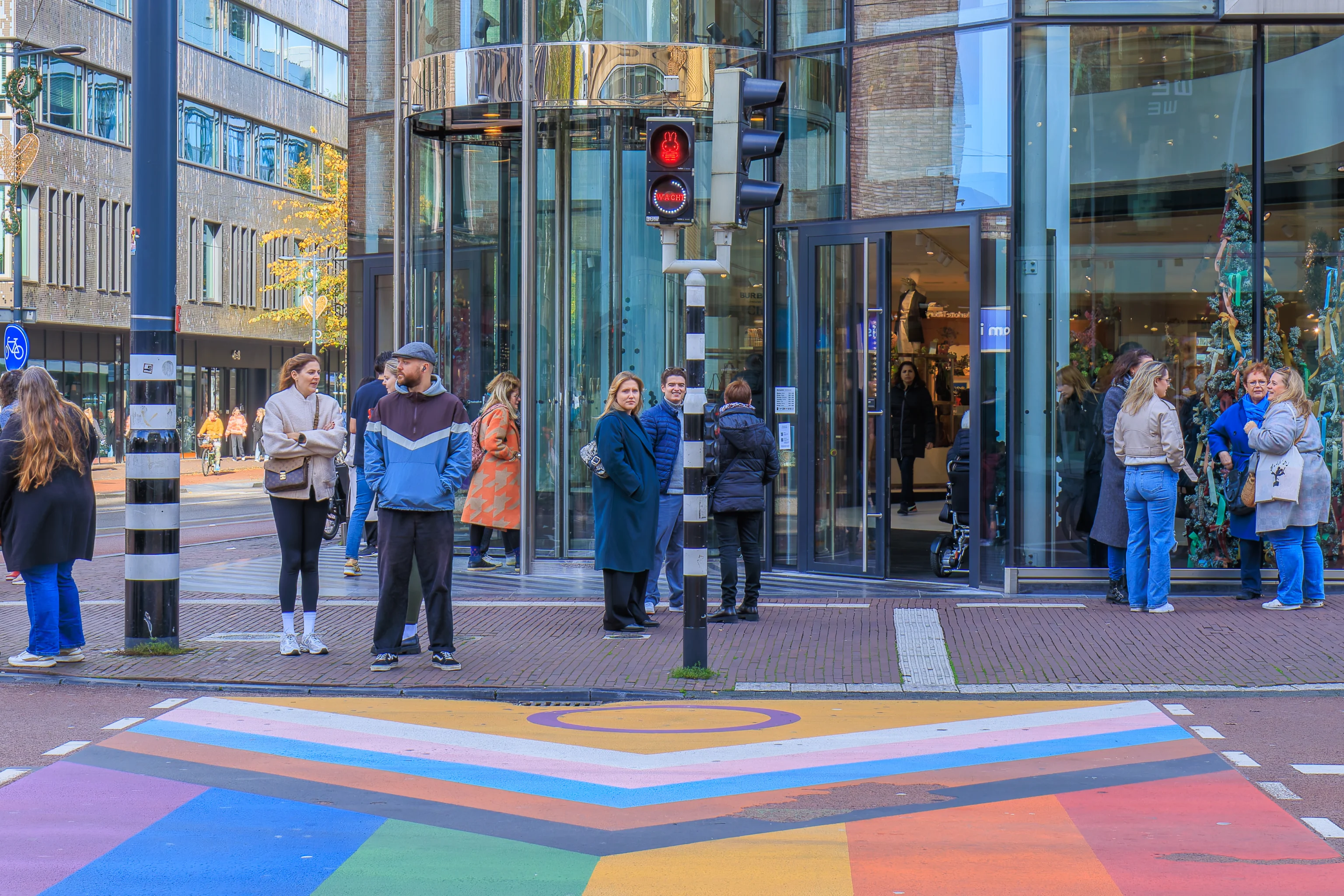
Our first destination was about three blocks away. It is a Miffy pedestrian crossing light! We recently learned that Miffy is Dutch, which was a bit of a surprise given the character’s popularity in Japan and Korea. Miffy’s actual name is Nijntje, short for konijntje, meaning little rabbit or bunny. Dick Bruna, the artist who created Miffy, was from Utrecht! Miffy originally had different names in different countries but it was eventually standardized as Miffy as it is easy to pronounce in all languages, according to the Miffy website’s About Miffy page.
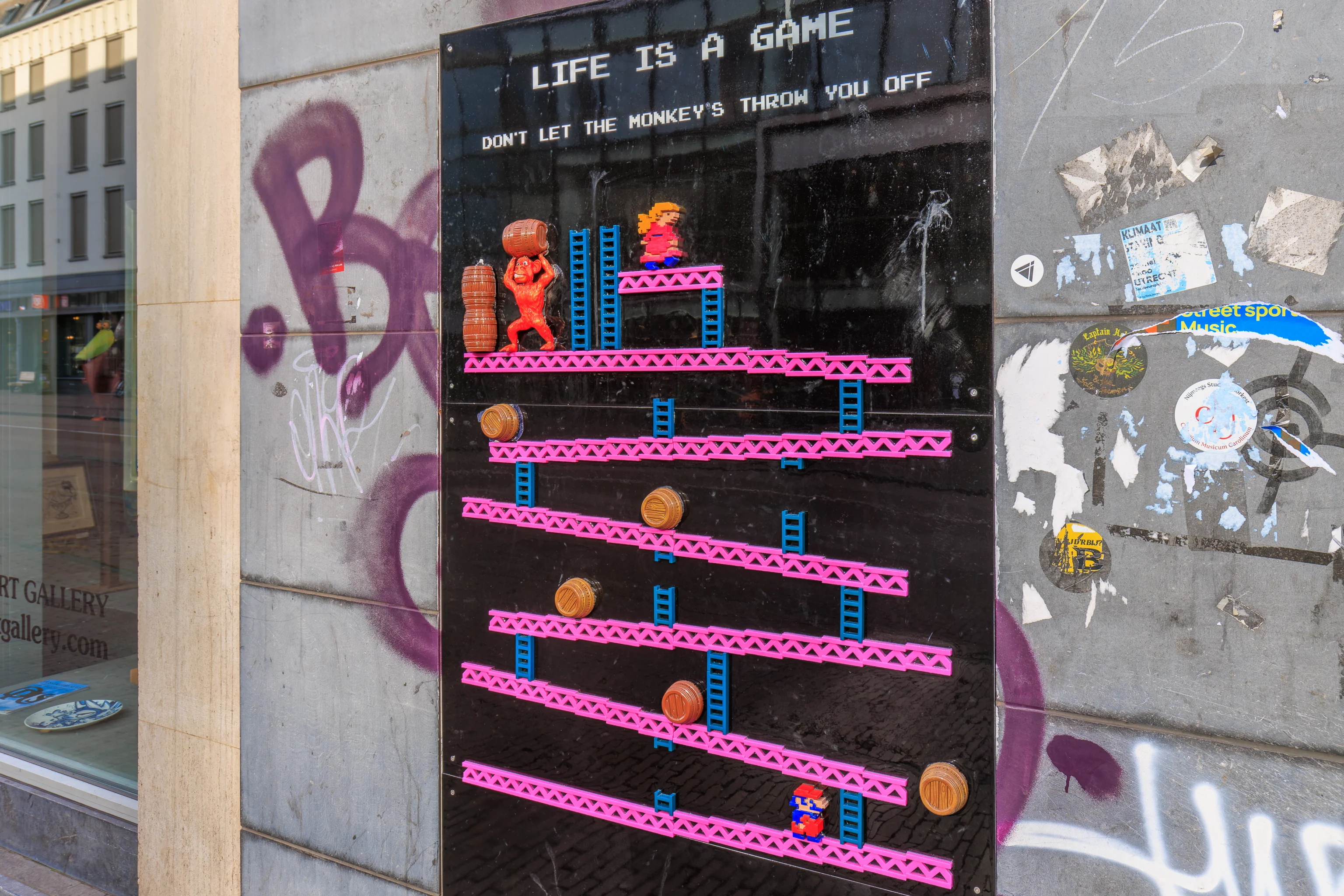
We continued walking to the east to get to the Oudegracht (Old Canal), the western canal at the city center. We passed by this Donkey Kong artwork on a building by the road.
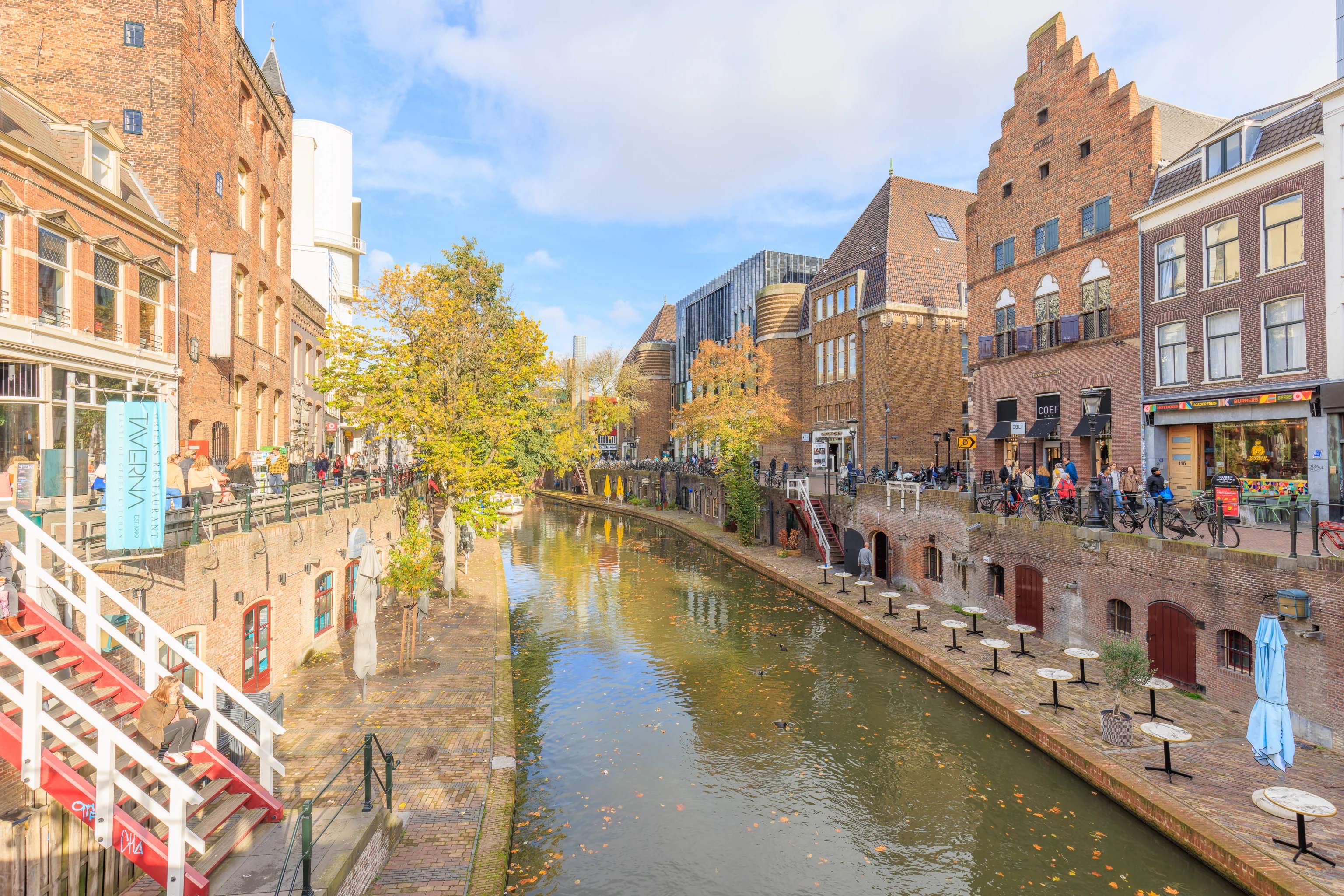
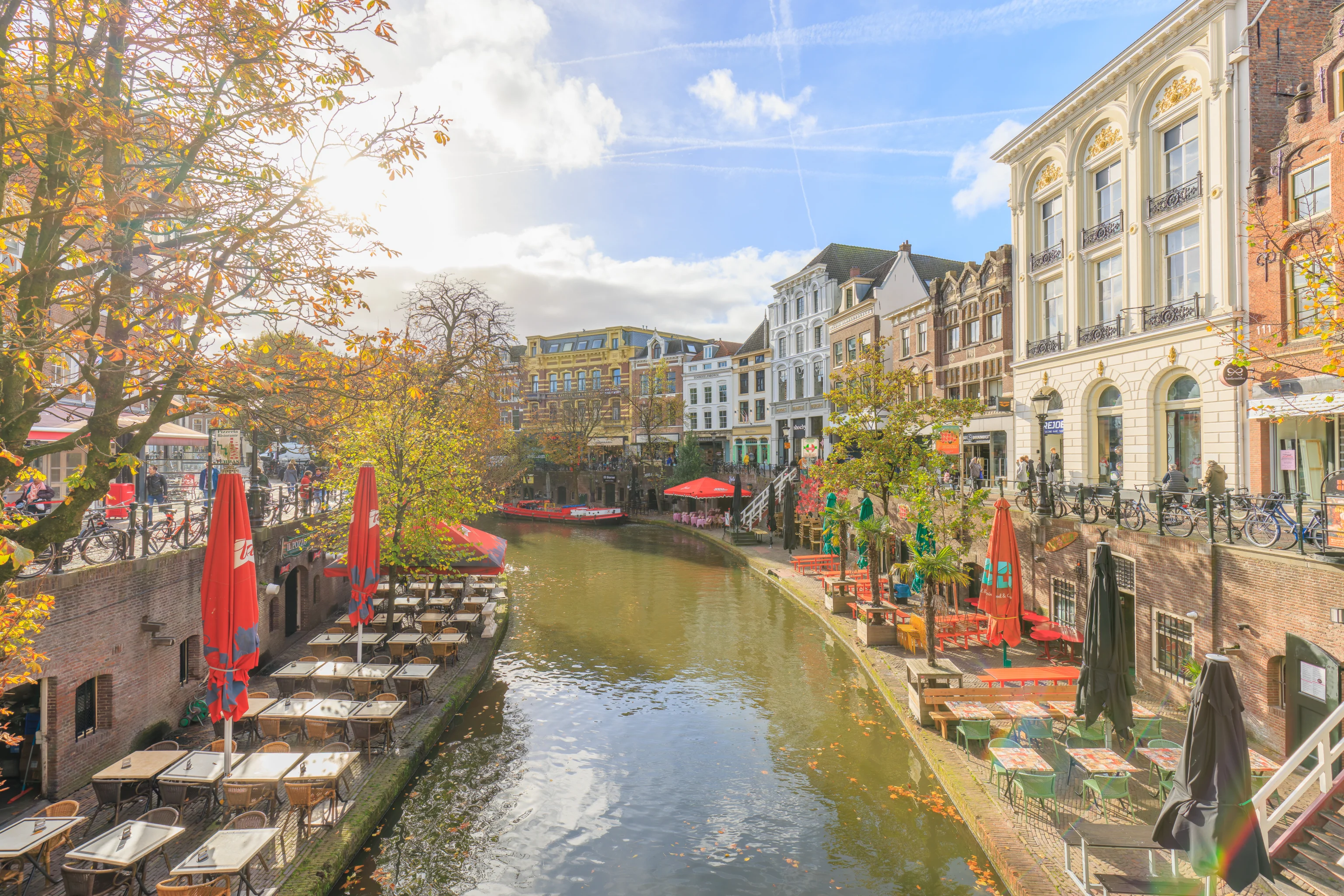
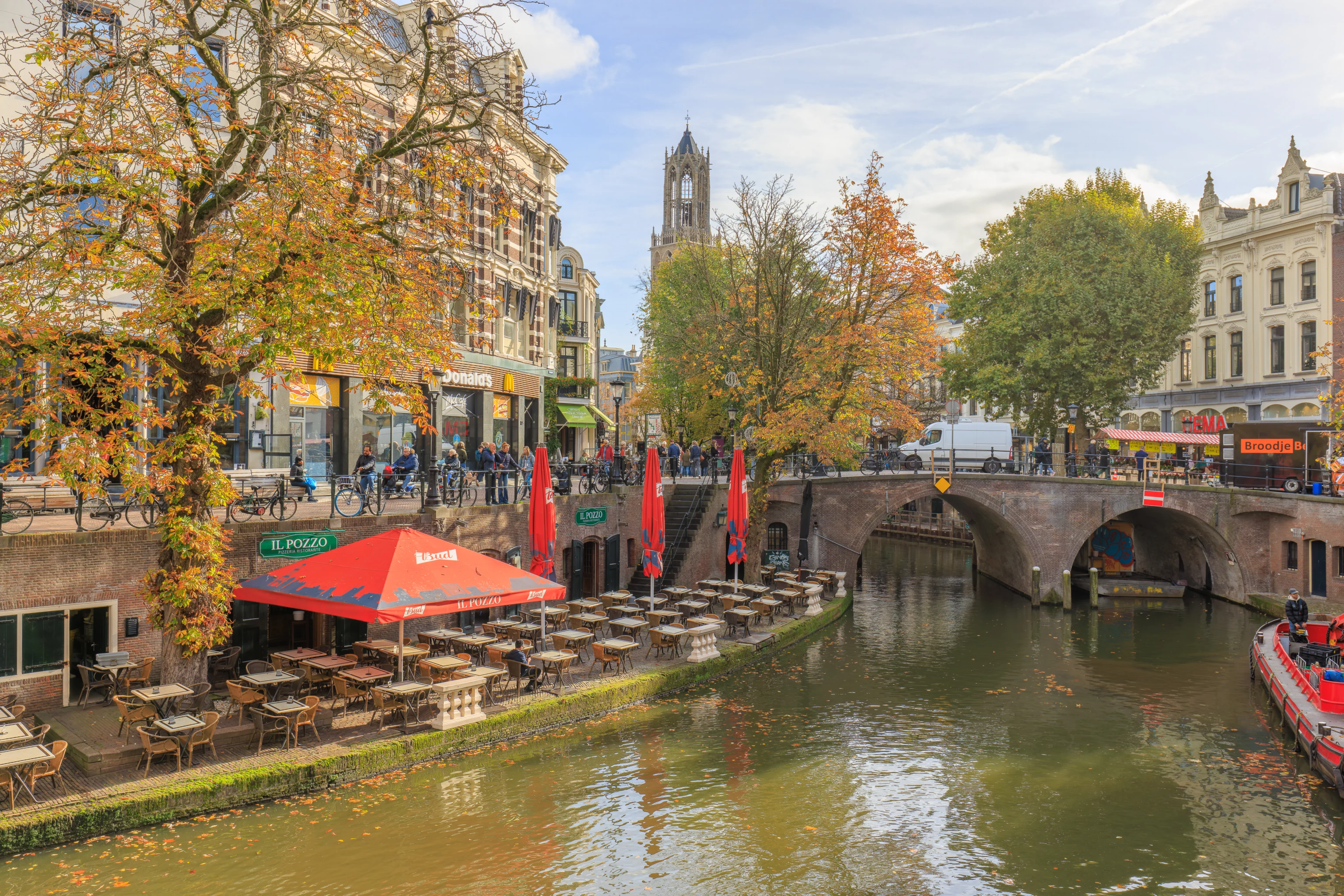
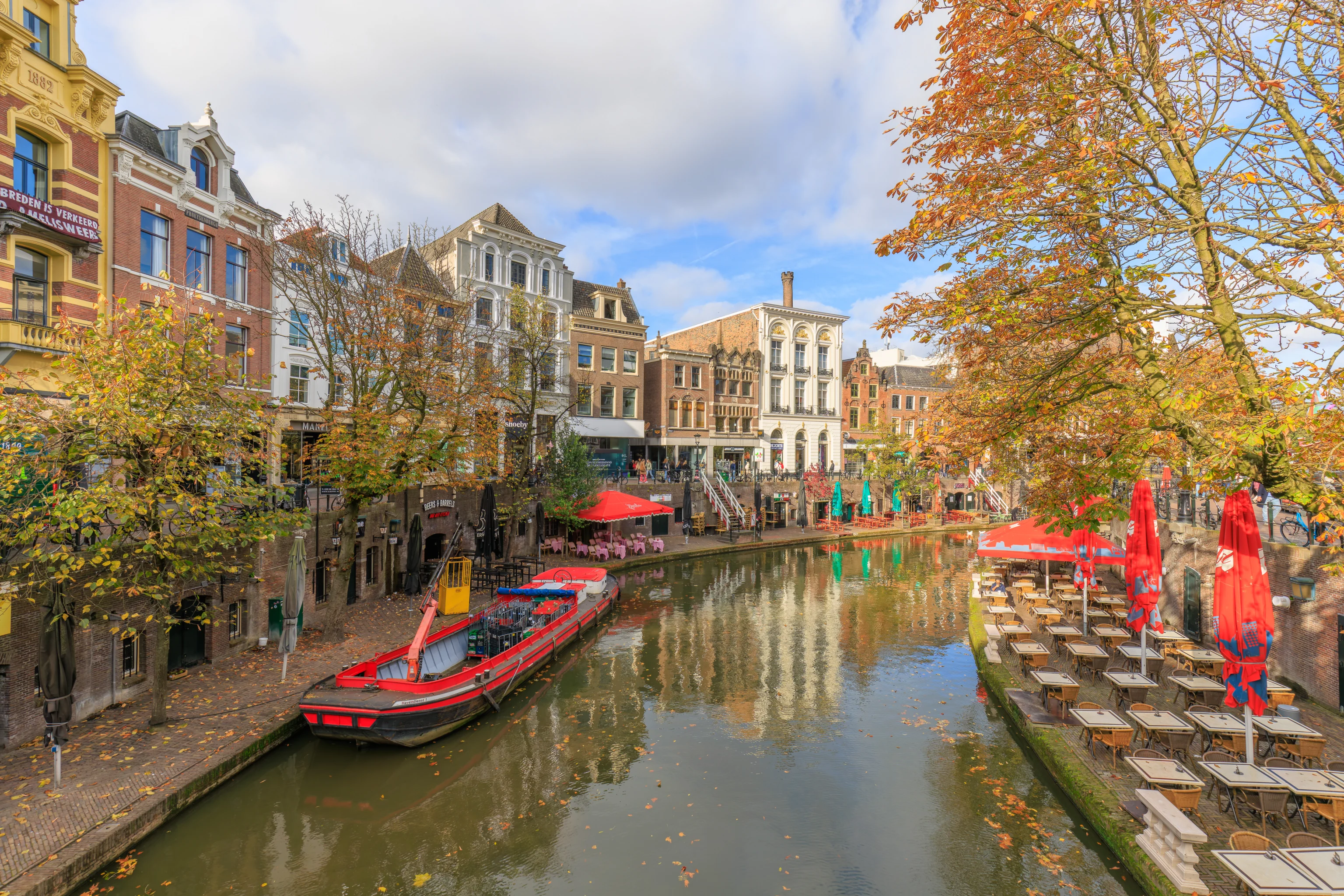
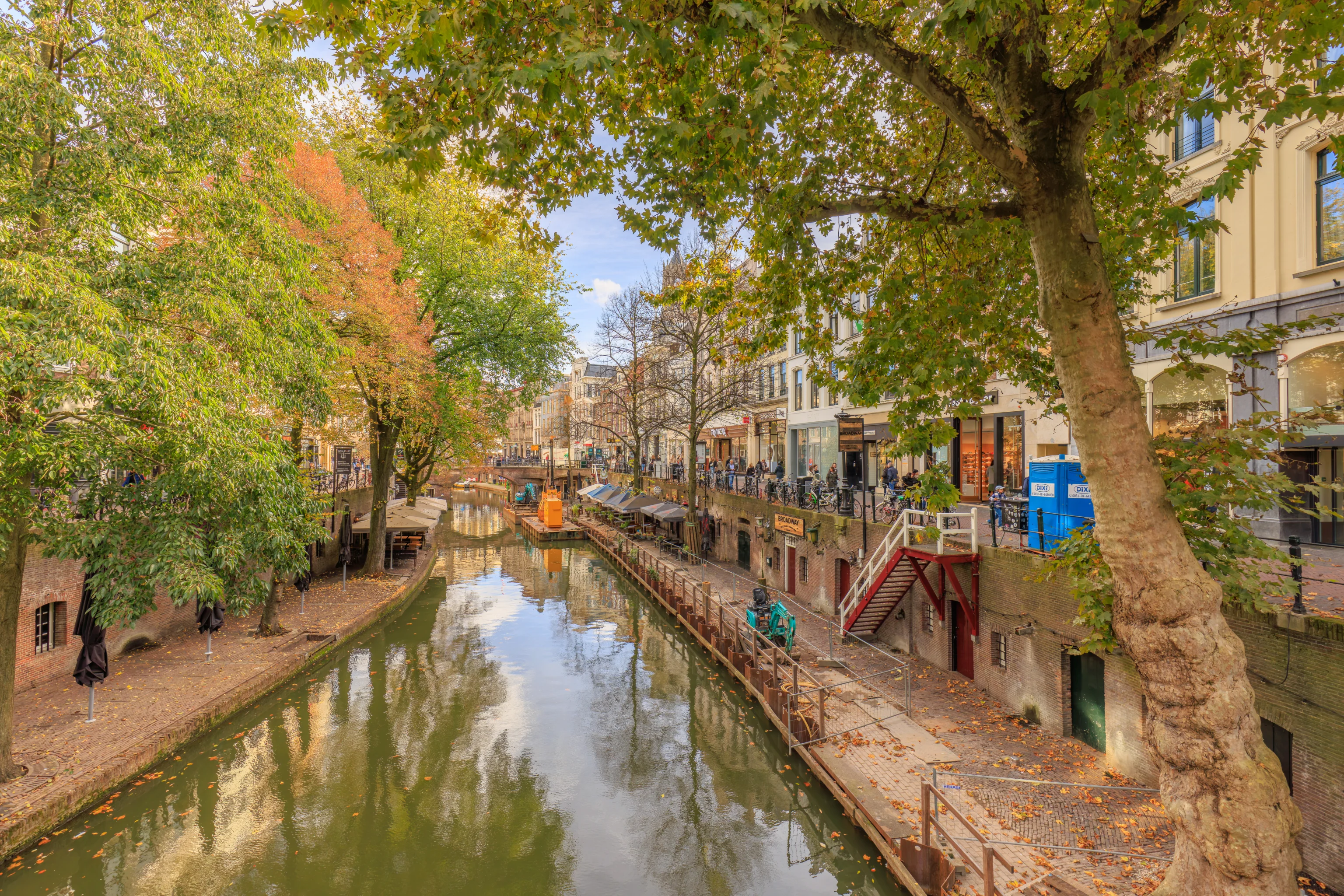
After reaching the Oudegracht, just one block away from the Miffy crossing light, we turned to follow the canal to the south. This canal, along with the Nieuwegracht (New Canal) to the east, are unique in that there are two levels next to the canal. The lower level is just above water level, which remains constant due to Dutch water management techniques. This level is described as the wharf level and is lined with former storage and cellar areas. The roads and buildings are located one level higher.
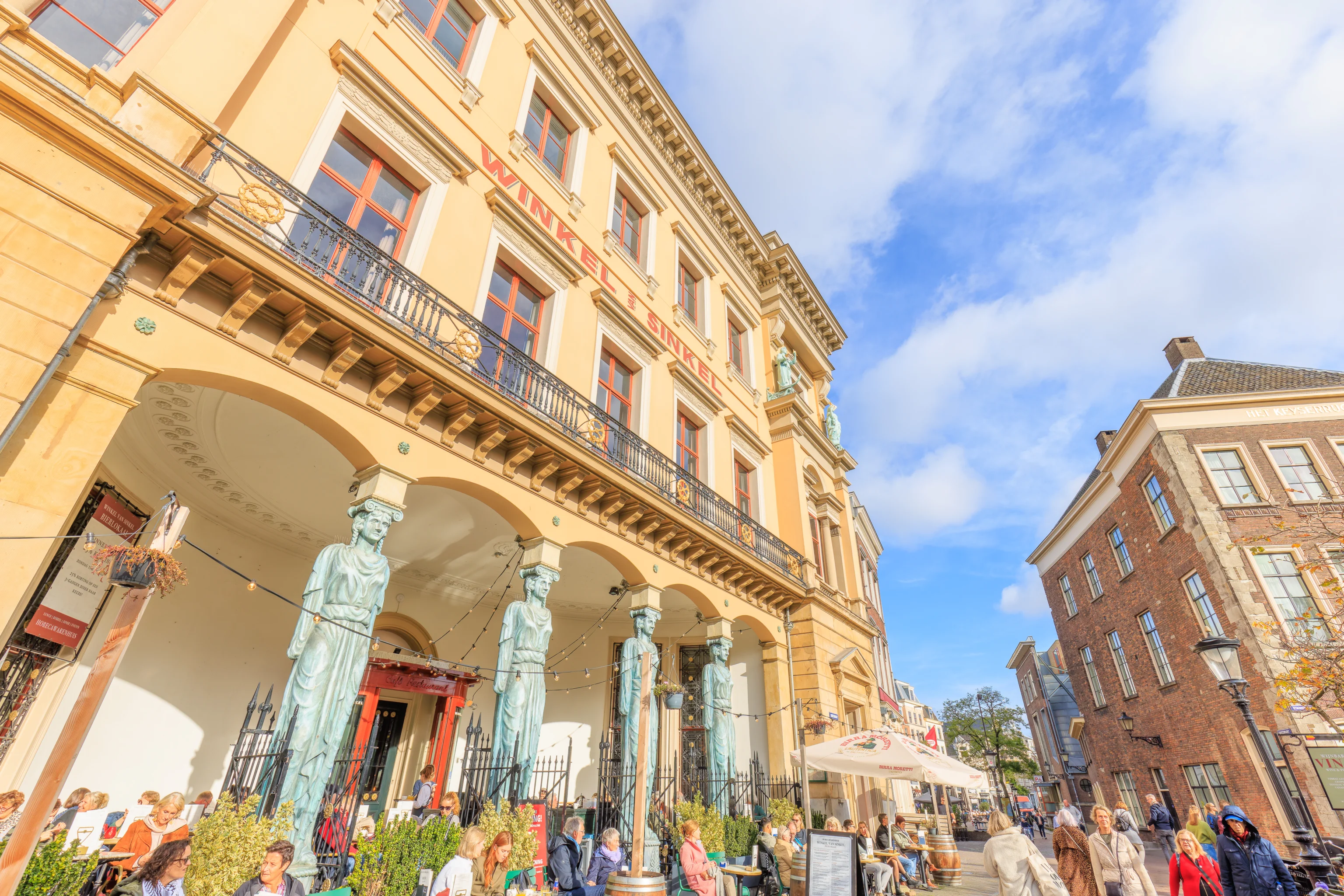
A very European scene with the statue columns supporting the building above!
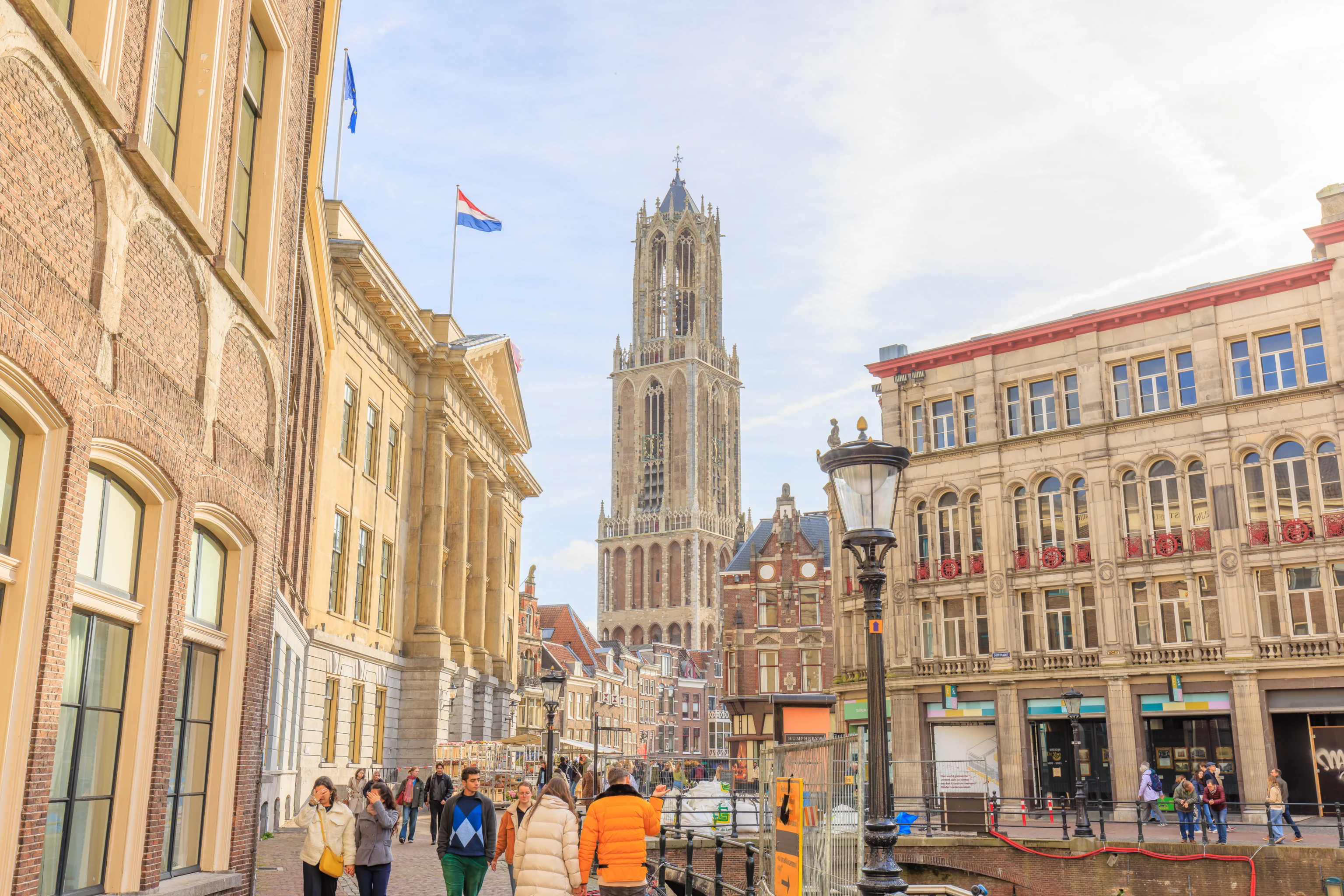
We are headed to the St. Martin’s Cathedral, also referred to as just the Domkerk. It is behind the Domtoren, the tallest in the Netherlands. The naming here seems a bit odd. Dom means cathedral in German, as we have learned from our trips to Germany, but doesn’t seem to be in Dutch. Dom seems to be used here as a proper noun, so, this is the Dom Church. And the tower is thus the Dom Tower.
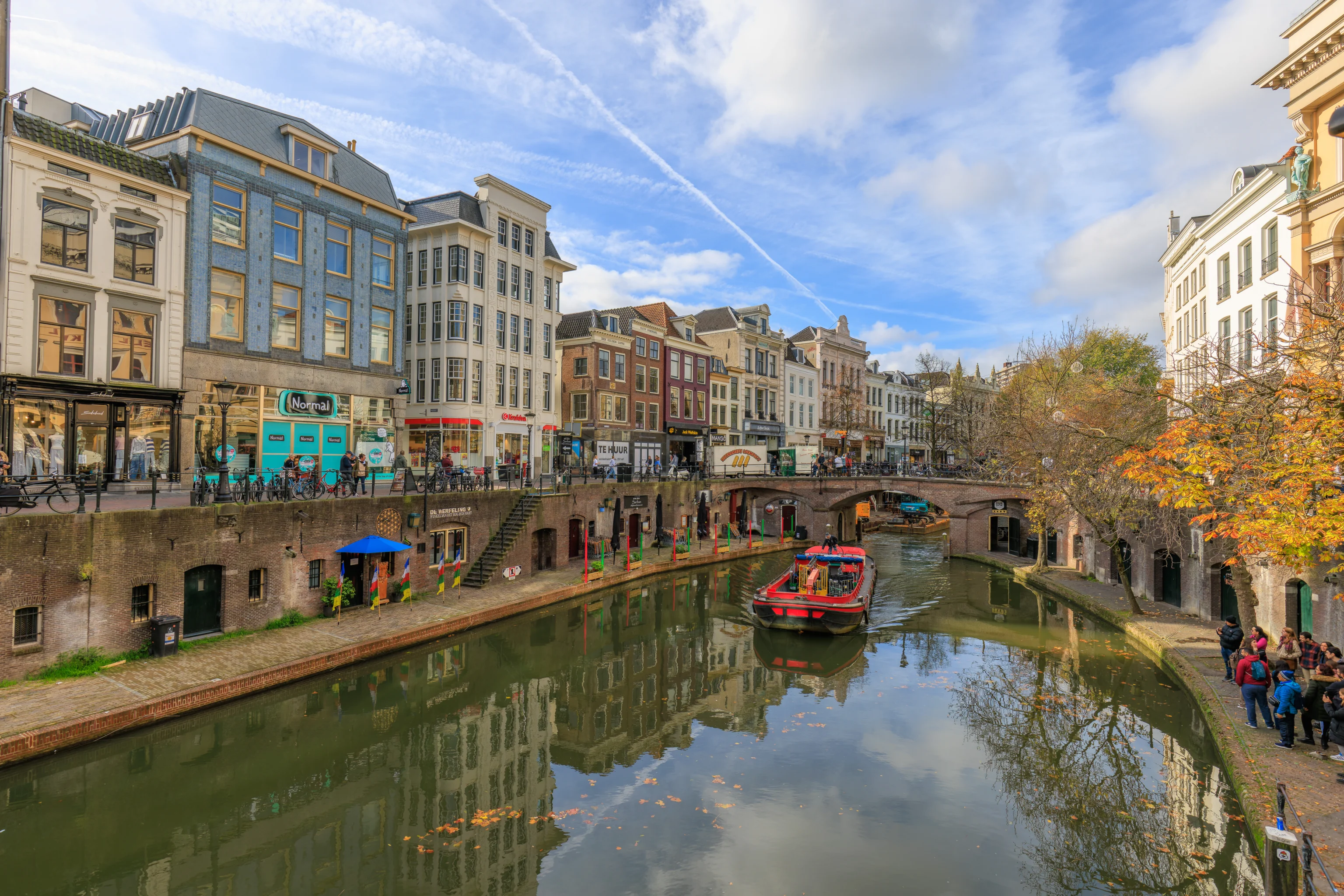
We watched as a cargo passed under the bridge that we were standing on.
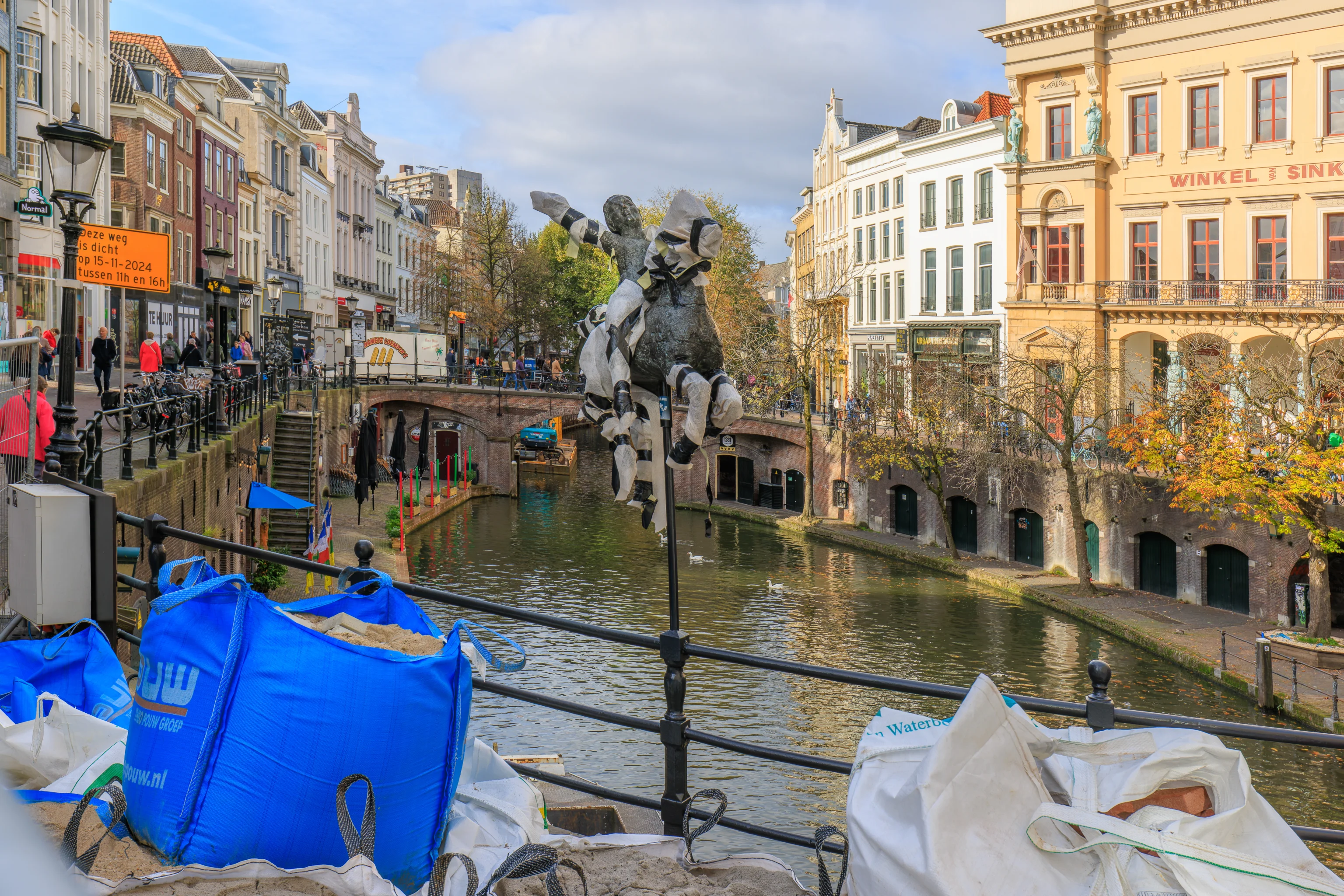
As we continued heading to the tower, we passed by this sculpture which was in a small construction zone. It looked quite silly in its protective wrap, like it was injured and all bandaged up!
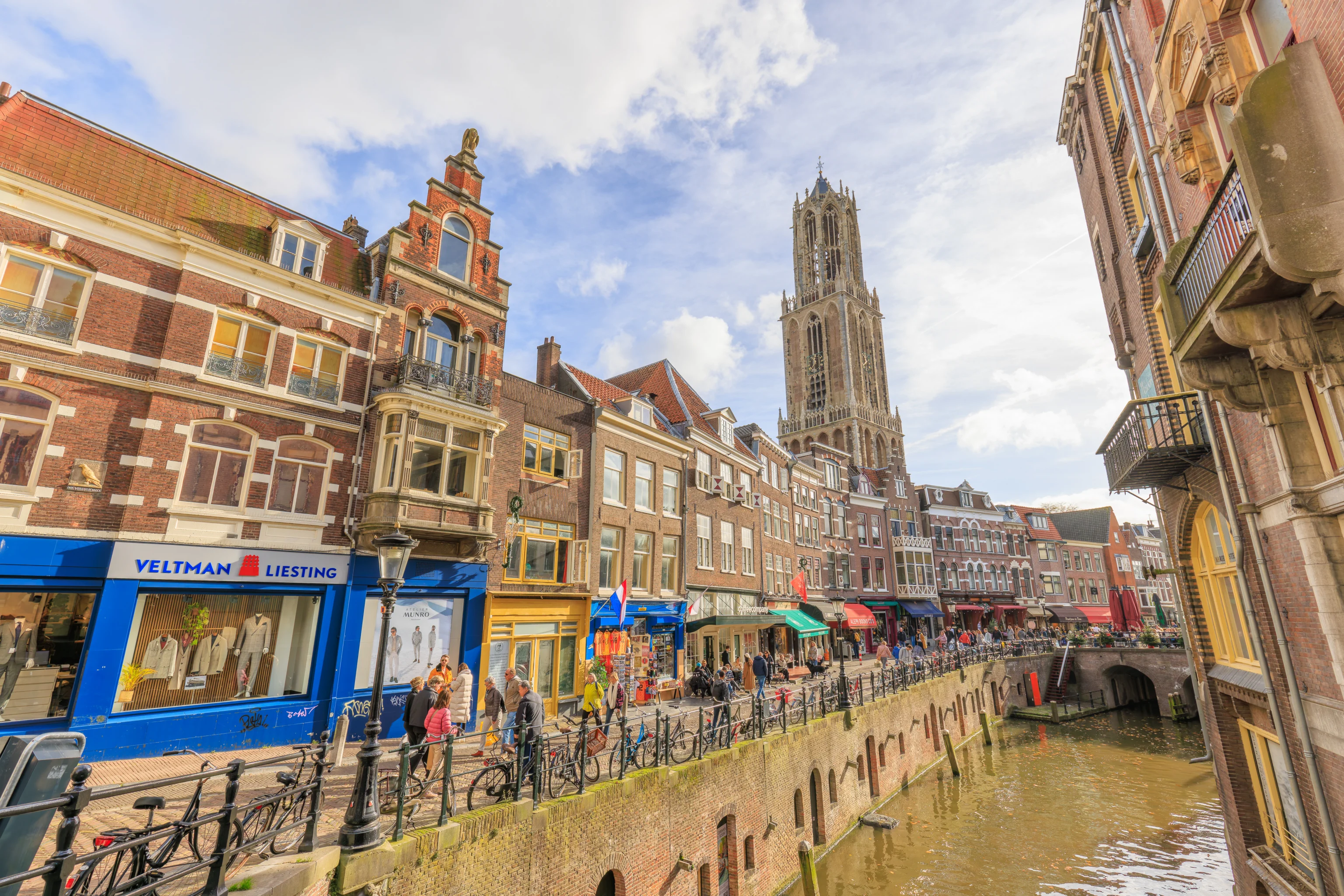
We still seem to be going in the right direction.
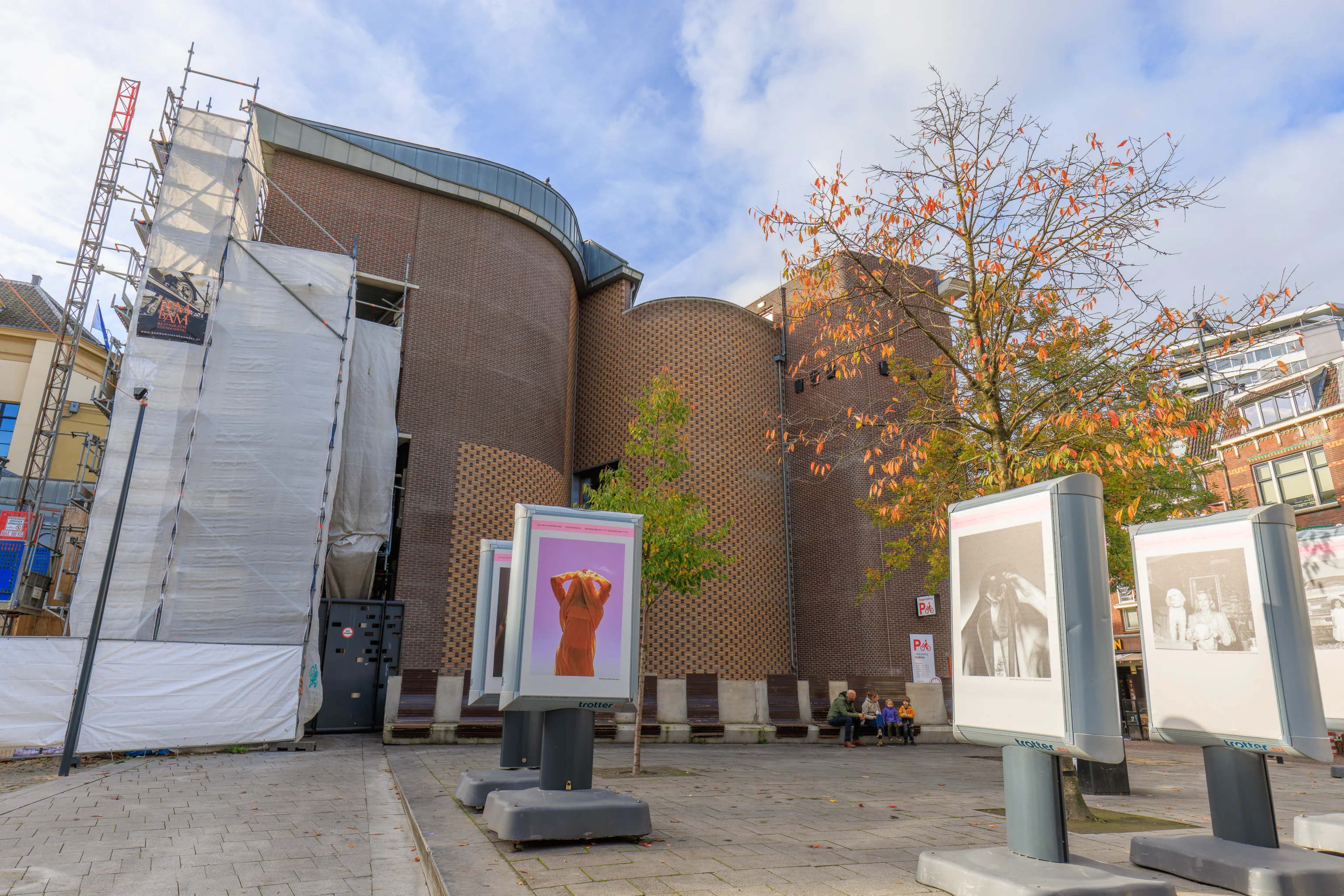
Given the time, nearly noon, we decided to get something to eat in the area before continuing on. We looked at the restaurant options and decided to try Dutch pancakes. We picked a restaurant that wasn’t too far to the north, which required a bit of backtracking and walking away from the canal near this building, the Stadhuis (City Hall). It is supposed to be an interesting looking building, though it is being renovated so wasn’t entirely visible.
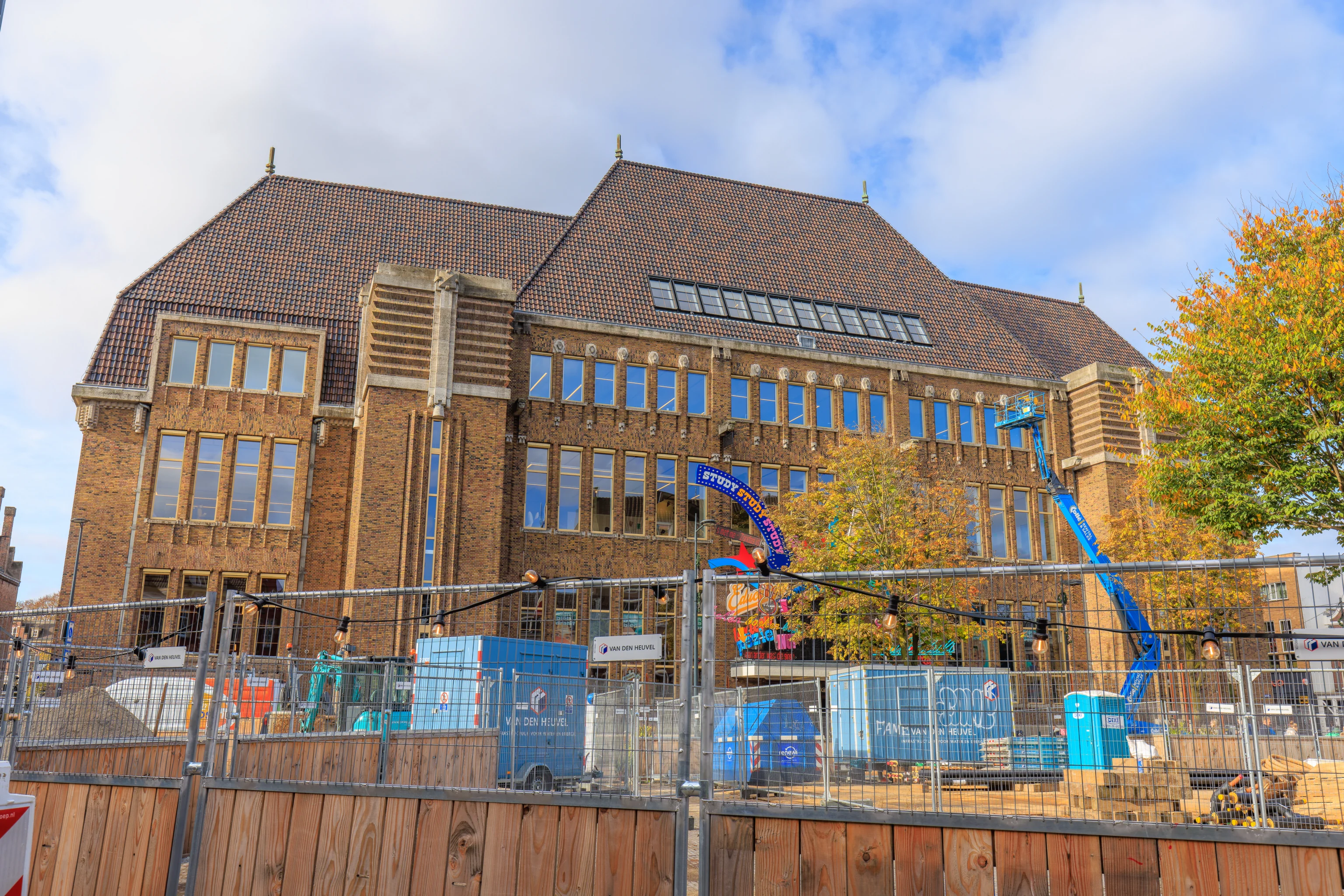
We continued walking to the north to the Neude, a city square. This large building is on the west side of the Neude. It was the Utrecht Main Post Office but is now the Bibliotheek Neude (Neude Library), having been converted in 2020. We probably should have gone in to take a look as it seems to have quite a grand interior.
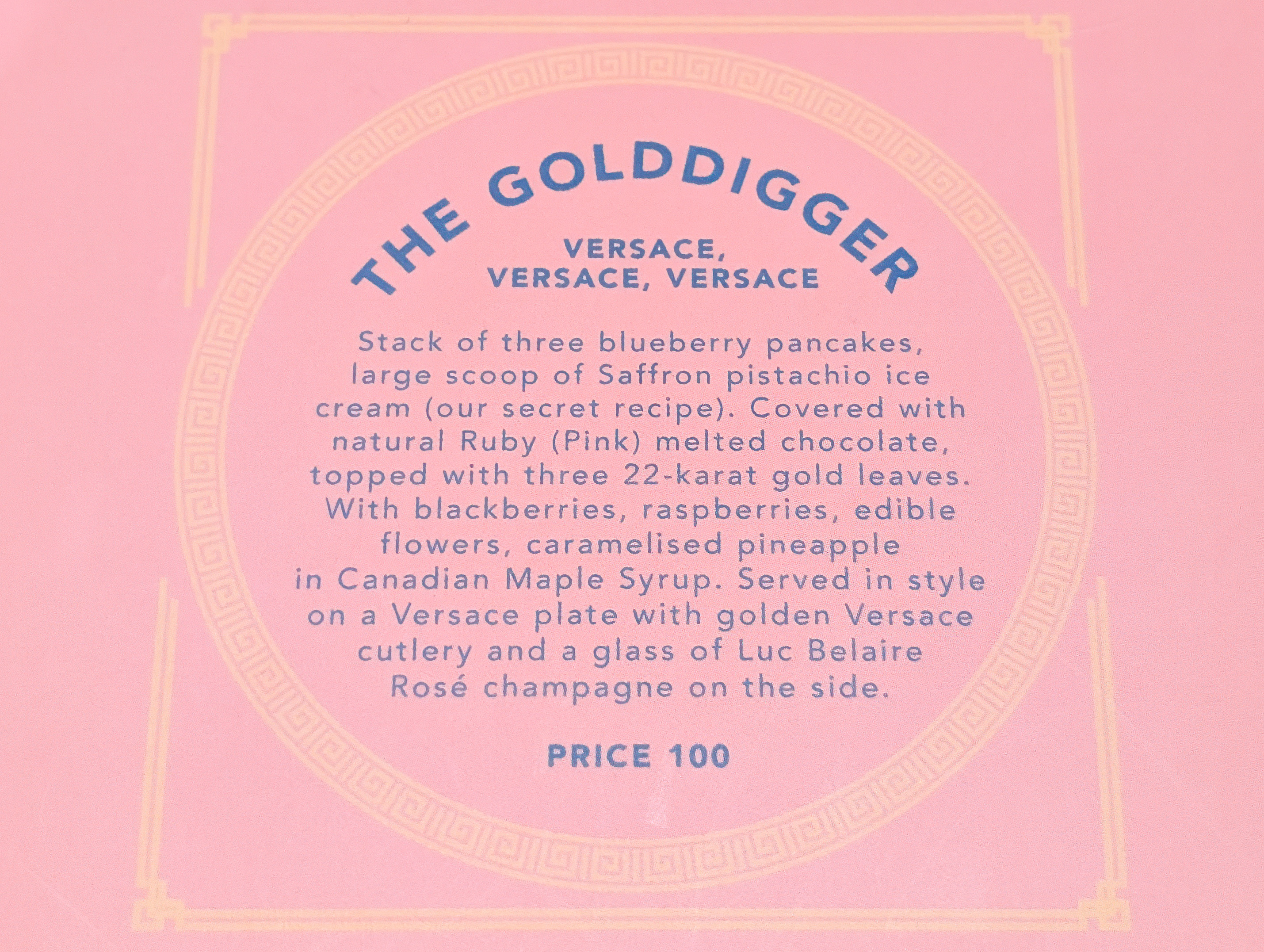
Instead, we turned to reach our destination, MOAK Pancakes. They have a €100 dish on the menu! We definitely didn’t order it though!
Unfortunately, while we intended to have Dutch pancakes, this turned out to be an American pancake restaurant! After taking a look later on at other pancake restaurants, it turns out that most here actually serve thick American style pancakes. We almost never have pancakes in the US or anywhere else in the world! And, we couldn’t even remember the last time we had pancakes. Could it be the last time was at the Millbrae Pancake House near SFO? That’s the only pancake place I can remember visiting!
We decide to order two pancakes, one savory and one sweet.
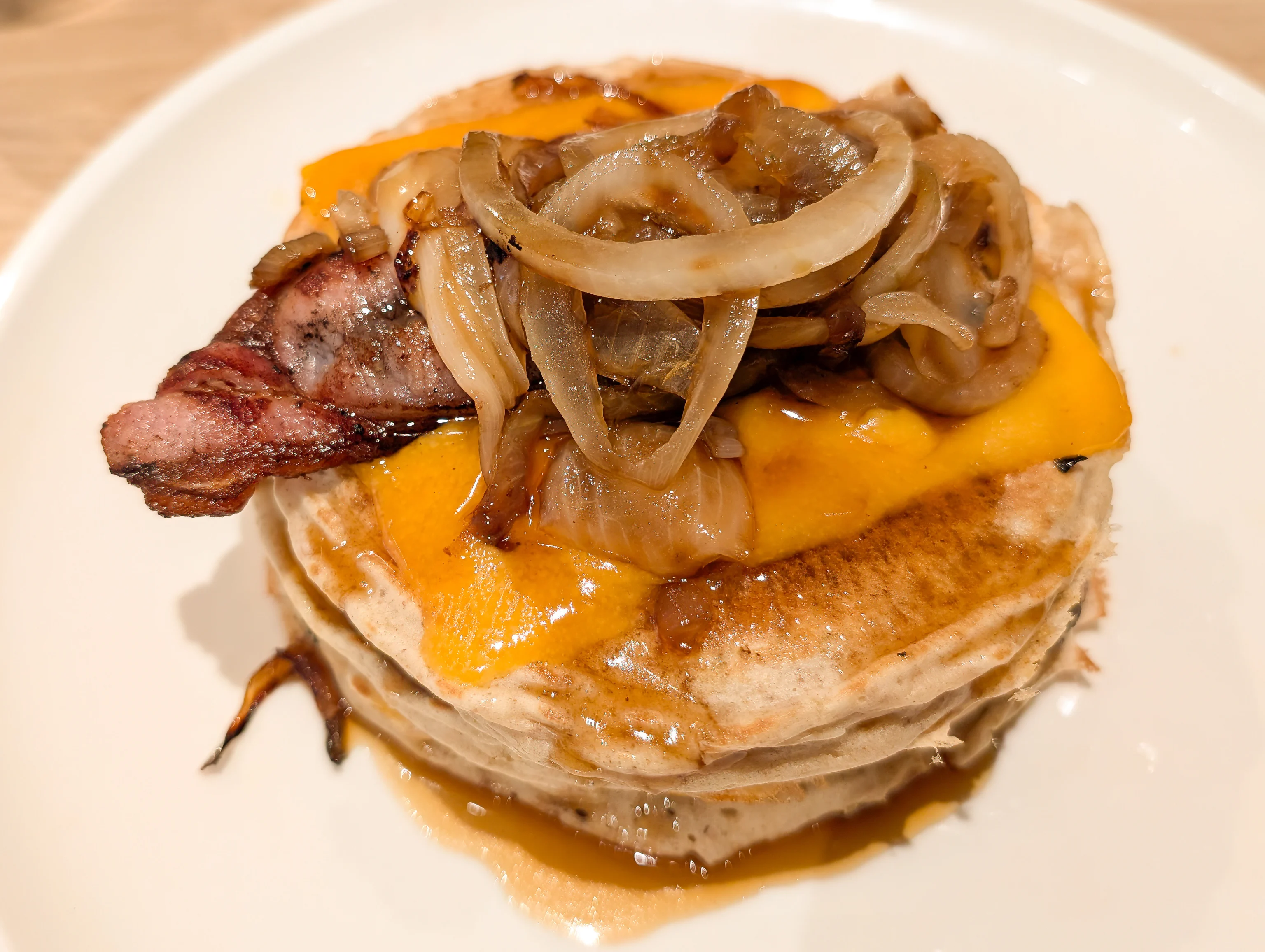
Sadly, Europeans generally don’t seem know anything about how to make proper bacon! Otherwise though, it was OK.
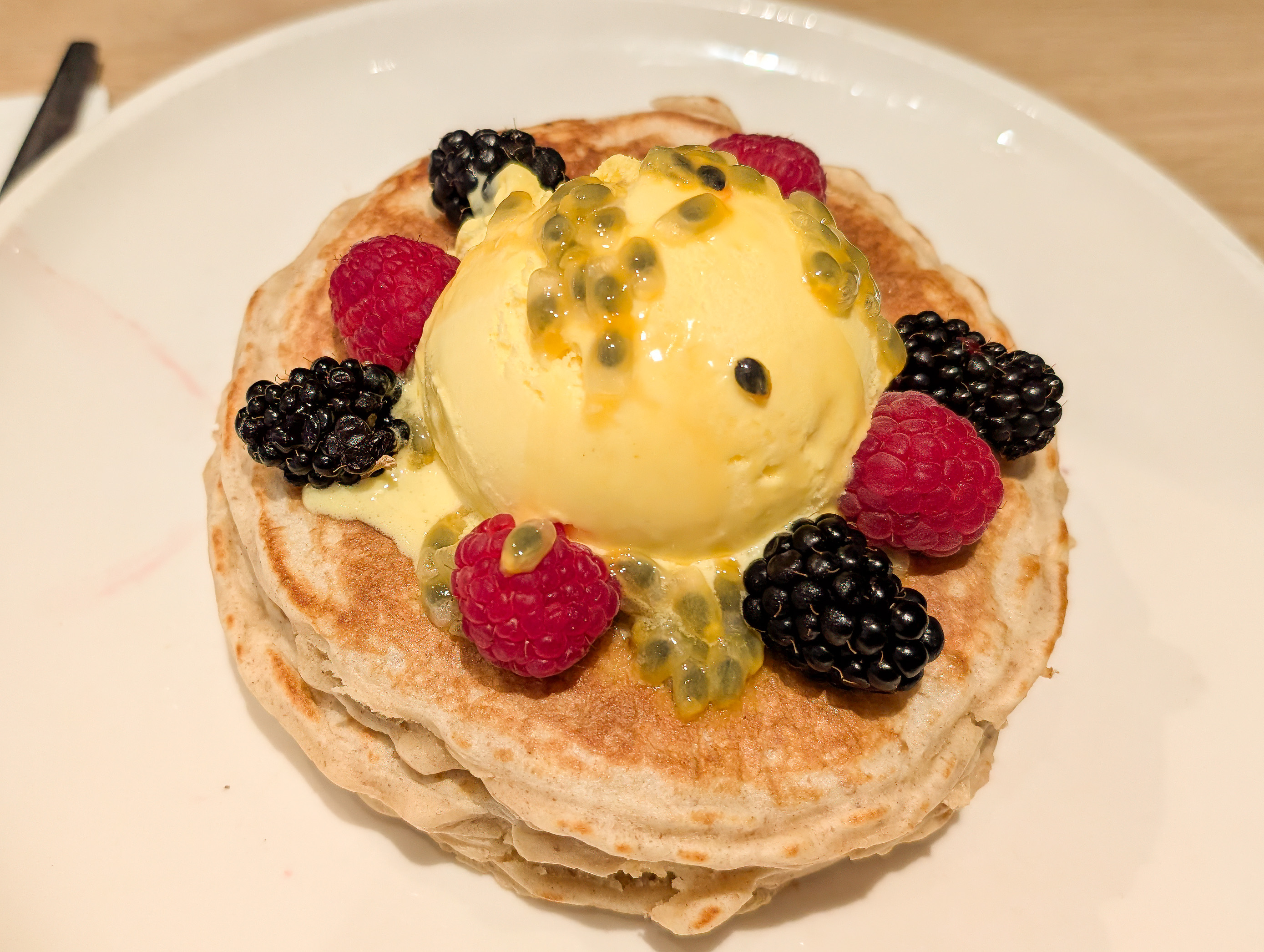
The dessert pancake was a bit weird tasting. The flavors just don’t really work together. Overall, the meal wasn’t bad but just wasn’t something we would normally choose to eat!
I did try to see when we last had pancakes. Nothing came up while searching my own Facebook posts. There were various things that are often referred to in English as pancakes but aren’t the same thing as American pancakes.
Searching Google Photos, well, that turns up lots of circular food items. The most recent actual American pancake that comes up is at the United Polaris Lounge at SFO in 2019 where we had pancakes in the morning while waiting for our flight to Haneda. The next pancakes that appear are in 2018 at a restaurant in Eureka, California at lunch time. Why were we having pancakes? What was the restaurant? Unfortunately, whatever was there seems to have gone out of business.
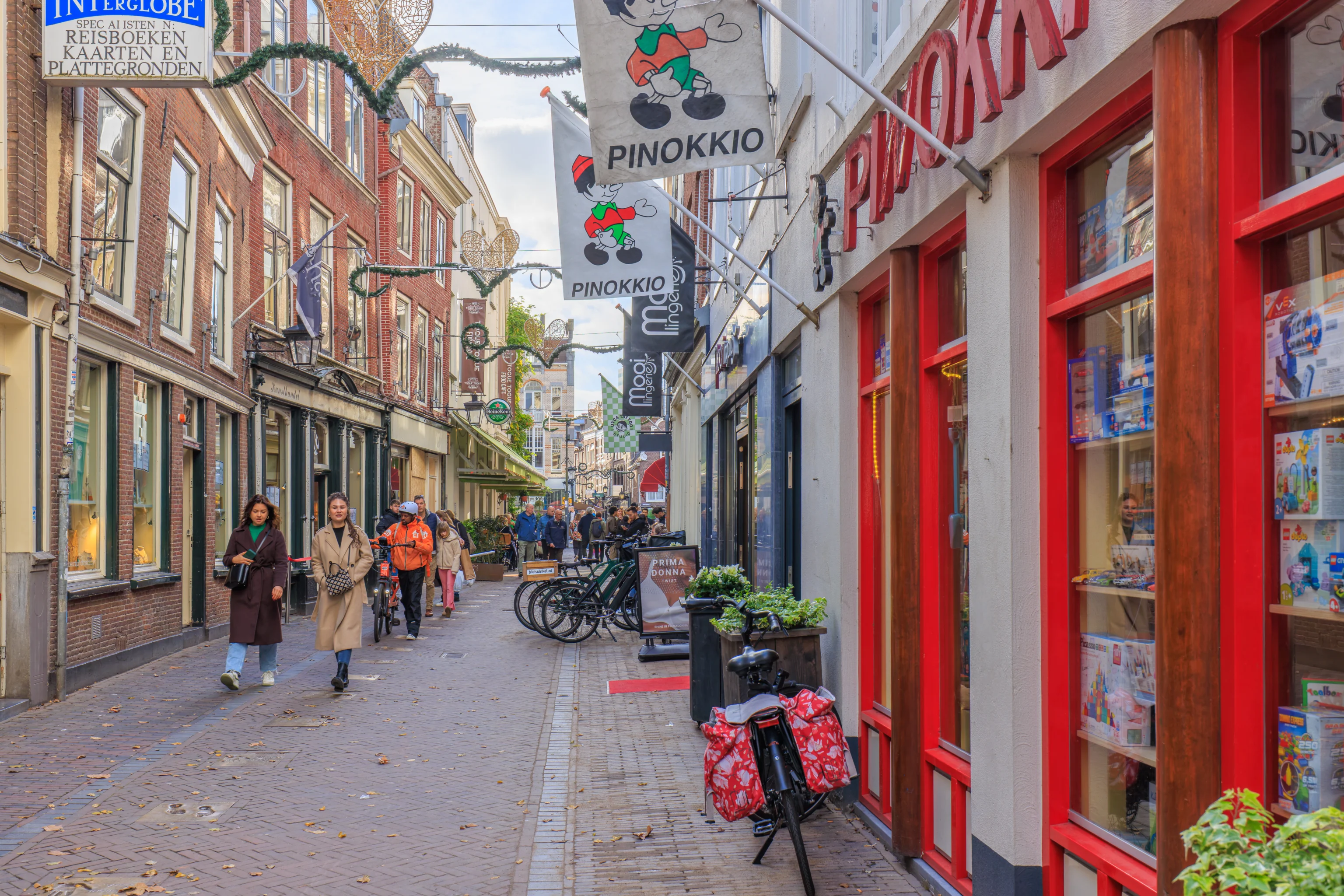
After lunch, we headed out to actually visit the cathedral.
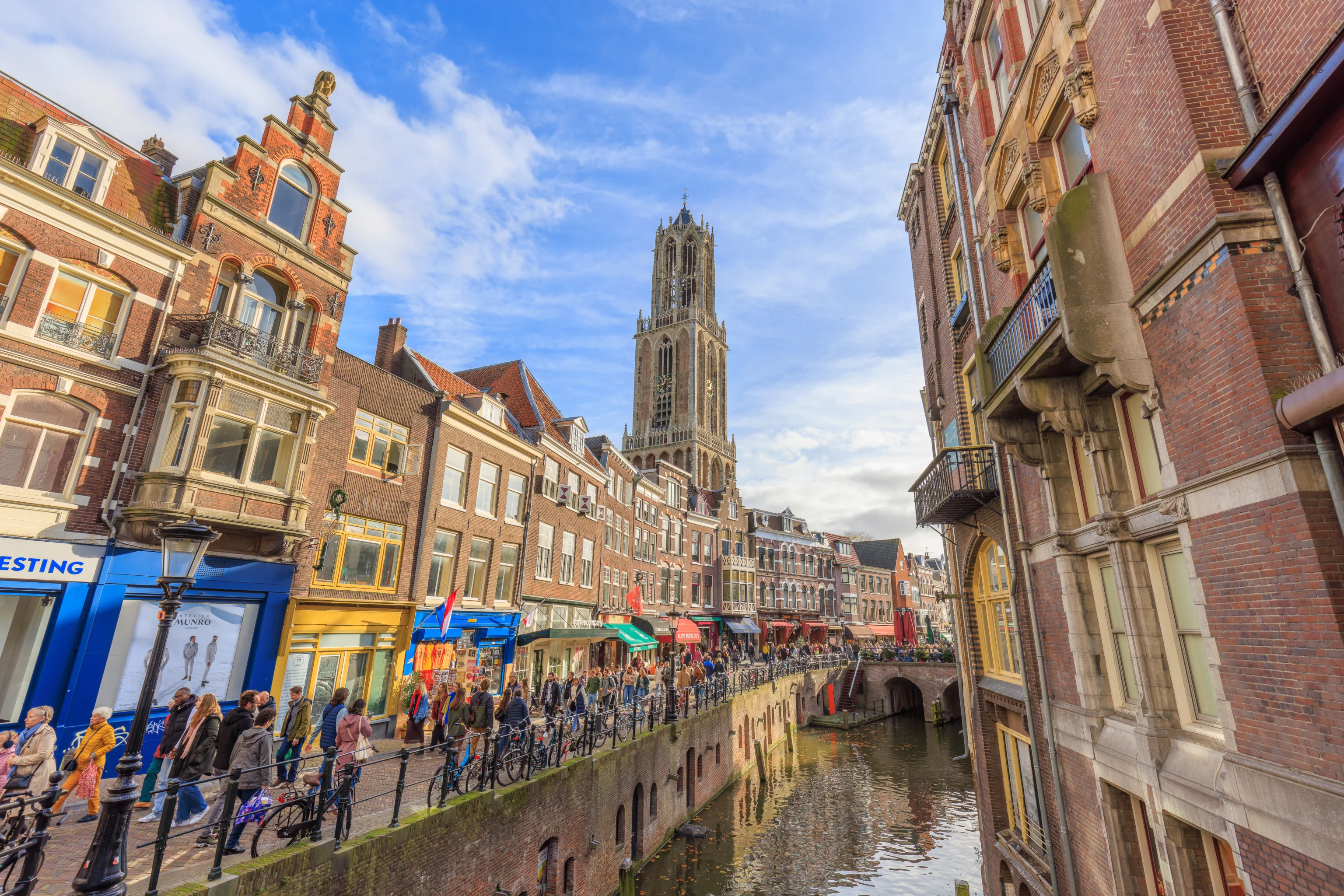
There’s the Dom Tower again! We were here before and took nearly the same photo.
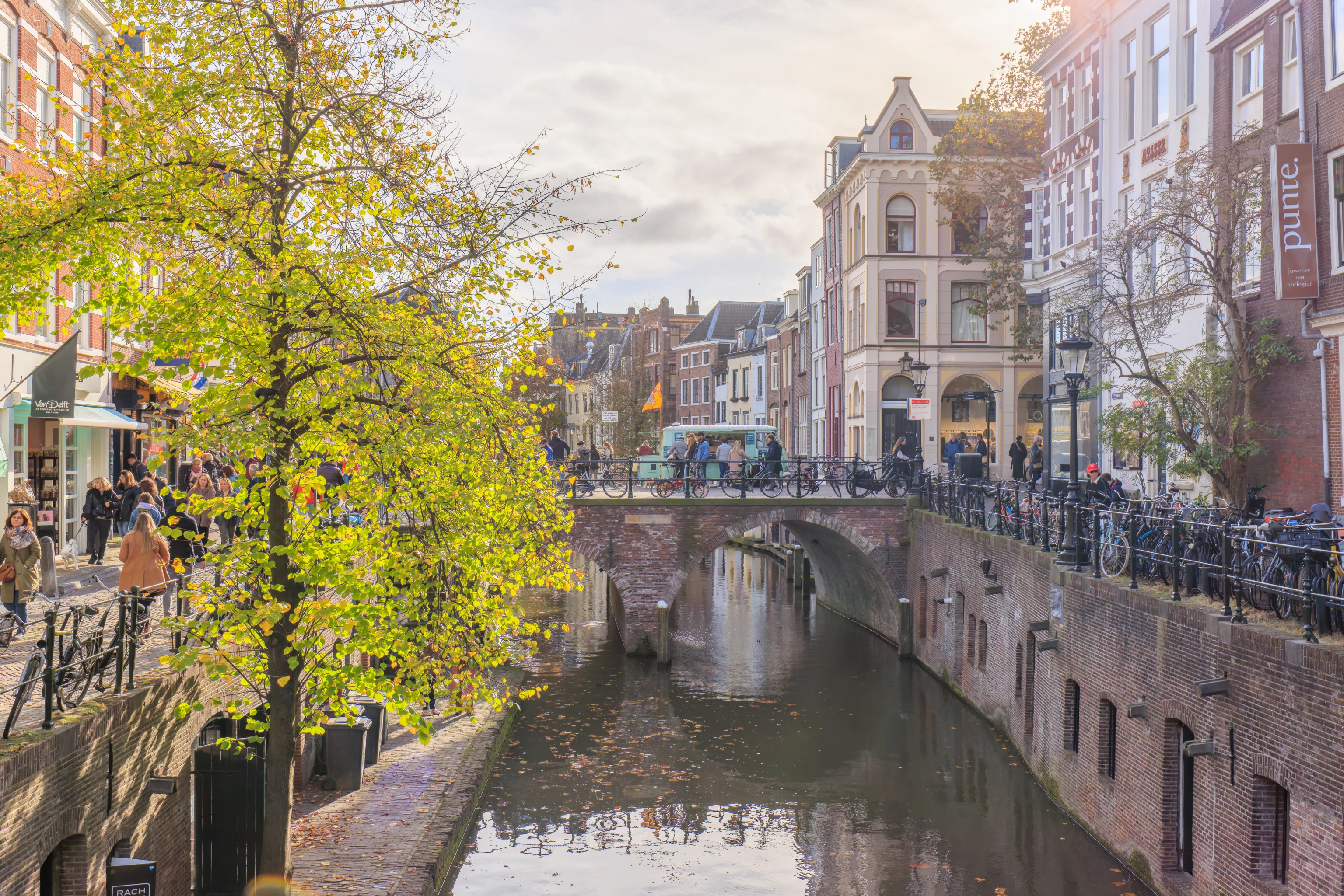
Just a random canal view as we walked closer to the tower.
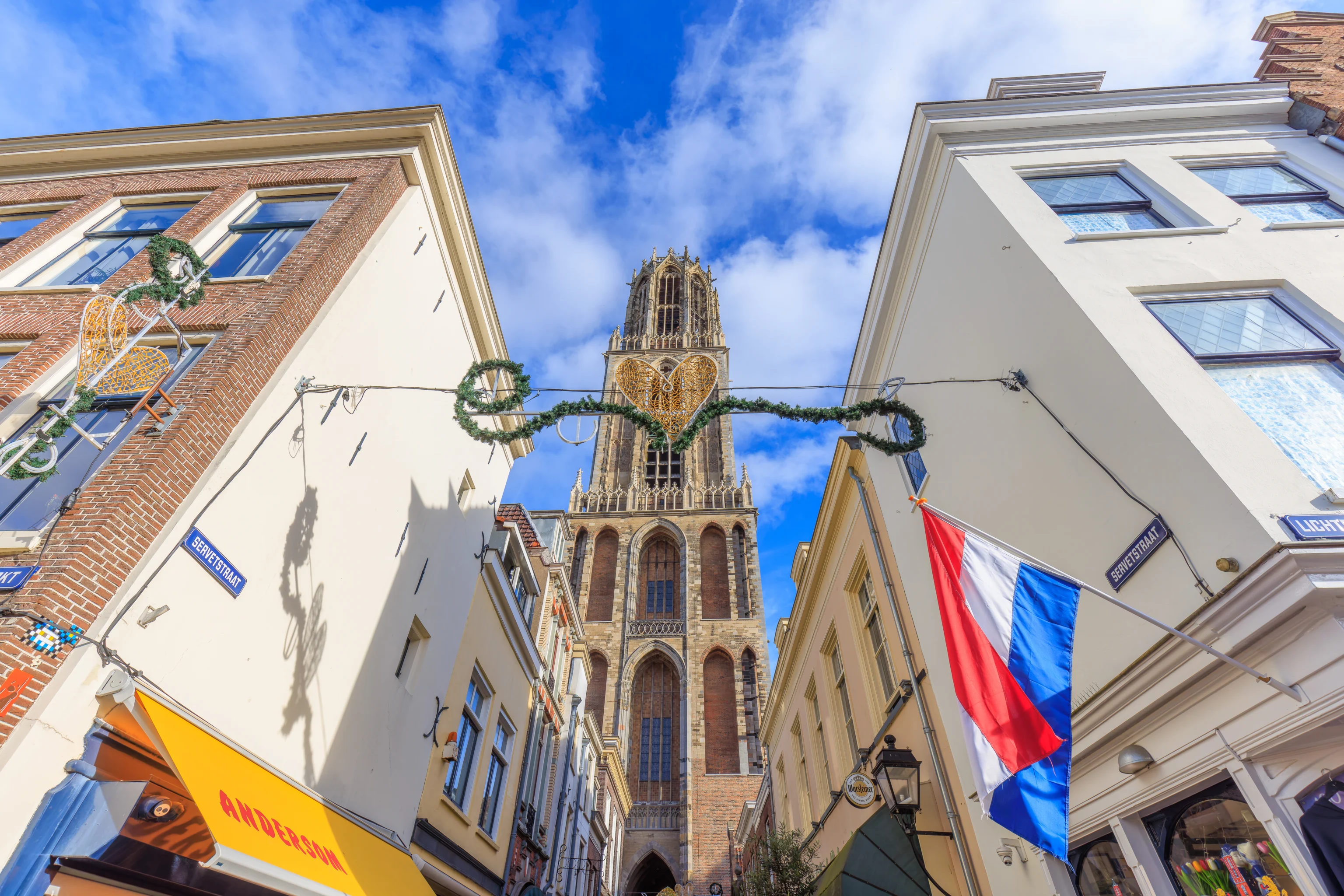
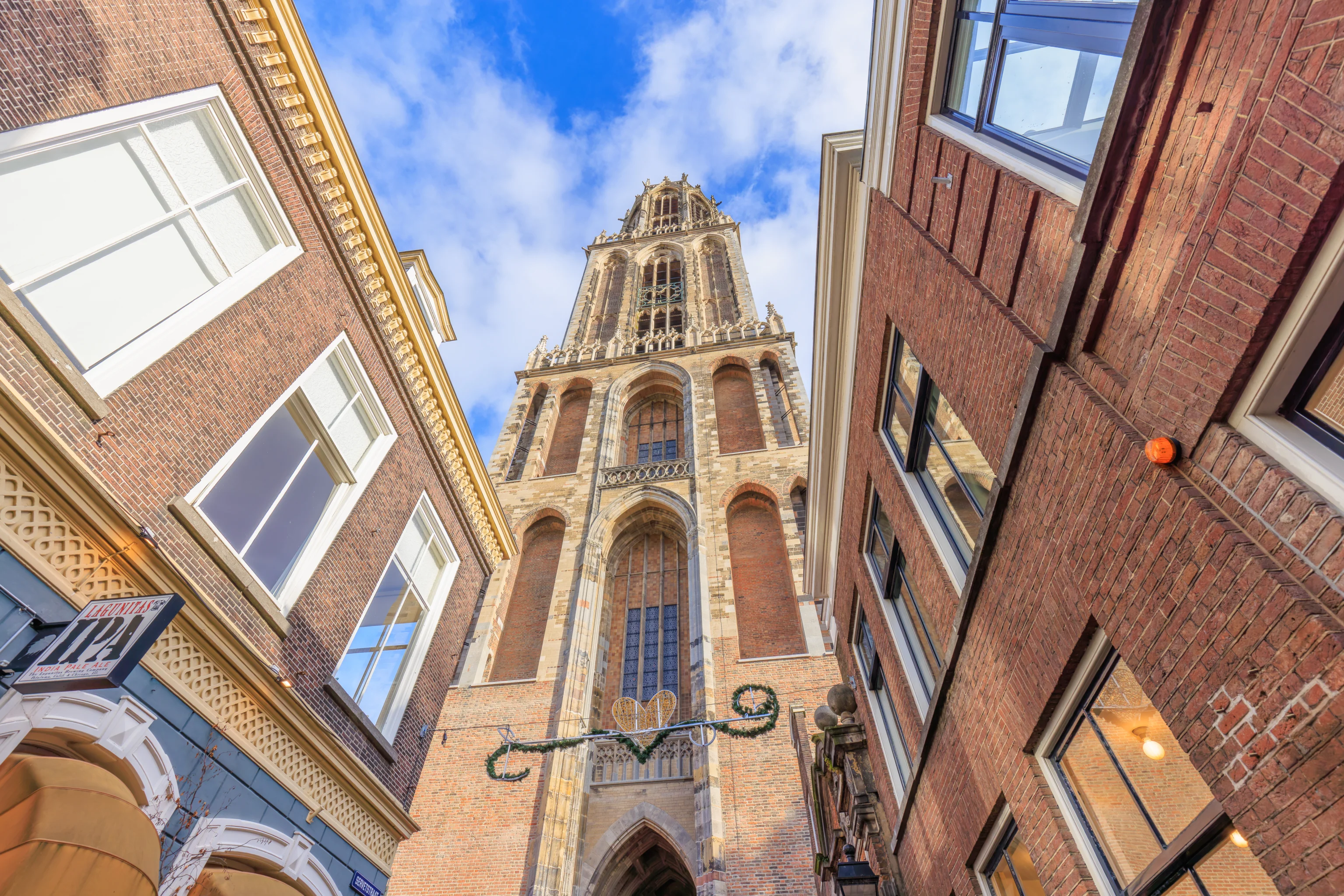
This is the way!
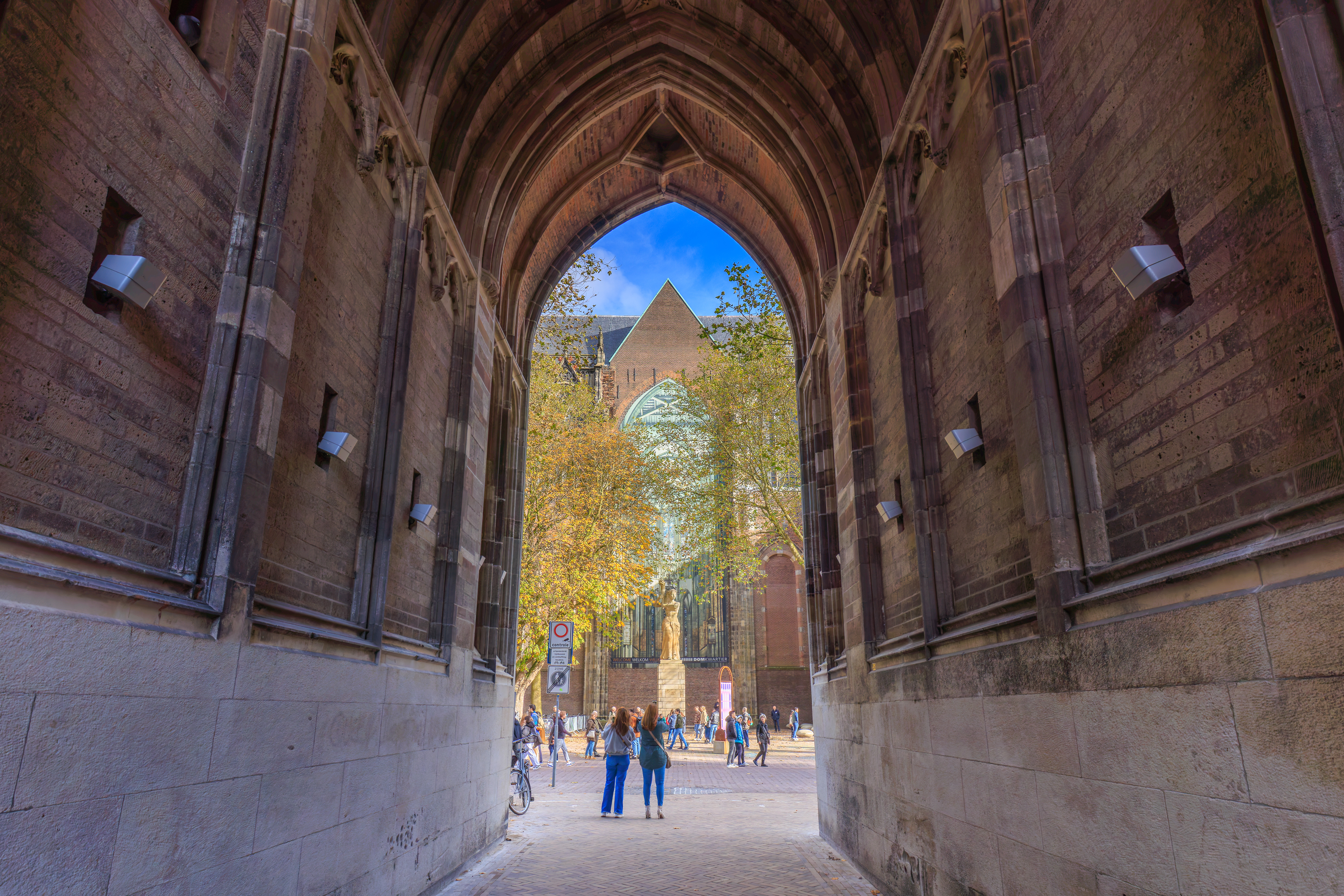
After stepping through the tower, there is a plaza beyond with the cathedral at the other end. This is unusual.
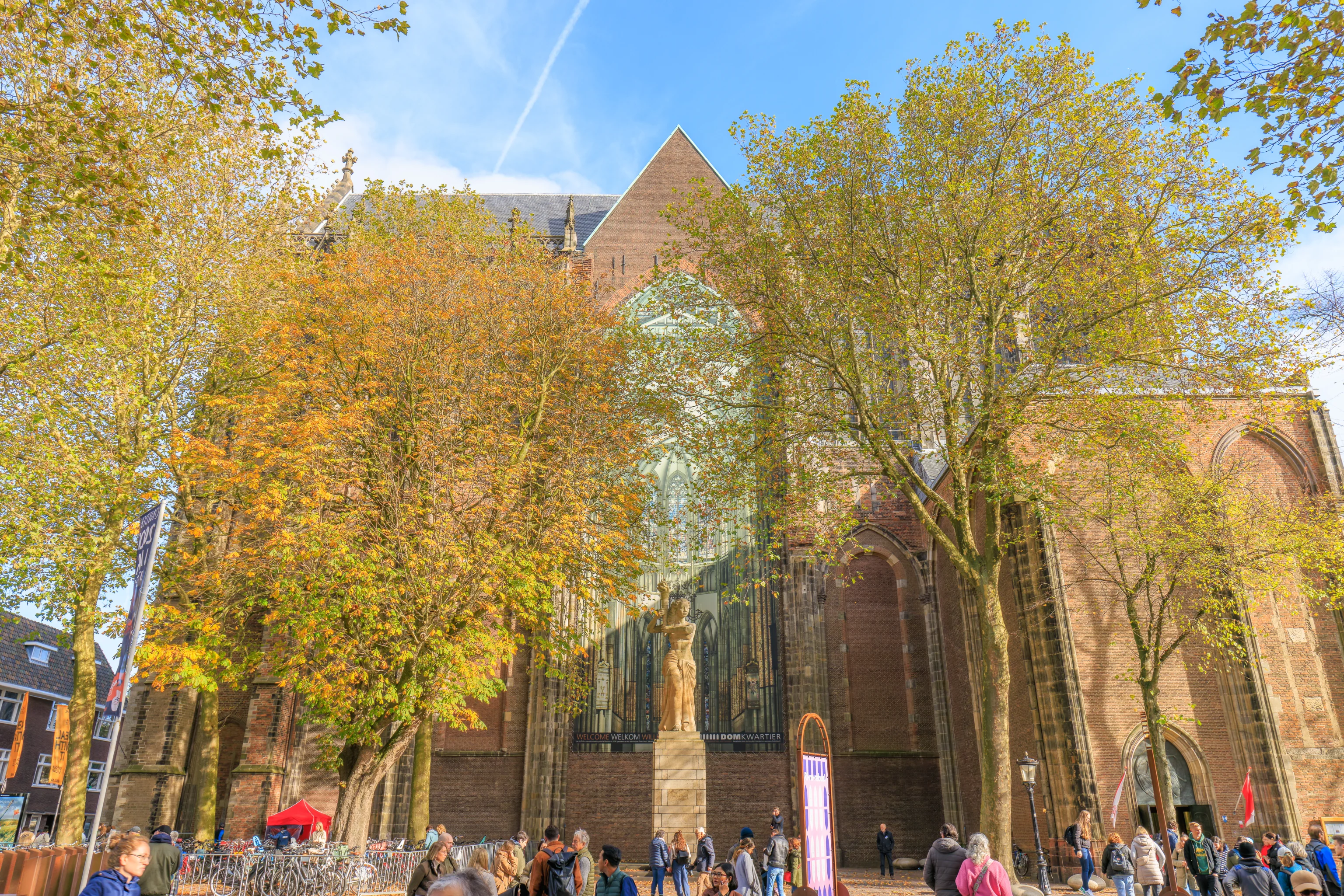
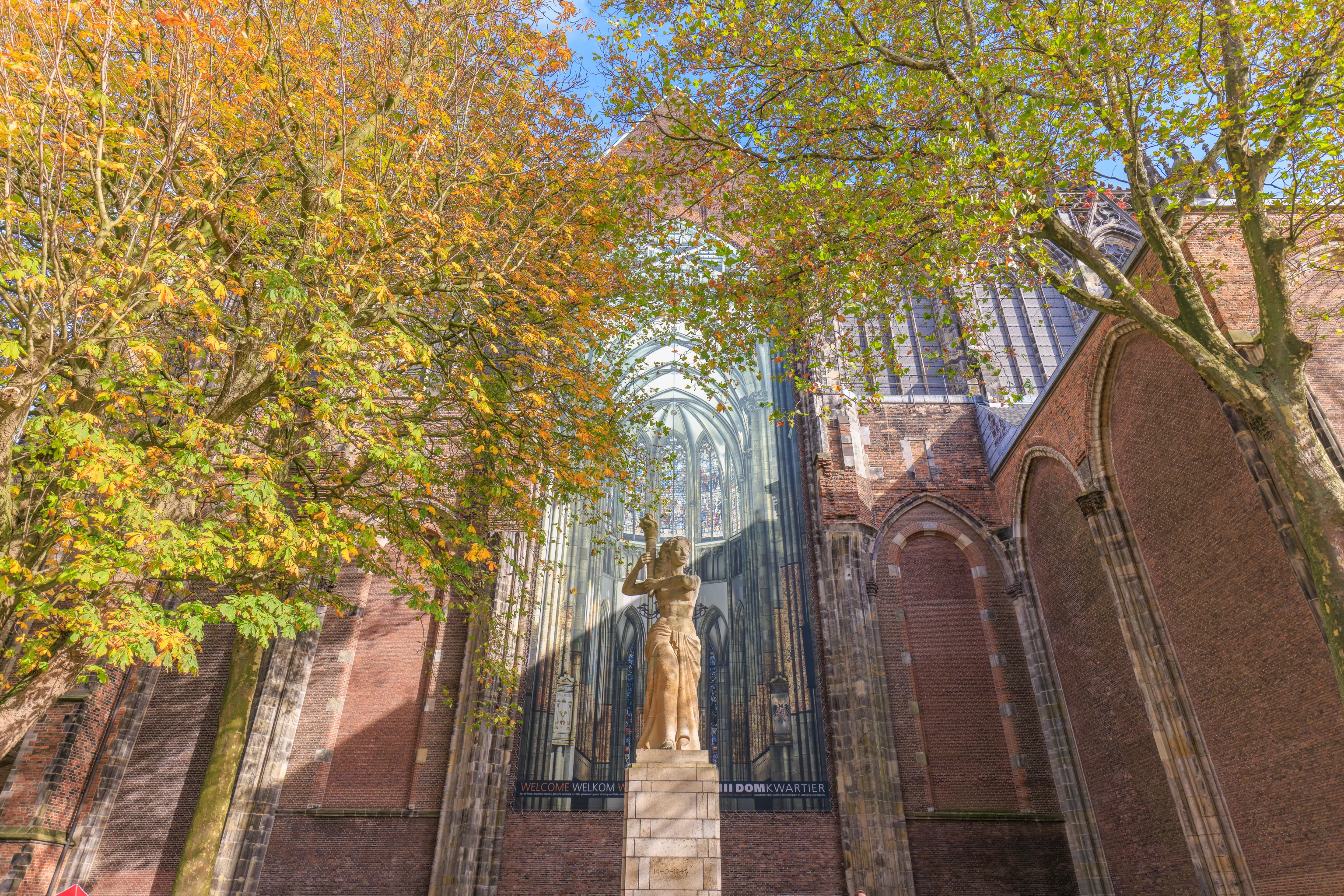
There is actually a painting on the cathedral behind the statue in front. Also unusual!
The statue is the Verzetsmonument (Resistance Monument) for the Dutch resistance during World War II. It was created by Dutch sculptor Corinne Franzén-Heslenfeld in 1949 on May 4th which is Remembrance of the Dead day in the Netherlands. The next day, May 5th, is Liberation Day.
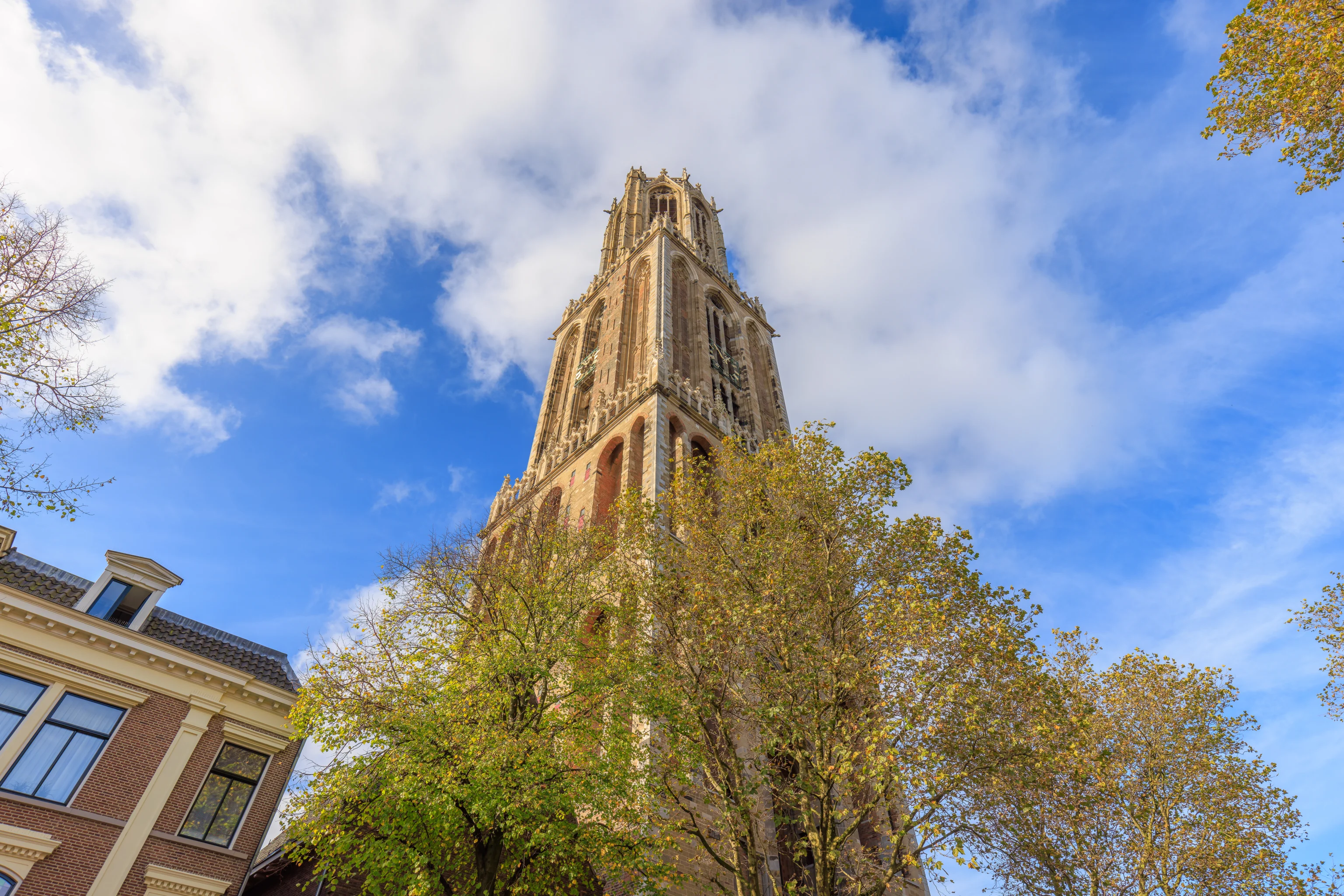
The very tall Dom Tower from below.
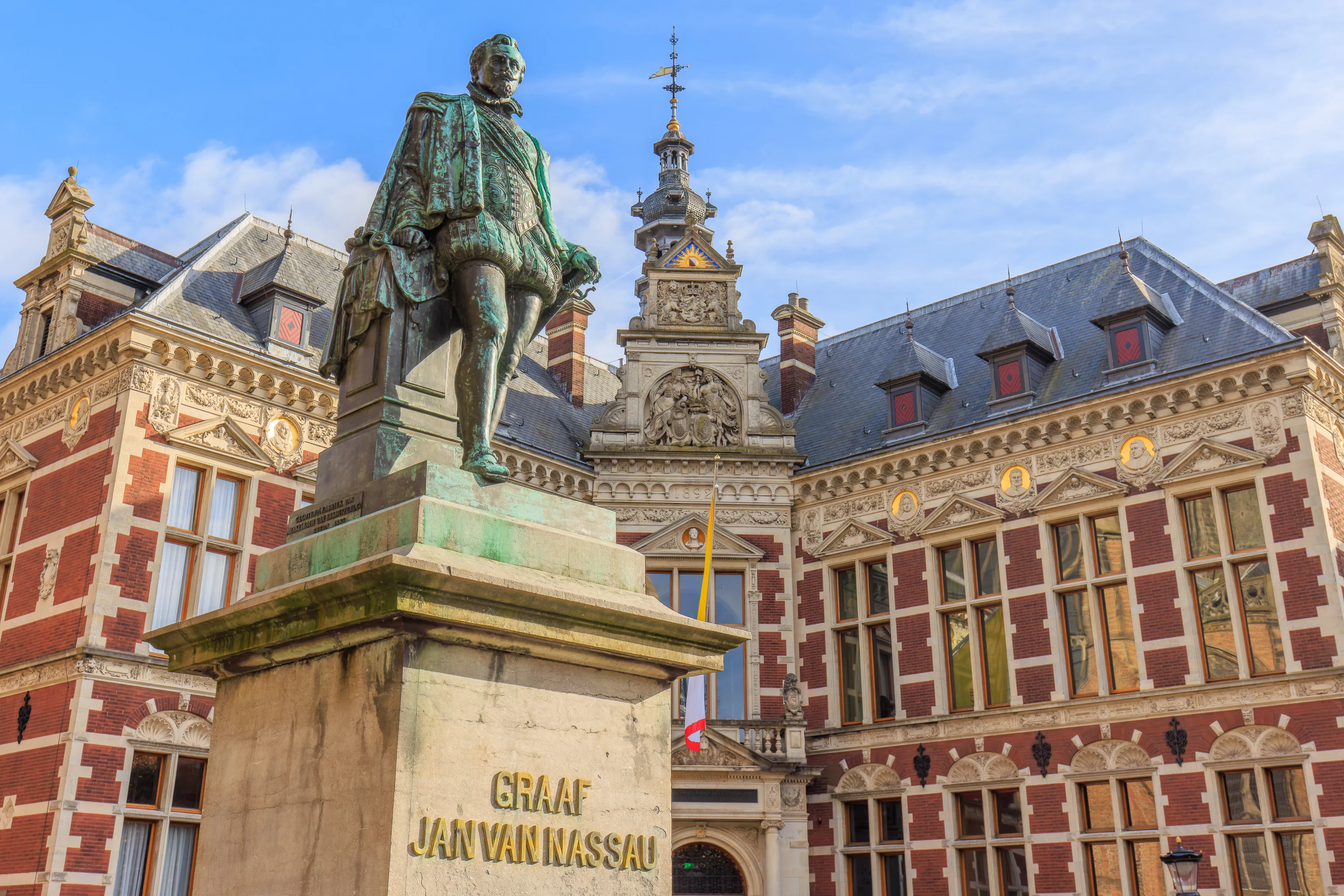
This statue is of Count Jan van Nassau. There have been various Jan van Nassaus, this statue is of Jan VI.
The name Nassau is familiar due to Nassau County on Long Island, New York. The county is named after the House of Nassau. The current King is of the House of Orange-Nassau. So, no actual relation to this specific guy.
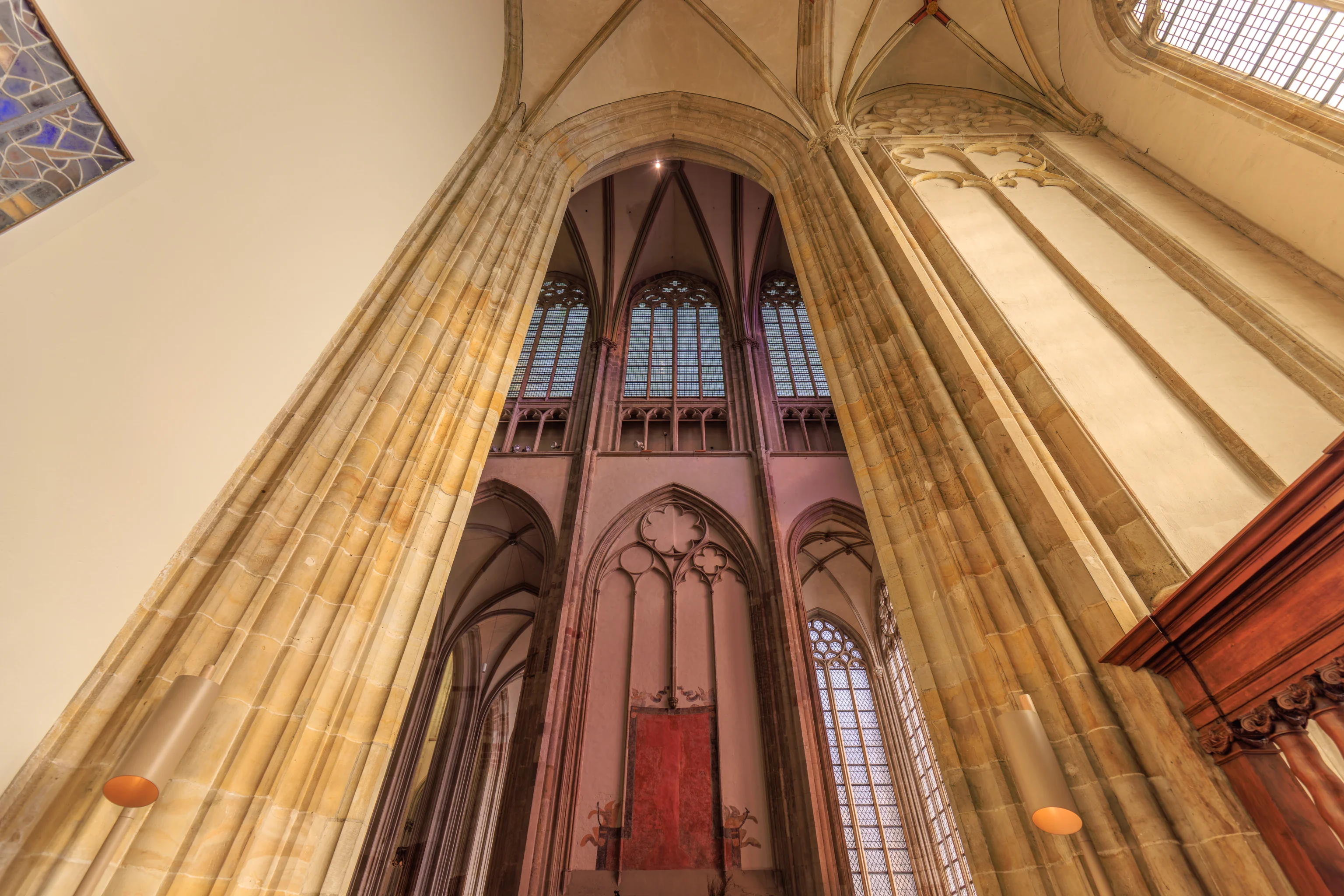
We entered the cathedral via a door on the right side of the building.
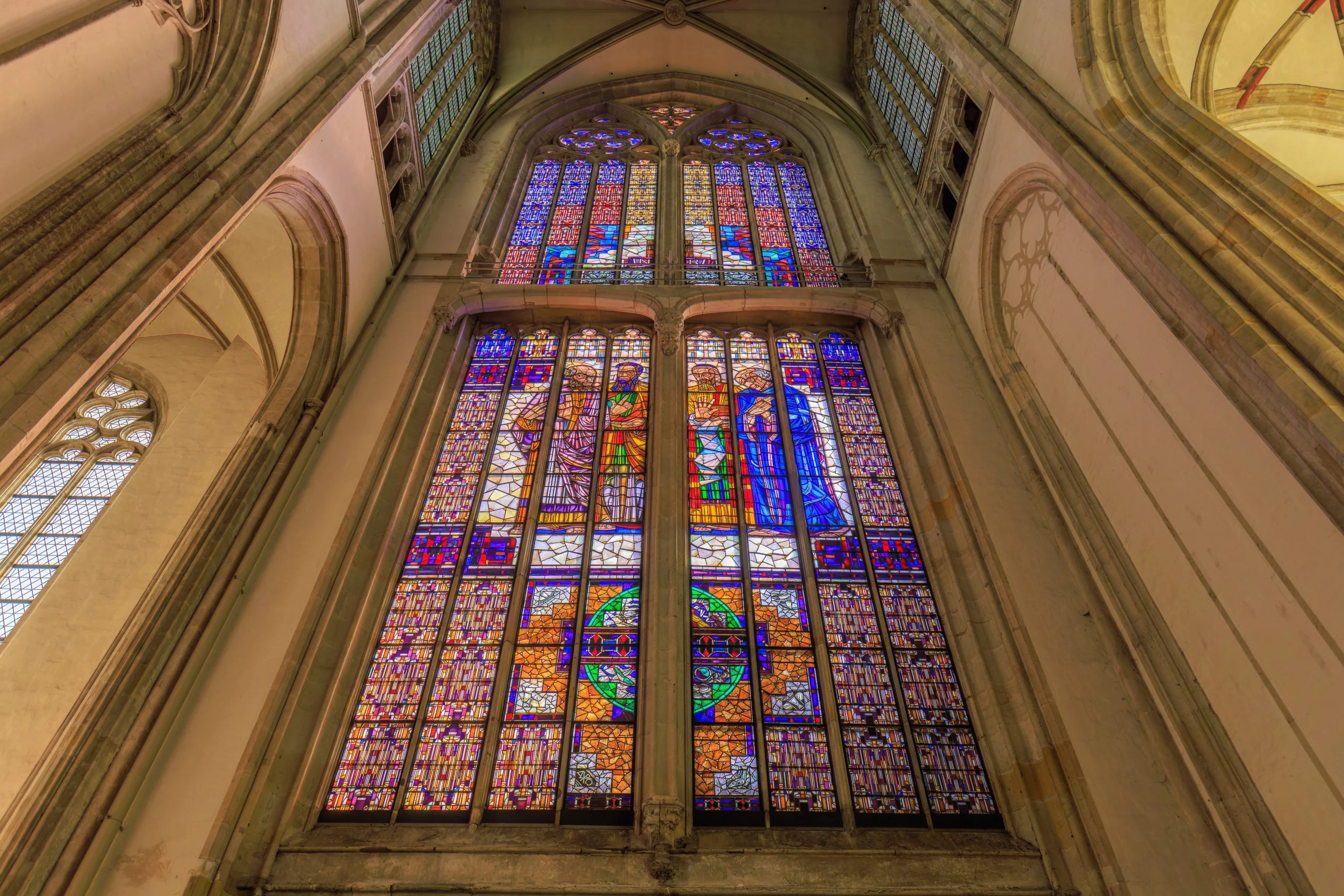
Of course, the cathedral has stained glass windows.
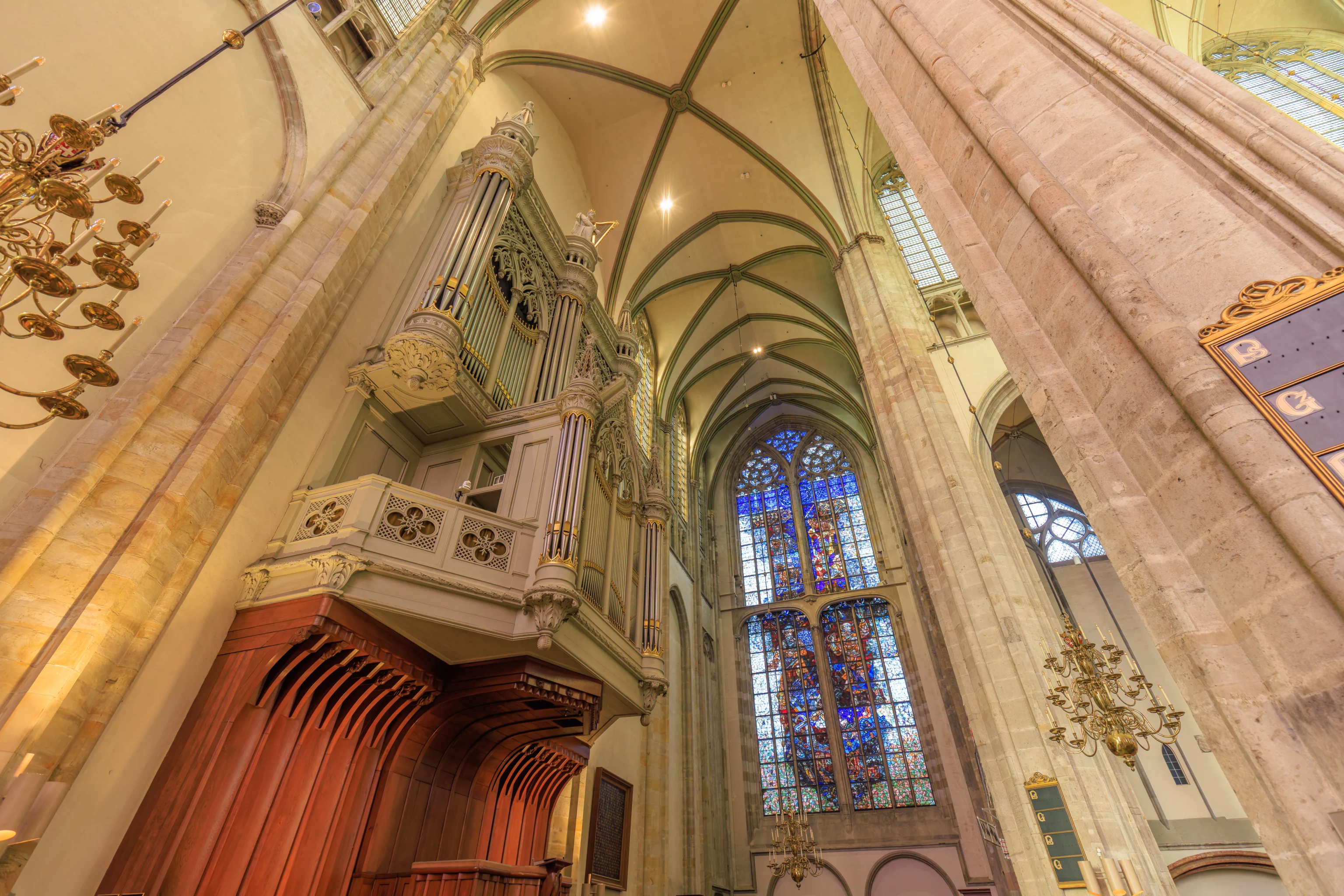
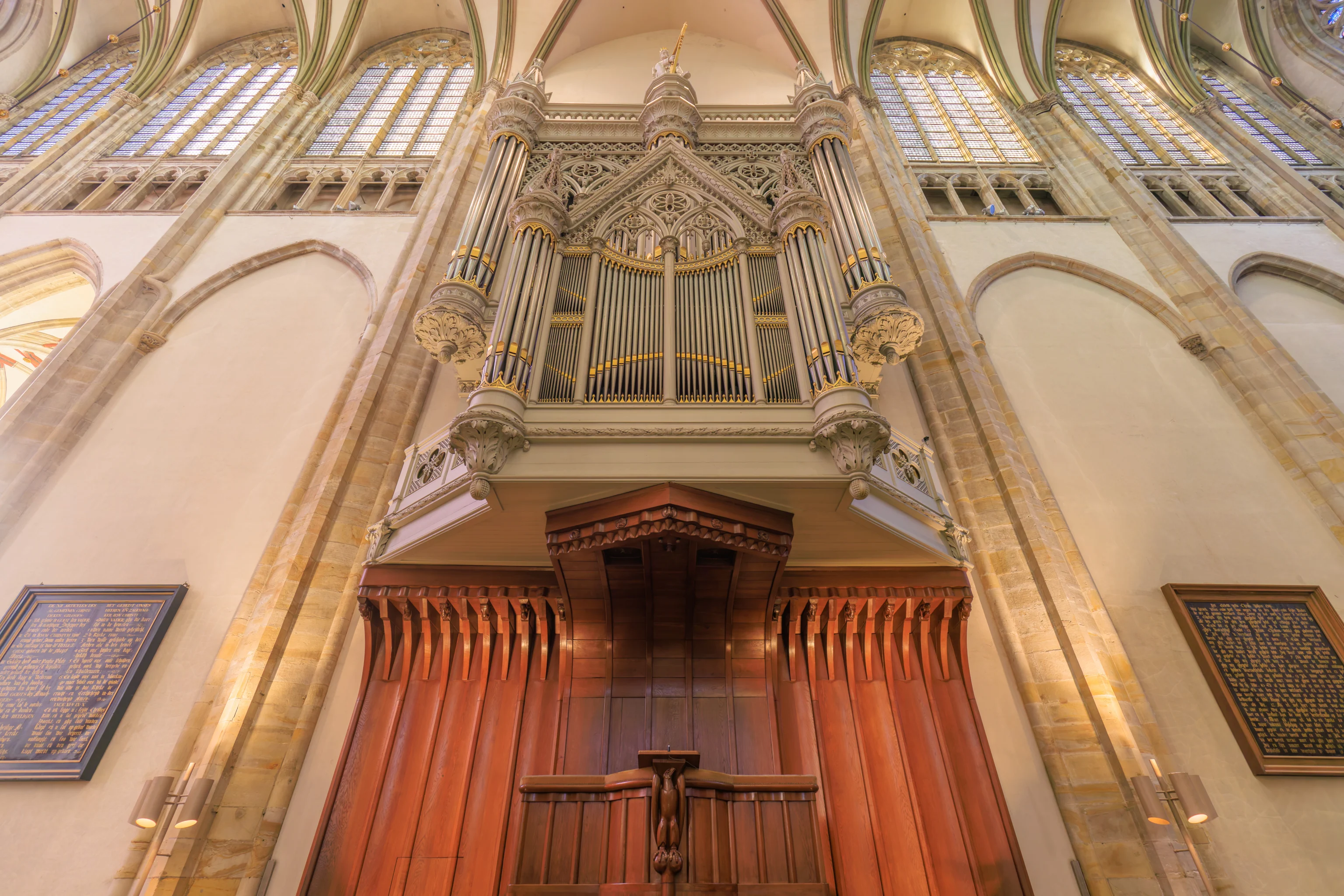
There is a pretty small organ, at least compared to the churches where they have huge ones.
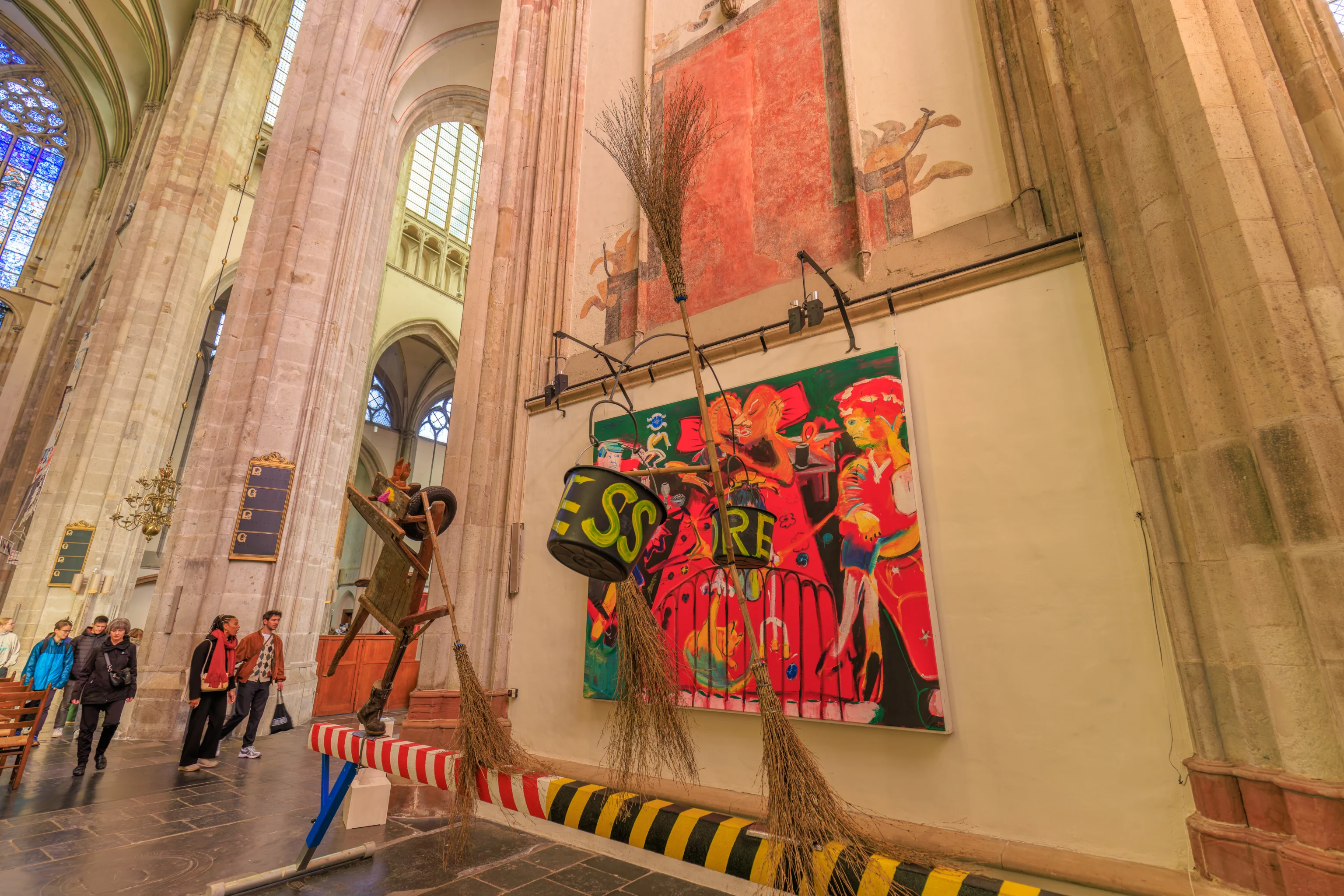
The church also contained some weird art, as explained on its Welcome page:
The church regularly offers well known and lesser known contemporary artists a chance to exhibit their work.2
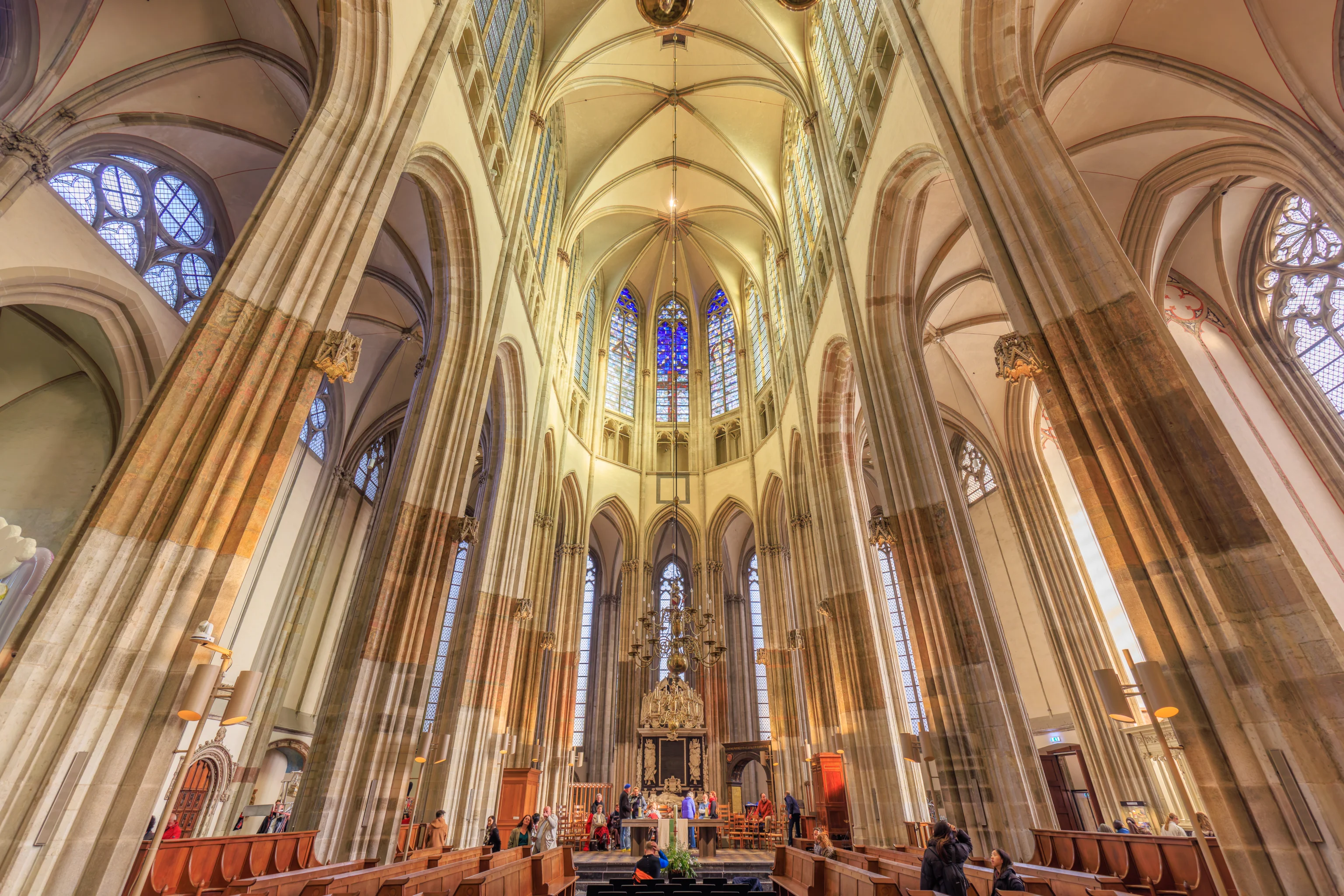
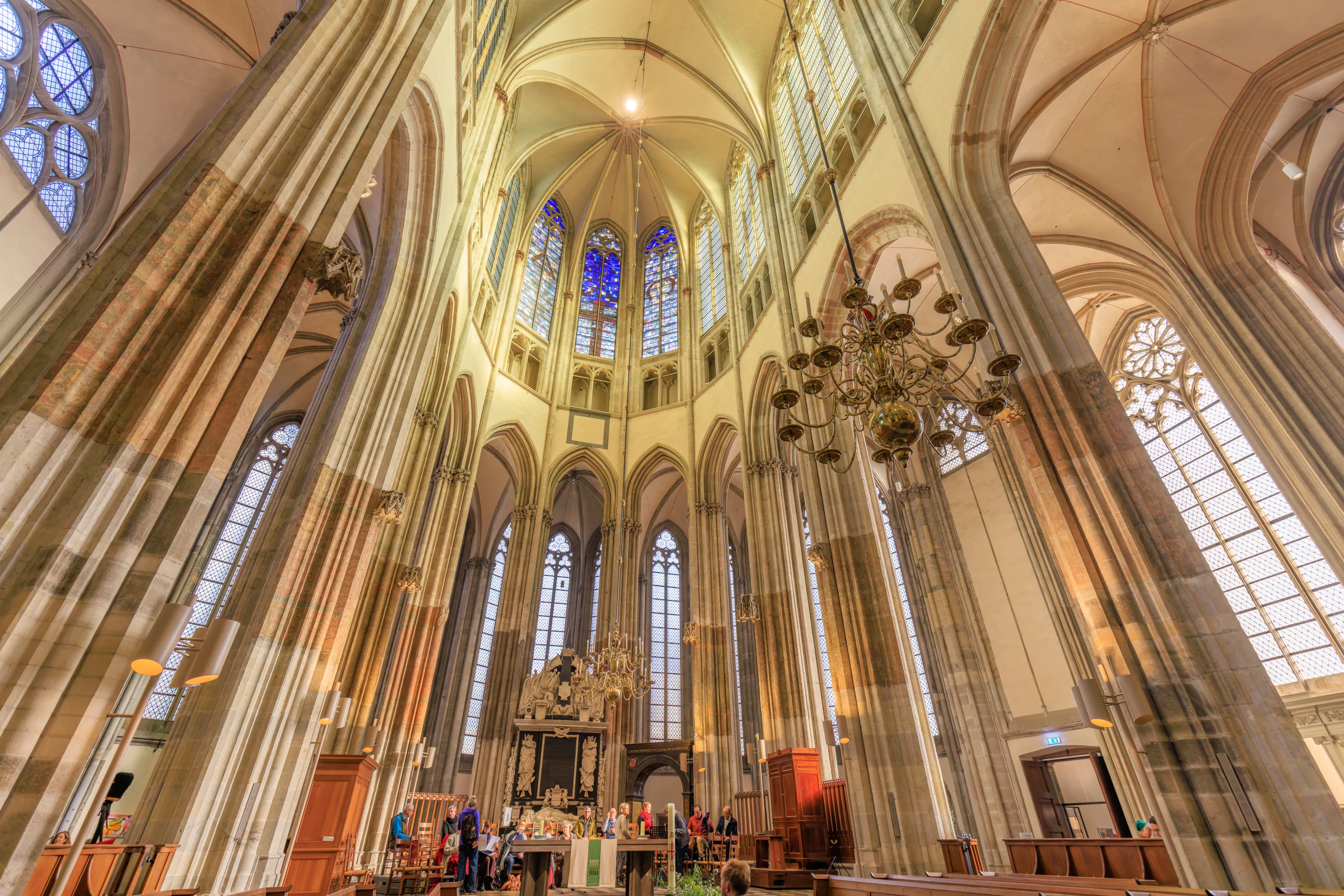
The cathedral is extremely compact, as if the nave was missing and most of the space was taken up by the quire. That’s because the missing part of the church was destroyed by a storm and never rebuilt:
During the great storm of 1674, the nave of the church was literally blown away. The choir and the tower remained standing. The nave was never rebuilt and thus the Domkerk is now only half a church.3
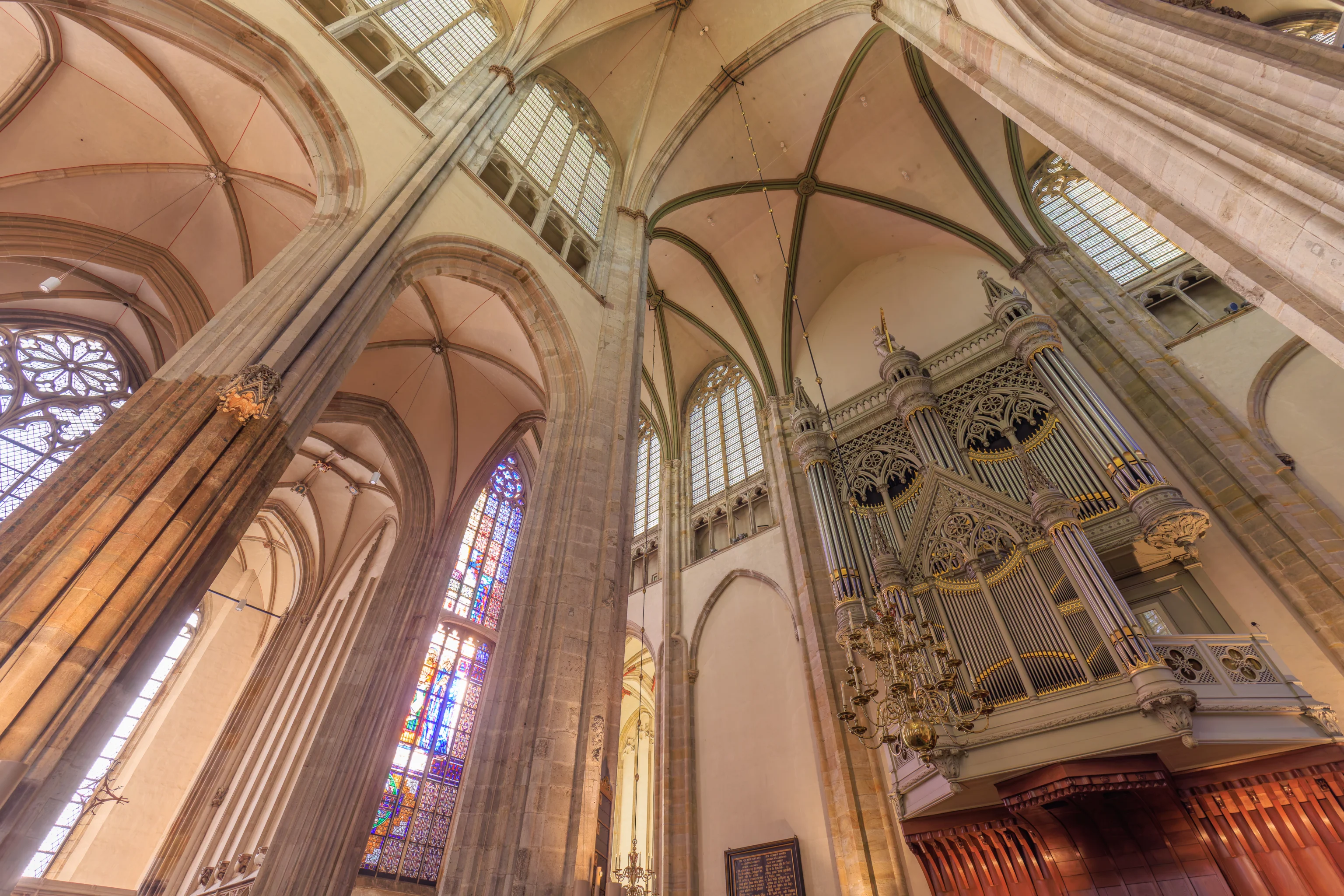
The organ is basically right by the quire instead of the standard location on the far end of the building.
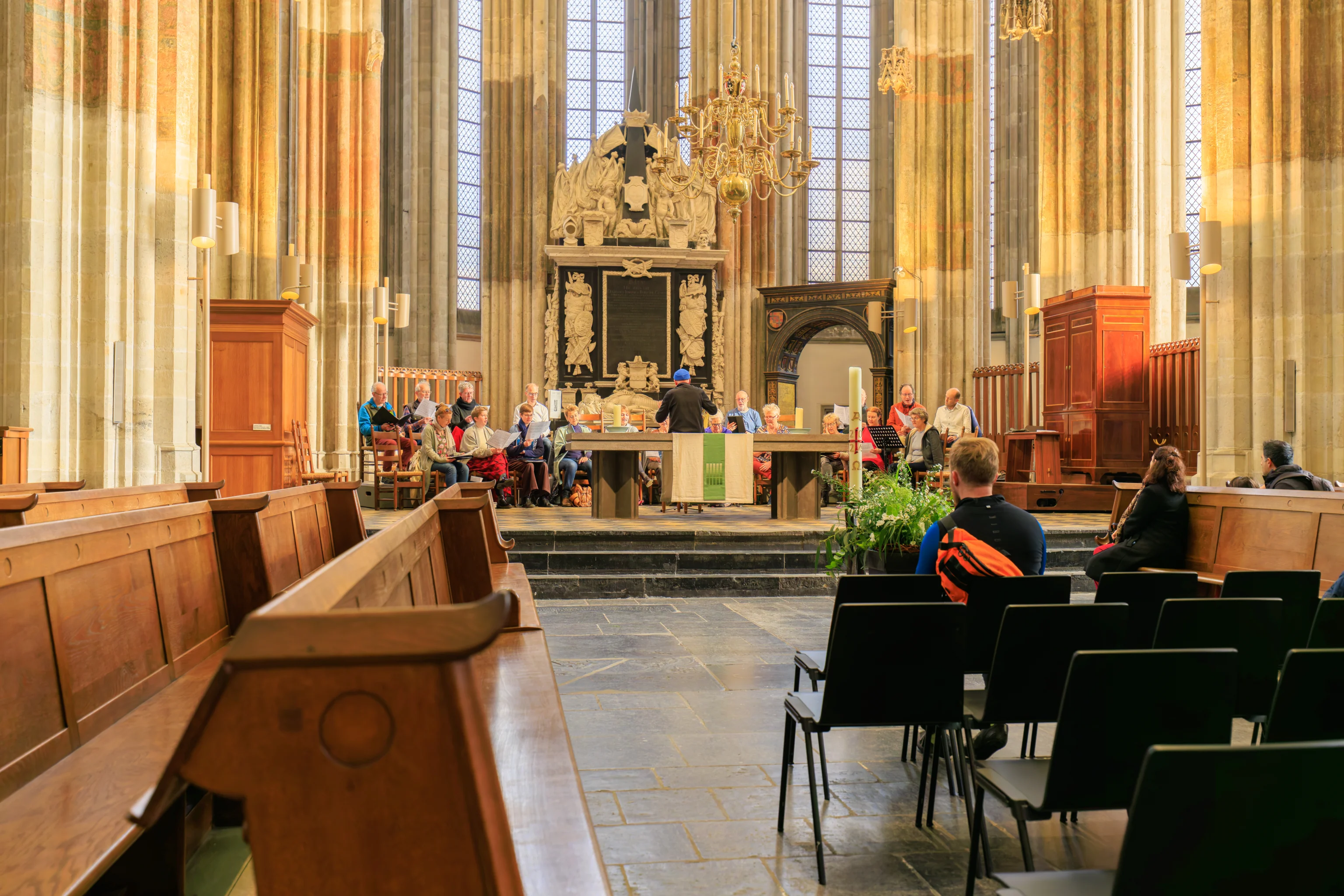
Speaking of the quire, it looked like the was going to be some singing, possibly a practice session.
They’re pretty good!
We listened to them for a little bit before continuing to walk through the ambulatory – the area to the side at the back of the church and around the quire.
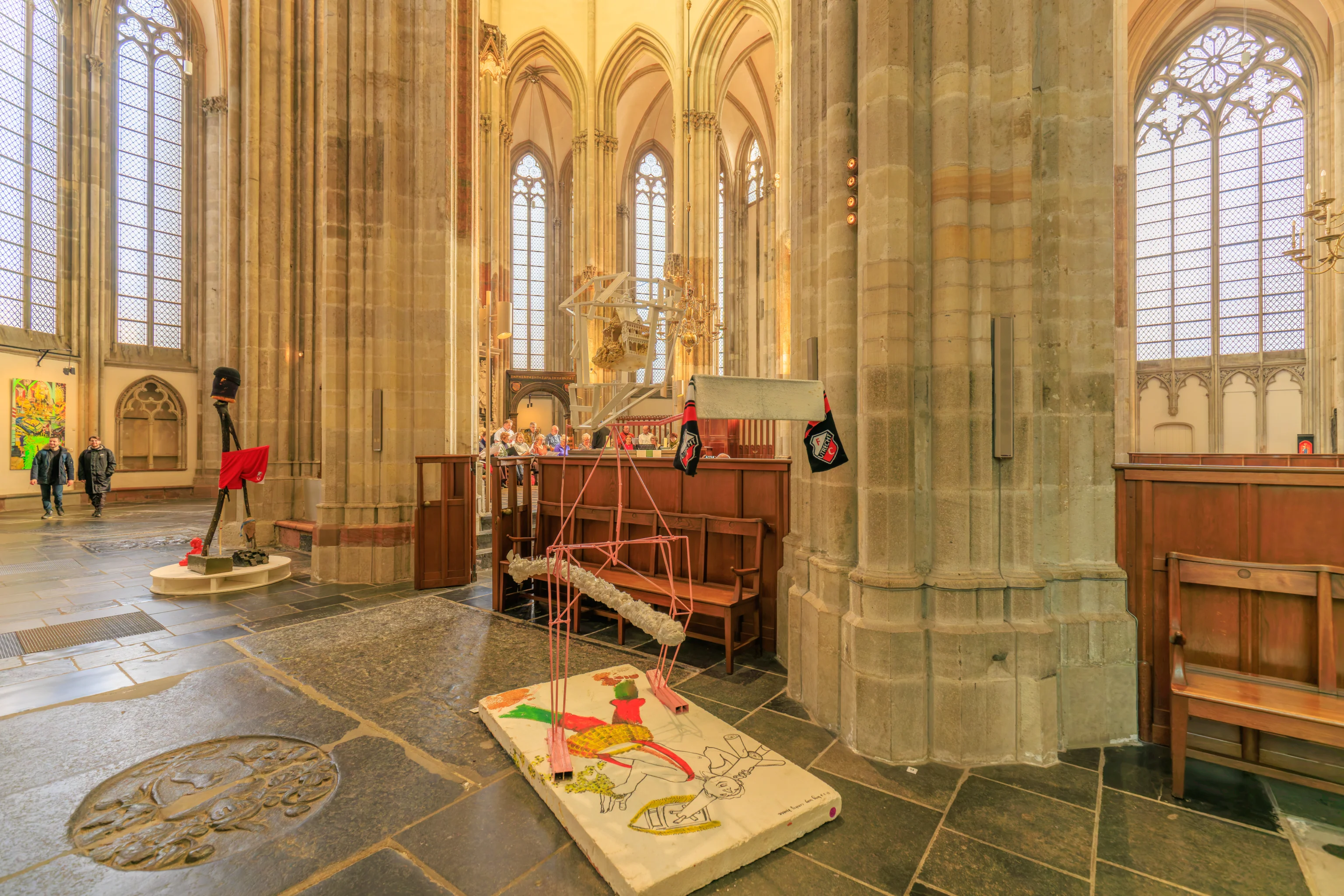
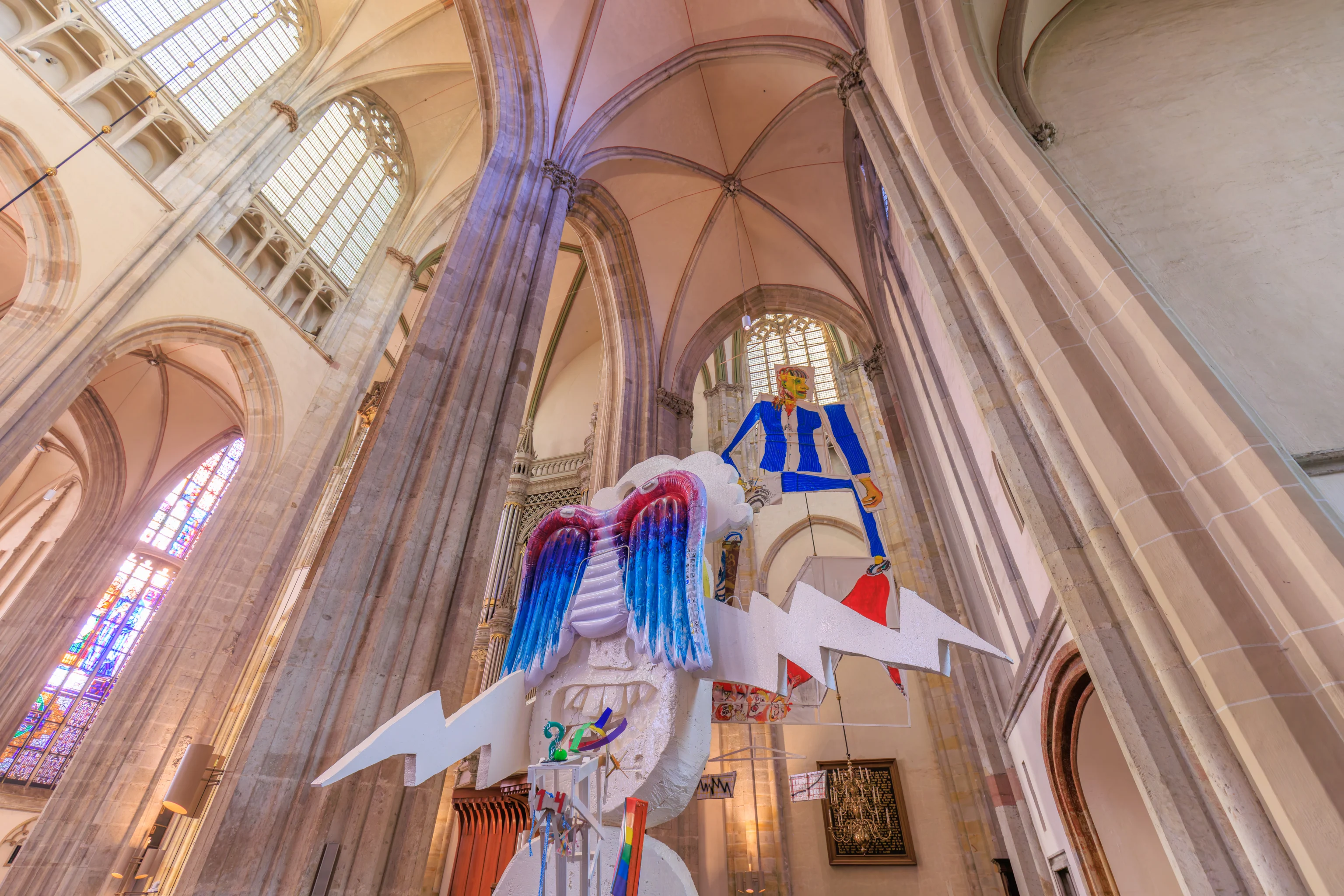
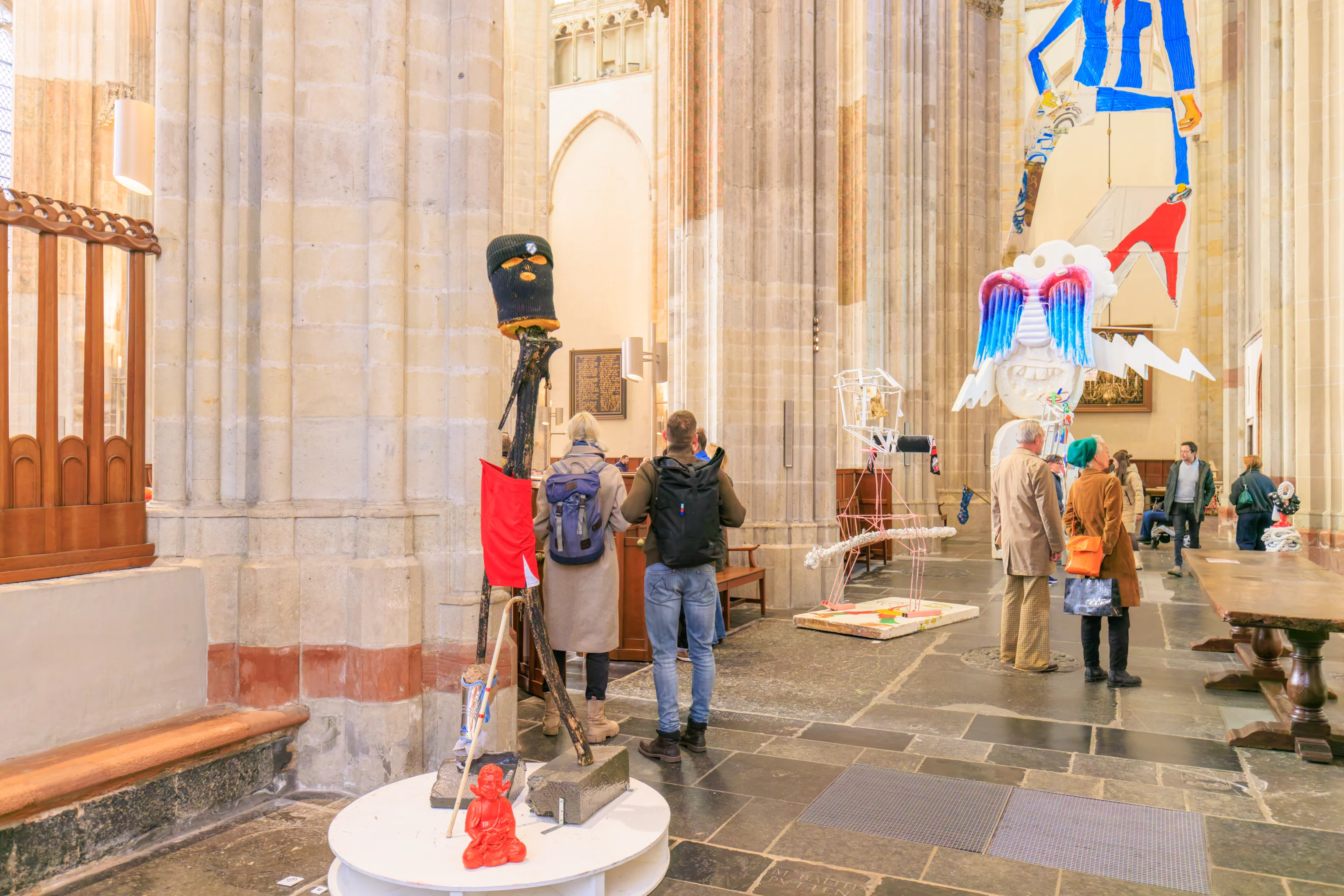
We’re not really sure what to think of the art in here!
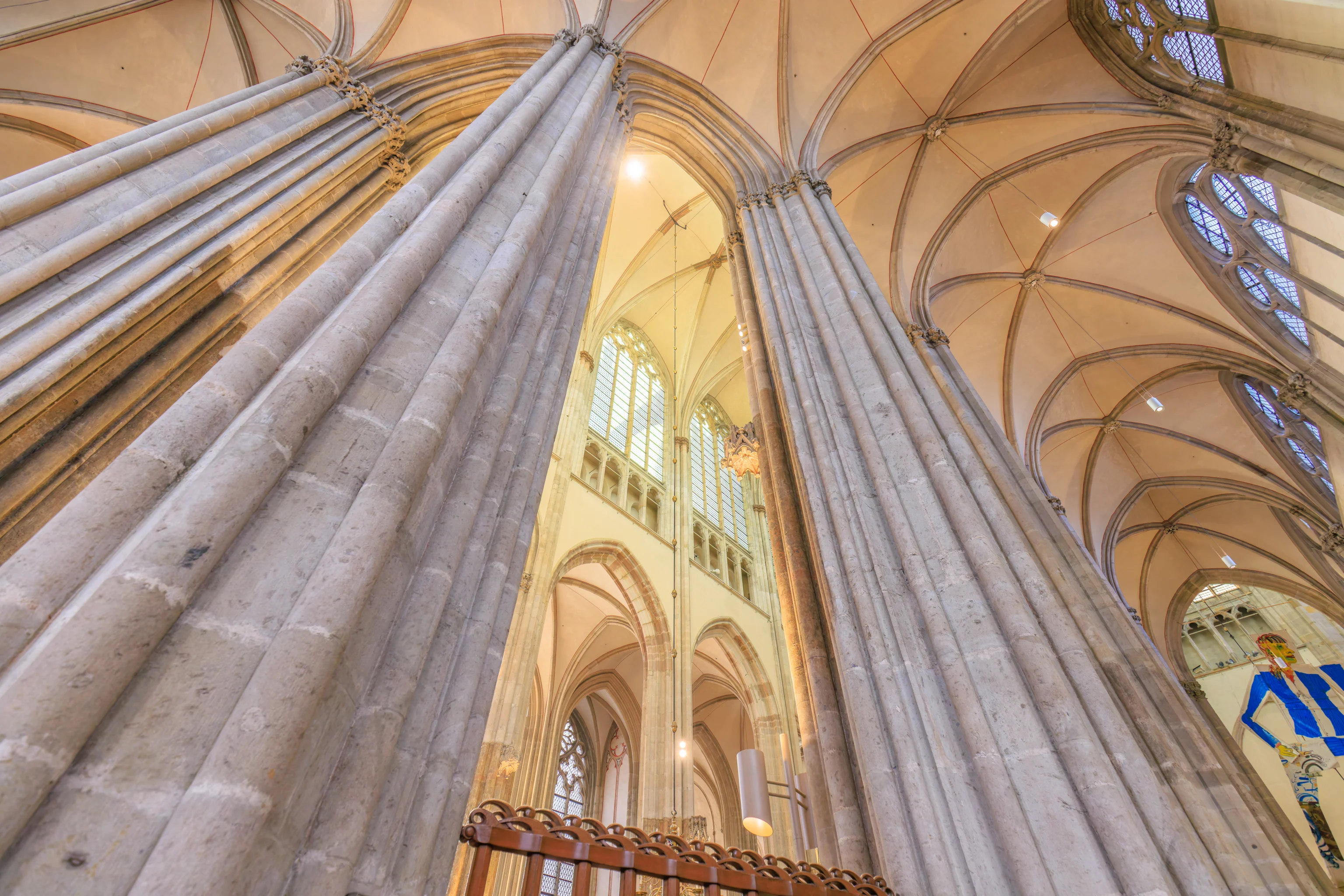
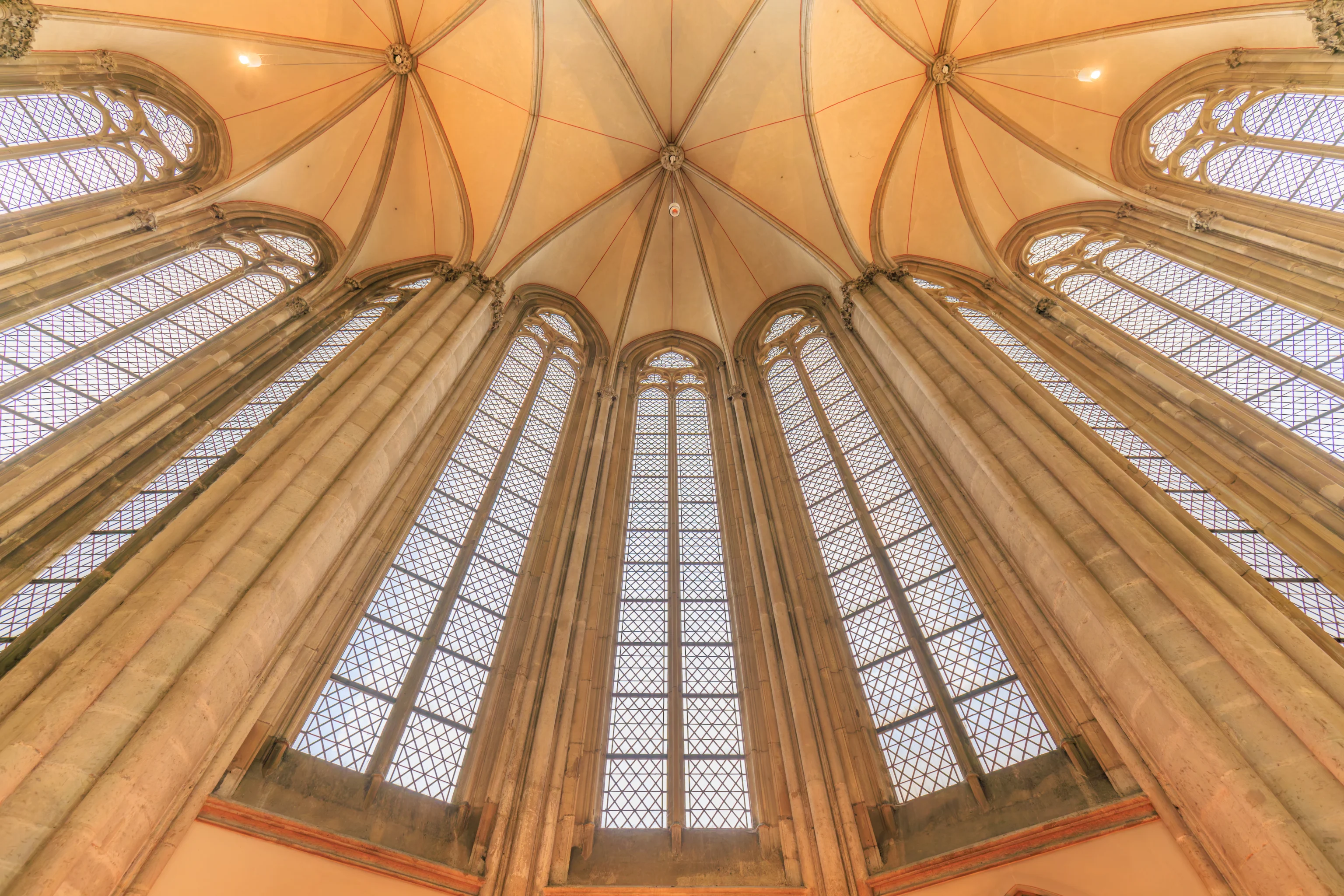
Other than the contemporary art, this is a pretty plainly decorated cathedral.
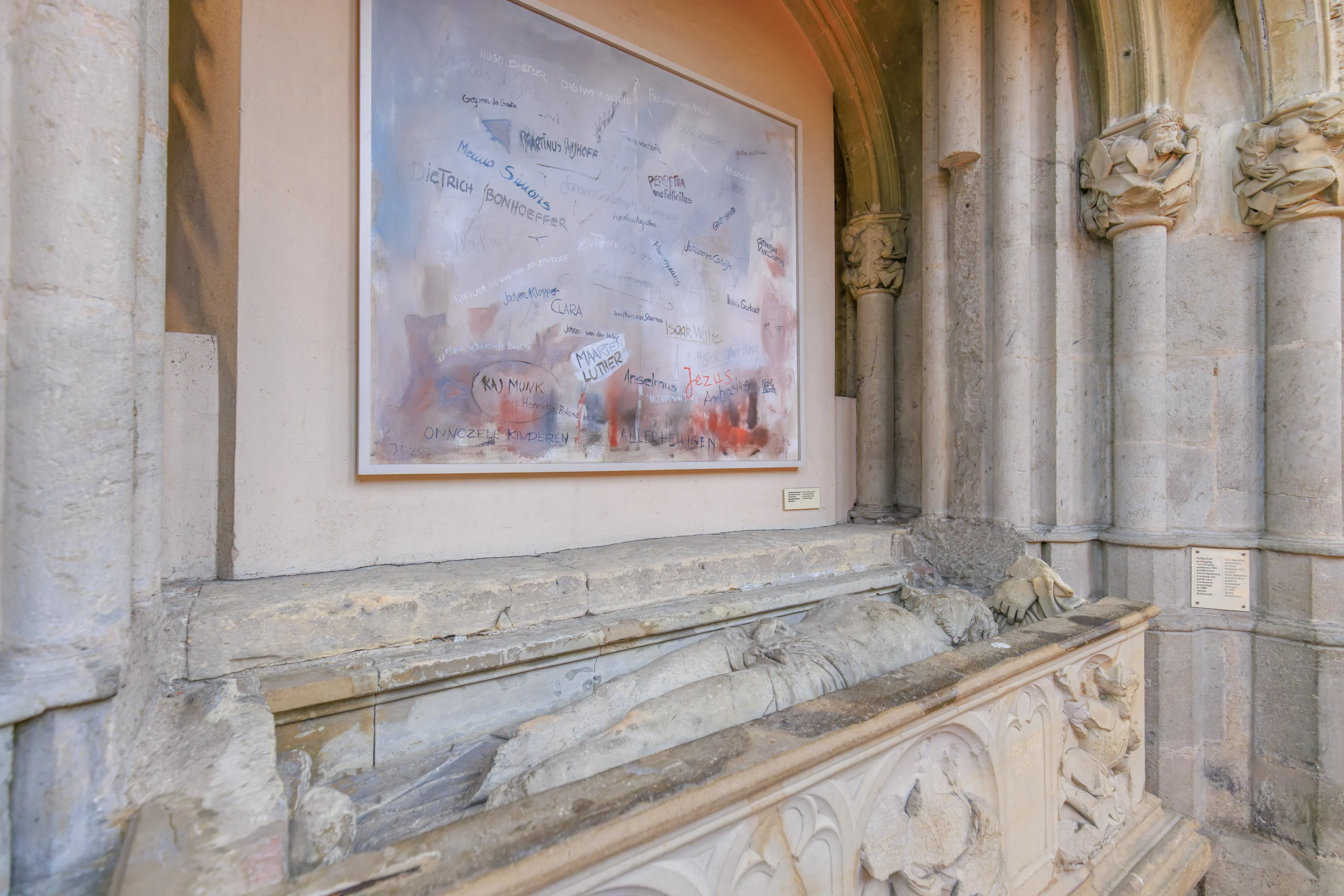
This one has an explanatory sign:
On this wall are written the names of those we remember in the memorial chapel
The sculpture below also has a brief description:
Holy Sepulchre entombment of Christ
sandstone 1501
sculptor Gerrit Spintersz.
transition from gothic to renaissance damaged in 1580 during Reformation
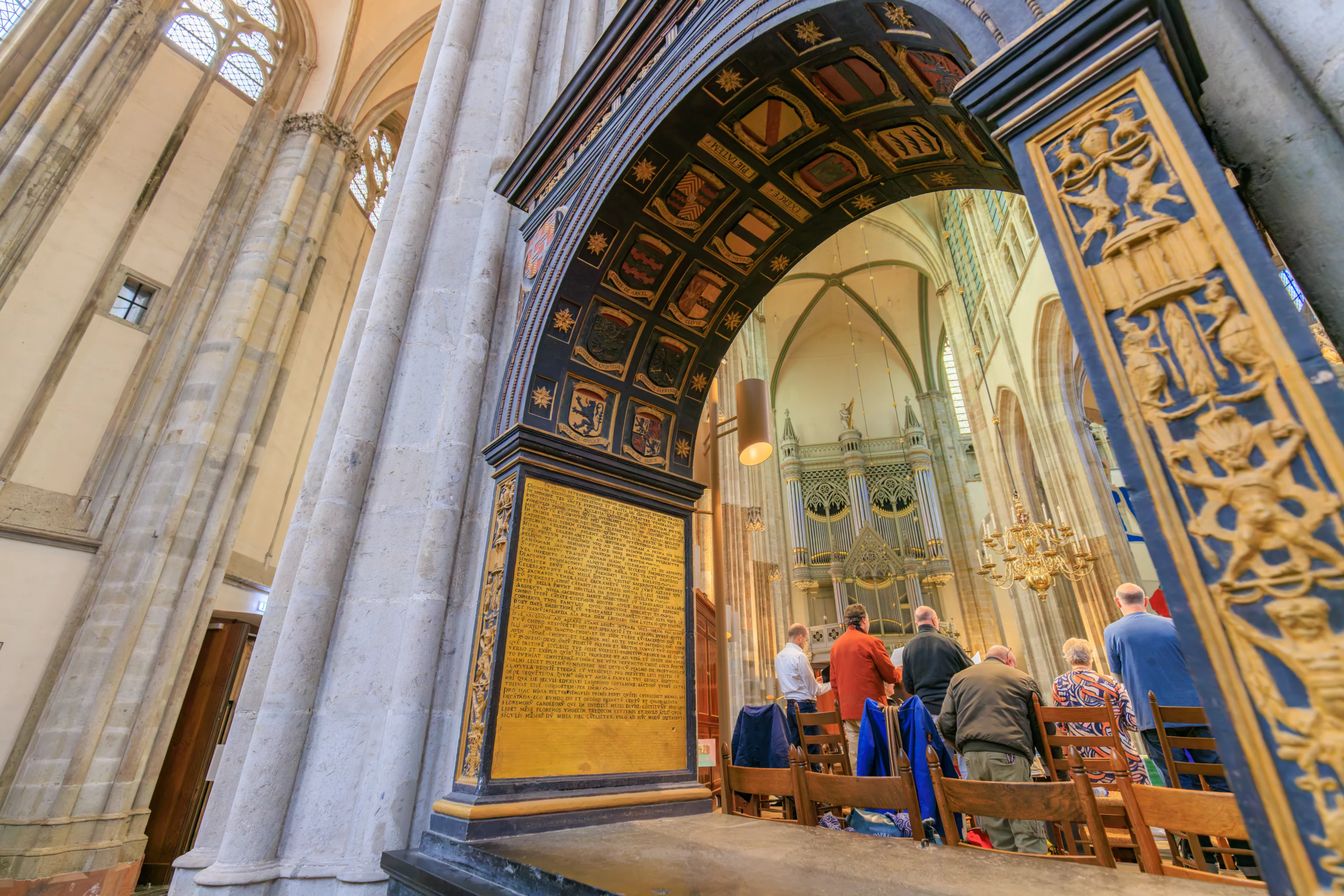
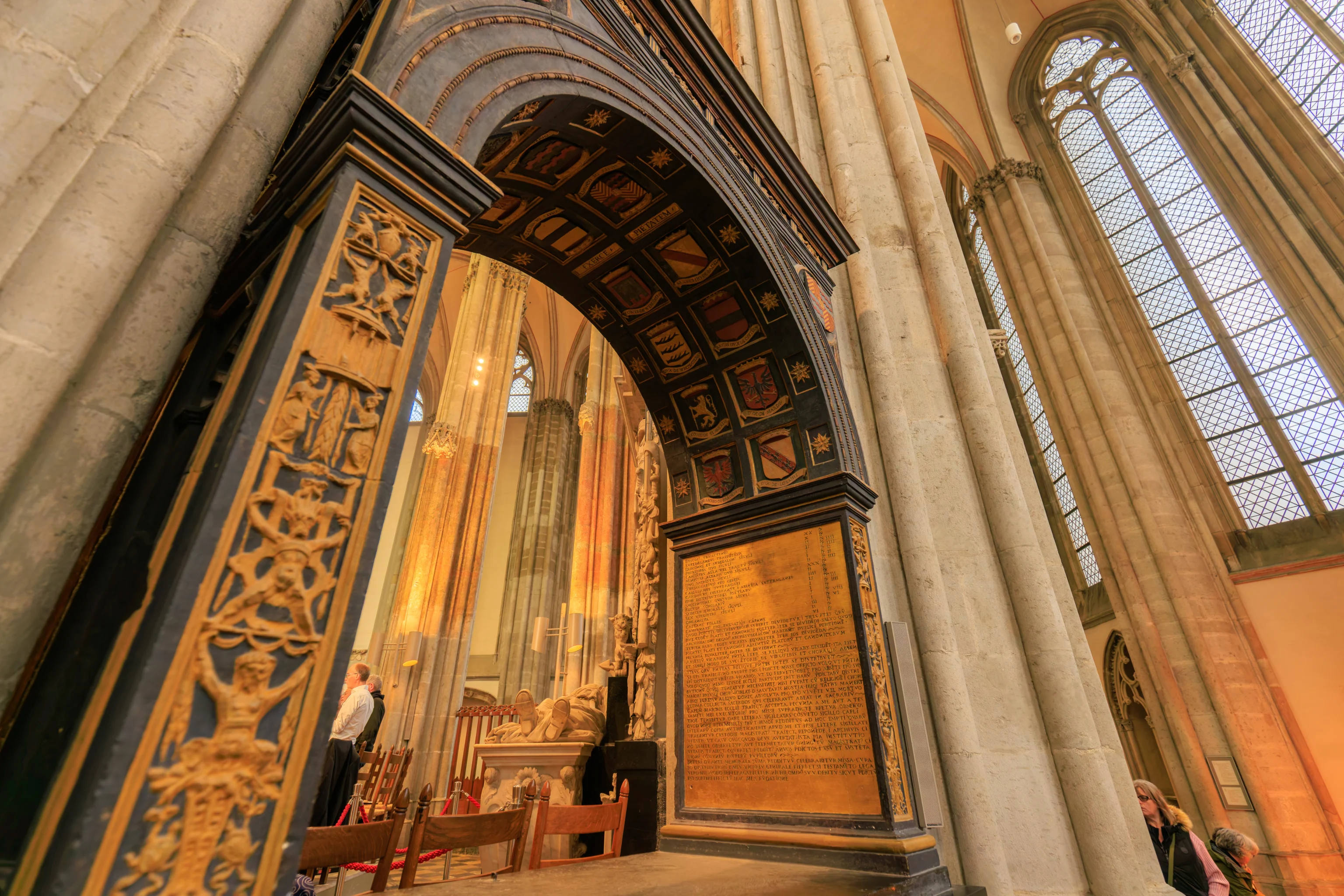
These arches, between the ambulatory and apse, are decorated with coats of arms and inscribed with text in what seems to be Latin. Unfortunately, Google Translate doesn’t really work well on this text.
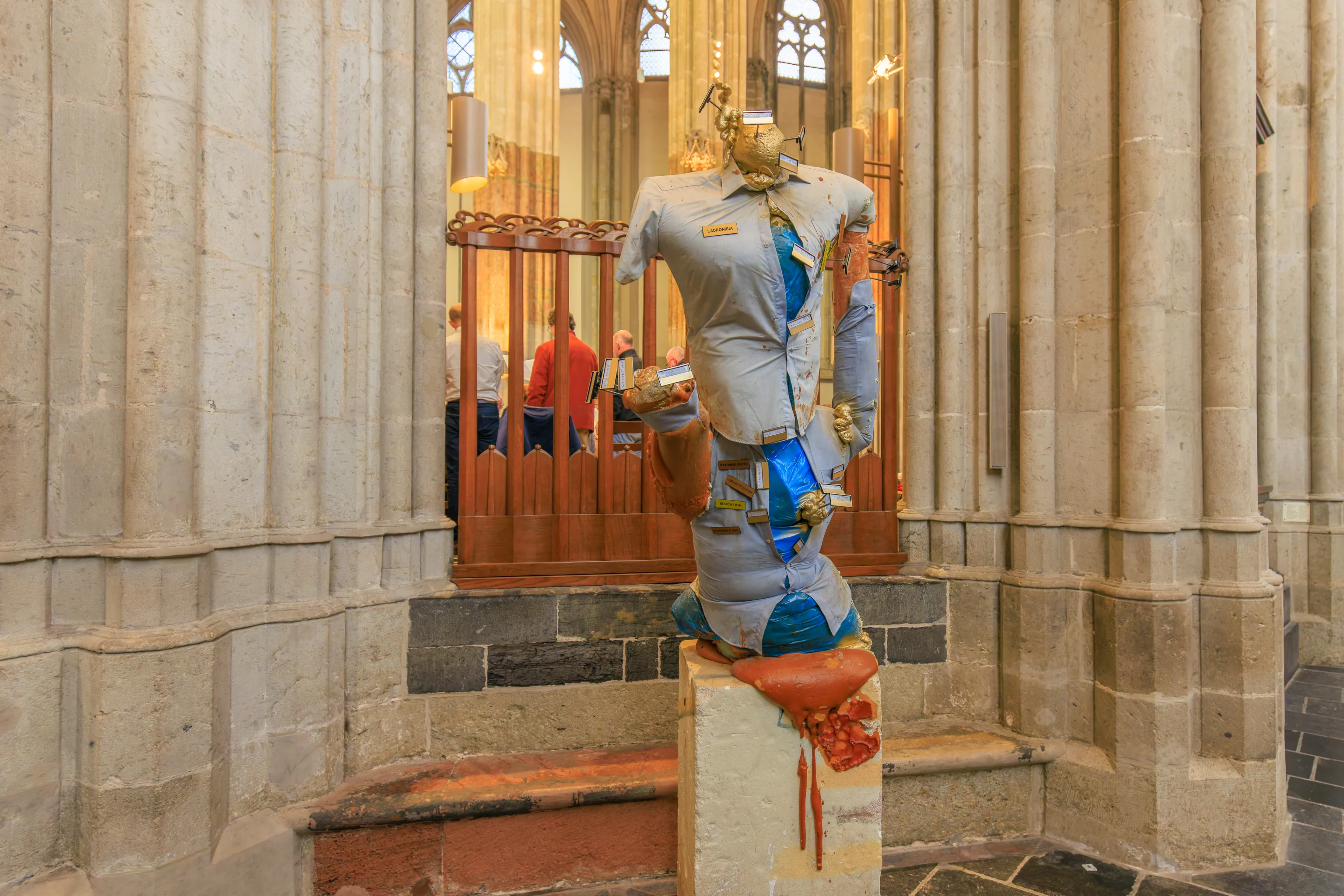
This sculpture, appearing as a mash-up of two people, has various name tags attached to each body.
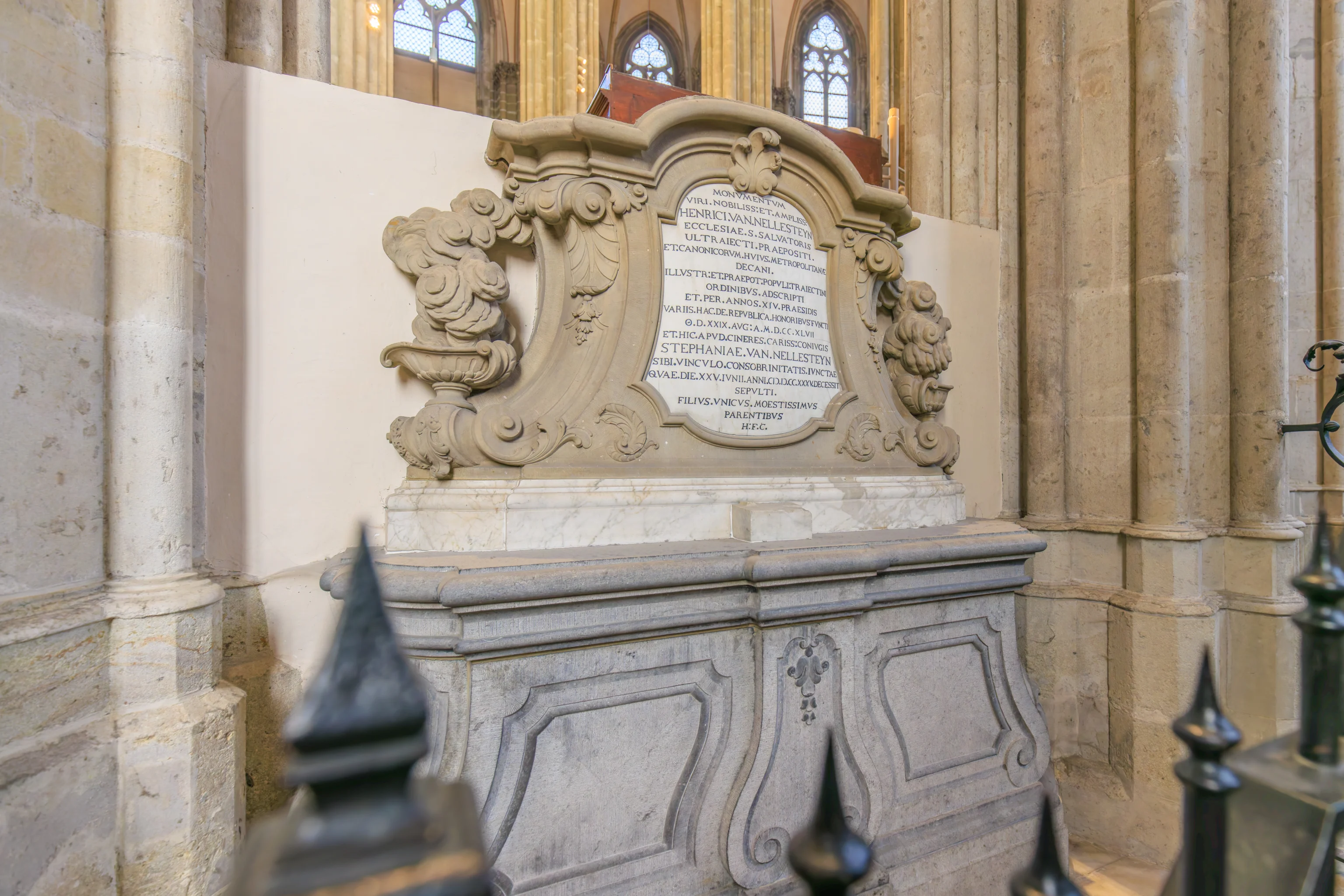
This appears to be a memorial to the Van Nellesteyn family. Maybe Henrick and Stephanie?
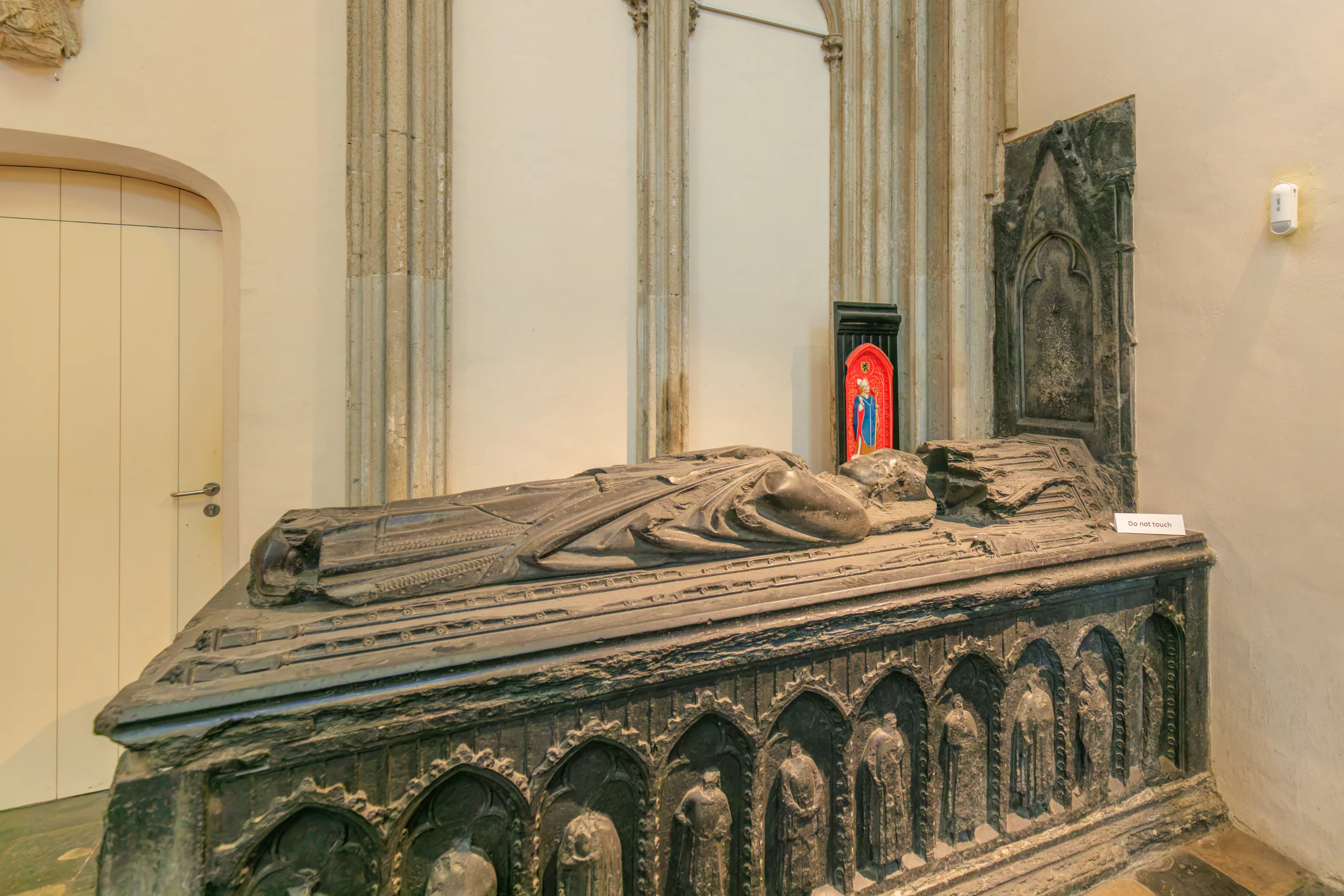
There is a sign on the wall which explains who is buried here:
burial chapel of Guy van Avesnes
bishop of Utrecht
1301 - †1317
damaged in 1580 during Reformation
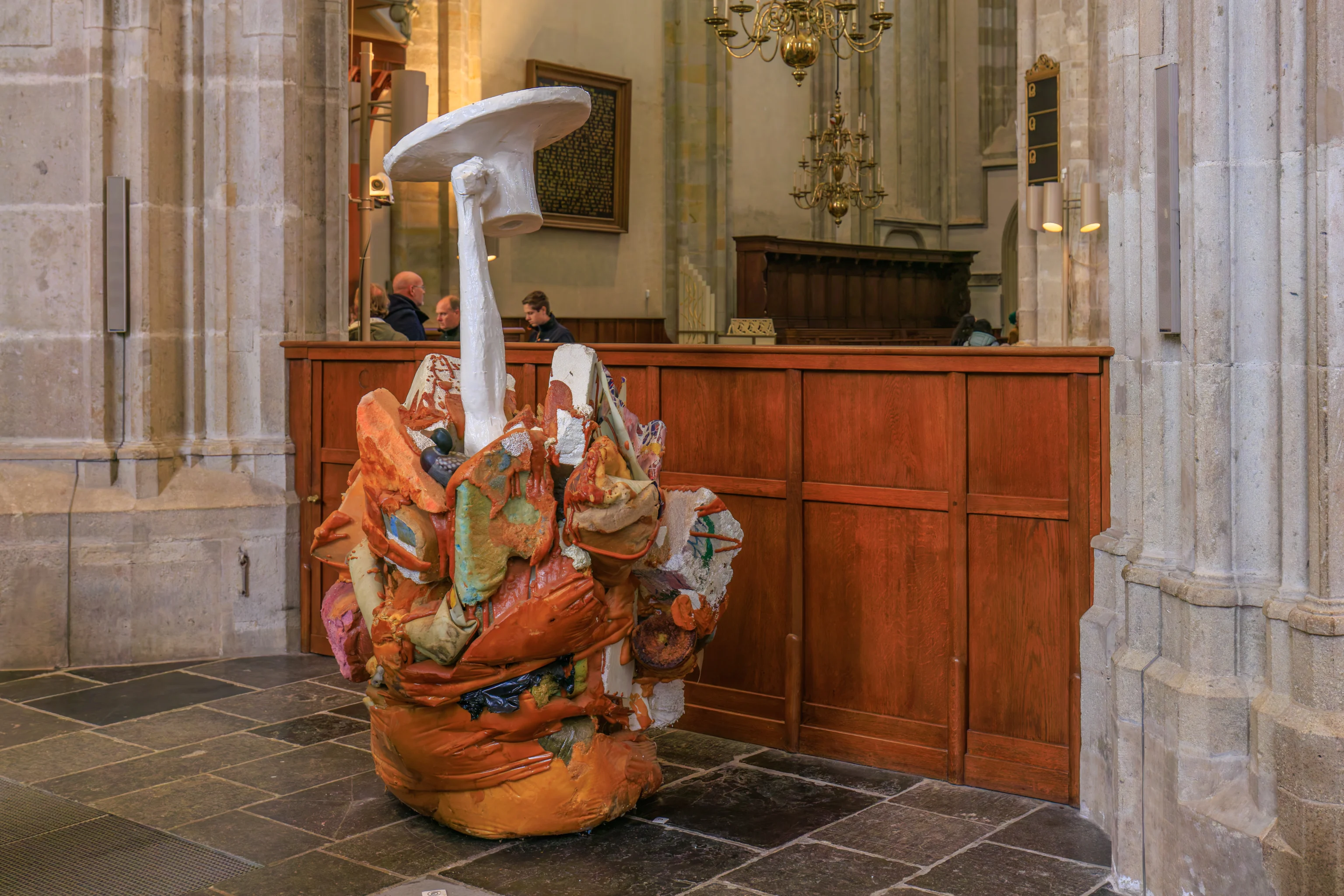
This sculpture looks like a big blob of stuff?
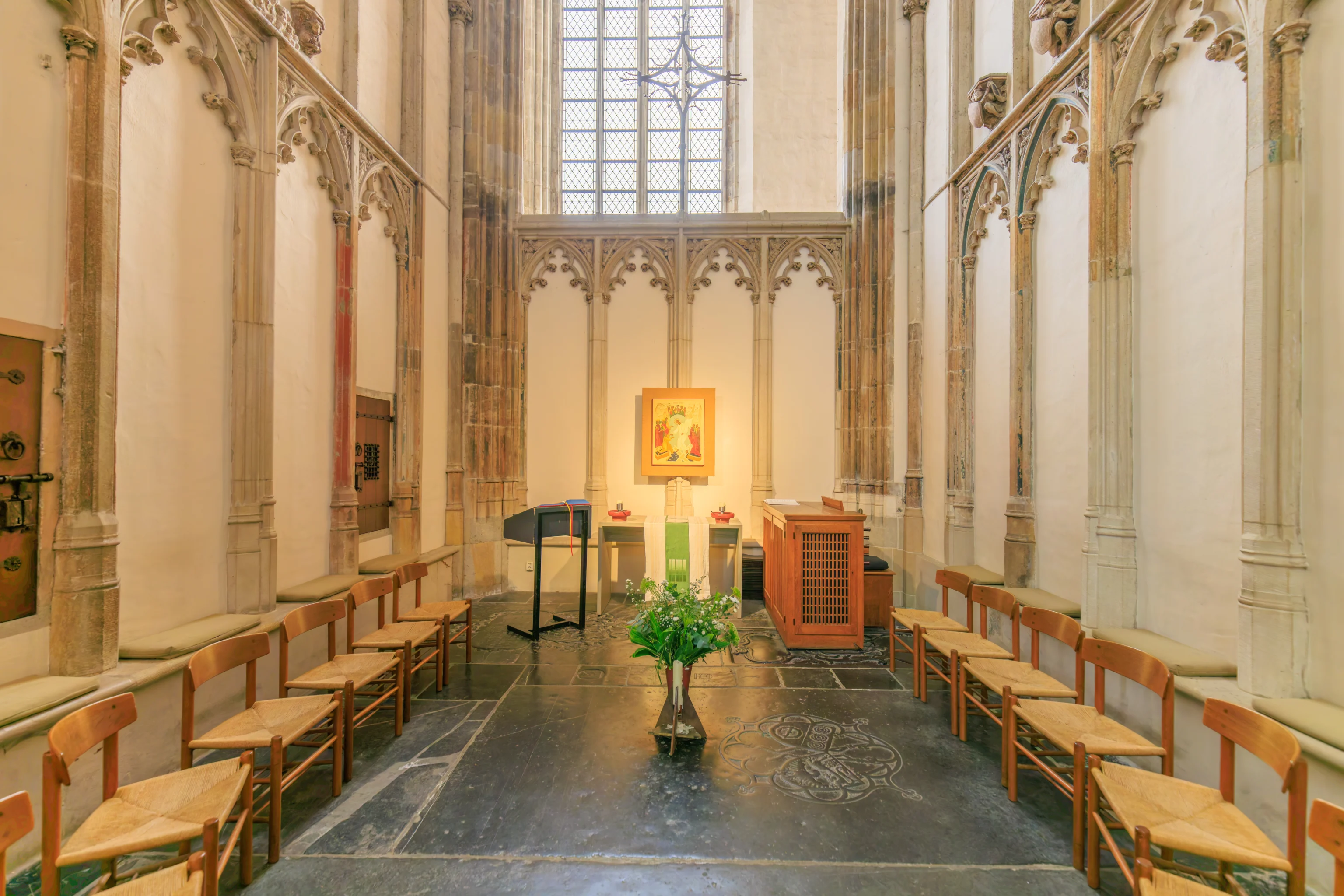
This chapel was off to the side.
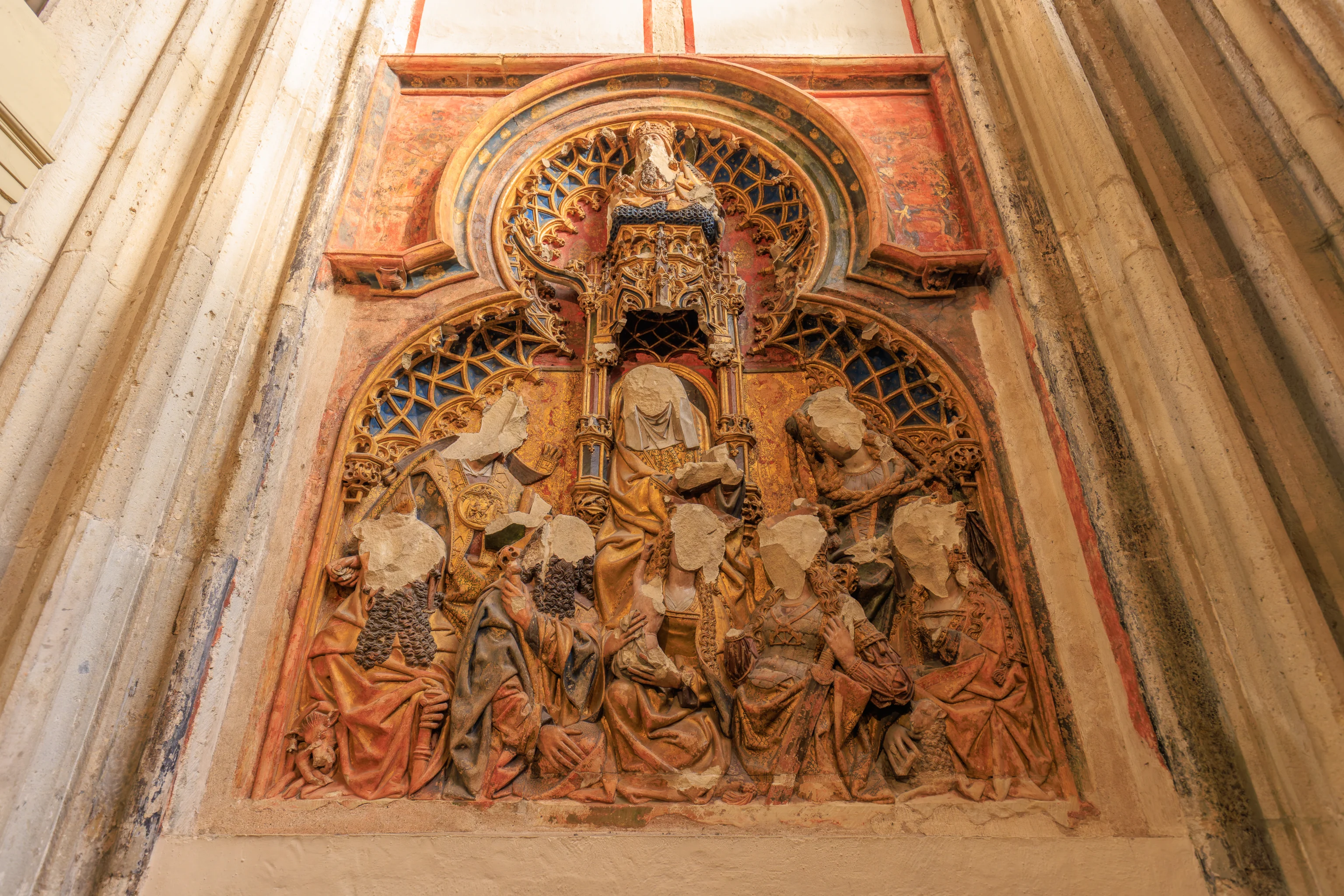
This piece is from the 1500s and was also damaged during the Reformation, as explained by a sign:
reredos of sandstone
c. 1500
representation of the three generations:
grandmother St. Ann
mother St. Mary
the child Christ
damaged in 1580 during Reformation
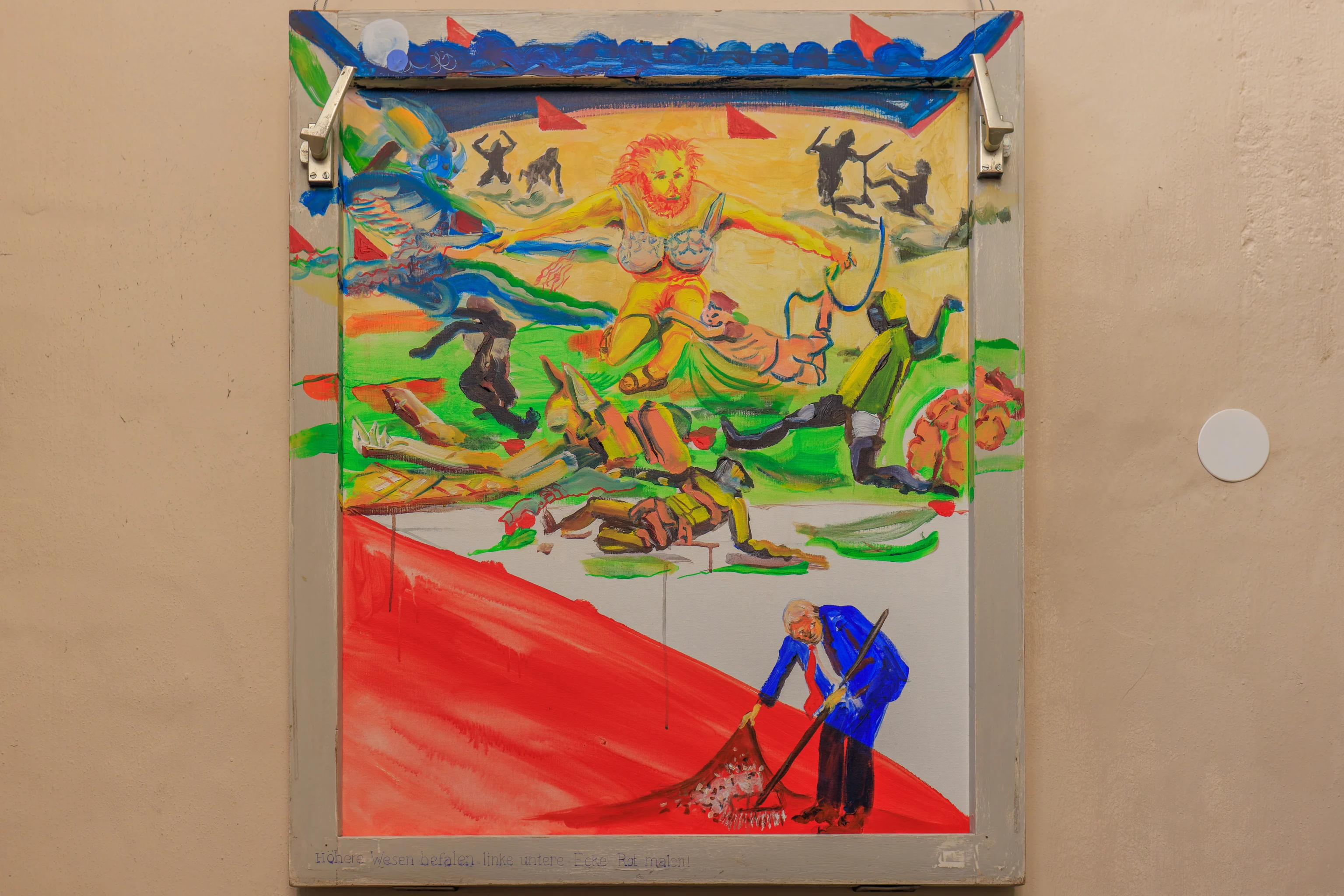
That almost looks like Donald Trump sweeping all the things he doesn’t want you to see under the rug. Or maybe its Brexit guy Boris Johnson? Who I knew of before then because he was Mayor of London during the year that I was there for New Year’s Eve. The German text at the bottom left of the frame translates to:
Higher Beings ordered to paint the lower left corner red!
Shrug.
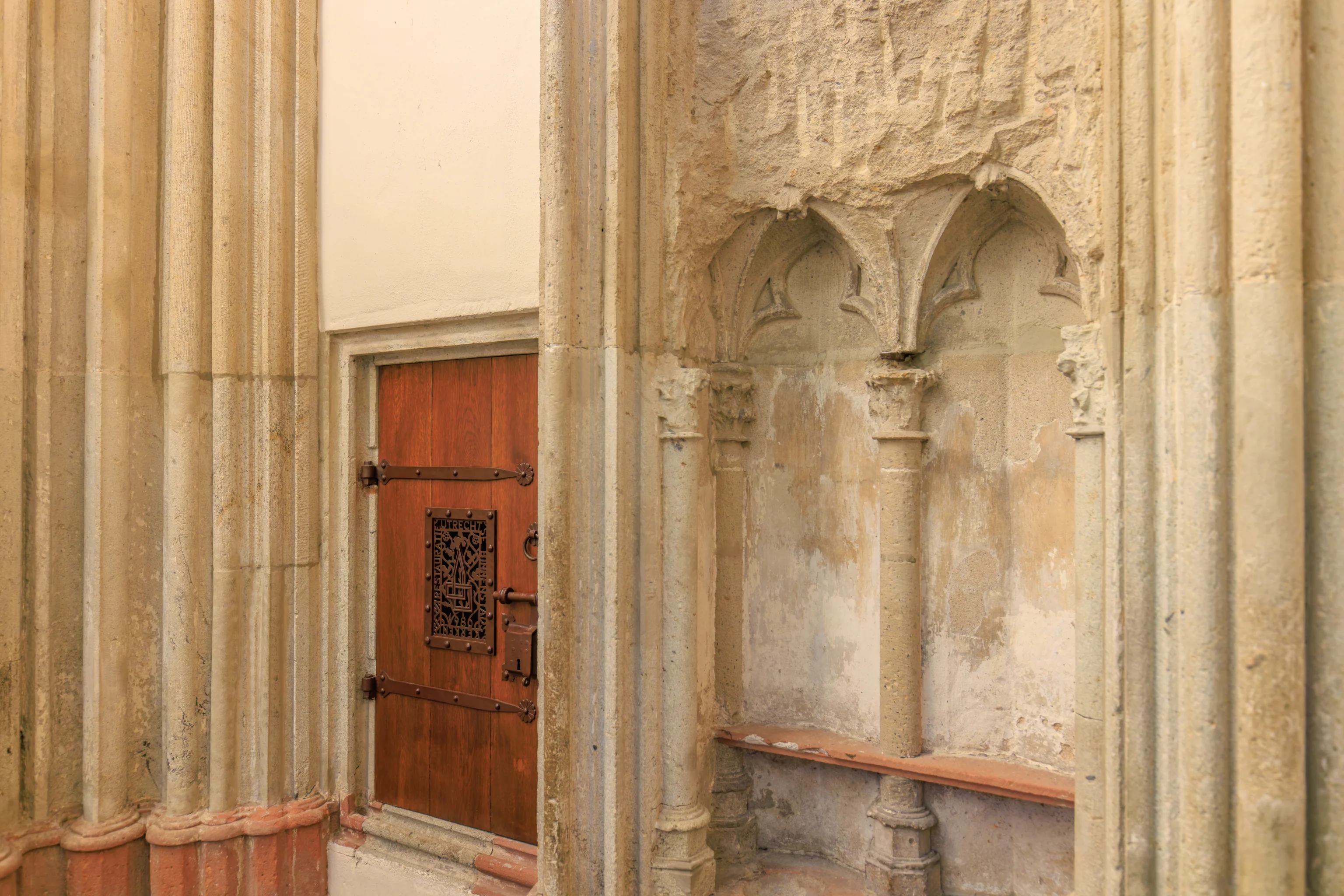
We passed by a small locked door.
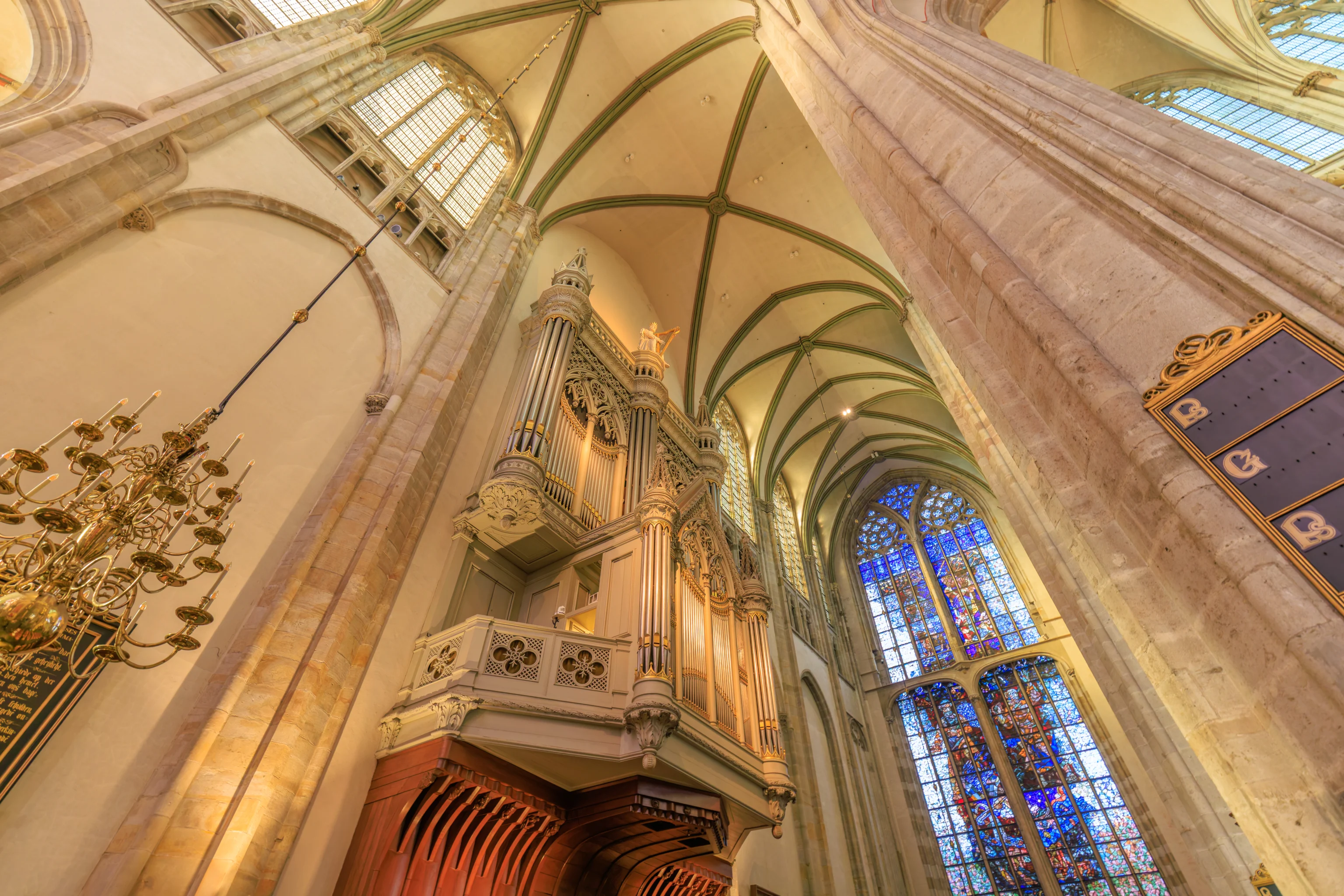
We somehow spent nearly an hour in the cathedral. A bit surprising given that more than half of the building has been missing for literally hundreds of years!
On our way out, we passed by some panels that explain the history of Utrecht. It was first founded as a Roman settlement in 43 AD. A church was first built here around 635. It seems the current building was originally built by 1023 and gradually converted in style to a gothic church in 1254. The tower was finished in 1382 and the quire around 1410.
The panels make it sound like the area around the nave was never fully completed before it was destroyed in 1674 by a storm, possibly due to a tornado. The ruins of the nave were left in place until 1826. The cathedral is currently a Protestant cathedral.
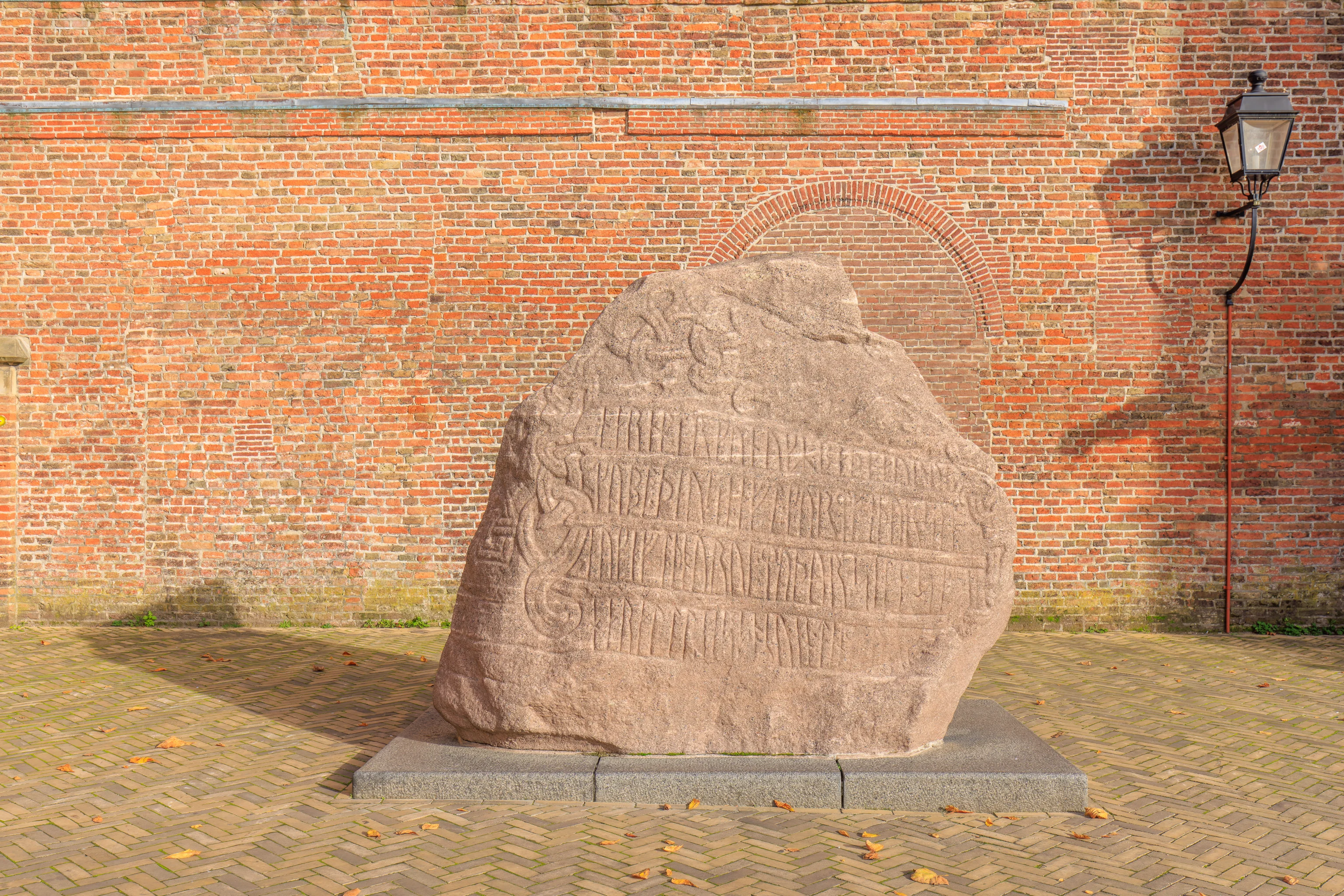
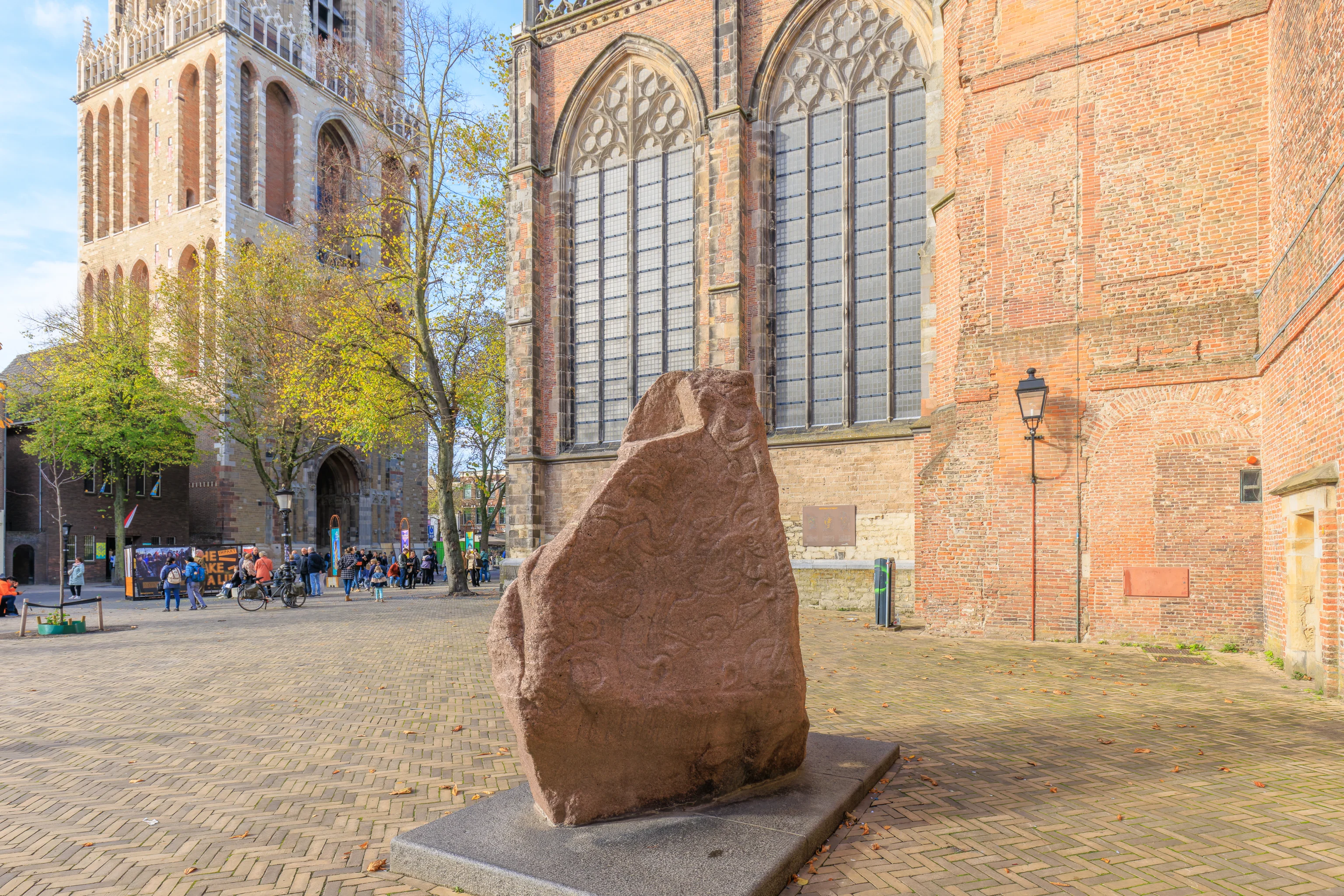
We noticed this stone with inscriptions near the cathedral. It is probably important but we don’t know why.
We passed through a door which led to a cloister surrounding a courtyard.
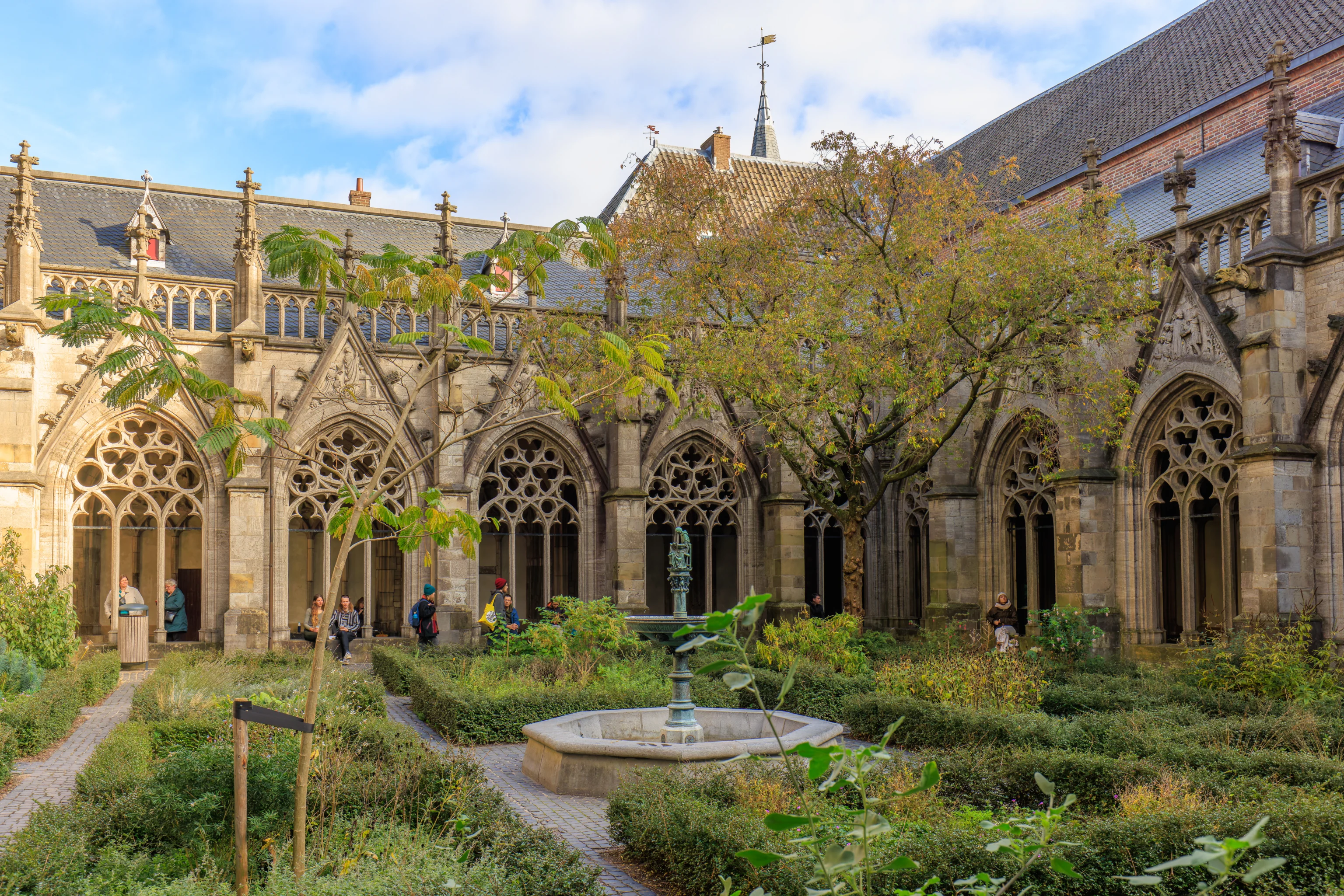
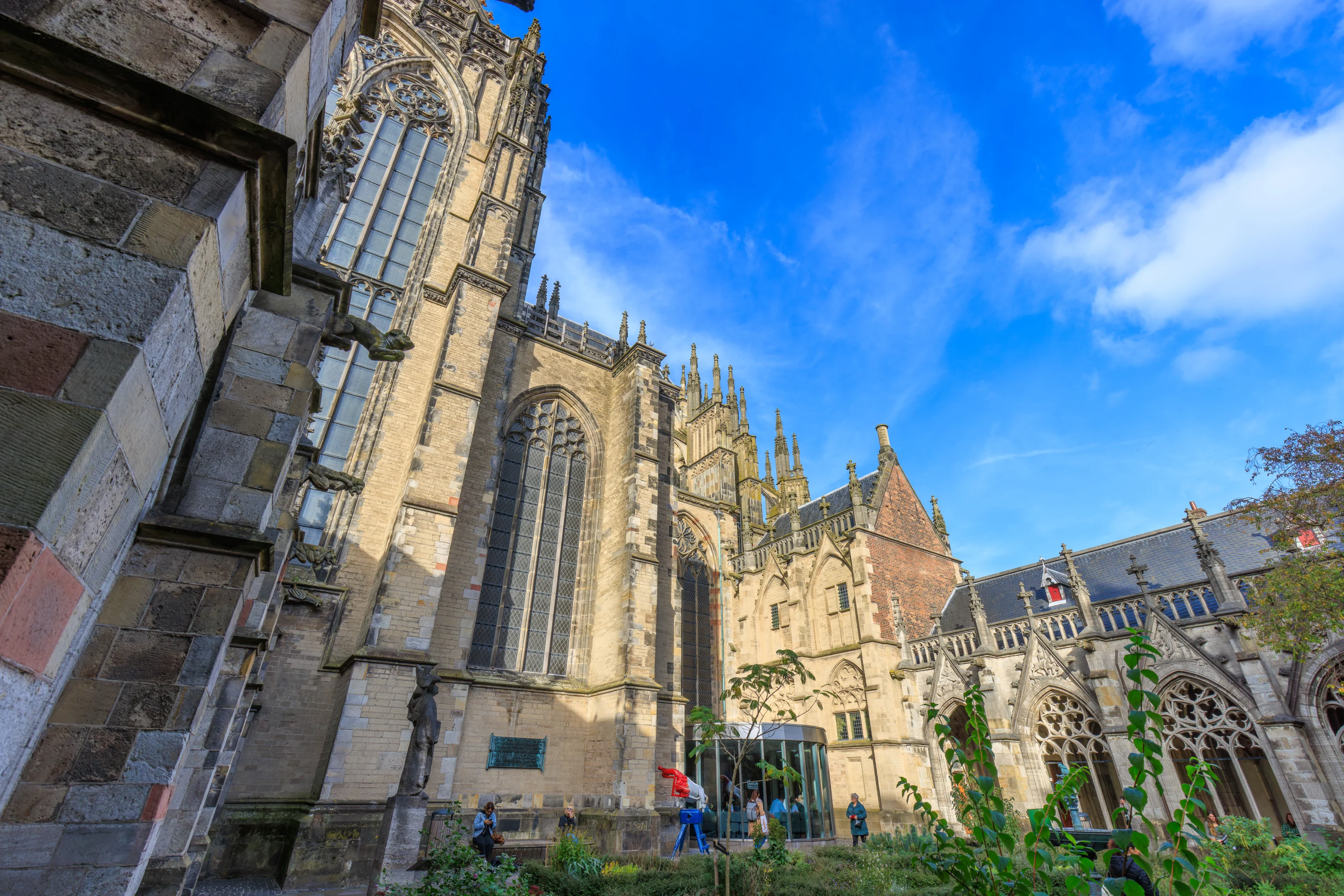
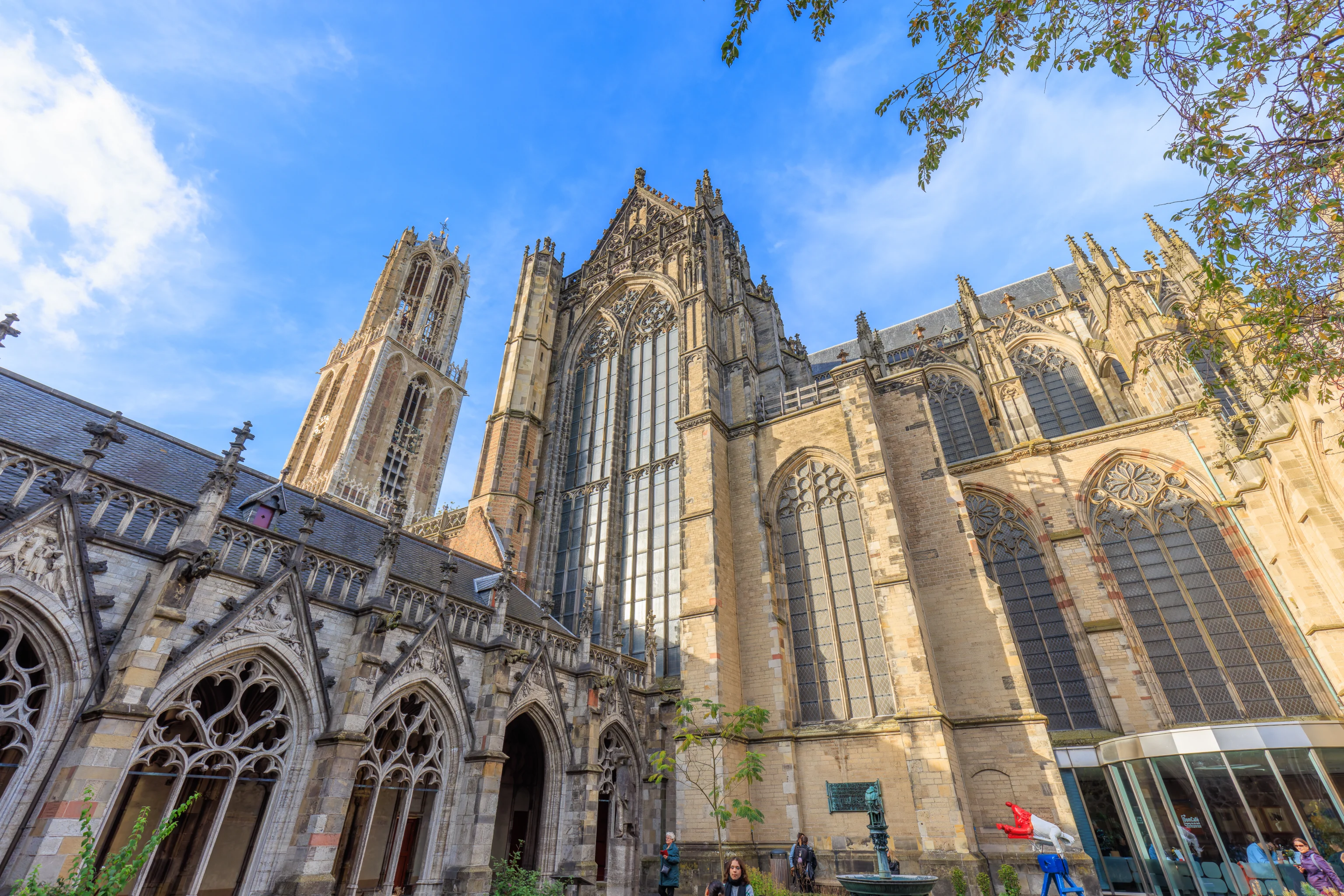
The cloister, attached to the cathedral but not a part of it, seems to be now owned by the University of Utrecht and referred to in English as The Dom’s Garden.
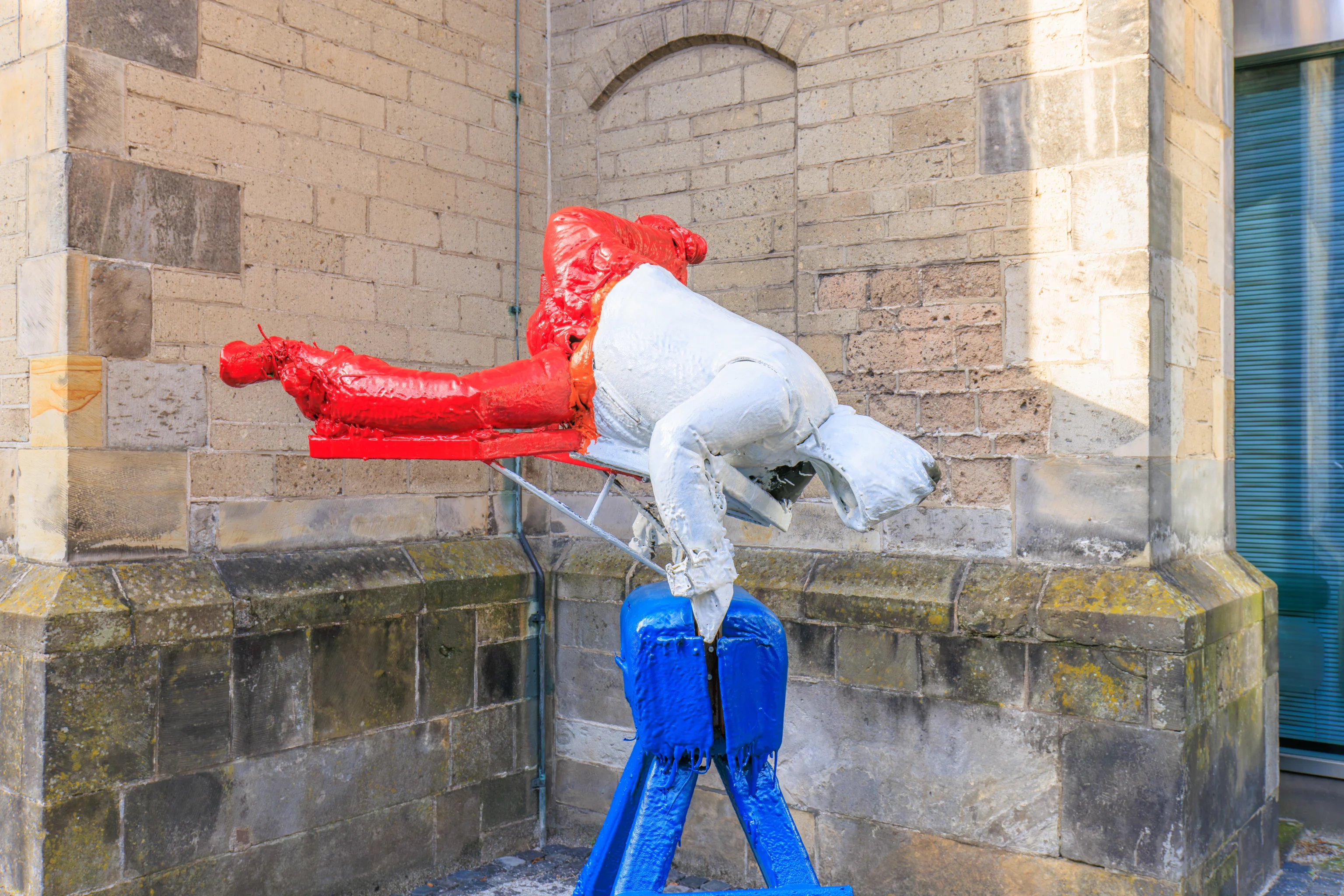
There is art here as well.
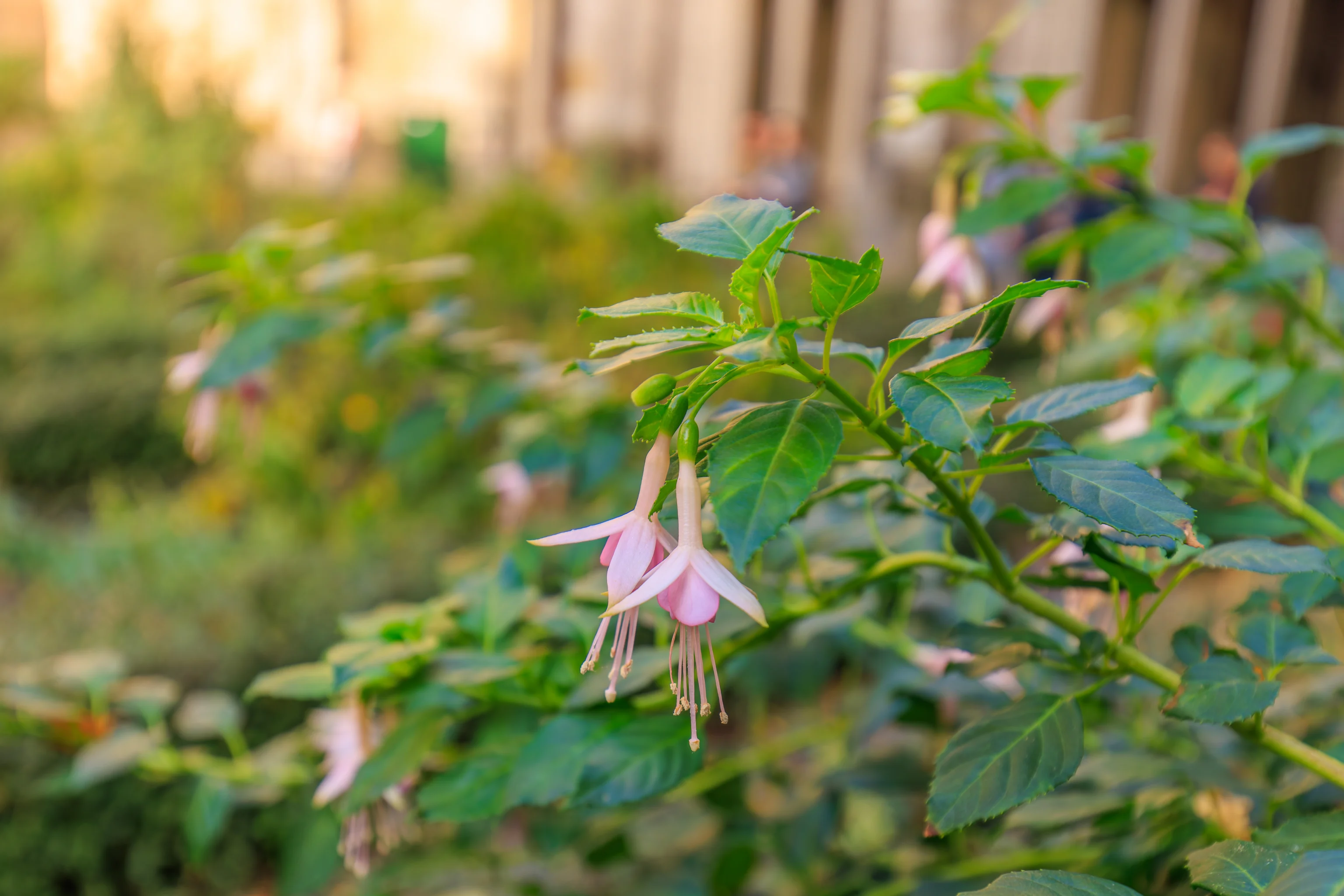
We also noticed these flowers that hang upsidedown.
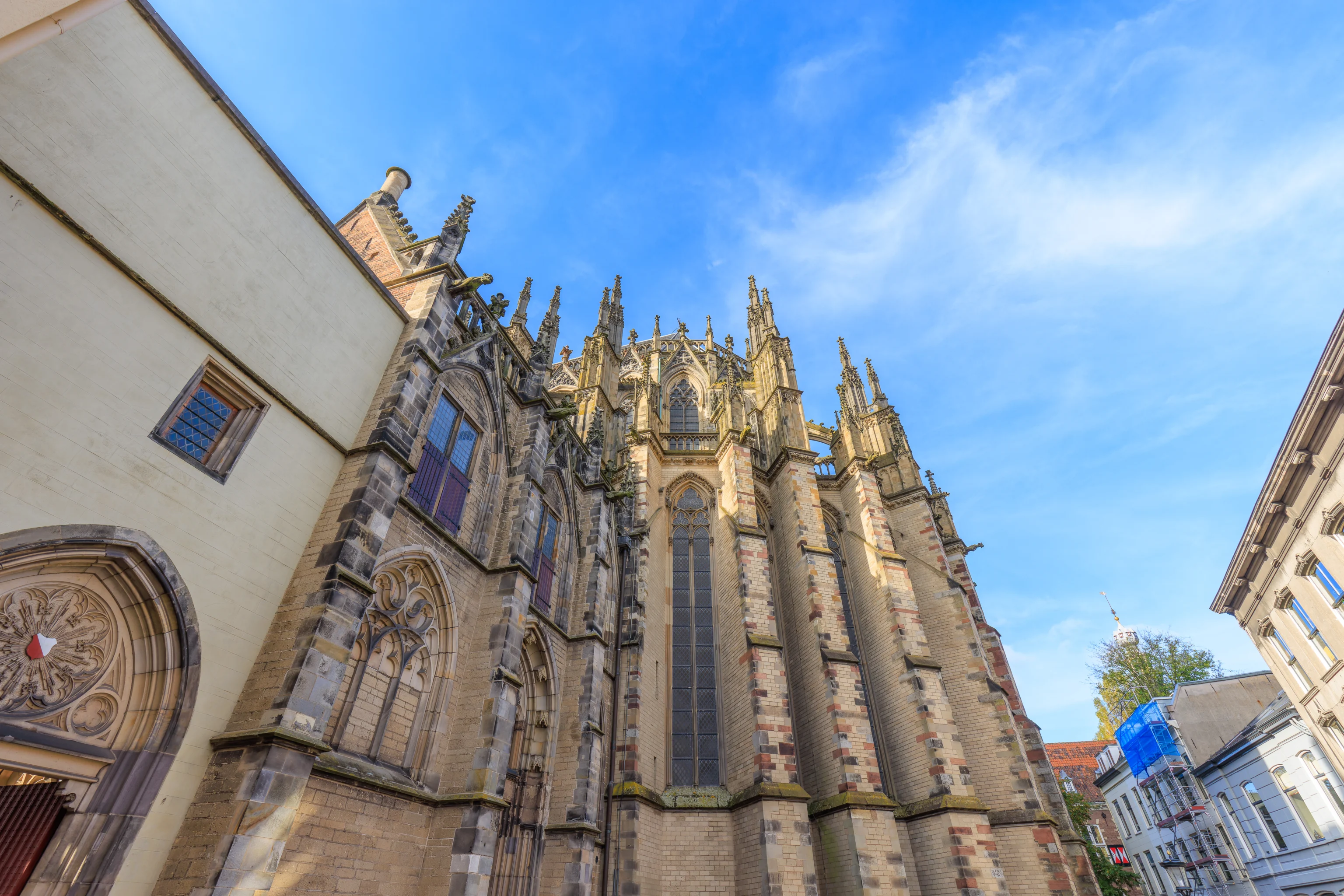
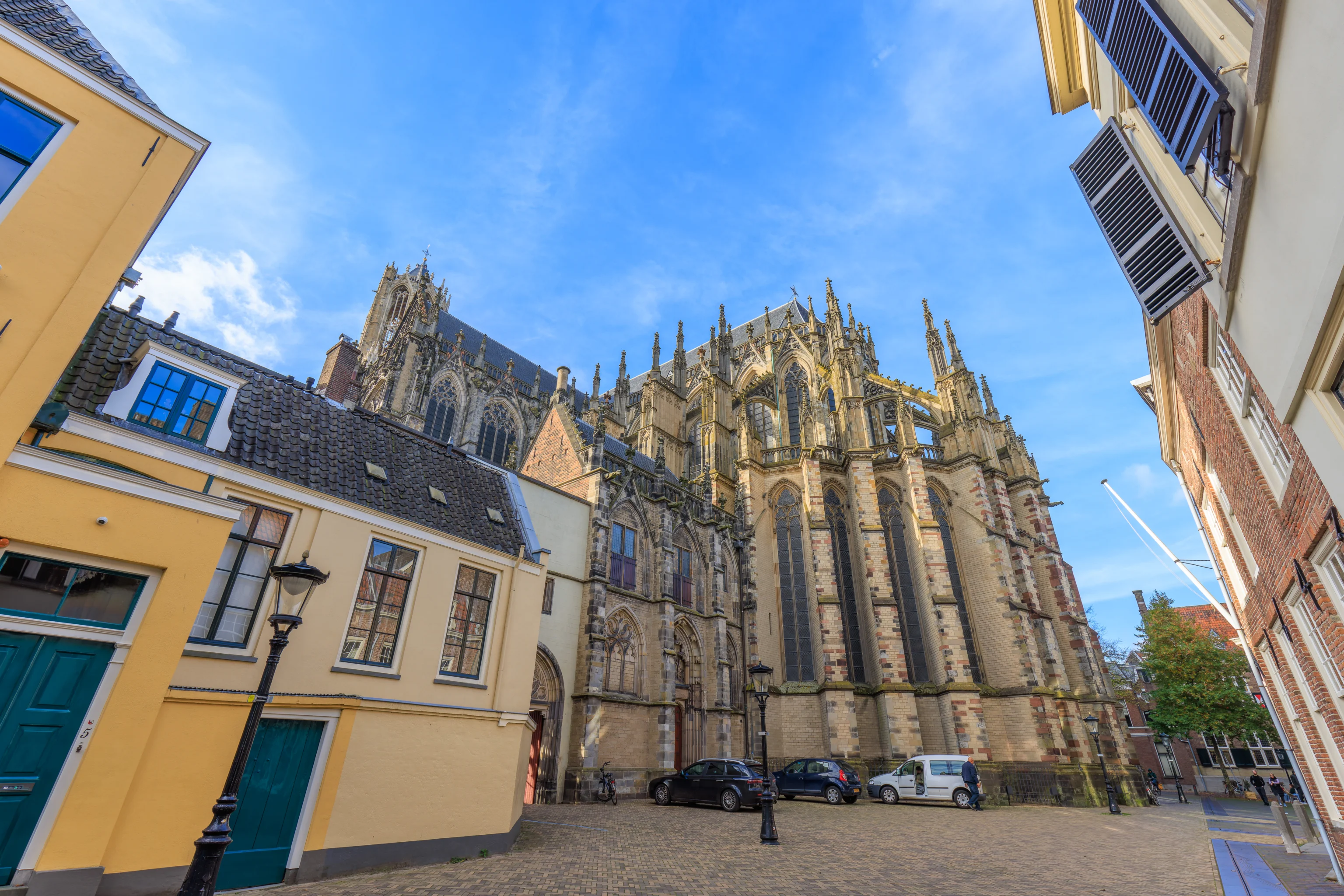
We exited the cloister and decided to continue walking around the city.
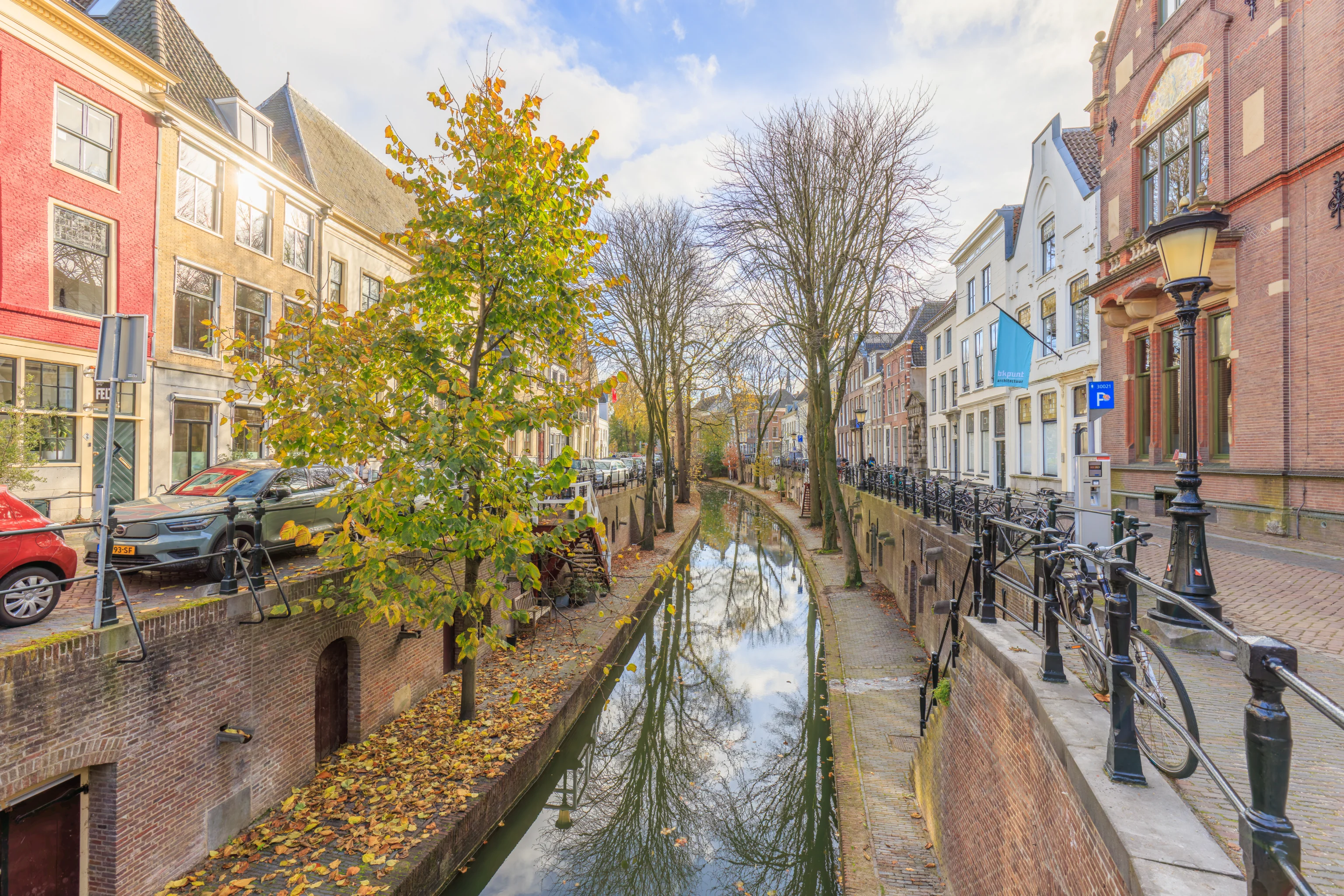
We walked to the southeast to reach the Nieuwegracht. It is much more narrow compared to the Oudegracht! It still shares its two level design though.
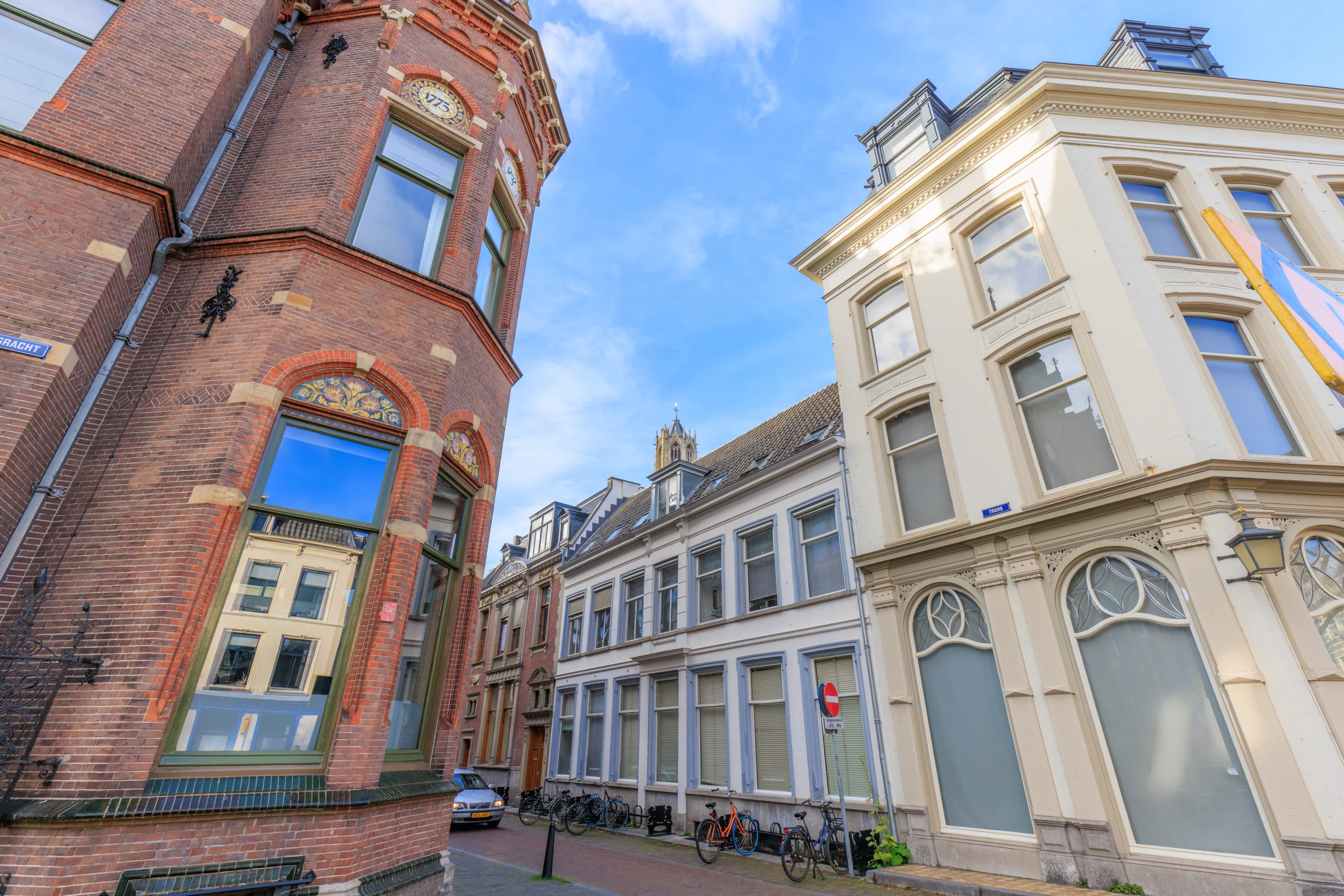
We started to follow the canal to the south. We could see just the very top of the Dom Tower to the northwest.
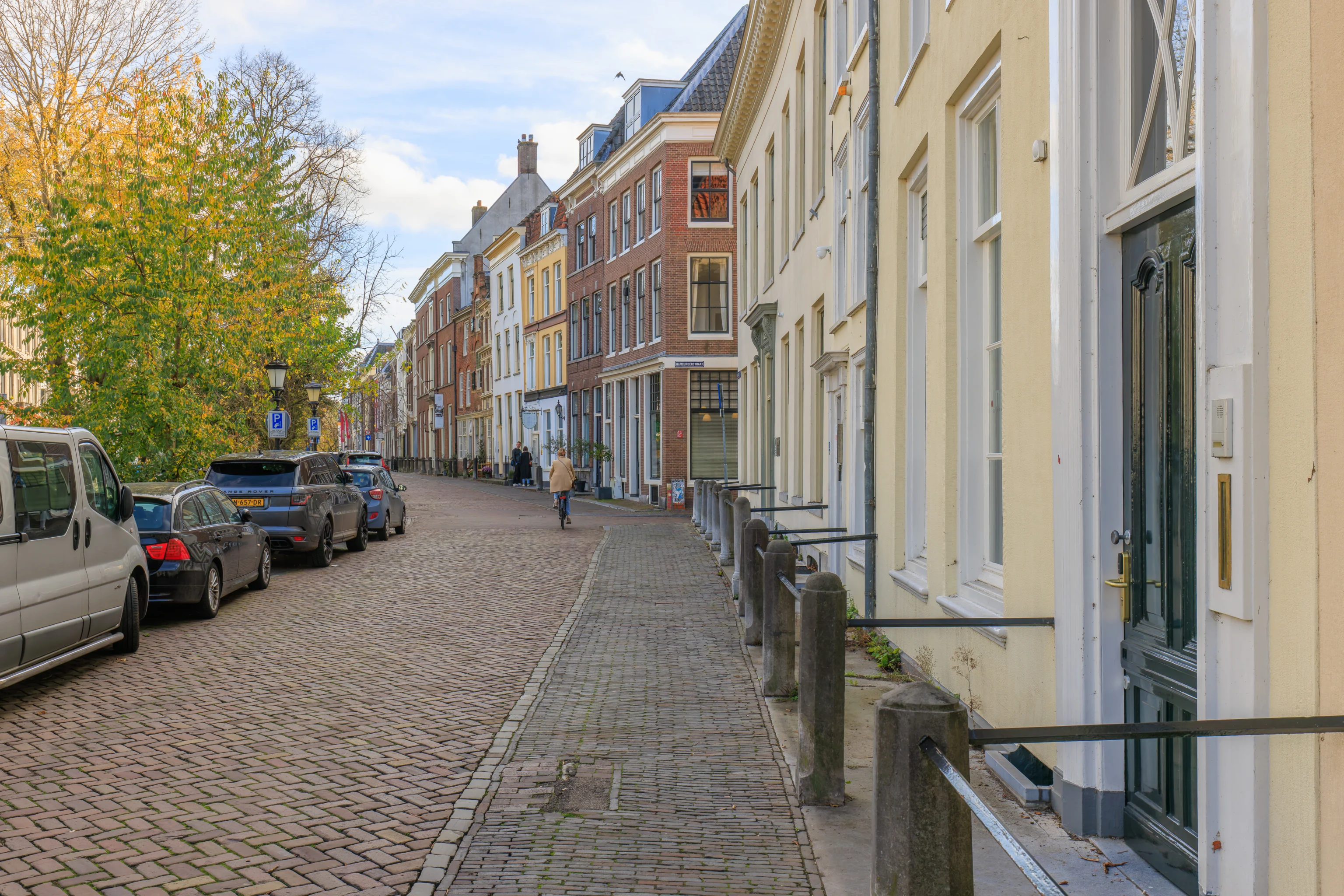
It was pretty quiet here as this area seems to be mostly residential.
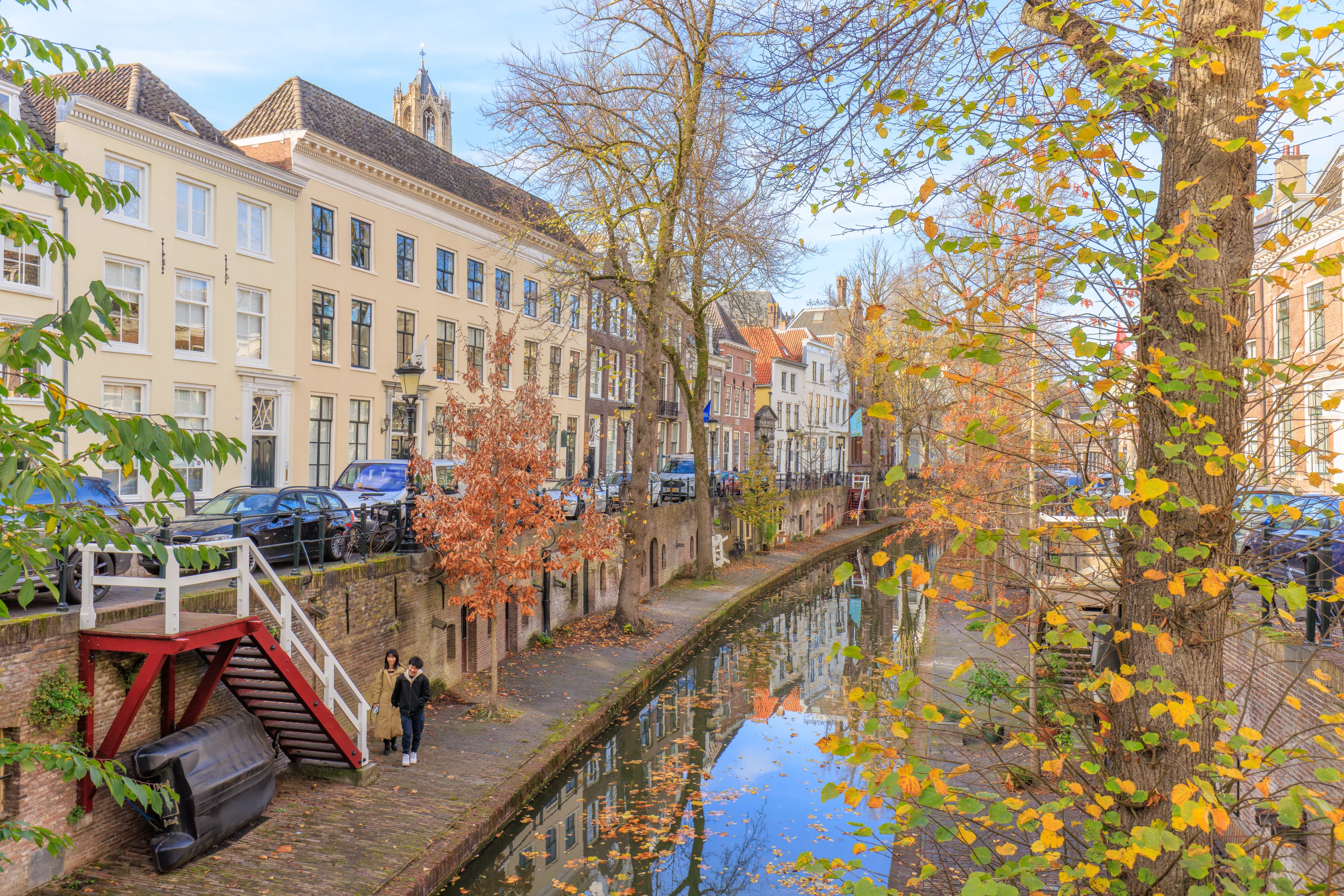
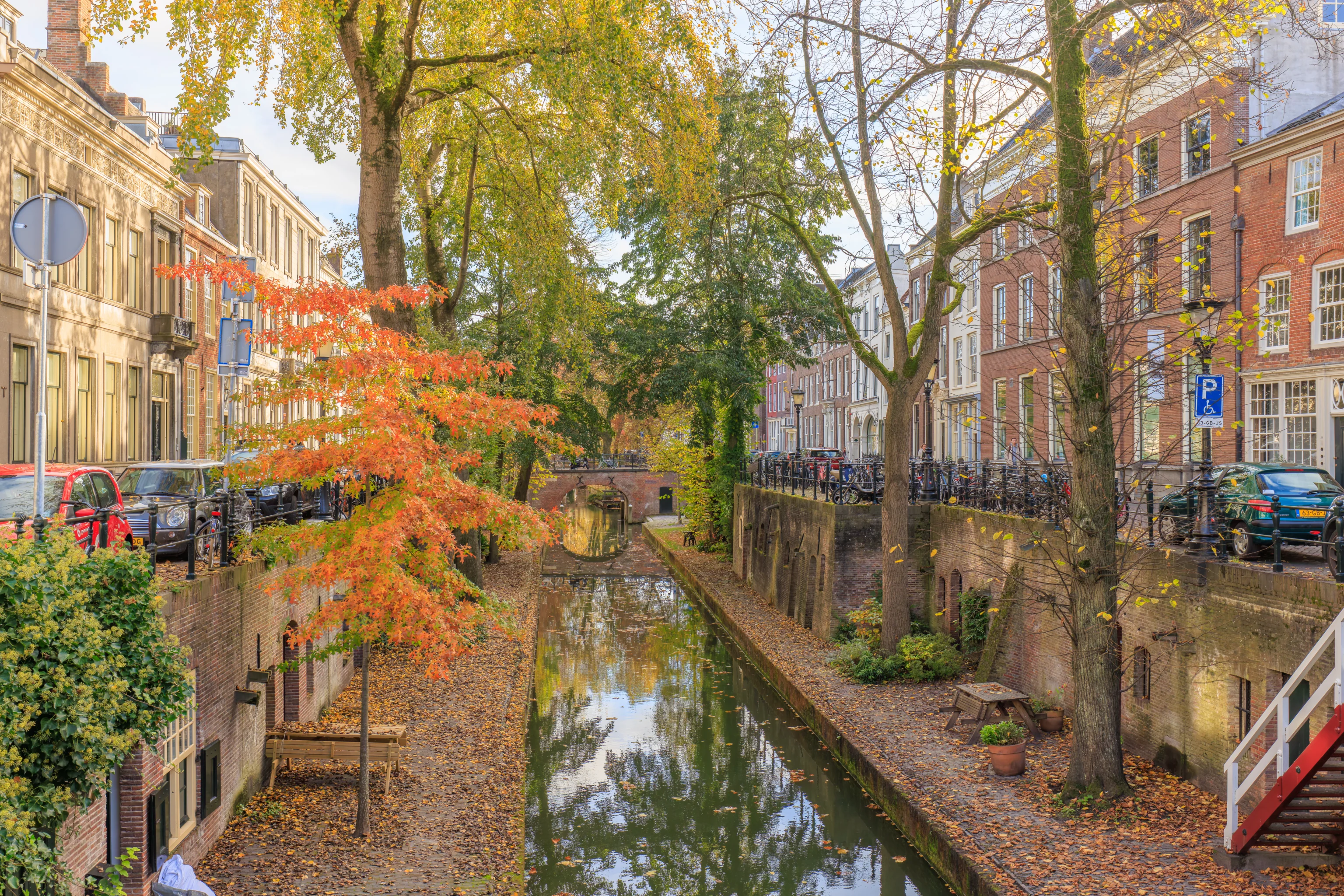
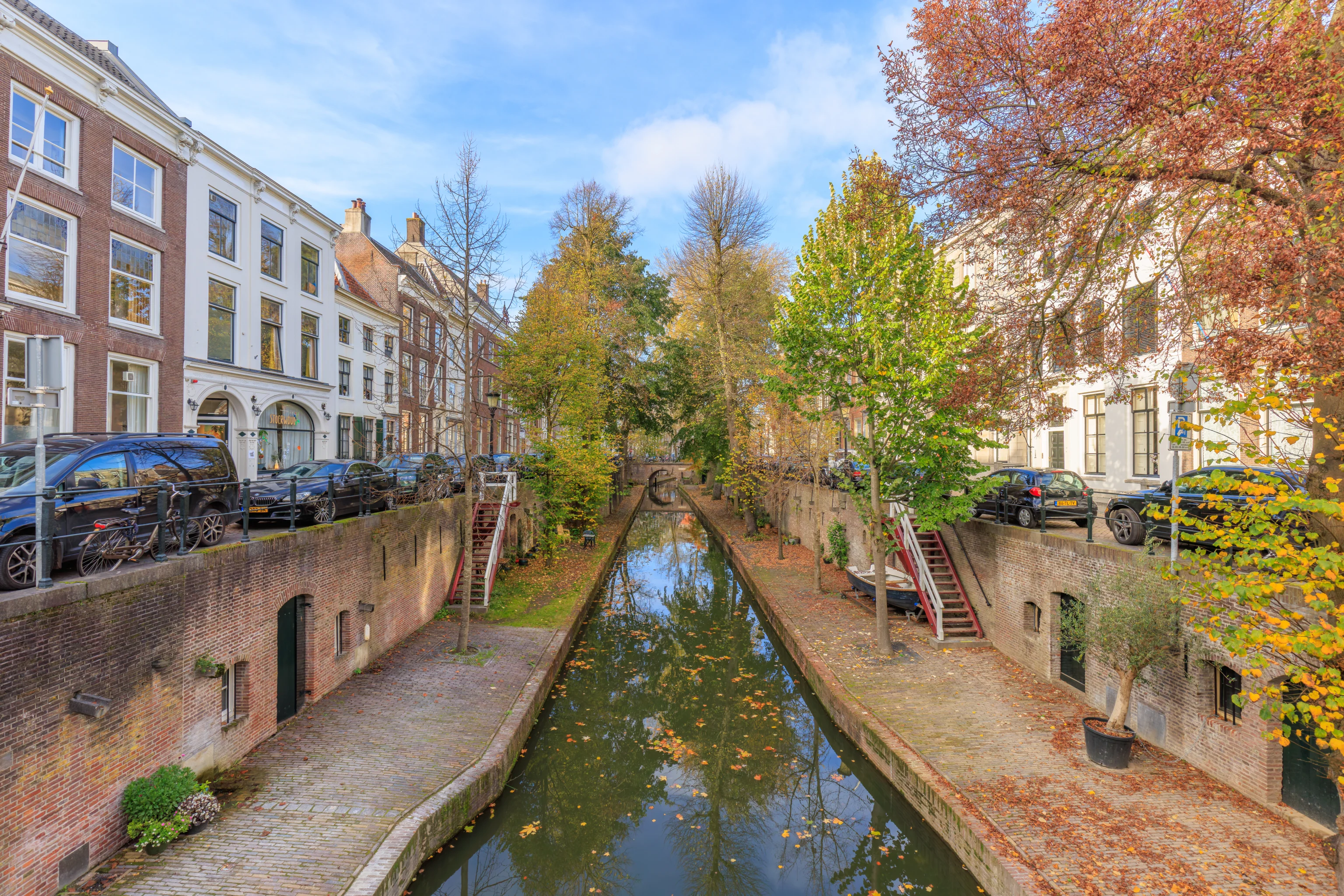
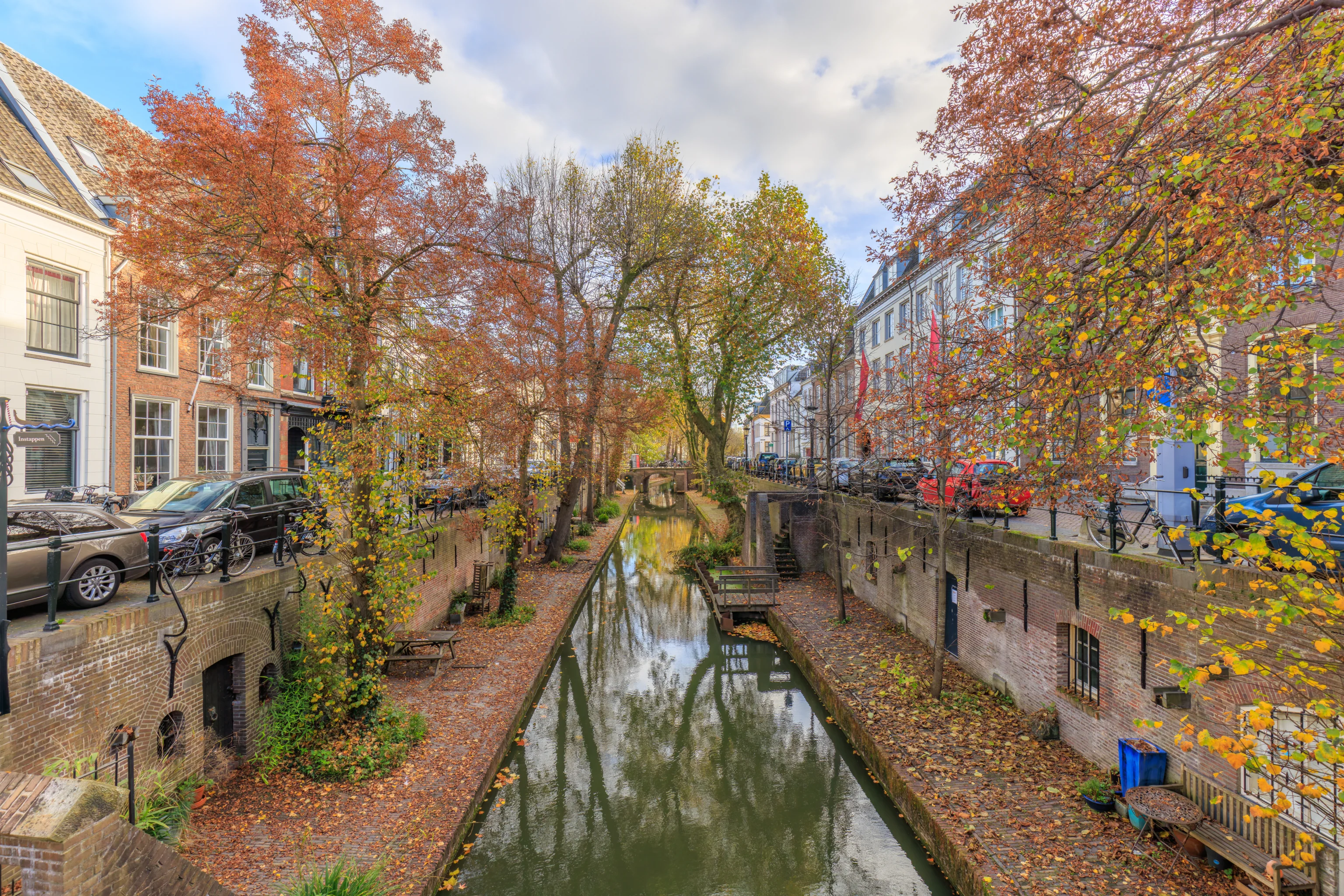
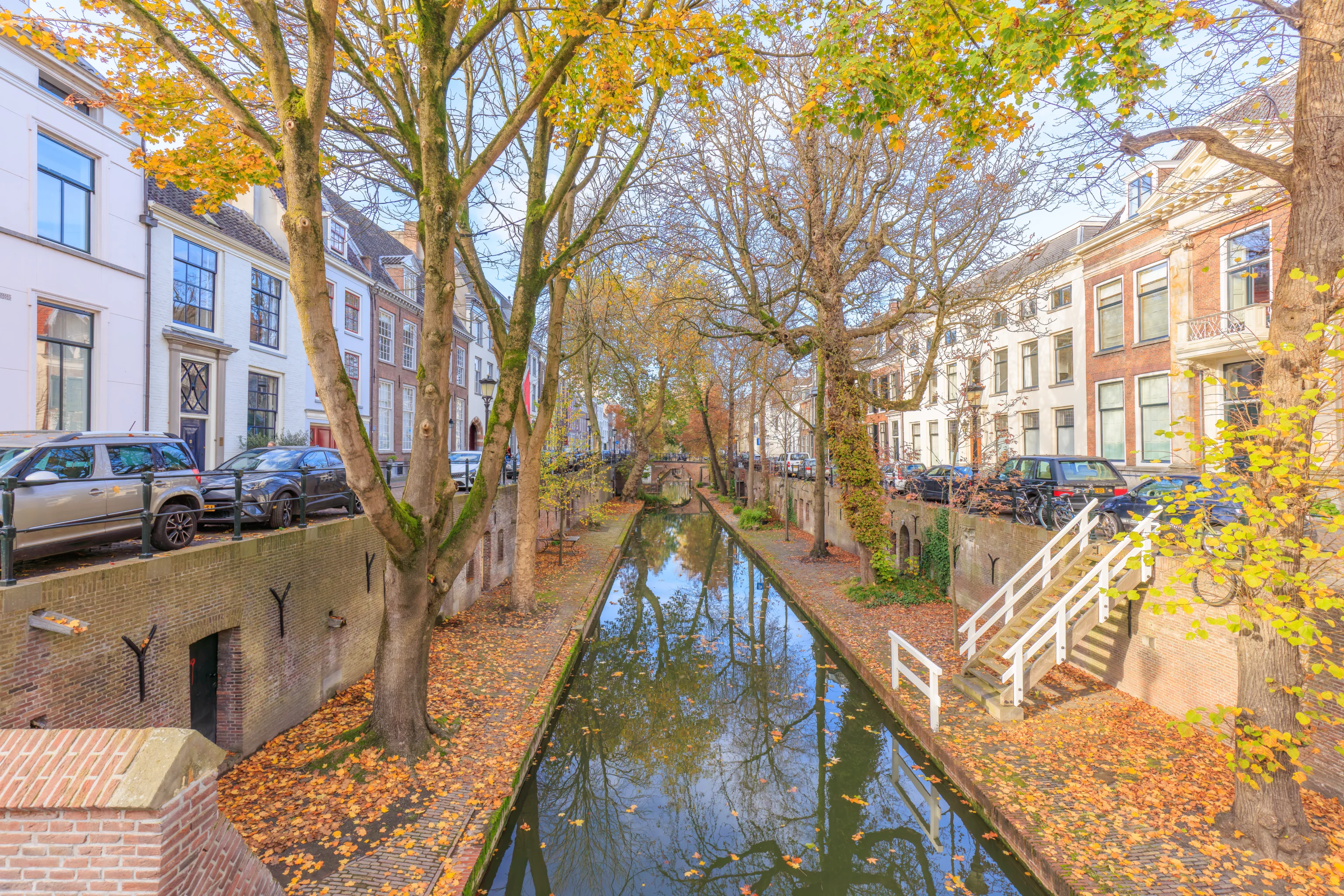
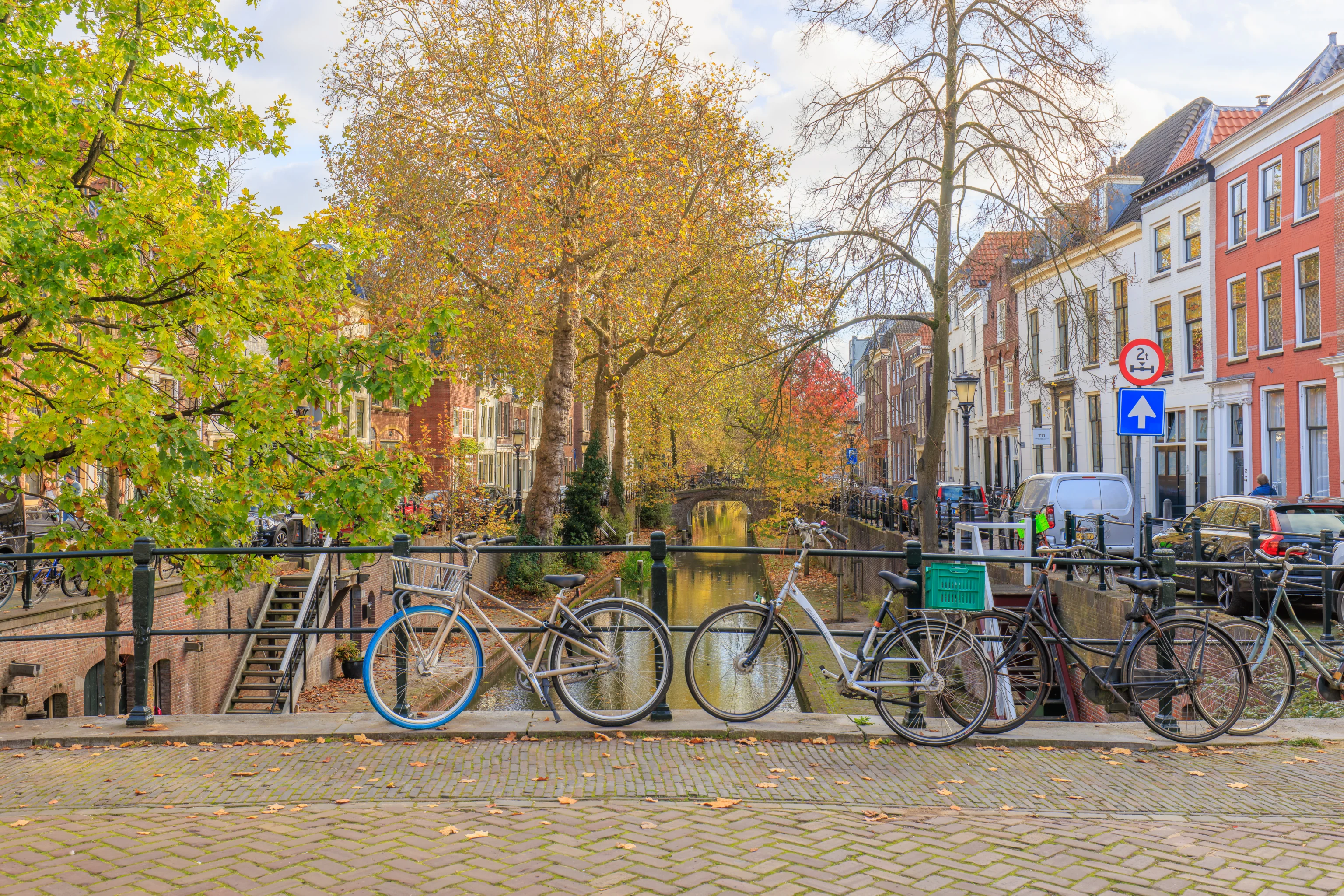
We followed the canal for a few blocks. Most of the trees here have lost their leaves already but there was a bit of color here and there. It was probably quite pretty a few weeks ago.
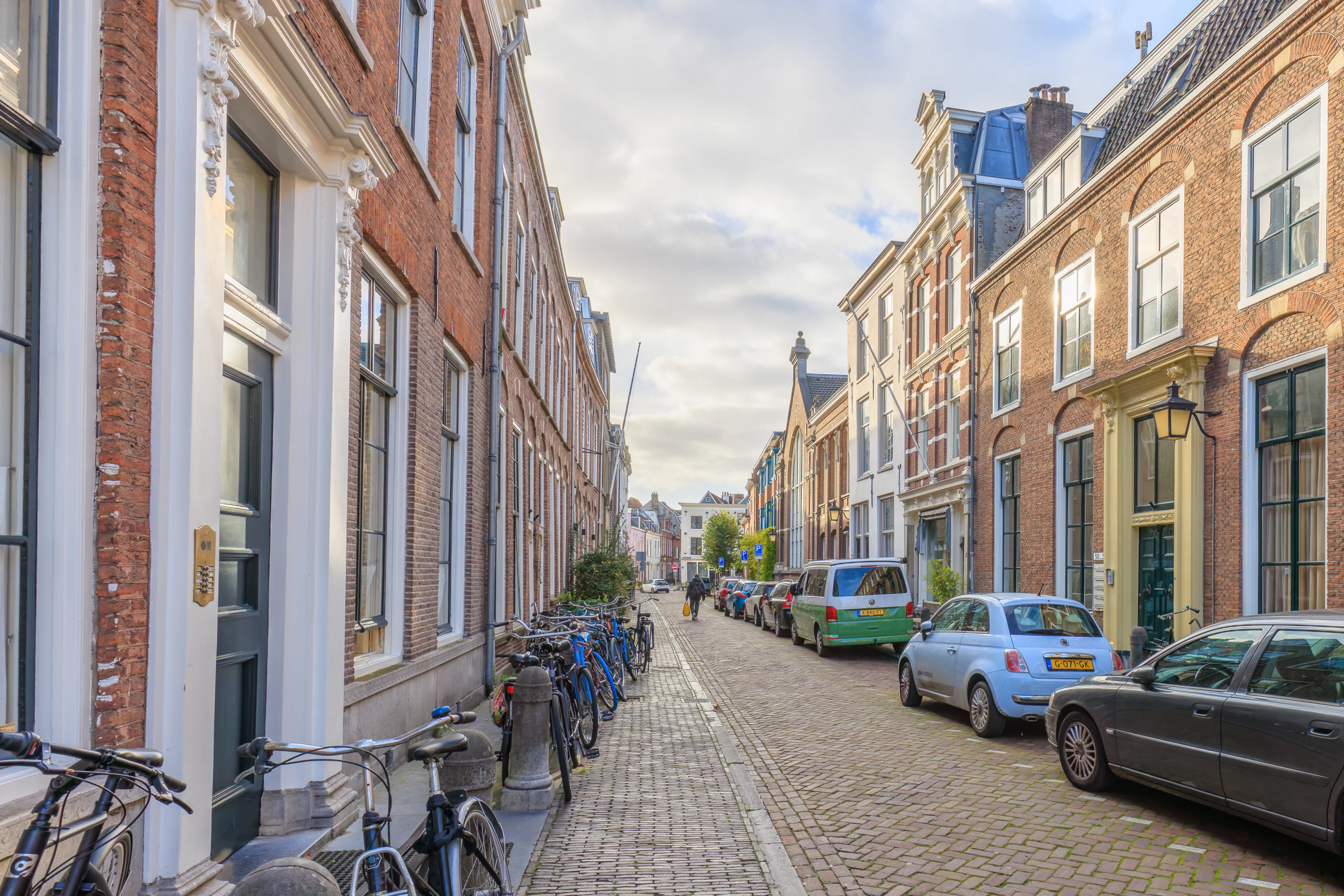
We decided to start walking to the west, away from the Nieuwegracht and towards the Oudegracht.
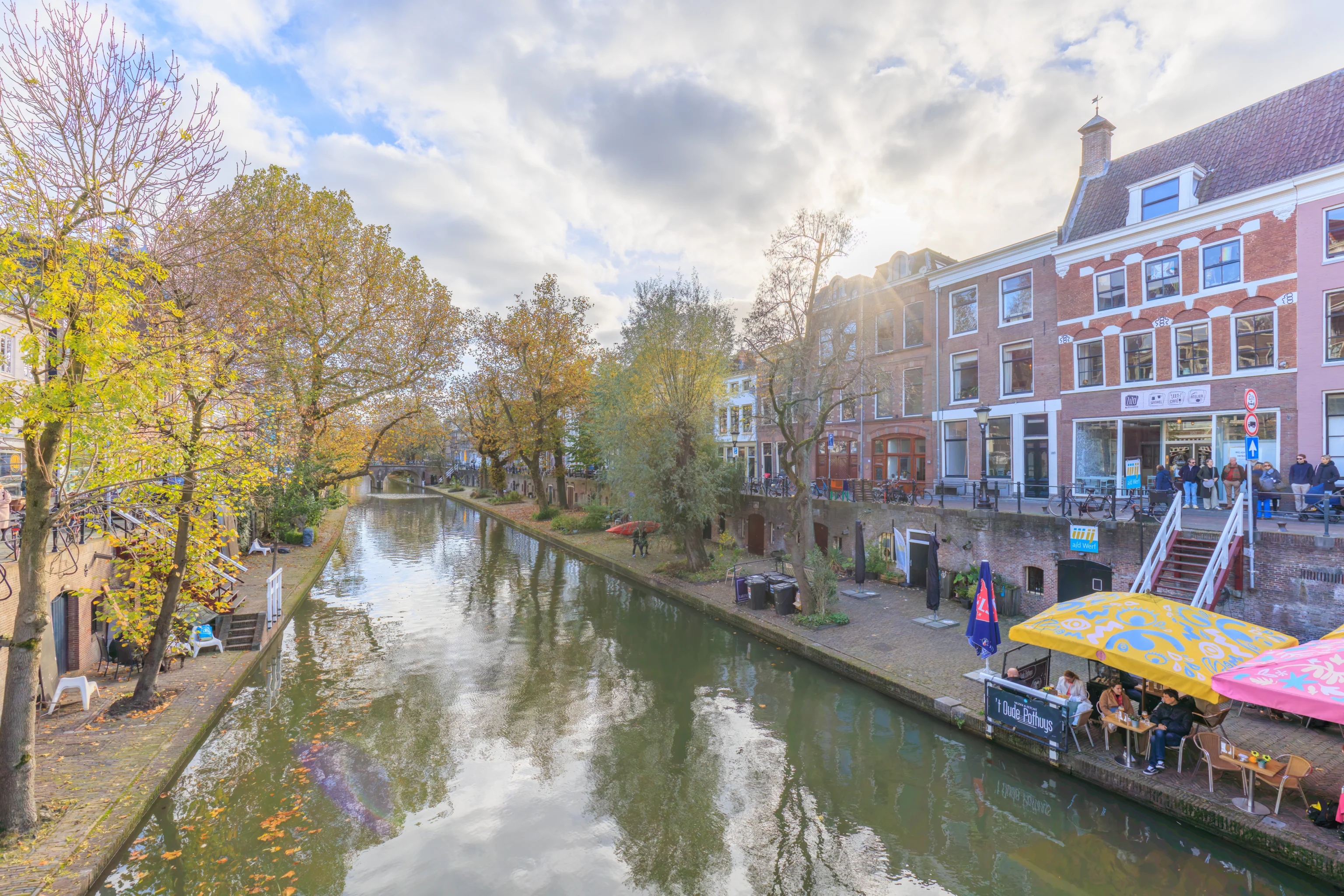
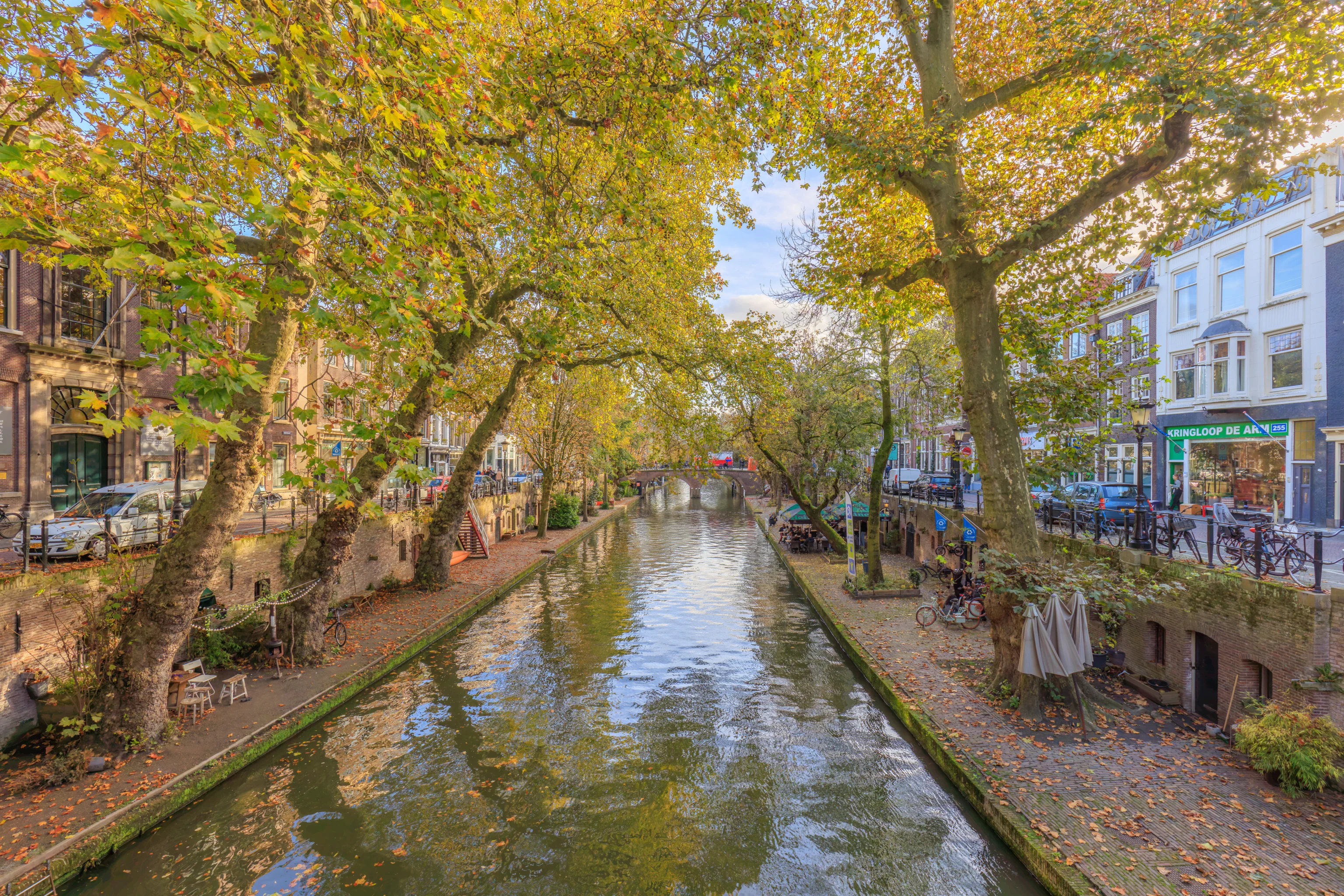
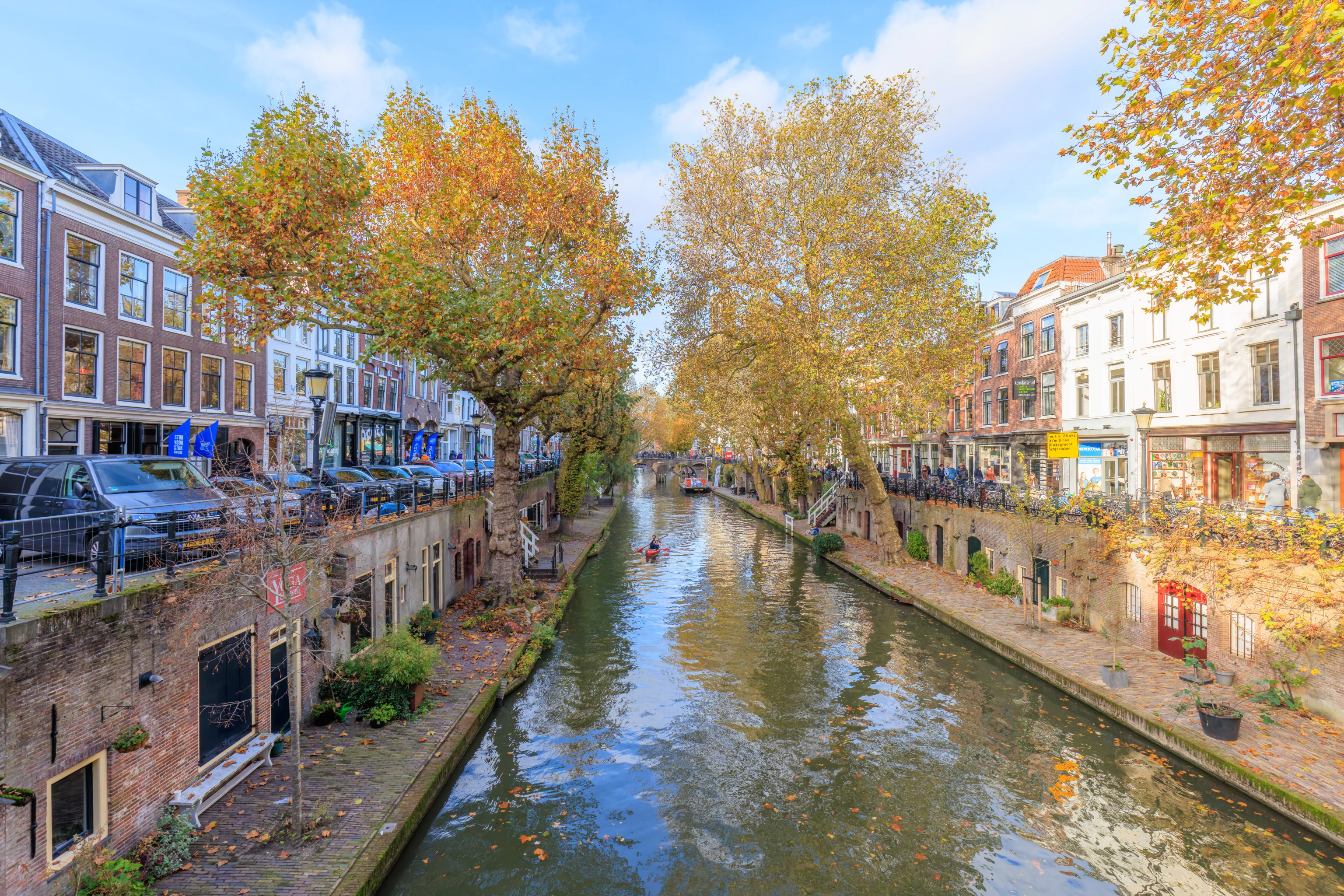
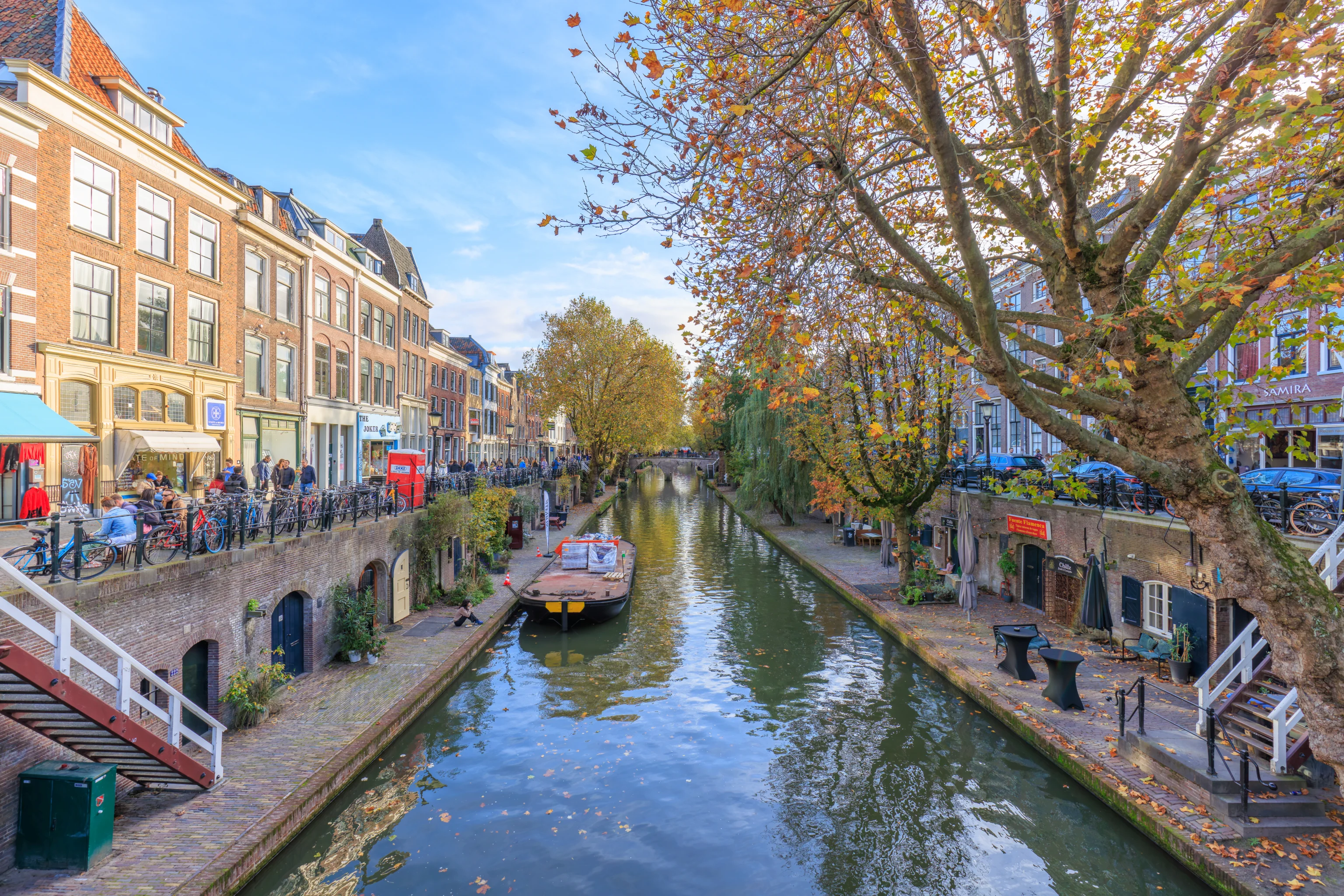
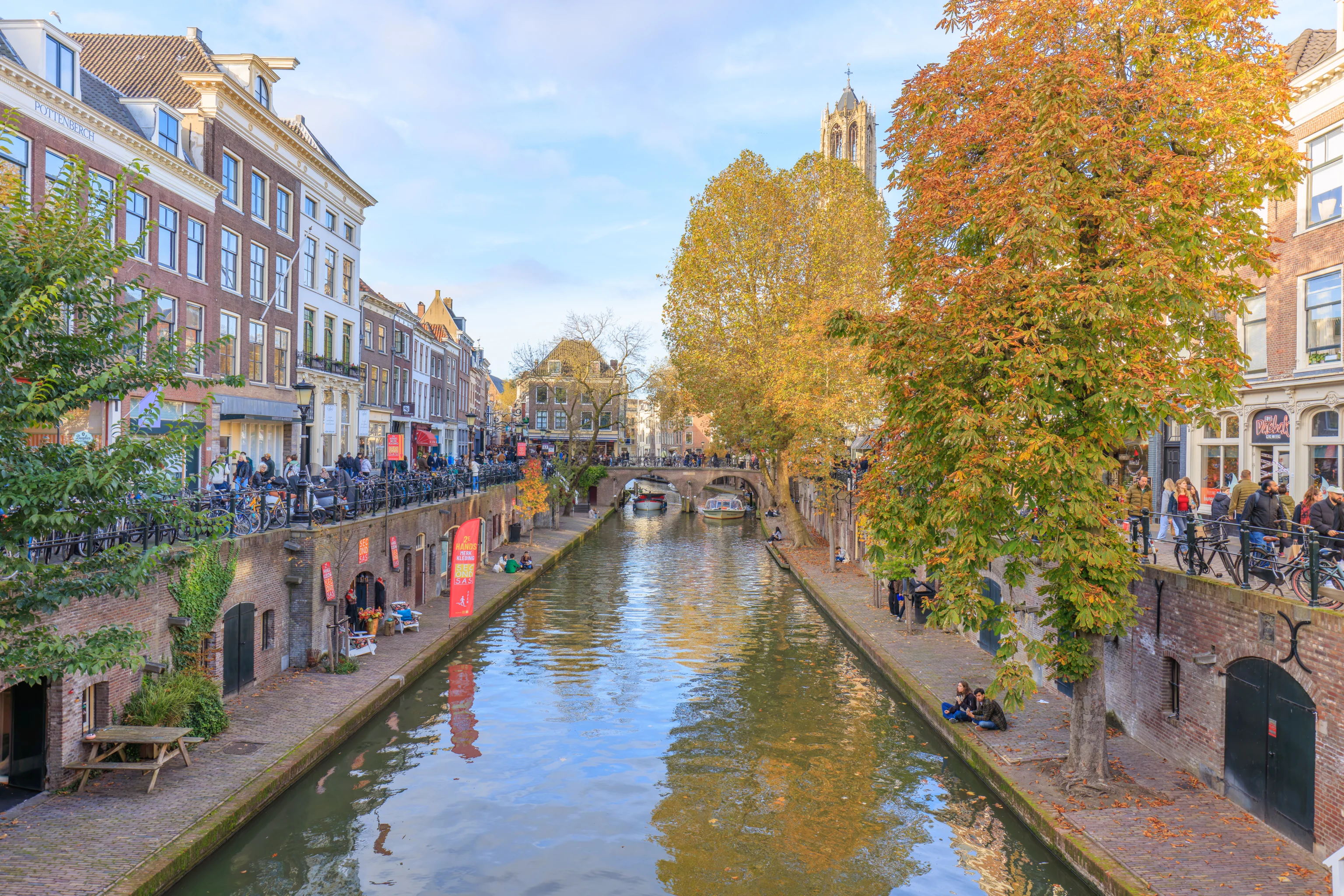
Upon reaching the Oudegracht, we followed it back north towards the Domkerk. This area was livelier than the Nieuwegracht, though not nearly as busy as the area by the cathedral that we passed through earlier. This area also seemed to have more leaves remaining on the trees.
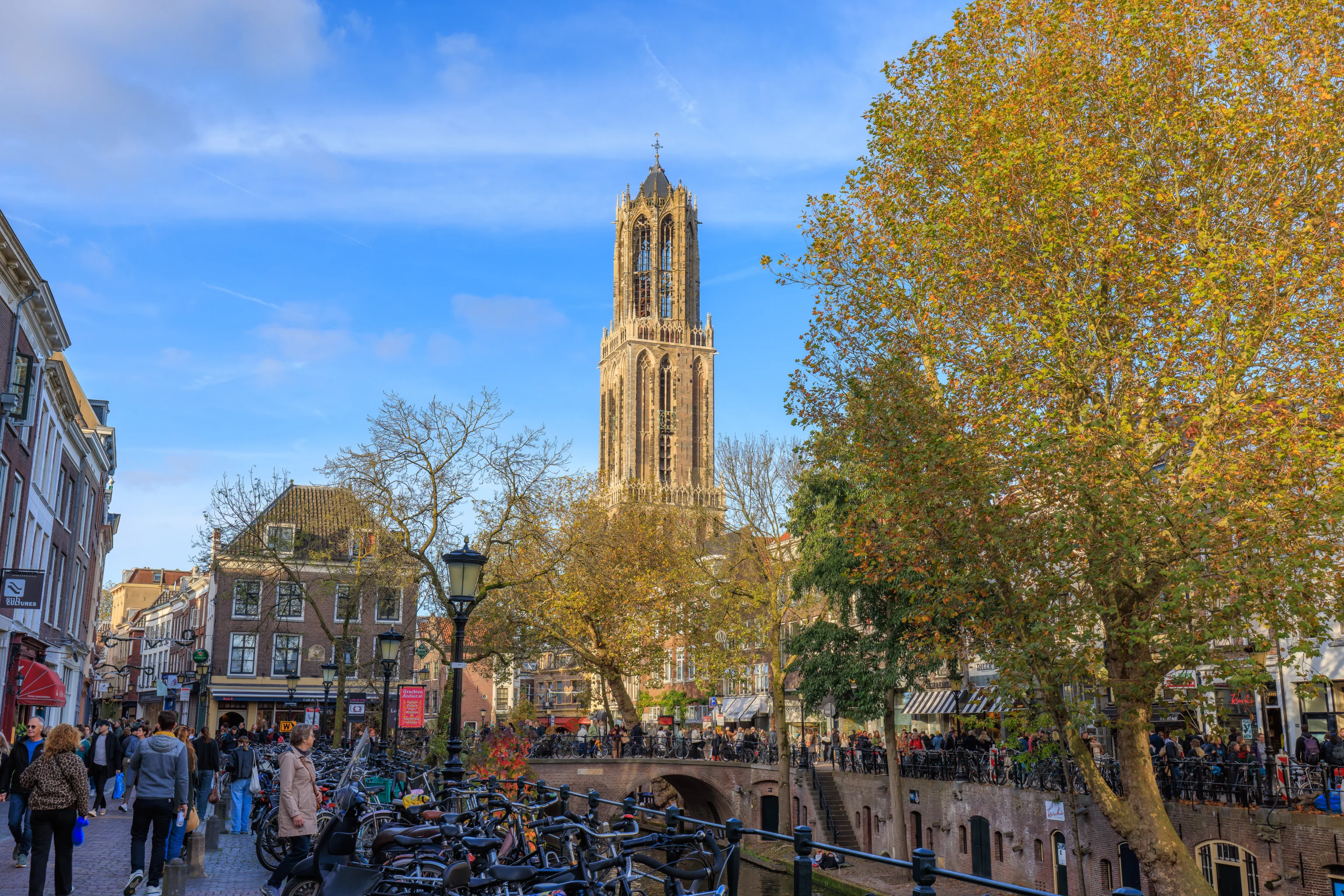
Almost back to the Dom Tower! Although it was pretty busy in this area earlier in the day, it was much busier now. We were a bit surprised to find so many people in this small city!
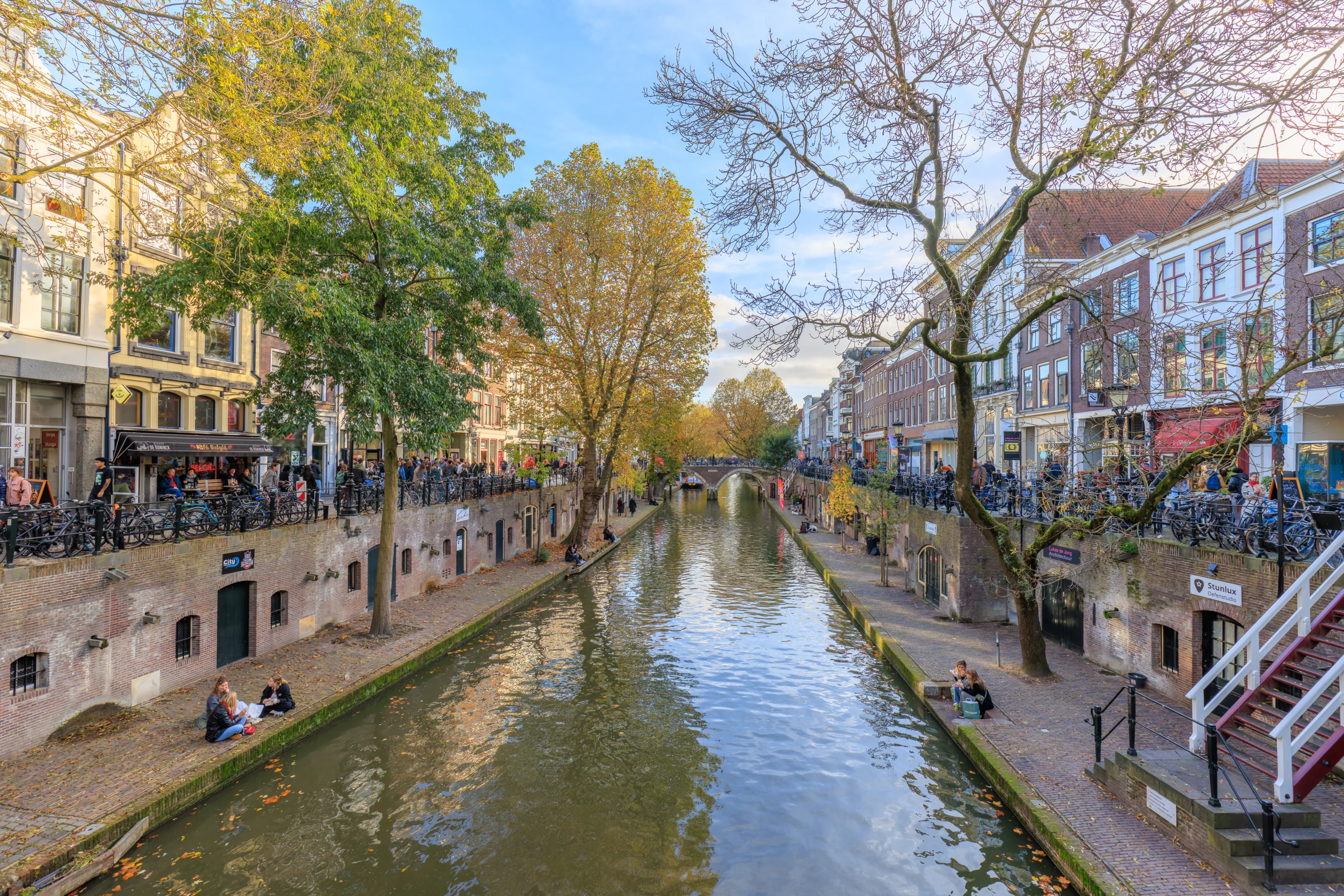
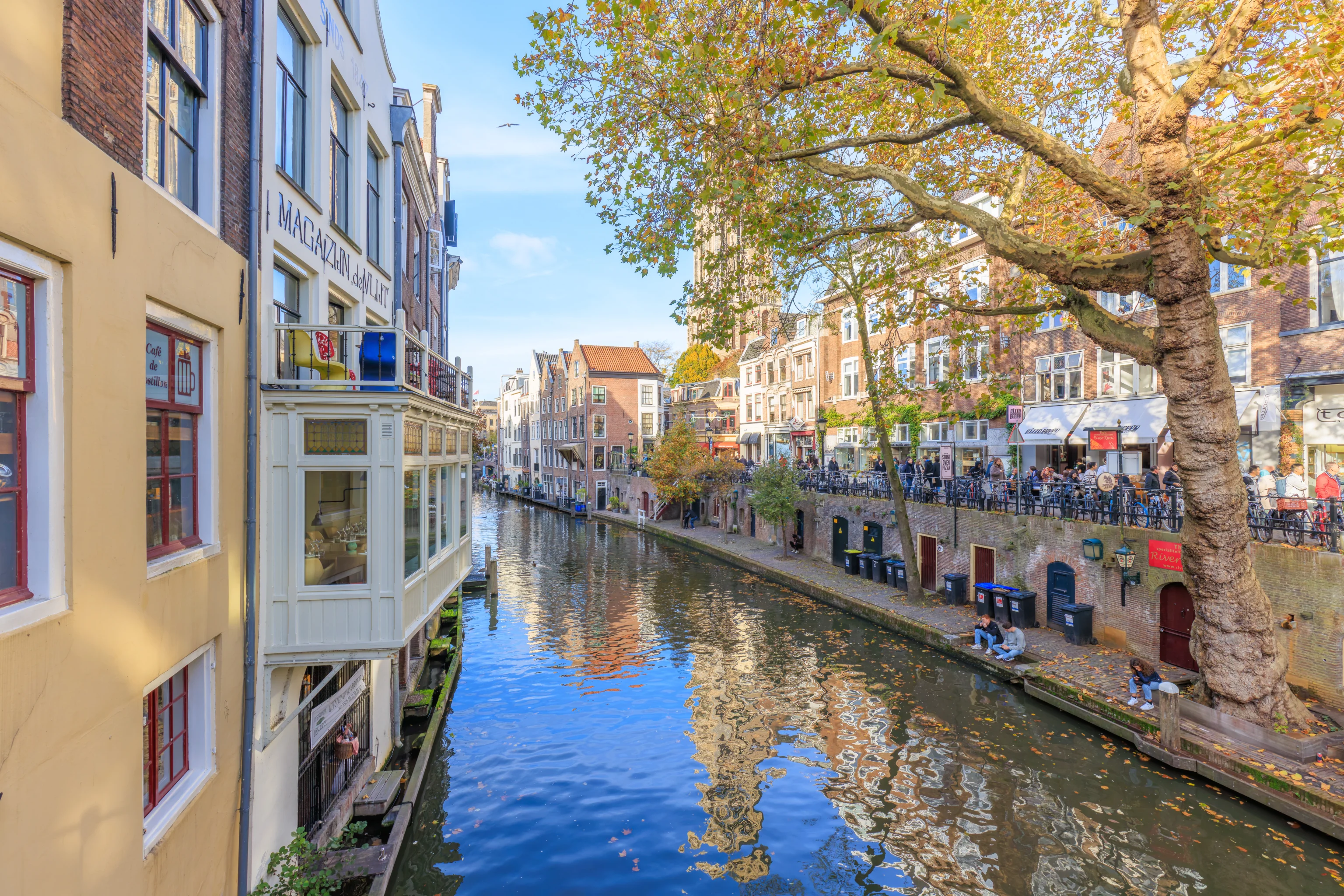
One final block or so of canal before we reach where we walked below the Dom Tower earlier. After reaching that point, we decided to turn to the left to return to the train station via some paths that we haven’t been on yet.
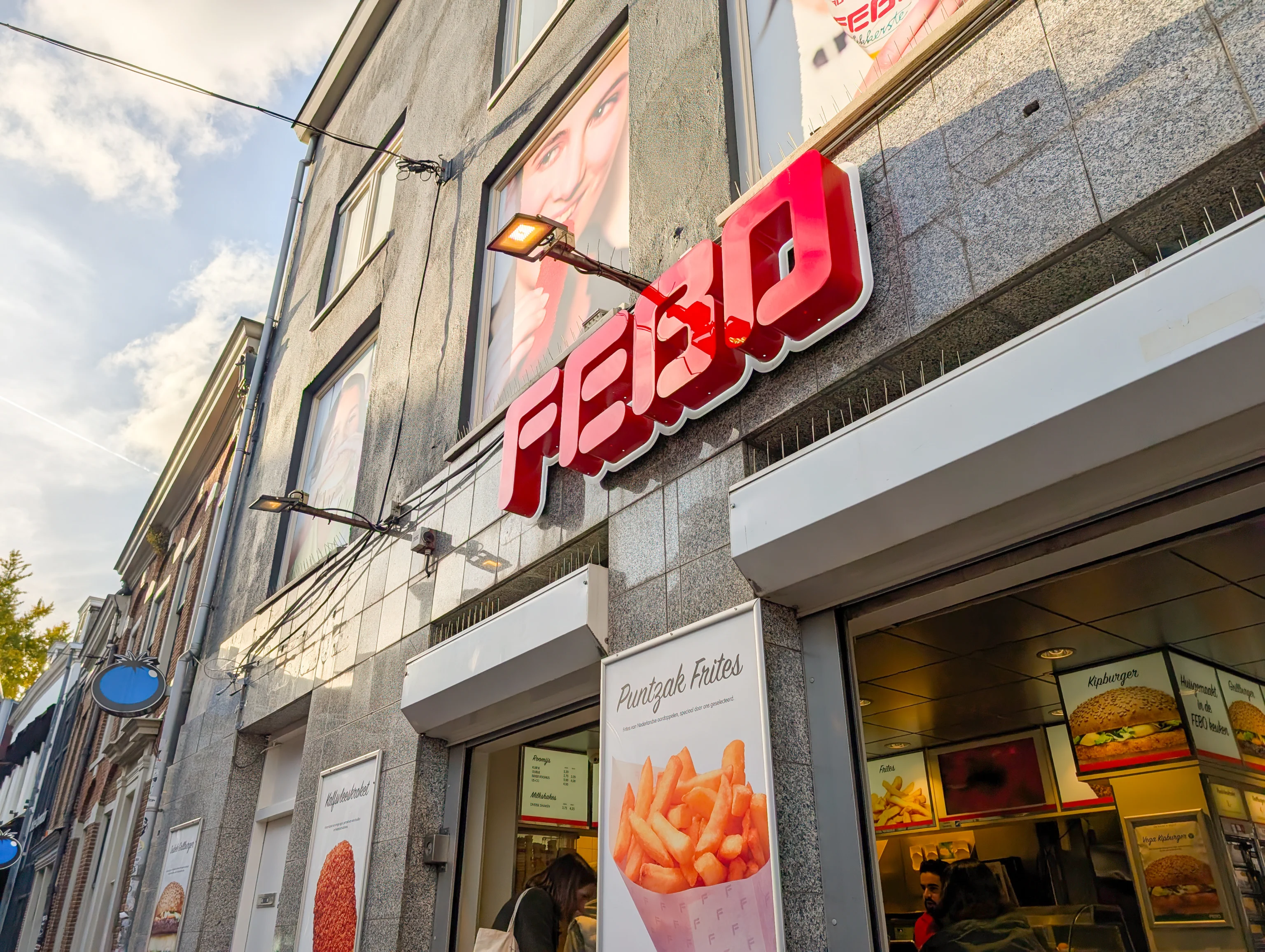
We came across a FEBO, a Dutch chain that specializes in hot food vending. The way it works is that you pay the indicated price, just like a drink vending machine. That unlocks one of the small food cubbies where the item is located. We never figured out how to know which to open. They opened the correct one for us from inside when they saw we were confused!
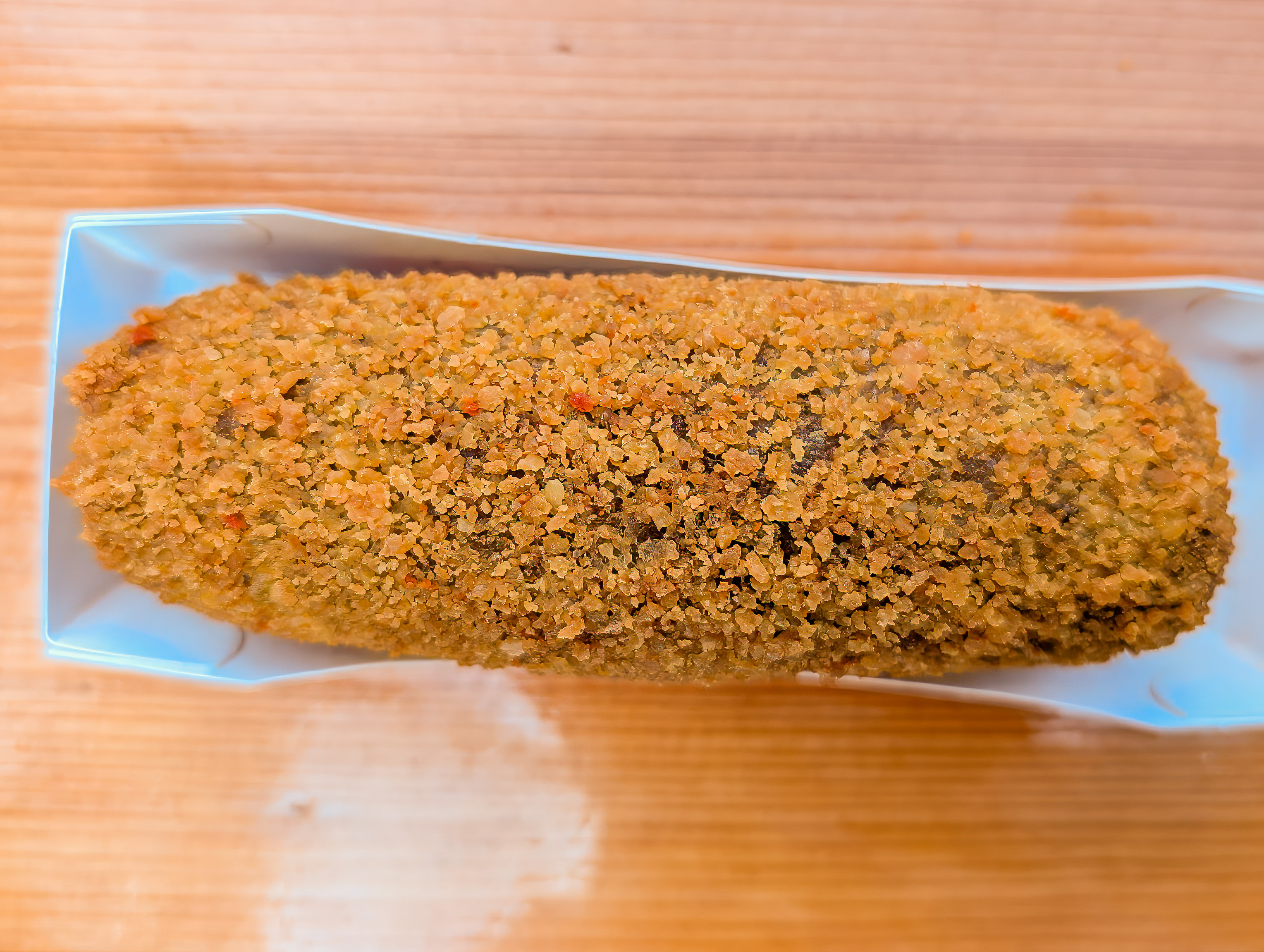
We got a kroket, basically, similar to a beef croquette and similar to the ones we had yesterday at Het Kroket Loket in Rotterdam. It was hot and satisfying.
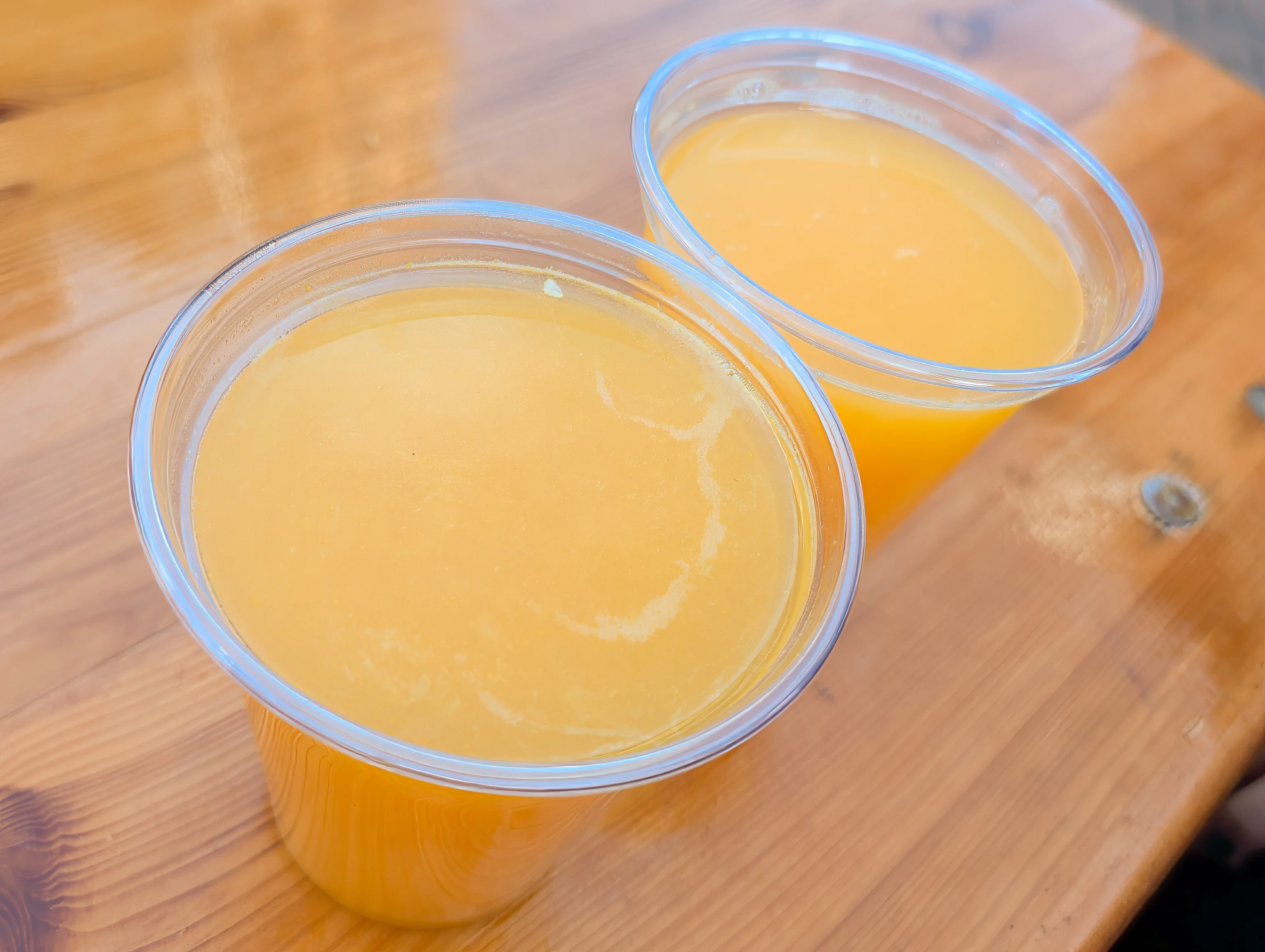
We also got two freshly squeezed orange juices for €2 each. They were pretty good, though we believe they are not usually available at FEBO locations?
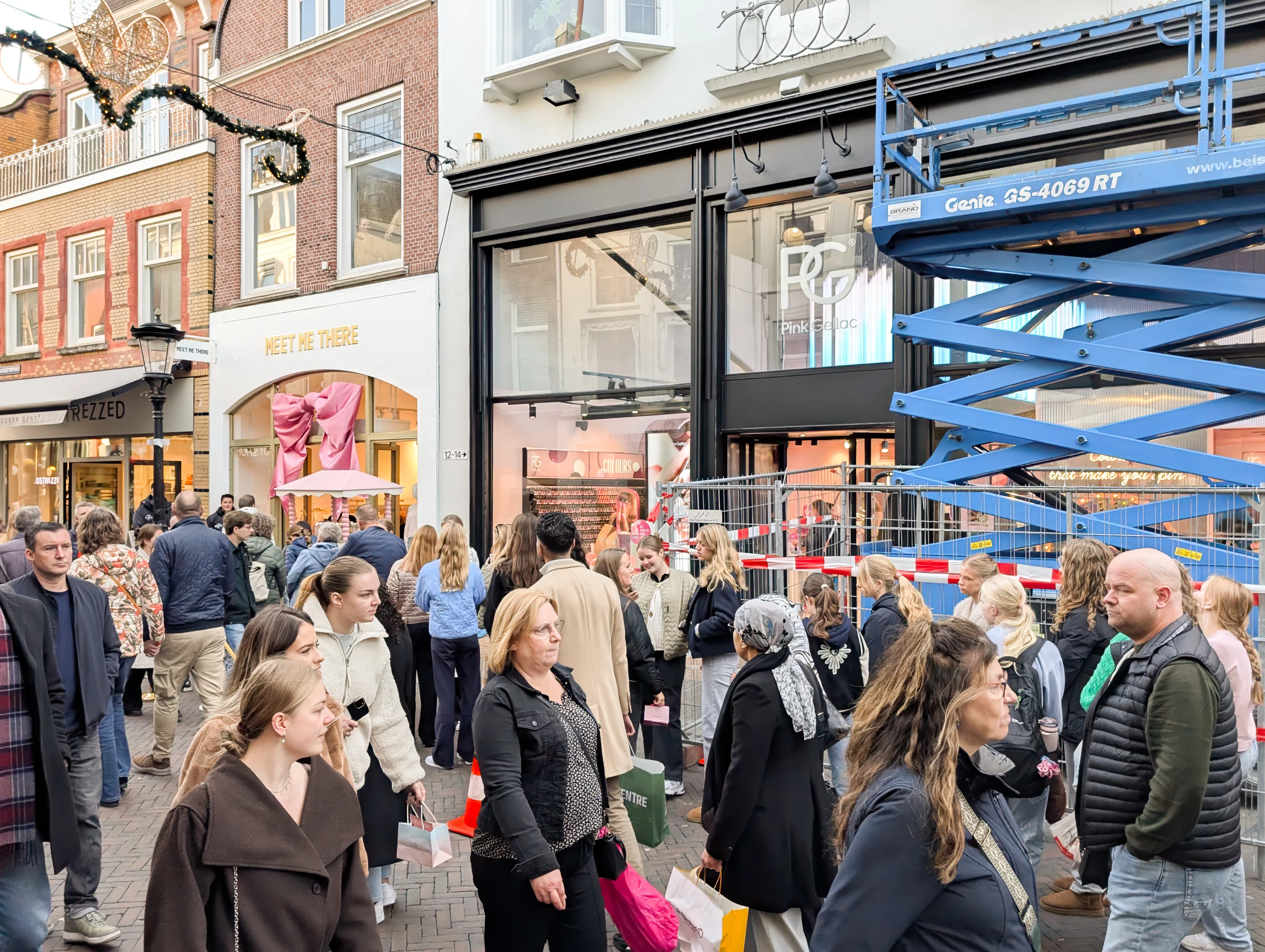
As we got closer to the train station, we came across a long queue going to store called Meet Me There. It is apparently a clothing brand from Amsterdam. The long line of people reminded us of the long line that we saw for the Stussy store at the Royal Hawaiian Center in Waikiki. There’s a pretty good Reddit post about it. Maybe it’s a similar trendy thing? Unlike Stussy, they were serving snacks here to people who were waiting in line.
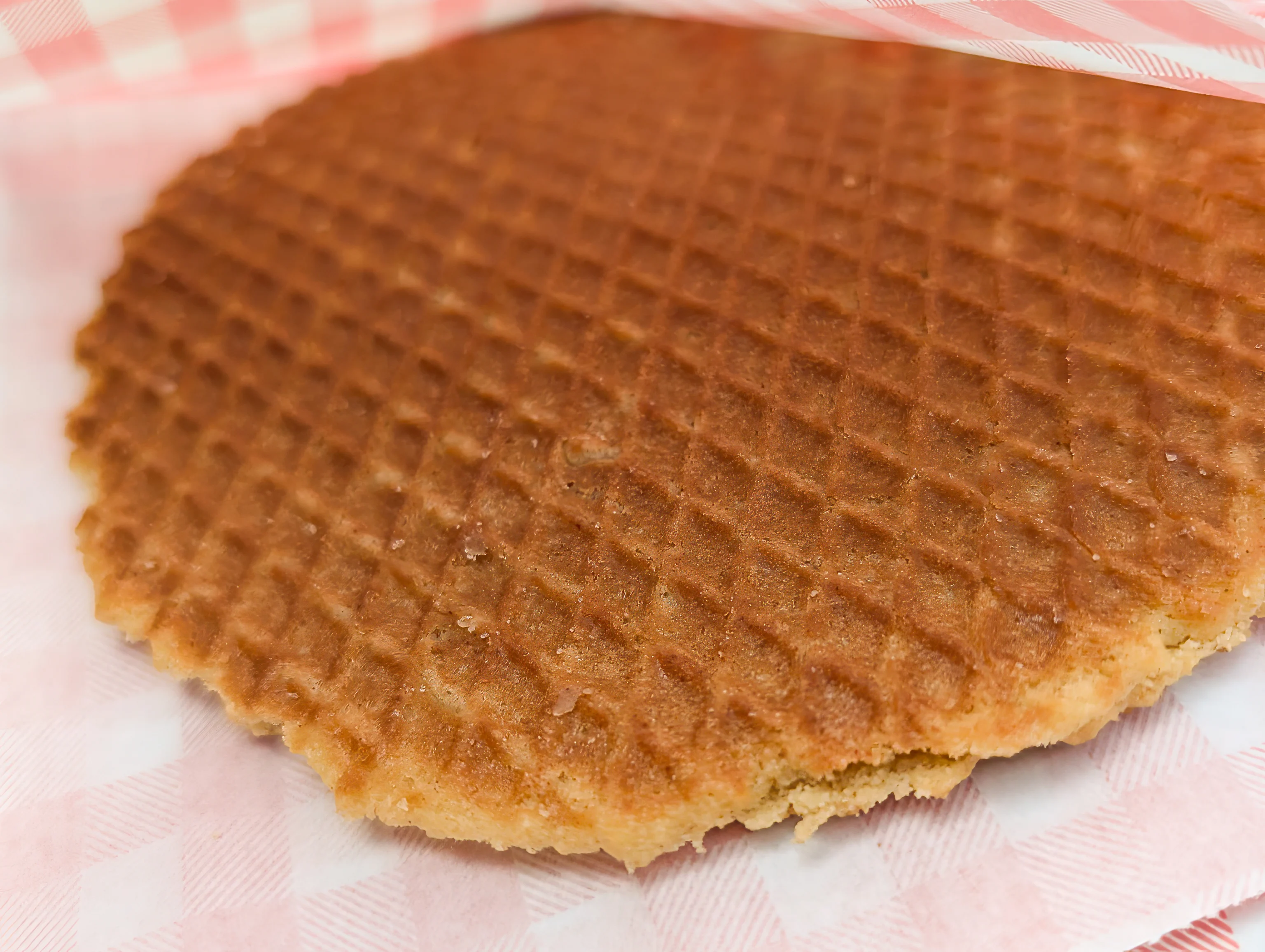
We came across an outdoor market, Vredenburg Market, right by the east entrance of the Hoog Catharijne mall. There were many vendors selling food. We queued up for €2 stroopwafels, the cheapest we’ve had so far! They were good with the caramel filling happily filling the entire inside, unlike the one we had yesterday evening in Rotterdam! We didn’t photograph the vendor so their name is now lost to time…
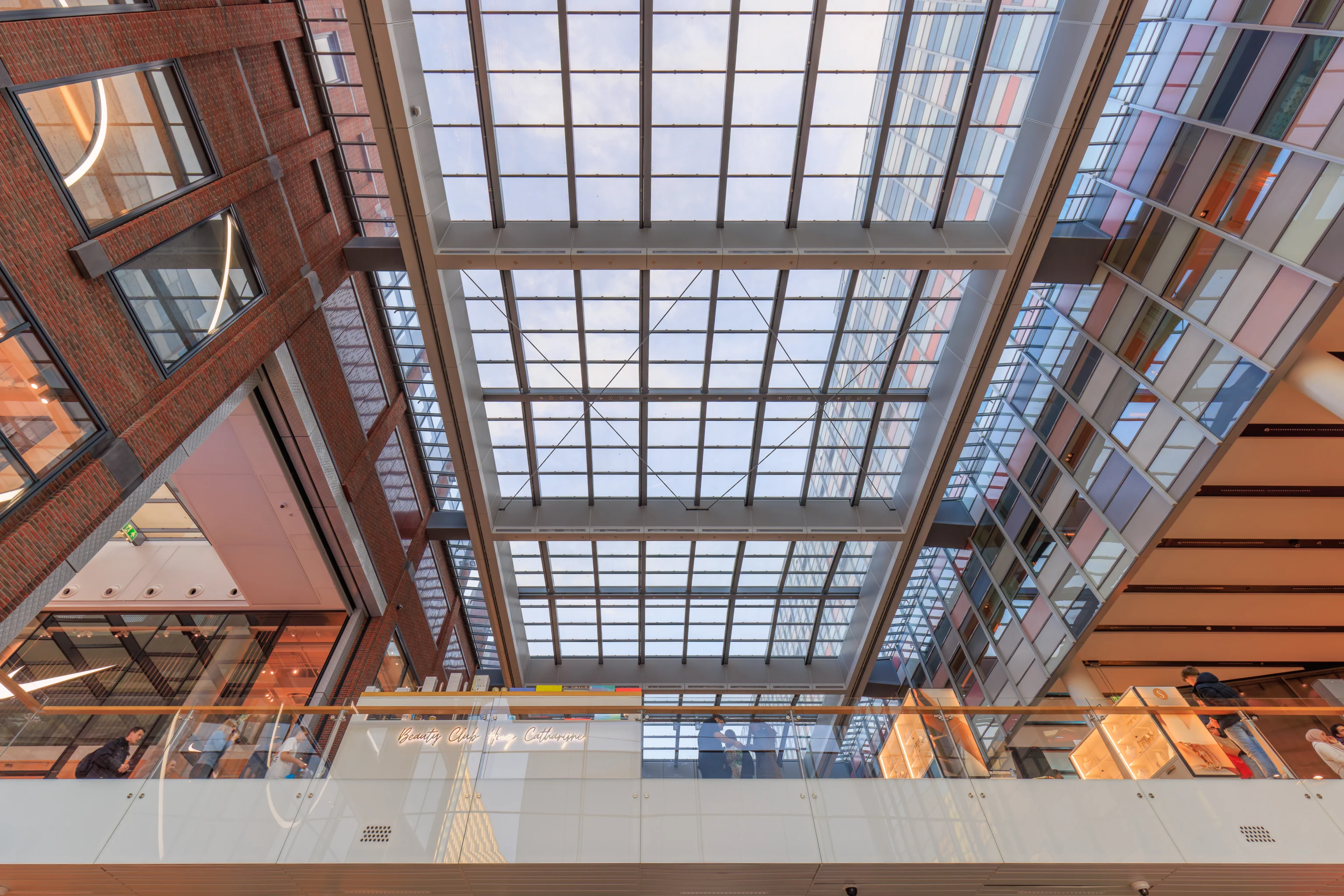
We went into the mall to walk through to the train station. It’s a mall. A nice looking mall, but still just a mall.
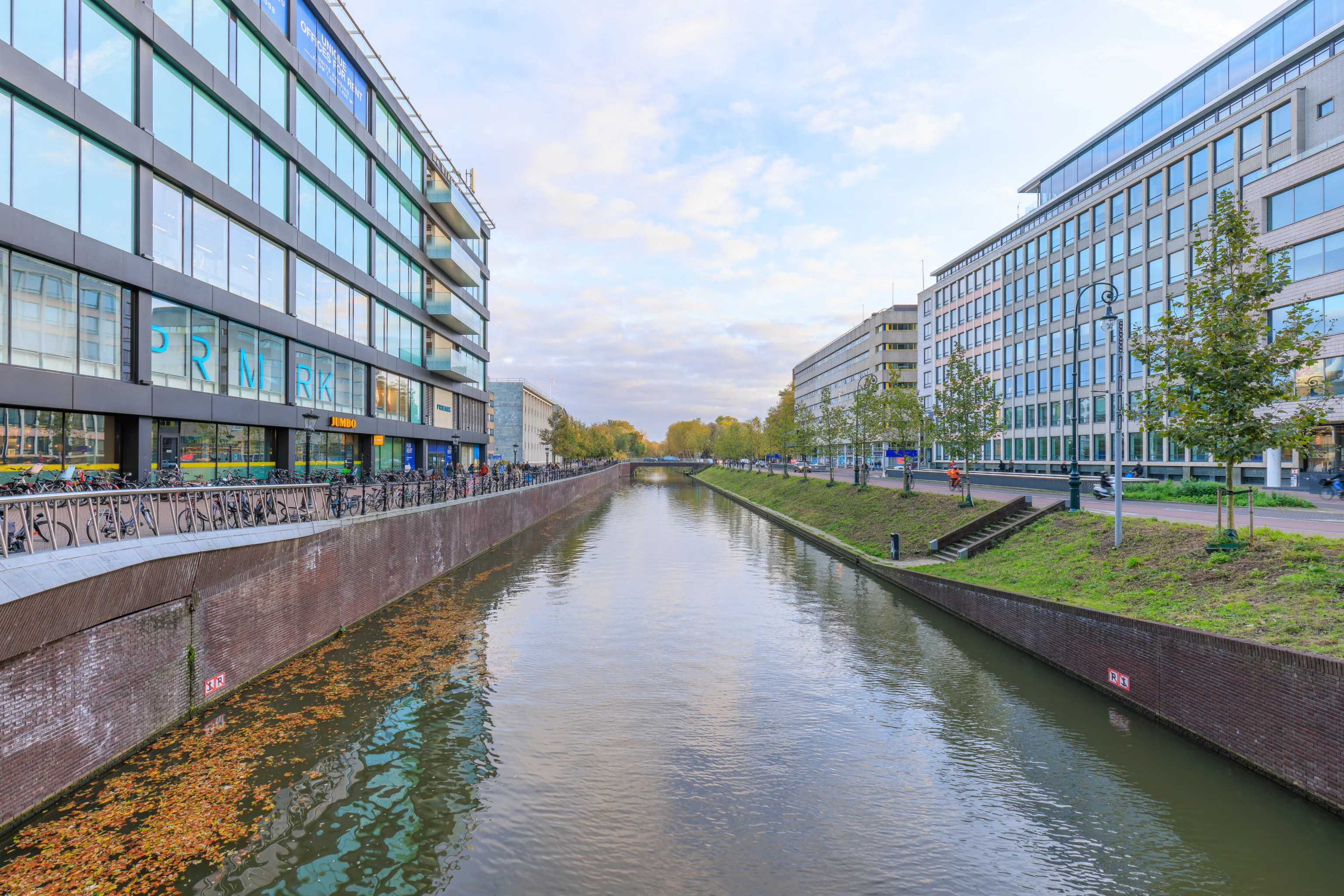
We took a quick look at the canal on the south side of the mall. Earlier in the day, we exited via the opposite side to the north.
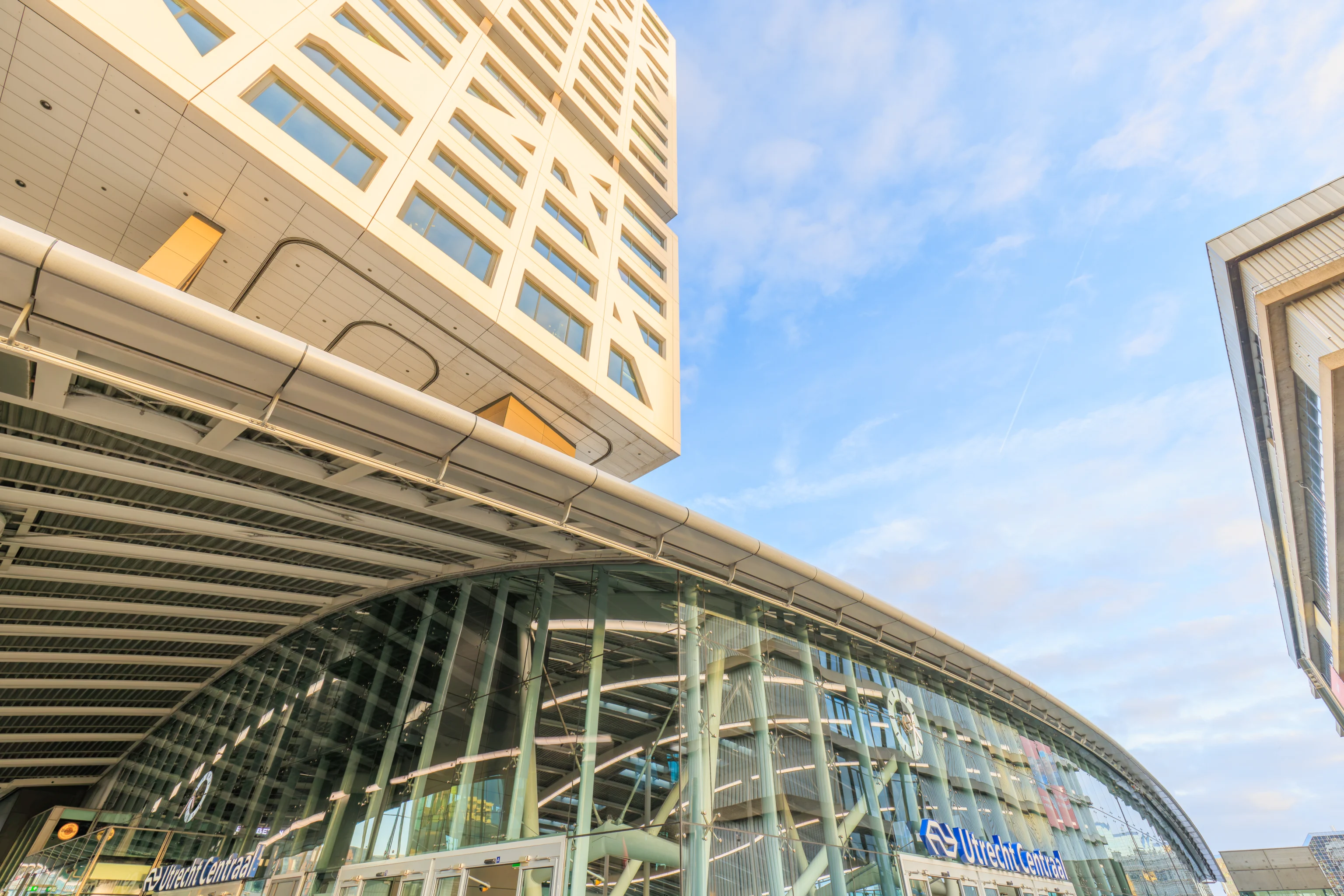
After returning to Utrecht Centraal, we hopped on the next train back to Amsterdam Centraal.
Amsterdam
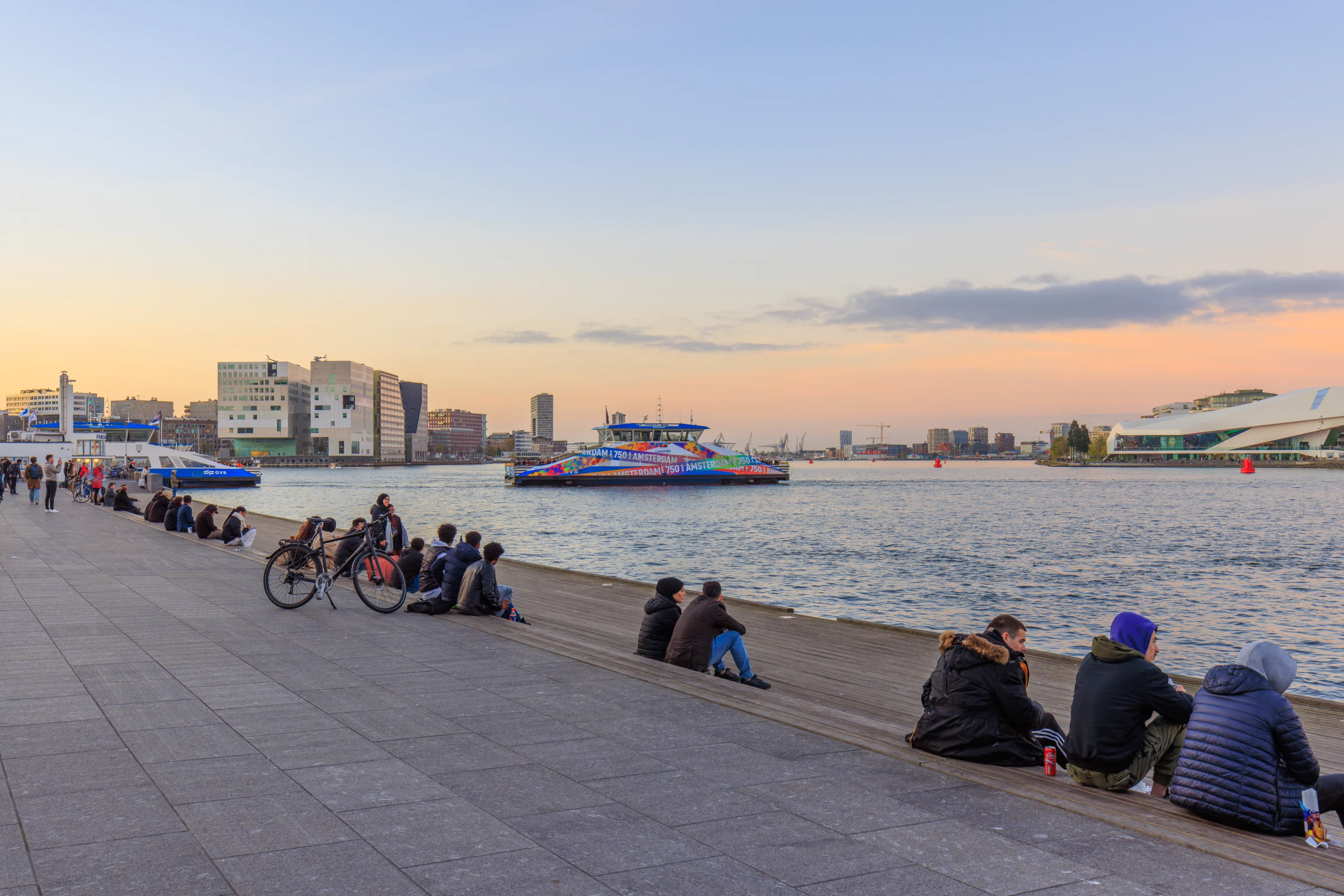
After arriving at Amsterdam Centraal, we took a quick look outside from the north side of the station as it was around sunset. This side of the station faces a canal which opens out to the North Sea about 10 miles away. The other side opens into a large lake or bay, which also exchanges water with the sea at various points.
There are various ferries that depart from this side of the station and go to various points by the canal. The ferry here near the center of the frame was decorated for Amsterdam’s 750th anniversary, which takes place next year.
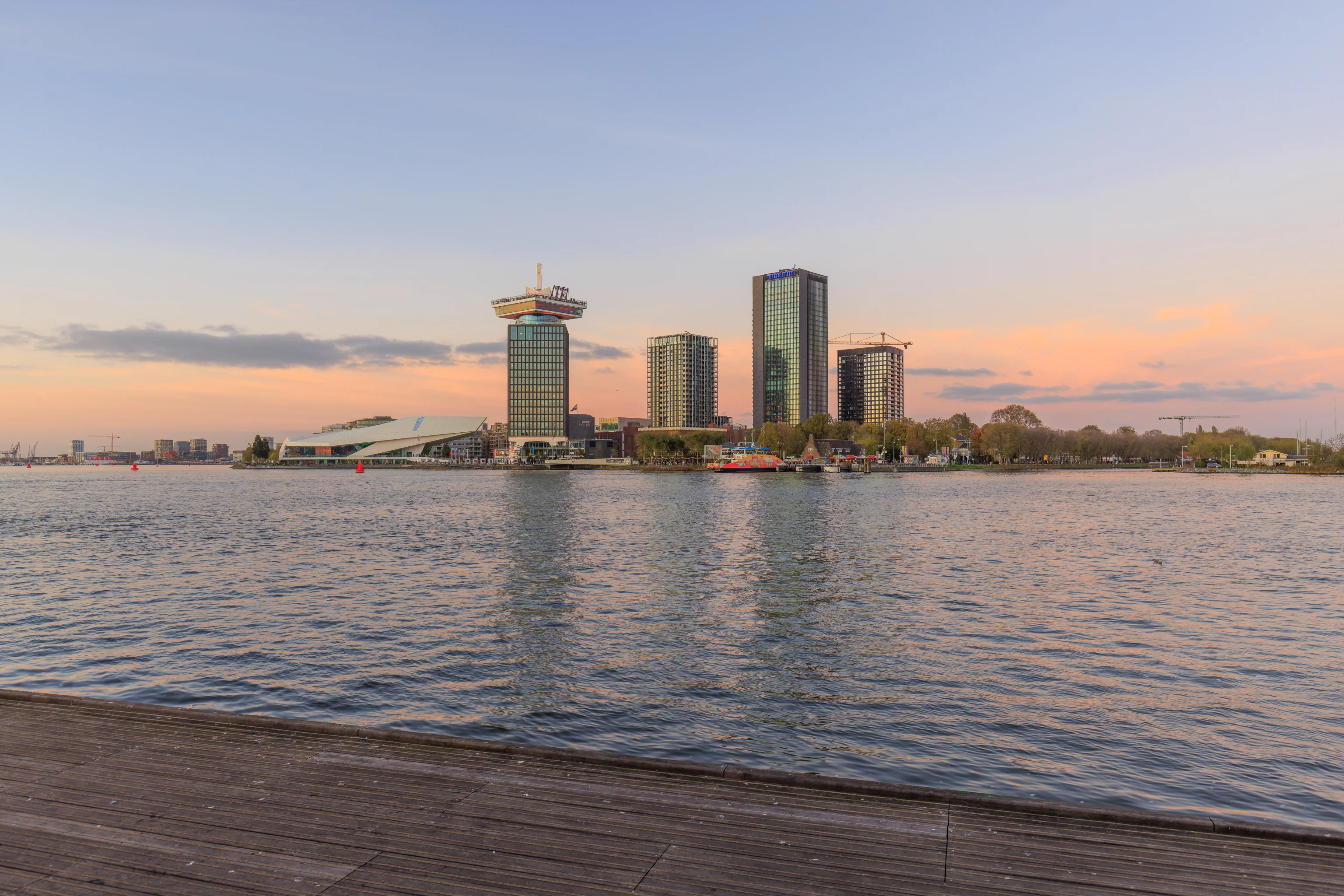
One hotel option was to stay on the opposite side right by the station, easily accessible by a short ferry ride. The tall building on the left has an observation deck, the A’DAM Lookout, on top. Look closely and you can see that there are swings up there as well for adventurous visitors! They are apparently the highest swings in Europe.
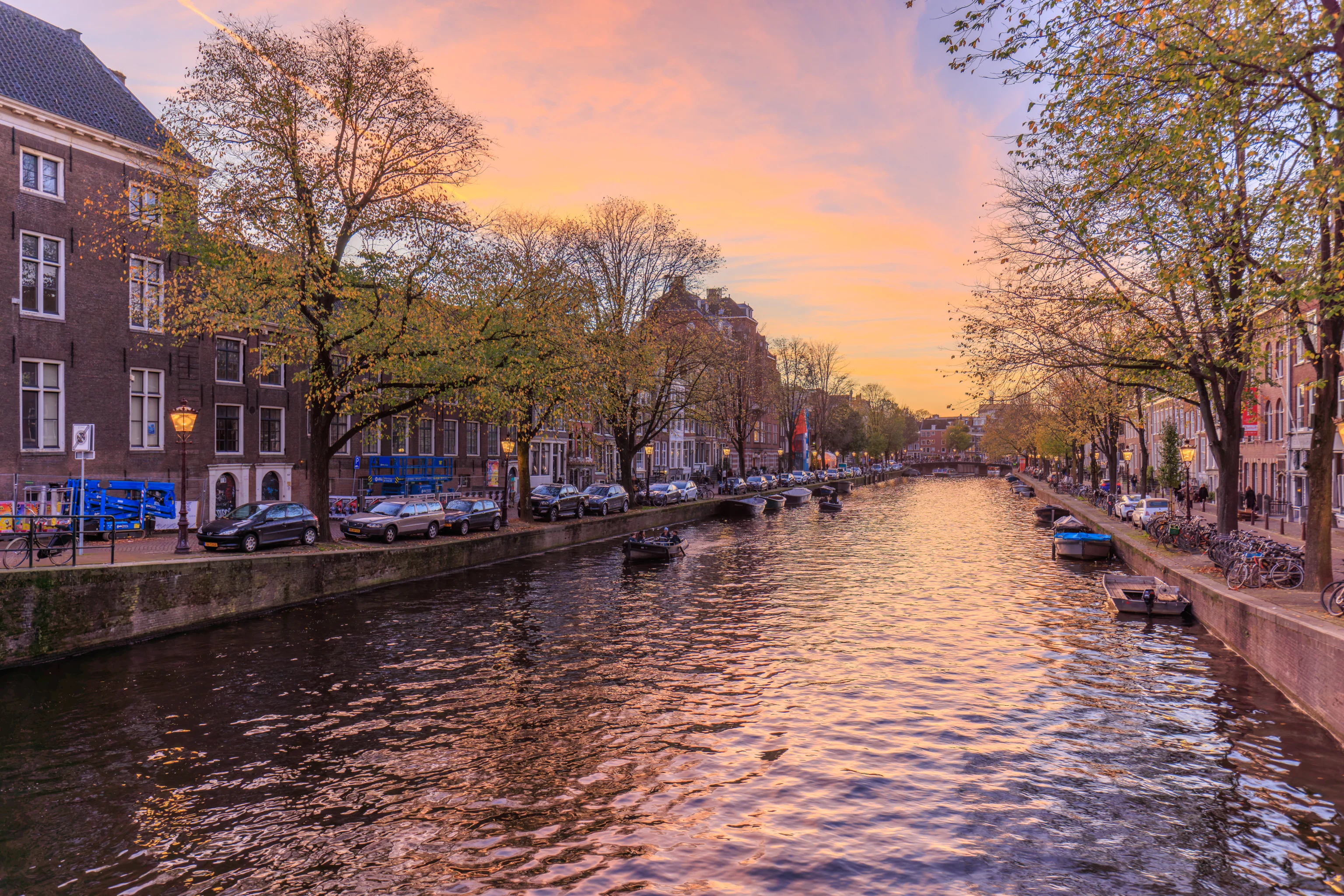
As we failed in our attempt earlier in the day to have Dutch pancakes, we decided to give it another try here in Amsterdam. We took the metro from Amsterdam Centraal down south to the Vijzelgracht station. There was still some color in the sky when we arrived.
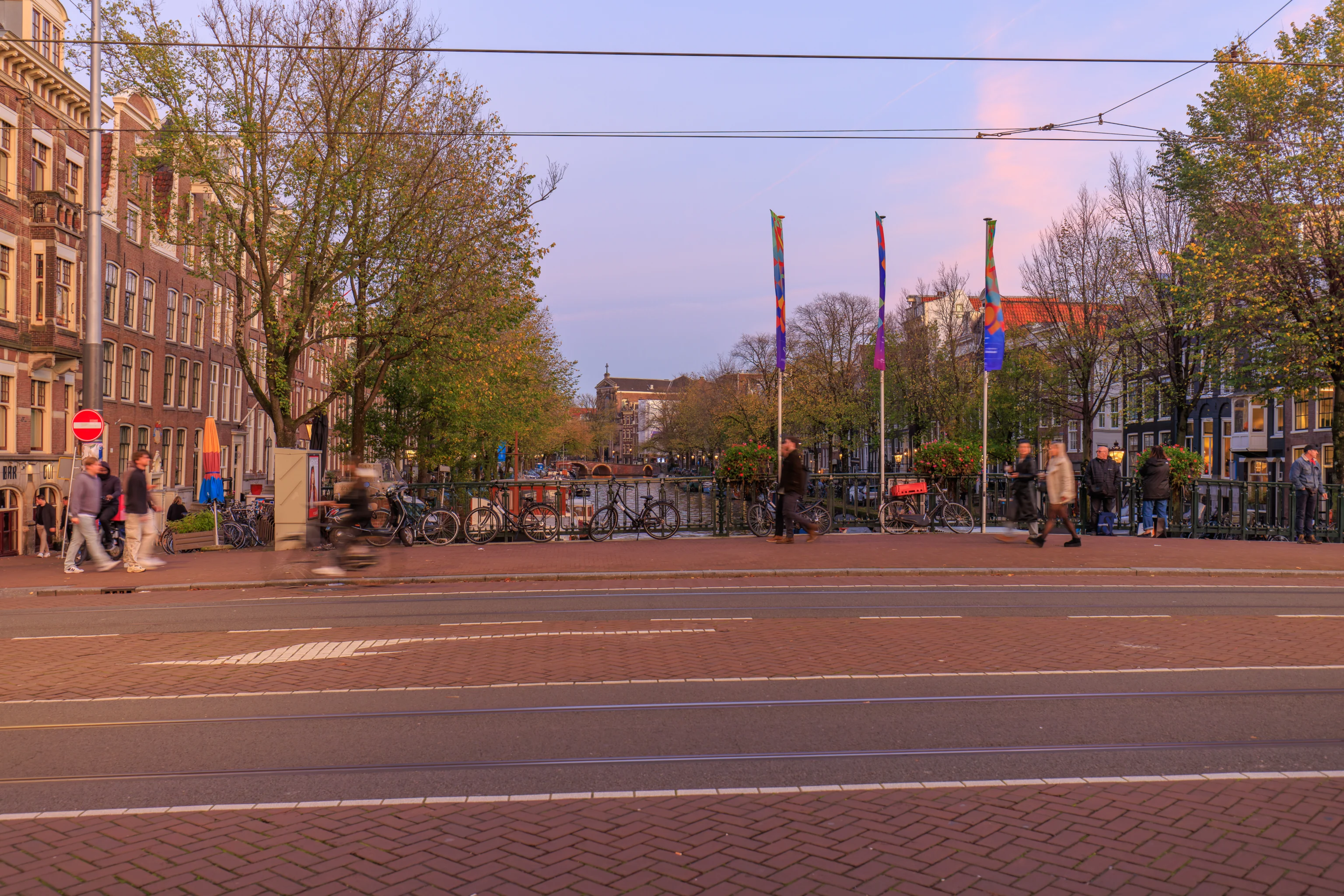
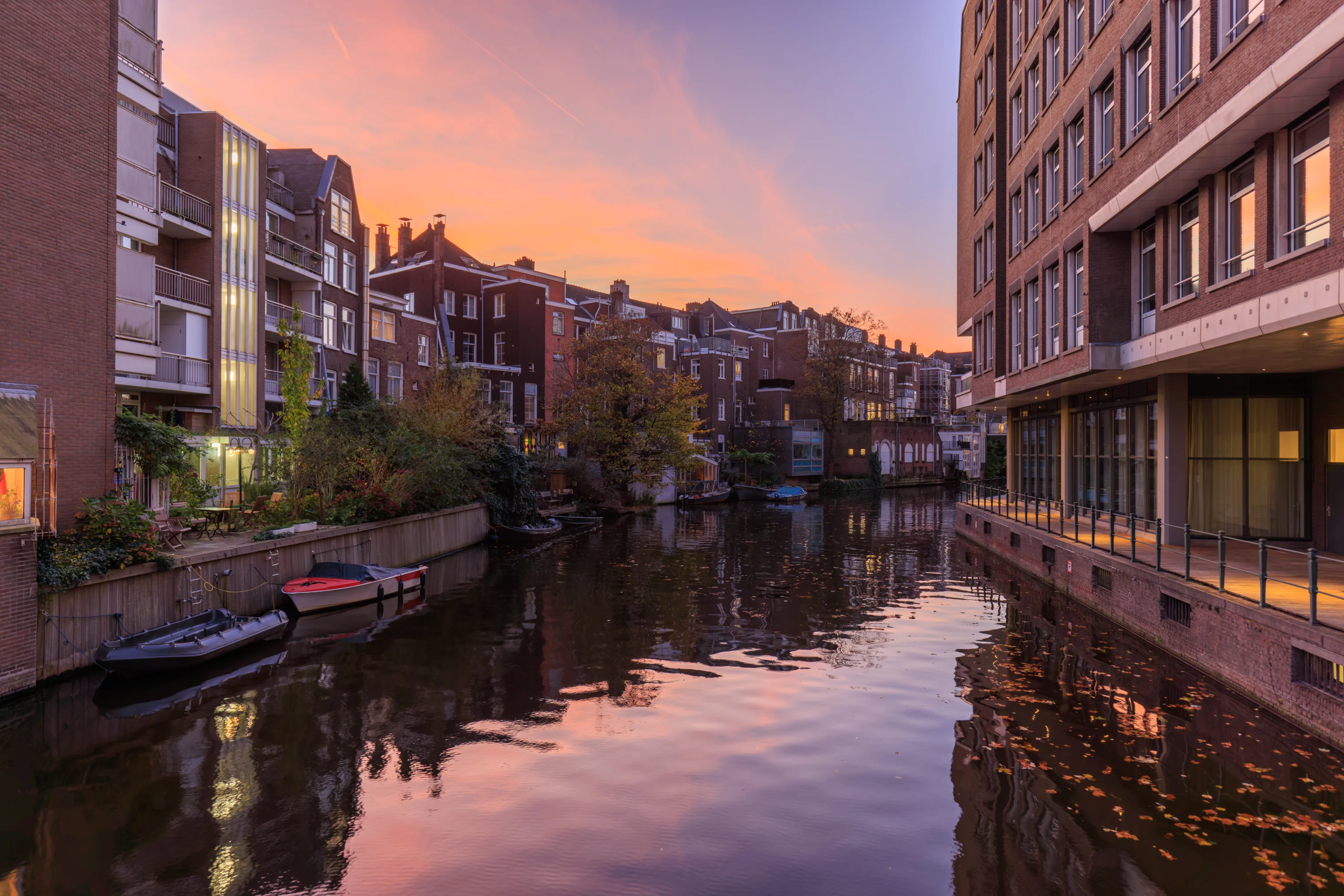
The exit we choose probably wasn’t the closest one as the restaurant, De Carrousel Pannenkoeken, is supposed to be right by the metro station. As the name suggests, the restaurant is located in a building that formerly housed a carousel. There is still a tiny carousel in the middle of the restaurant.
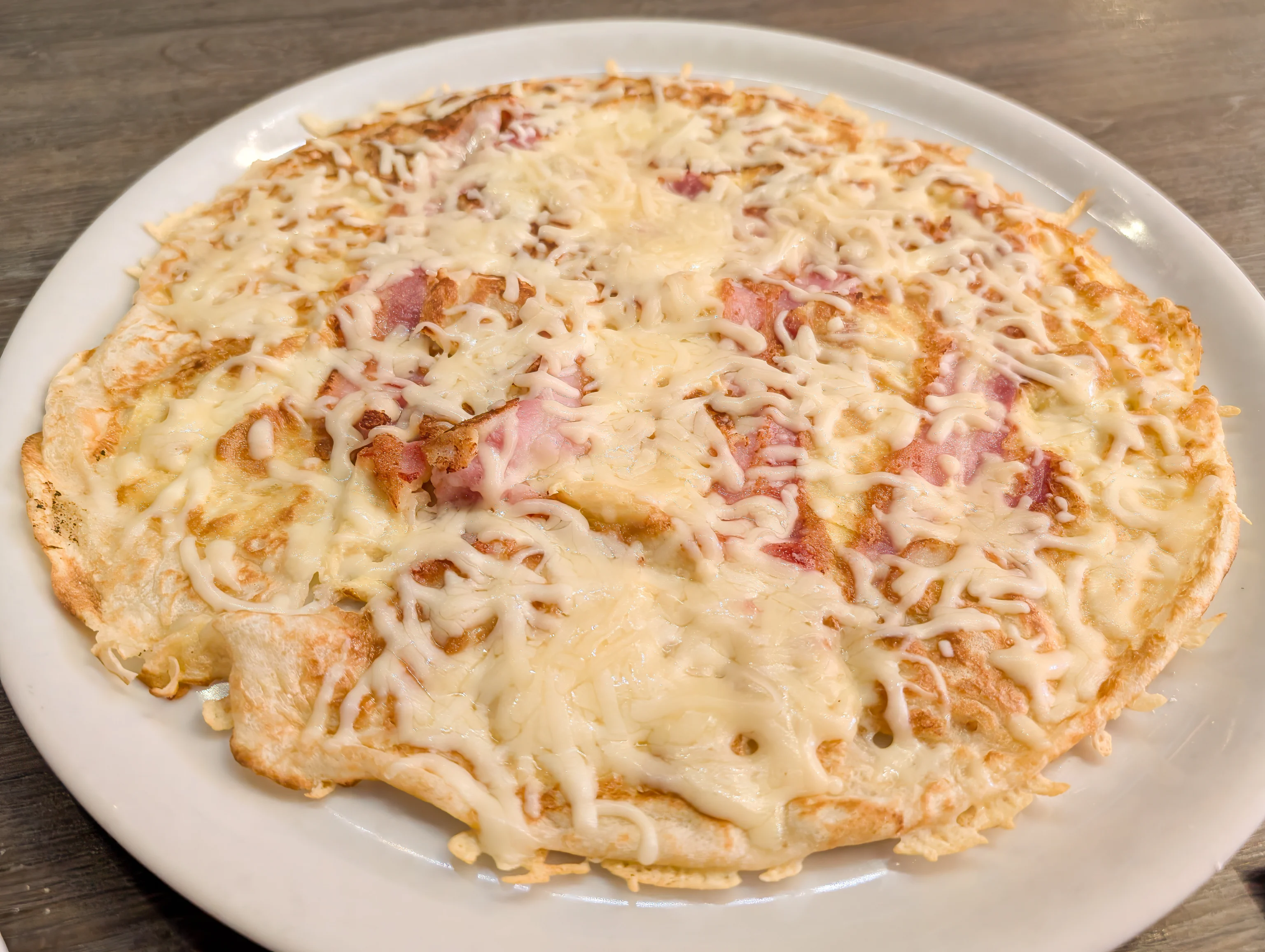
Finally, a real Dutch pancake! Pannenkoeken are thin crepe-like pancakes. There were many options as this is a pancake restaurant. We got bacon, egg, and cheese. The bacon was largely indistinguishable from ham. It all tasted well together, particularly when we rolled it up.
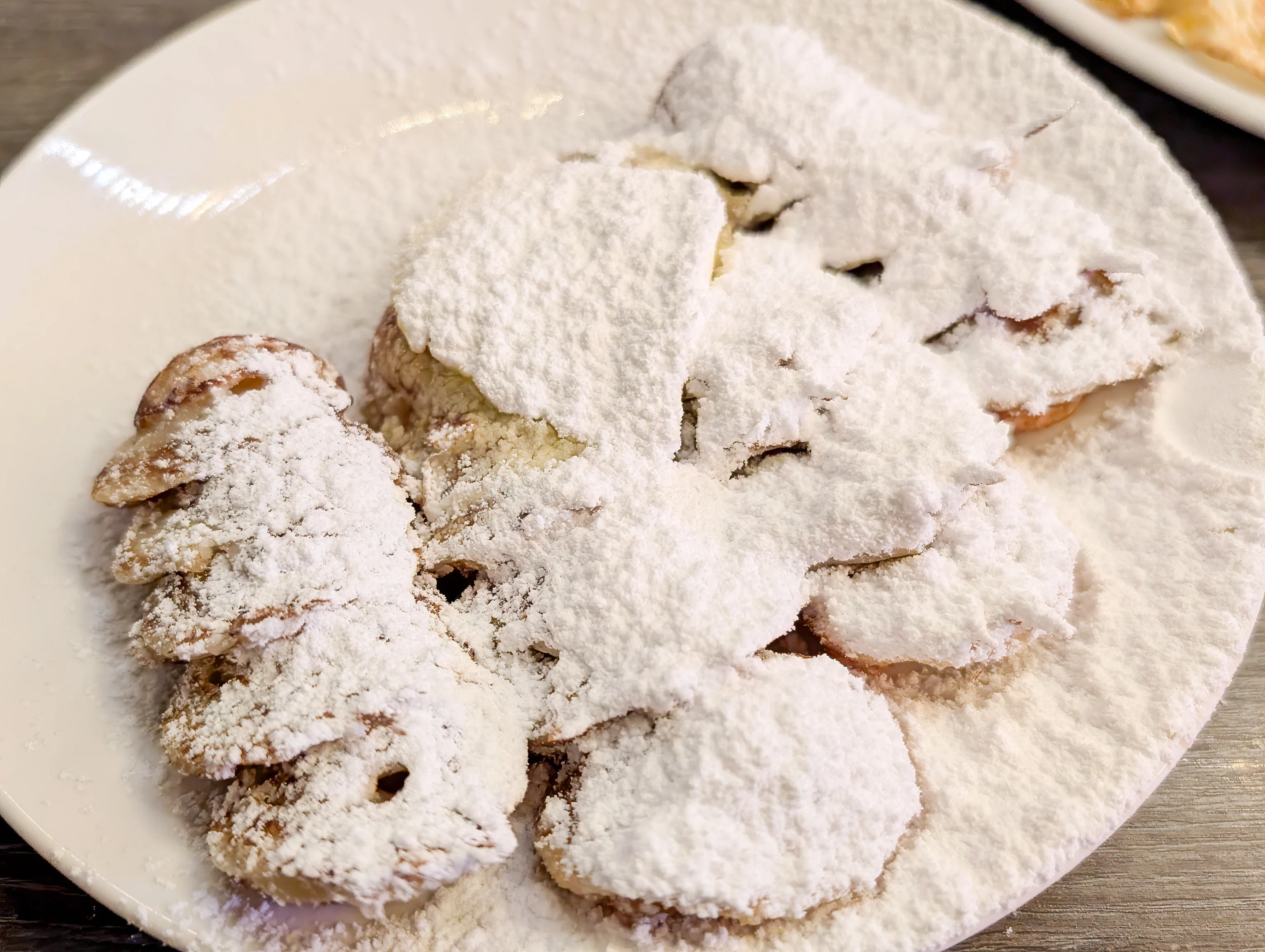
We also ordered poffertjes, which are tiny mini-pancakes. We got the simple sugar and butter, which was a good combination. Both dishes were excellent and much better than the American pancakes we had for lunch in Utrecht.
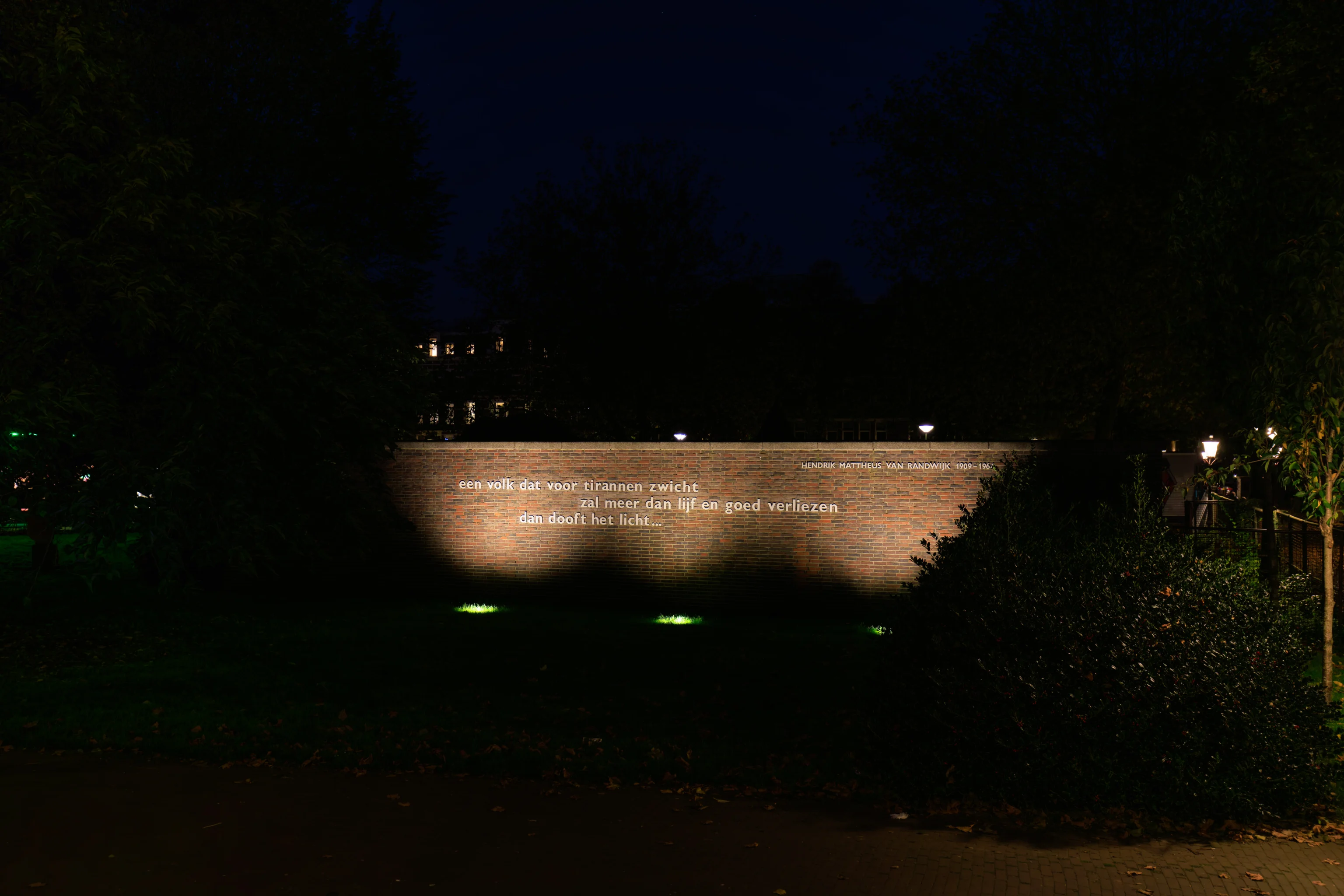
We decided to walk back as we weren’t too far away. It would also allow us to walk by the west end of the Albert Cuyp Market, which closes at 5pm according to Google Maps.
We passed by this wall which is inscribed with some text that seems to be a quote of Hendrik Mattheus van Randwijk, a member of the Dutch resistance during World War II. The text translates to:
a people that succumbs to tyrants
will lose more than life and property
then the light goes out...
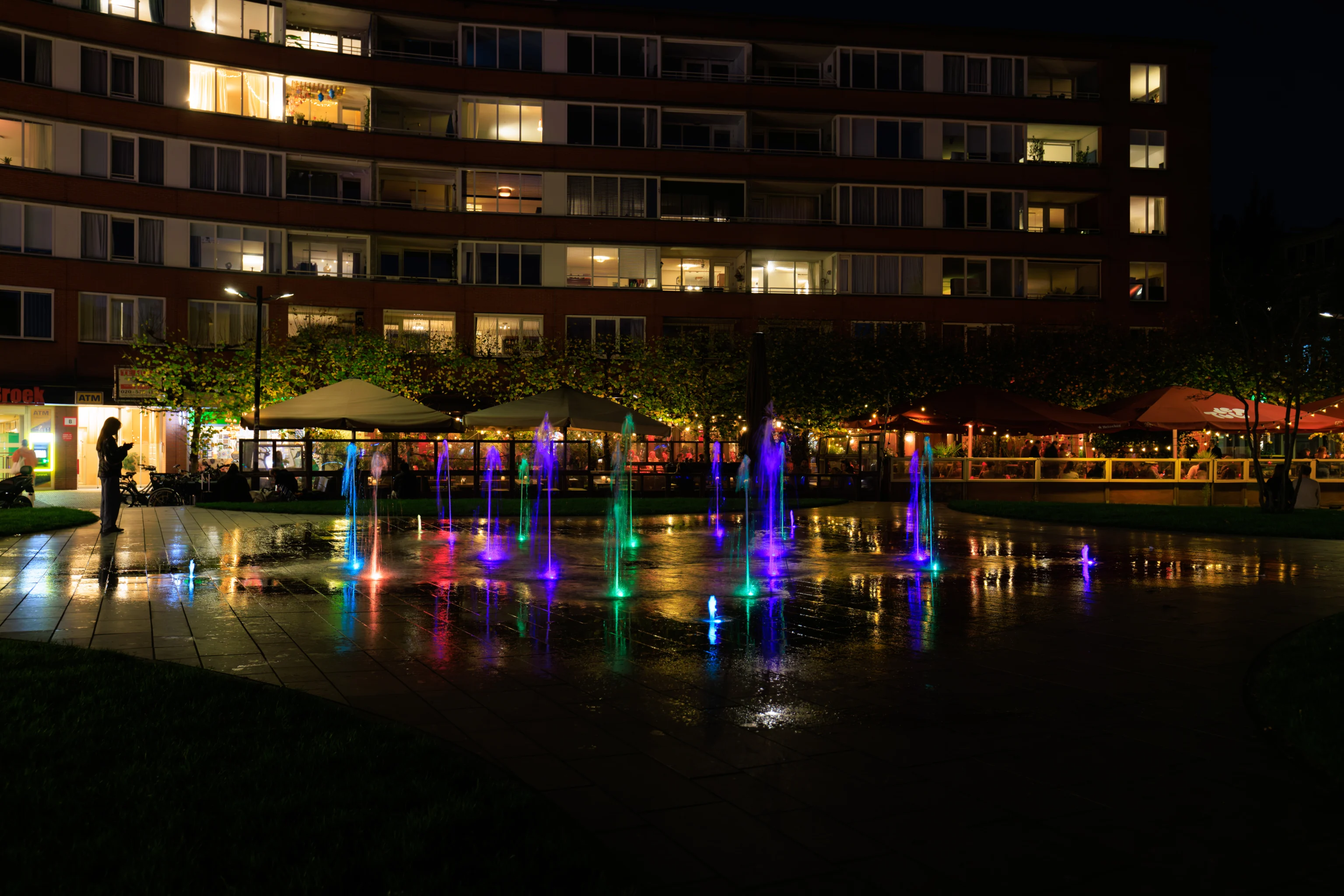
We passed by a small illuminated water fountain. Water was still flowing, which seems like a rarity in Europe during the colder months.
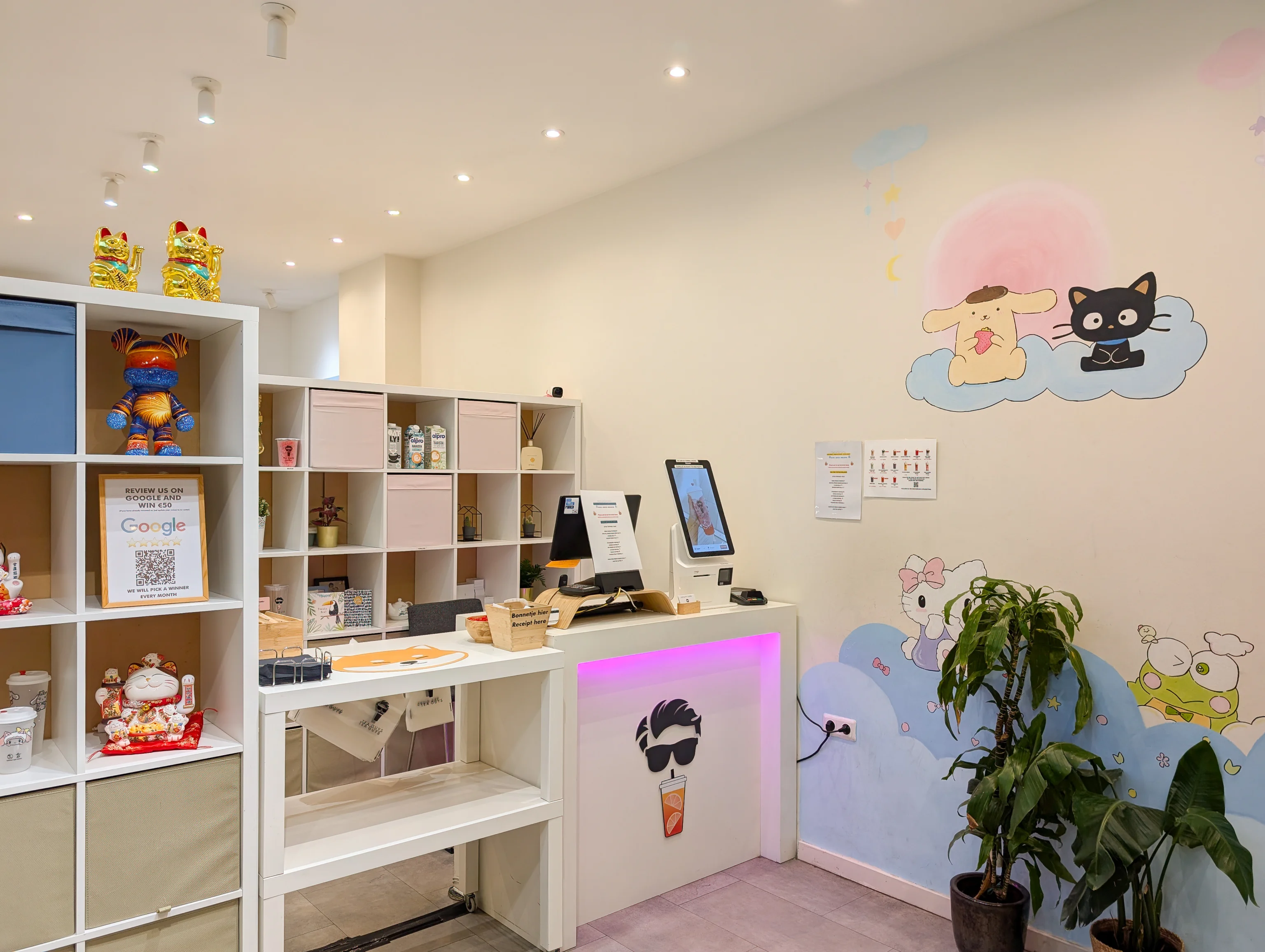
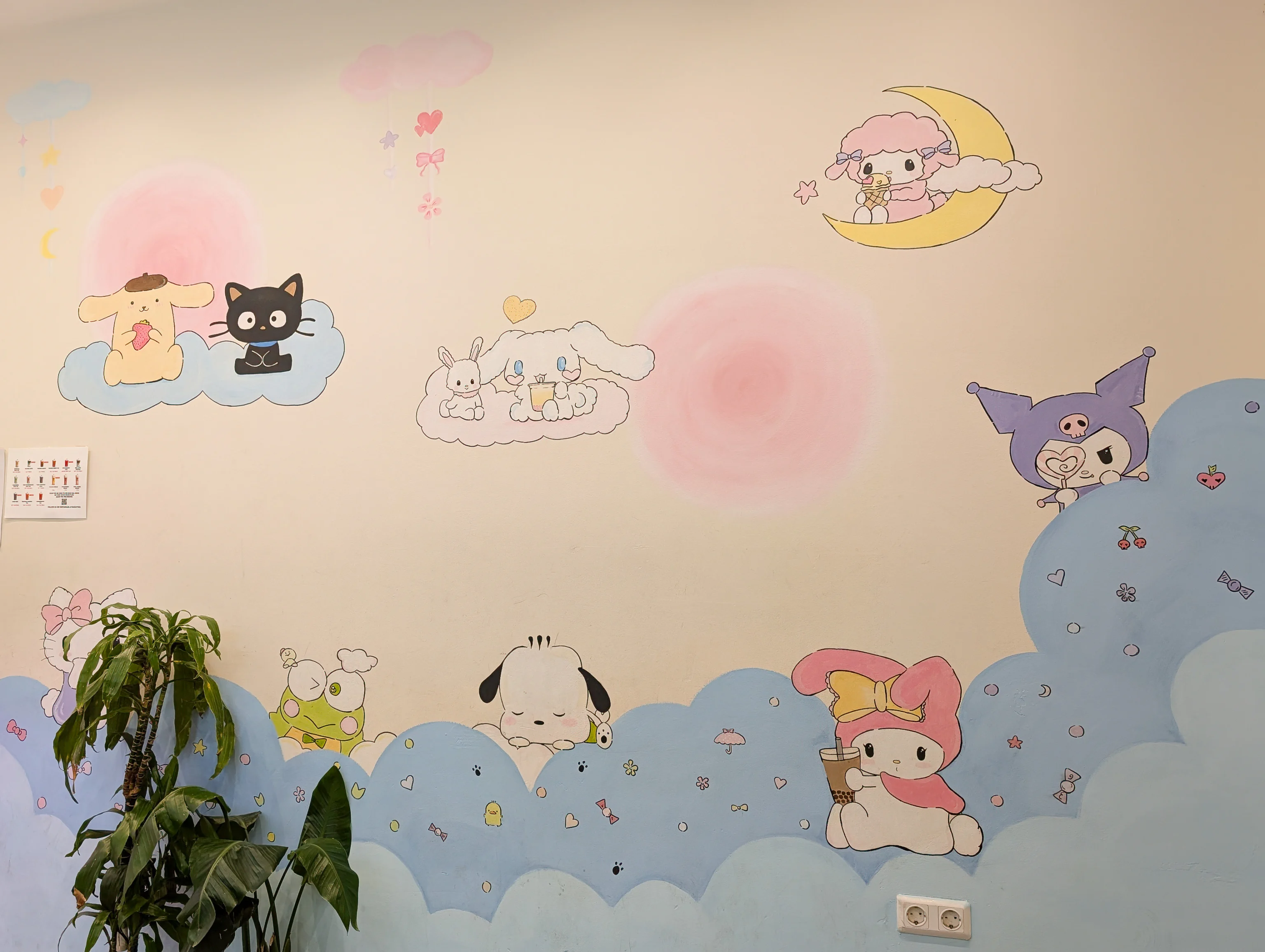
After reaching the western edge of the market, we could see that it really was done for the day. Walking to the west, we visited Tea Guys, a bubble tea shop. Yeah, their logo kind of looks like Psy!
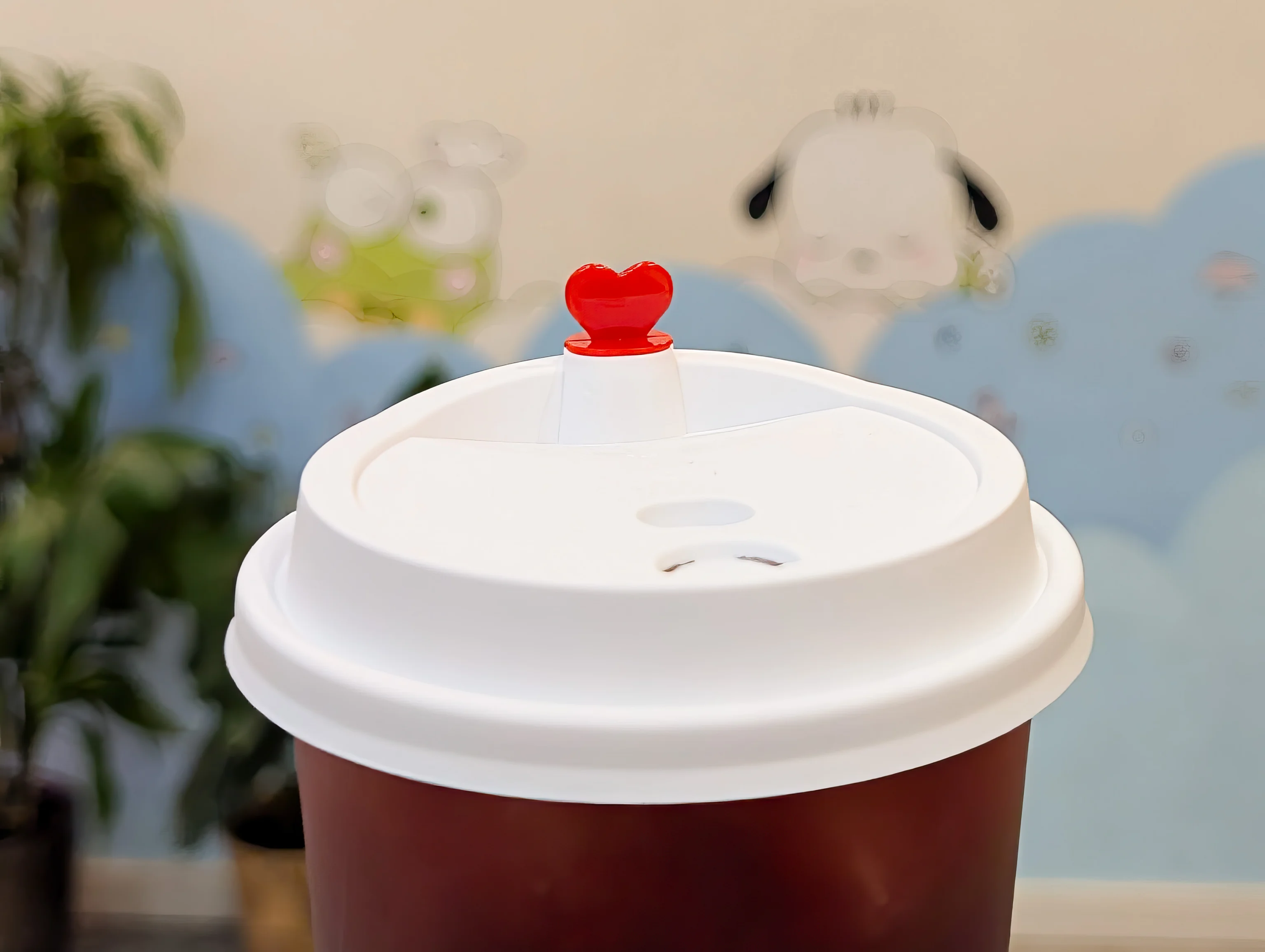
We got the fresh Kyoho grape and lime tea. It was pretty good, though still pretty sweet at just 25% sugar.
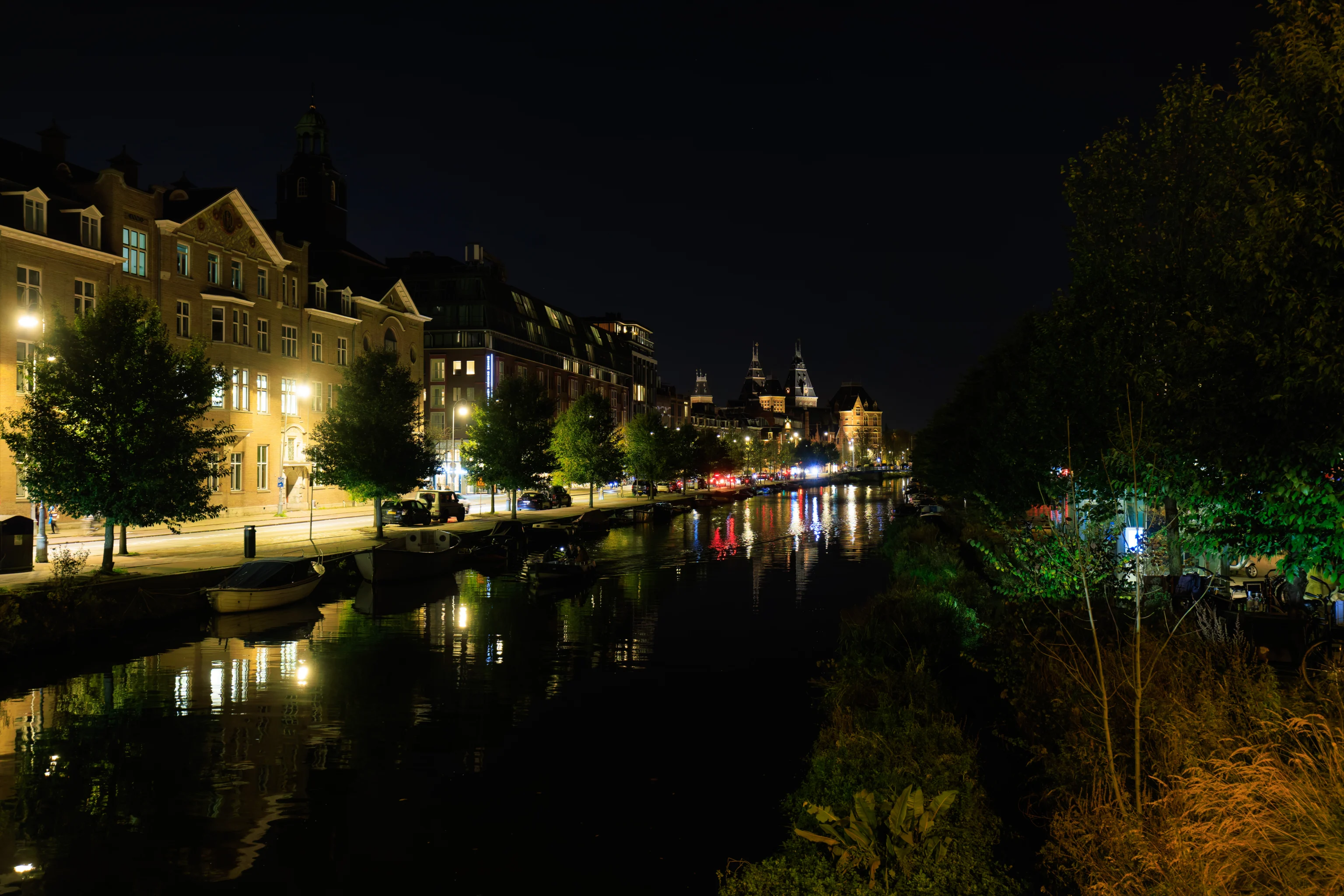
It was completely dark as we continued walking back to the Apollo Hotel. The two towers in the distance seem like they are the two towers on the Rijksmuseum’s north side.
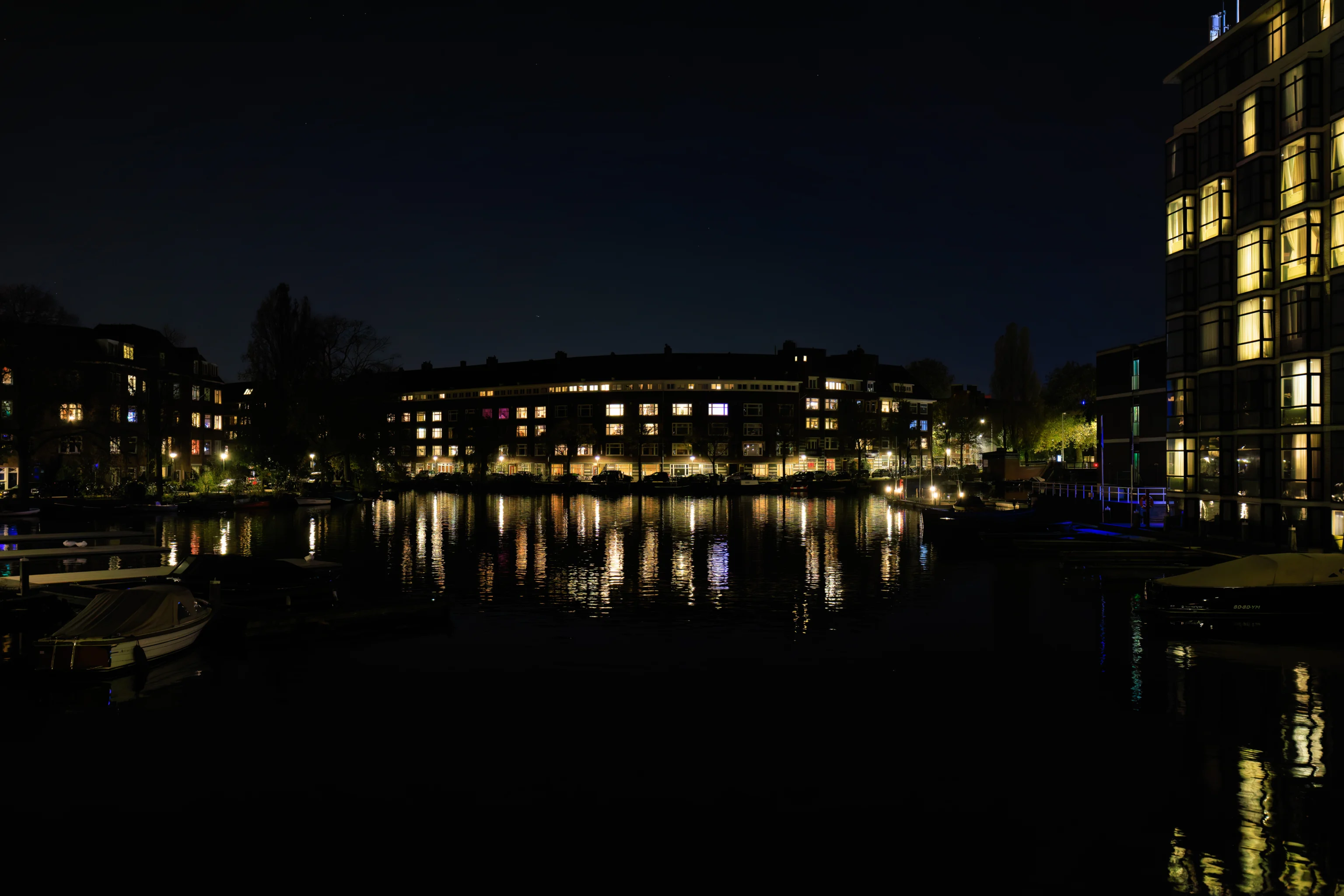
Finally, we were at the last bridge before returning to the Apollo, partly seen here on the right. The walk back took about 35 minutes, including time spent buying bubble tea. As often is in the case in winter, it felt quite late but wasn’t as it was only 6:40pm!
- Utrecht, https://en.wikipedia.org/wiki/Utrecht ↩︎
- Art in the church, https://domkerk.nl/welcome-to-the-domkerk-utrecht ↩︎
- A stone church and a storm, https://domkerk.nl/welcome-to-the-domkerk-utrecht ↩︎
